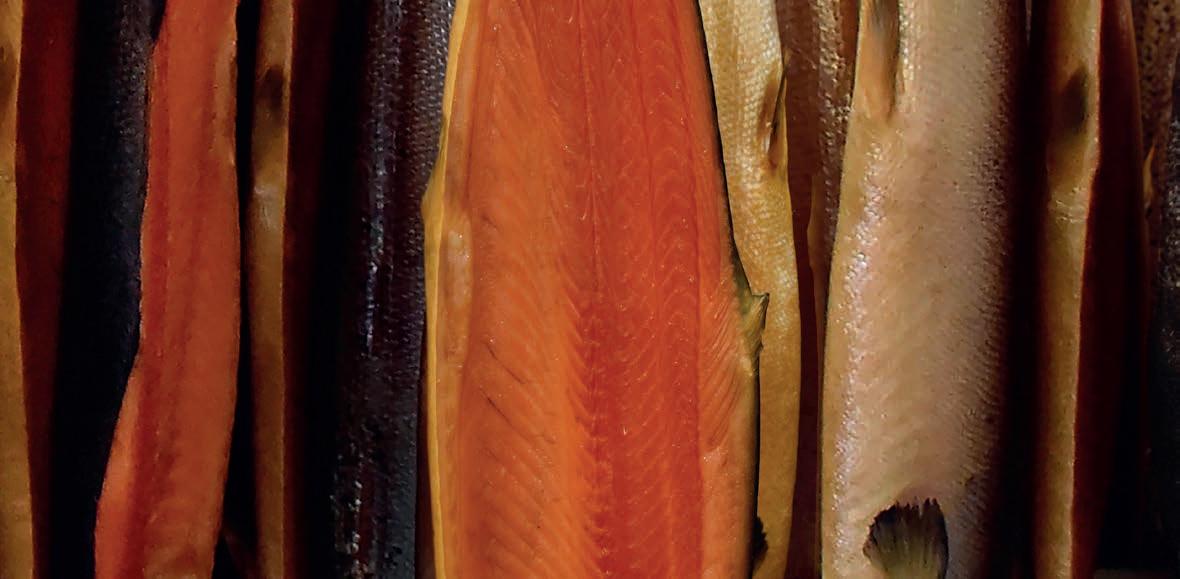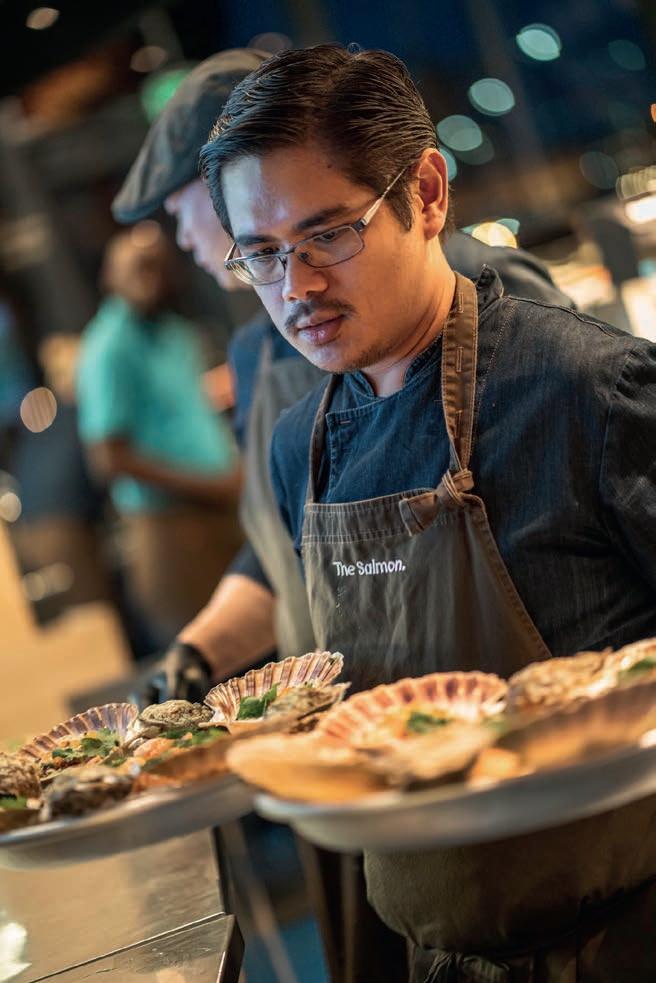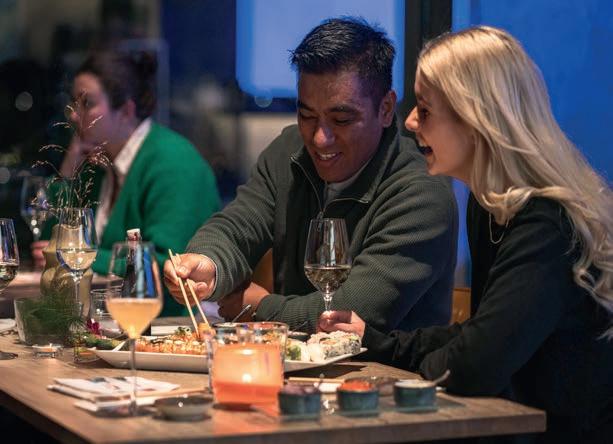NORDIC BOOK RELEASES
SISSELA KYLE
SWEDEN’S QUEEN OF VARIETY
TOP AUTUMN EXPERIENCES IN SWEDEN
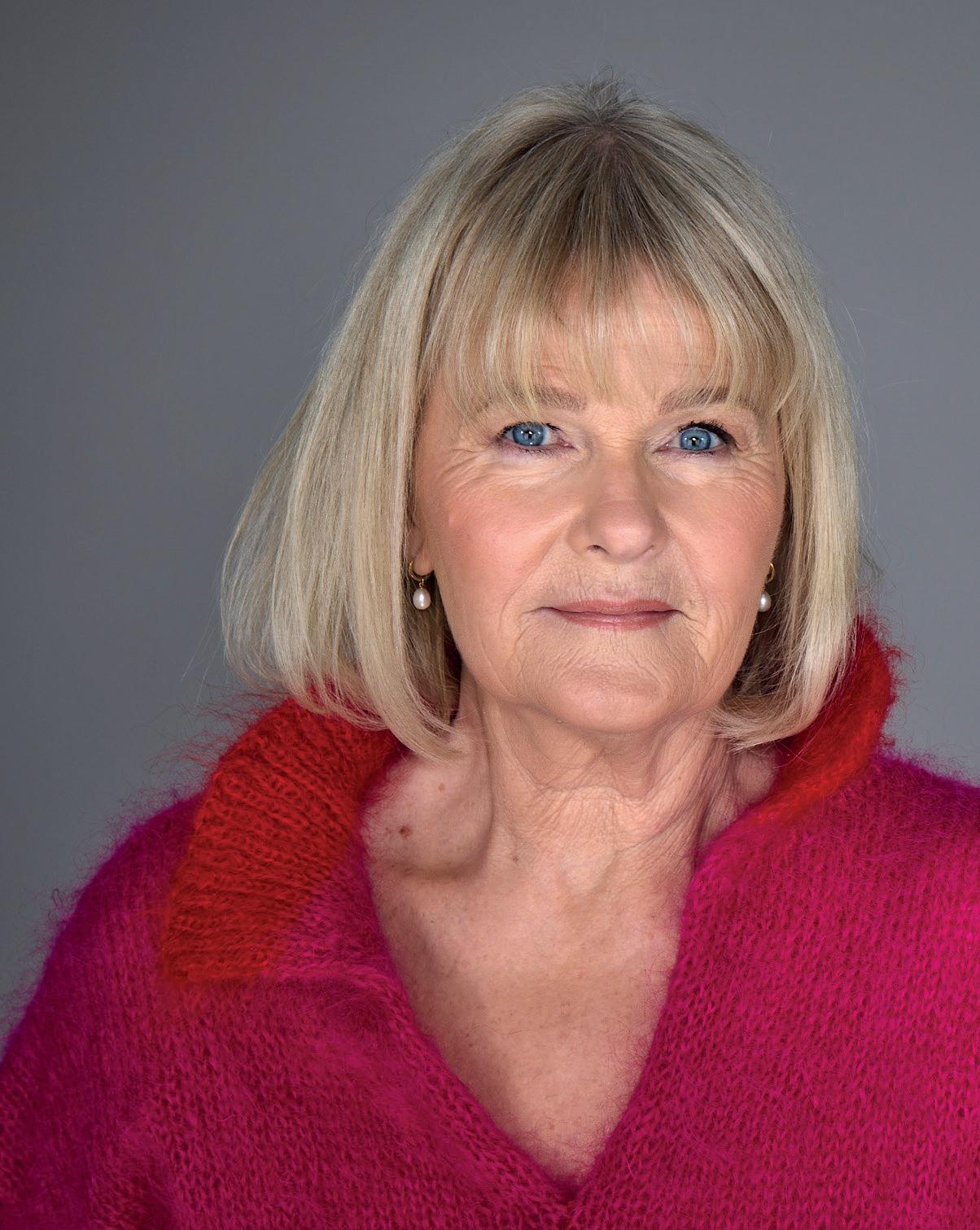

Right next to Odense railway station is the Danish Railway Museum – a living museum filled with trains, stories and experiences for both children and adults. Here you can explore historic locomotives and carriages, take a ride on the mini train and learn how the railway has shaped Denmark.
The museum is housed in a authentic engine shed and features atmospheric exhibitions, fun activities and plenty of space for curiosity and play. It is easy to find – just a few minutes’ walk from Odense Railway Station.
Open every day all year round.
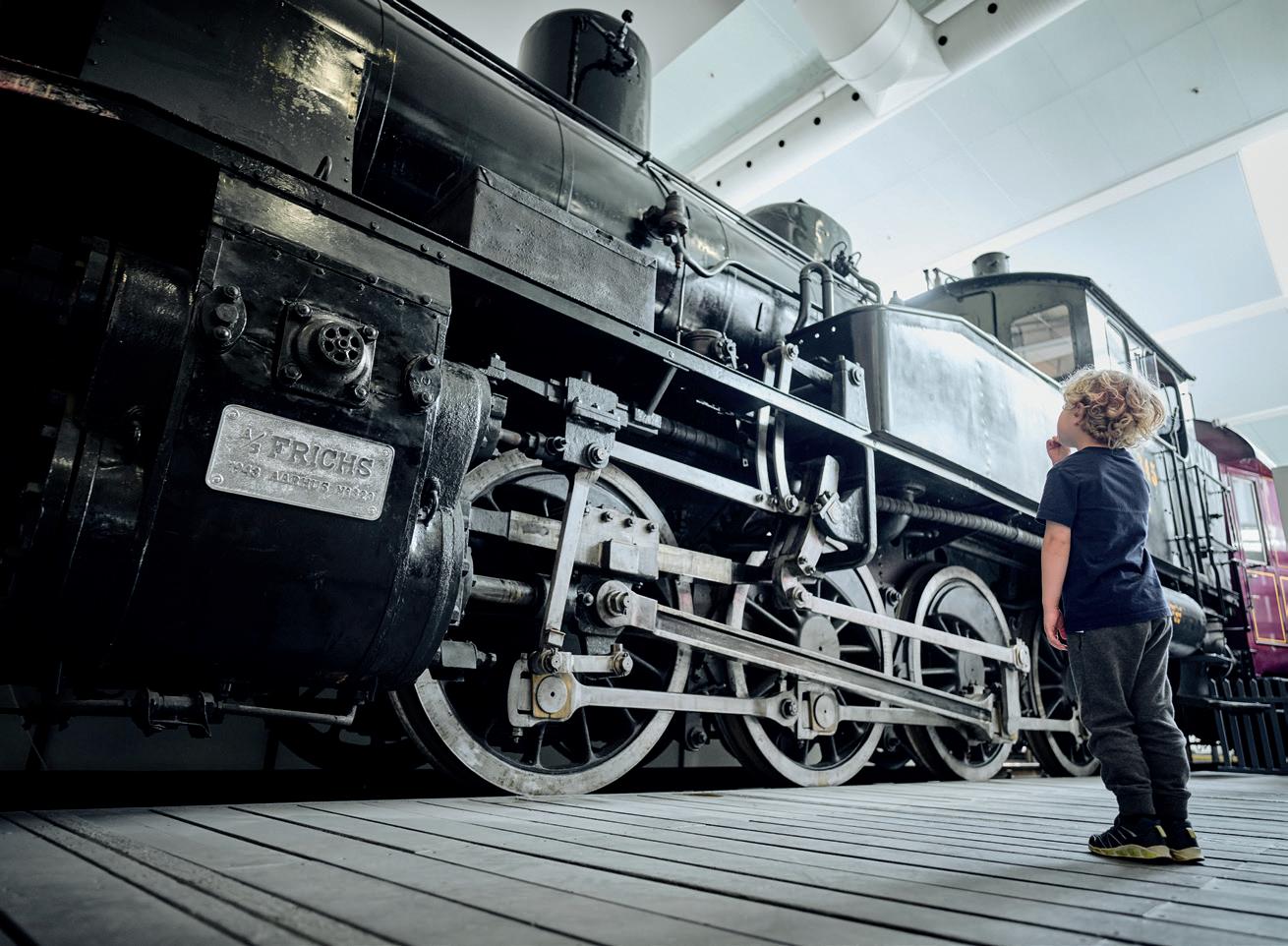
The Danish Railway Museum – Unforgettable experiences in the heart of Odense
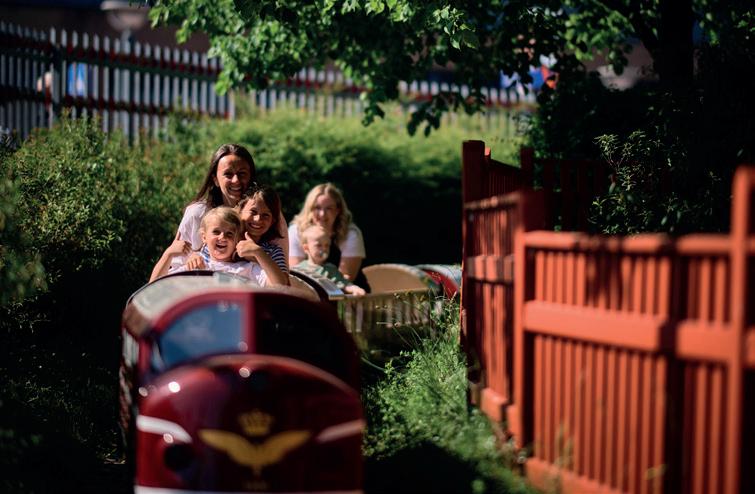
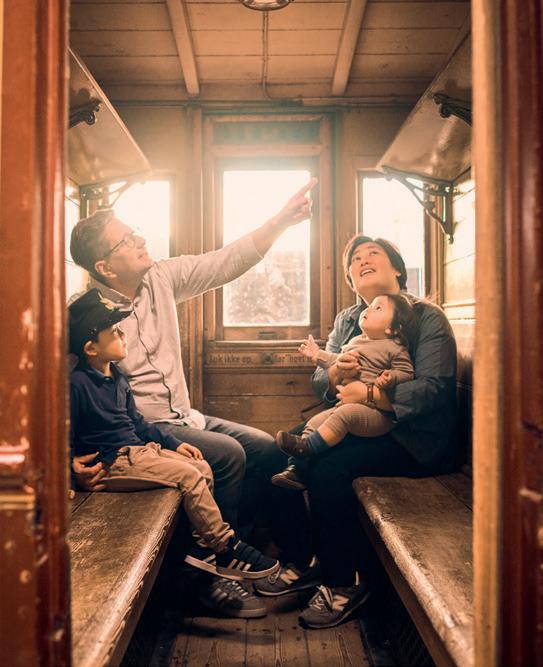
Editor’s Note
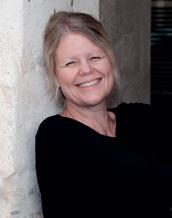
Dear reader,
Summer is still going strong, don’t let anyone tell you differently. So, continue heading to the beach, devouring tasty food from the barbecue, and socialising on fashionably sunny terraces (if that’s your thing). In this issue, we cover breezy fashion and irresistible seaside interior design, for long-lasting summer vibes.
We do entice you into the next season with a few things to see and do in autumn though, once the air gets a bit crisper and the scenery changes to yellow, orange and red hues. In our theme covering autumn experiences, you will surely find something to look forward to, such as hiking in Lapland or along the new Stockholm Archipelago Trail.
“I’m a child of nature,” I sometimes joke with my friends from the far corners of the world. This love of nature is deeply rooted in Scandinavian culture, and we often encourage children to head outdoors. When I got restless, as kids sometimes do, my parents told me to run around the house for a few laps – and it worked. With the family, we went hiking in Funäsdalen on numerous occasions, and I remember vividly bumping into reindeer on the mountain trail. What an adventure!
Many Scandis also have childhood memories of picking berries in the forest. In my school, we even had to bring lingonberries and blueberries to the cafeteria, so that the kitchen team could make jams for the school lunches. Fans of Poppels Bryggeri can do the same; berries donated from people’s gardens will later be used by the brewers to make a beer flavoured by the berry harvest.
If you happen to be planning a visit to Gothenburg, or perhaps already live there, the city has a bubbling beer scene with some of the world’s best breweries, including Poppels. Check out our special feature and get your tickets sorted for All In Beerfest, a fantastic beer festival that takes place in November.
Talking of things to look forward to, our eminent cover star Sissela Kyle will traverse Sweden with her one-woman show, and next month a musical she is directing takes to stage in Gothenburg, followed by a nationwide tour. Don’t miss out on our interview with Sweden’s queen of variety.
Enjoy our vibrant August issue!

Malin Norman, Editor
SCAN
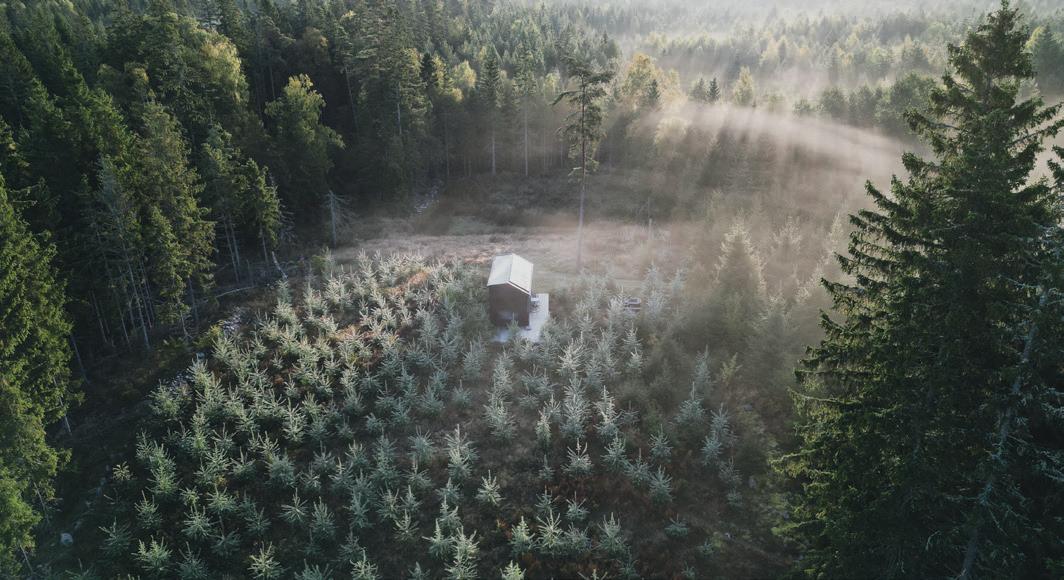
In this issue
DESIGN
6 Scandinavian archipelago style
On our Design pages, we feature Scandinavian archipelago style with rustic charm, natural materials, and connection to the sea. And our Fashion Diary tempts with stunning shades and shapes, so you can exit summer with a bang.
COVER FEATURE
26 Sissela Kyle: Sweden’s queen of variety
A regular on screen, stage and behind the microphone on radio, Sissela Kyle is a Swedish cultural icon. Her busy autumn schedule includes an upcoming one-woman show, a musical she is directing with a nationwide tour, and an autobiography due for publication next month.
LIFESTYLE AND FOOD
36 Tasty berry crumble and beer for the crayfish party
Food columnist Sofia Nordgren serves up a tasty berry crumble with fresh berries, whilst our beer expert Malin Norman recommends three beers to bring to the crayfish party.
SPECIAL FEATURES
38 Get ready for the crayfish party!
In time for crayfish-party season, check out our insider’s guide to the classic Swedish seafood feast, and stock up on colourful lanterns, funny party hats, plenty of side dishes, and snaps and drinking songs. 31

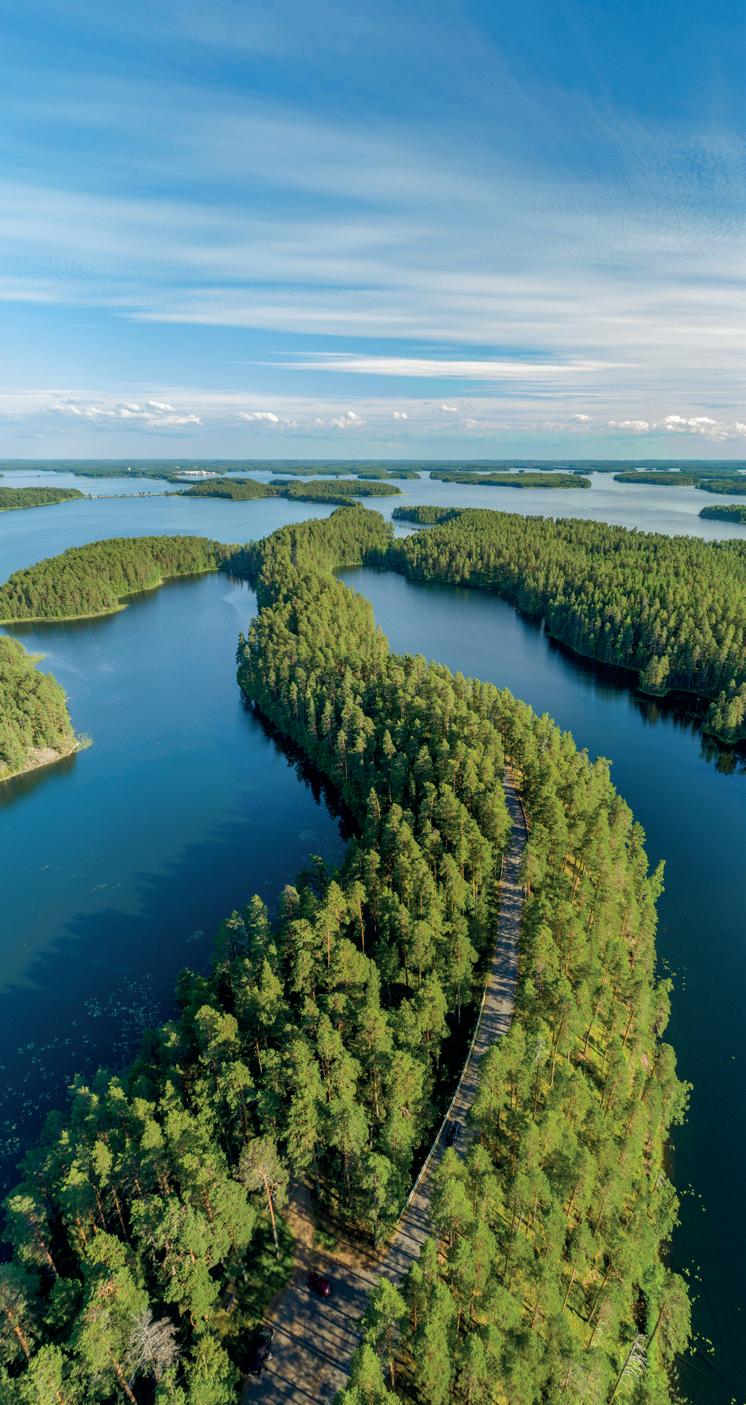
53 Gothenburg’s vibrant beer scene
Some of the world’s best breweries are based in the Gothenburg area. We take a closer look at the city’s bubbling beer scene and the highly anticipated All In Beerfest – this is local beer at its best.
SPECIAL THEMES
42 Made in Norway
From joyful rainwear made in rural Norway to bark-worthy products and bespoke laser design with a personal touch, we highlight some of Norway’s leaders in design.
58 Top autumn experiences in Sweden
Autumn is the ideal time to visit Sweden, with milder temperatures and a sense of calm. Get inspired by our guide to the top experiences, from beautiful landscapes to cultural and culinary discoveries.
CULTURE
104 The best new events, film and music in Scandinavia
In this month’s Culture section, music columnist Karl Batterbee lists the freshest finds for your Scandipop bop playlist, film enthusiast Anders Lorenzen looks at the Midnight Sun Film Festival in Finnish Lapland, and illustrator Gabi Froden ponders on what happens when things close down for summer.
Fashion Diary
Alas, after a long and wonderful summer, the last days of the season are upon us. Add colour to your August via some stunning shades and shapes; let's exit summer in style!
By Celina Tran | Press photos

& Other Stories – Freshwater pearl sculptural earrings in gold
Enjoy the seaside that bit longer by emulating its beautiful shapes through jewellery. These ethereal-looking earrings are bold, yet delicate. Made from polished brass and freshwater pearls, they will elevate any outfit and look particularly stunning with a maxi or slip dress – perhaps in ocean blue, if you really want to stick to the theme.
Freshwater pearl sculptural earrings in gold, EUR 29 www.stories.com
ByTimo – Cotton Slub top and skirt in purple breeze
Celebrate summer with this cute floral set from Norwegian brand ByTimo. Worn separately or as a pairing, both pieces can be dressed down or up, depending on the occasion. Whether you’re going to a casual garden party or a summer wedding, the light, soft cotton and its flowy silhouette allows for flouncy, comfortable movement, so you can boogie the night away!
Cotton Slub in purple breeze, top EUR 185, skirt EUR 270 www.bytimo.com
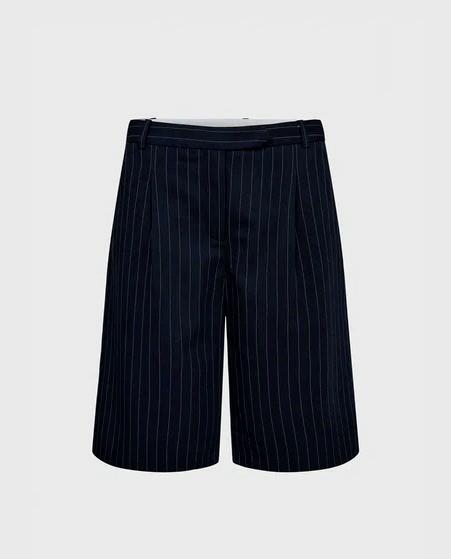
Designers Remix – Steven pleat shorts in navy white pinstripe
Now for a slightly cooler look, check out these Steven pleat shorts from Designers Remix. They’re knee-length with a classic pinstripe pattern and can be paired with any top – oversized t-shirts, crop tops, sweatshirts, and even knit or crocheted jumpers. While they go well with trainers, a good pair of high boots will result in a particularly chic look.
Steven pleat shorts in navy white pinstripe, EUR 189 www.designersremix.com
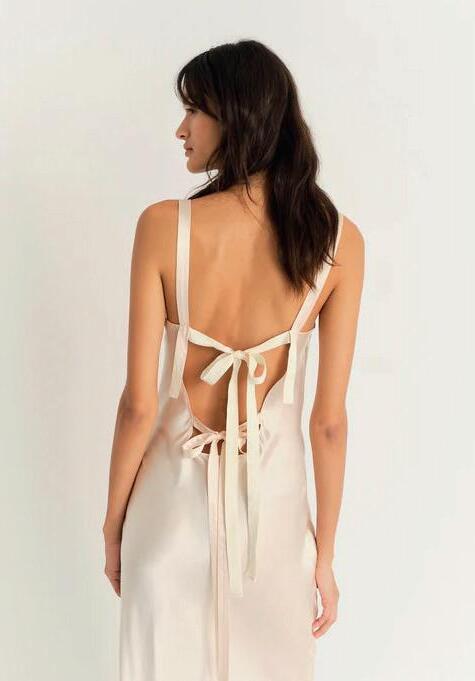

The Garment Copenhagen – Catania dress N Blush Summer is garden-party season, but it can often be a bit too hot for the beloved long and layered dress. Fret not, the Garment Copenhagen has got you covered! Its open-backed Catania dress is not only light and flowy, it also has a side slit. Its adjustable straps and back straps give a further feminine touch to the soft pink shade.
Catania dress N Blush, EUR 450 www.thegarmentcopenhagen.com

Despite its classic collar, shape and fit, the RADO shirt from Soulland is anything but ordinary. With embroidered front panels, this shirt is bound to command attention when you walk into the room. It also serves as a great way to give life to any old, plain pair of shorts or pants.
RADO shirt, EUR 265 www.soulland.com
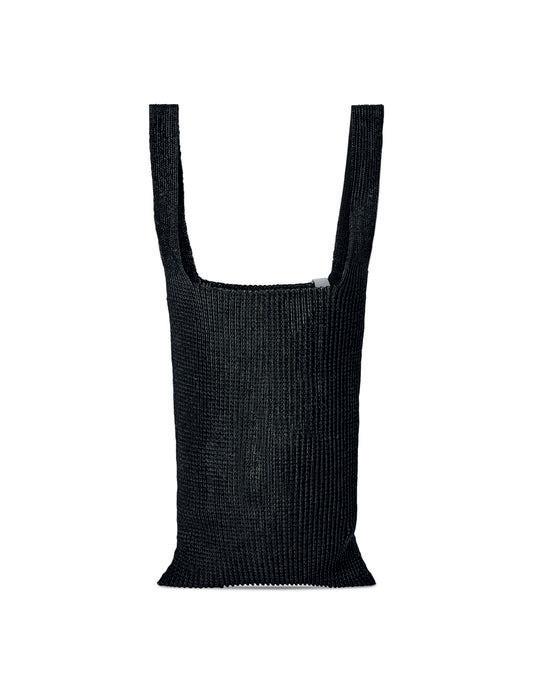
A Roege Hove – Olga bag in black
The Olga bag is a versatile unisex bag made from cotton and nylon. It stretches to hold all your summer essentials and is a minimalistic piece that does exactly what it needs to!
Olga bag in black, EUR 120 www.aroegehove.com
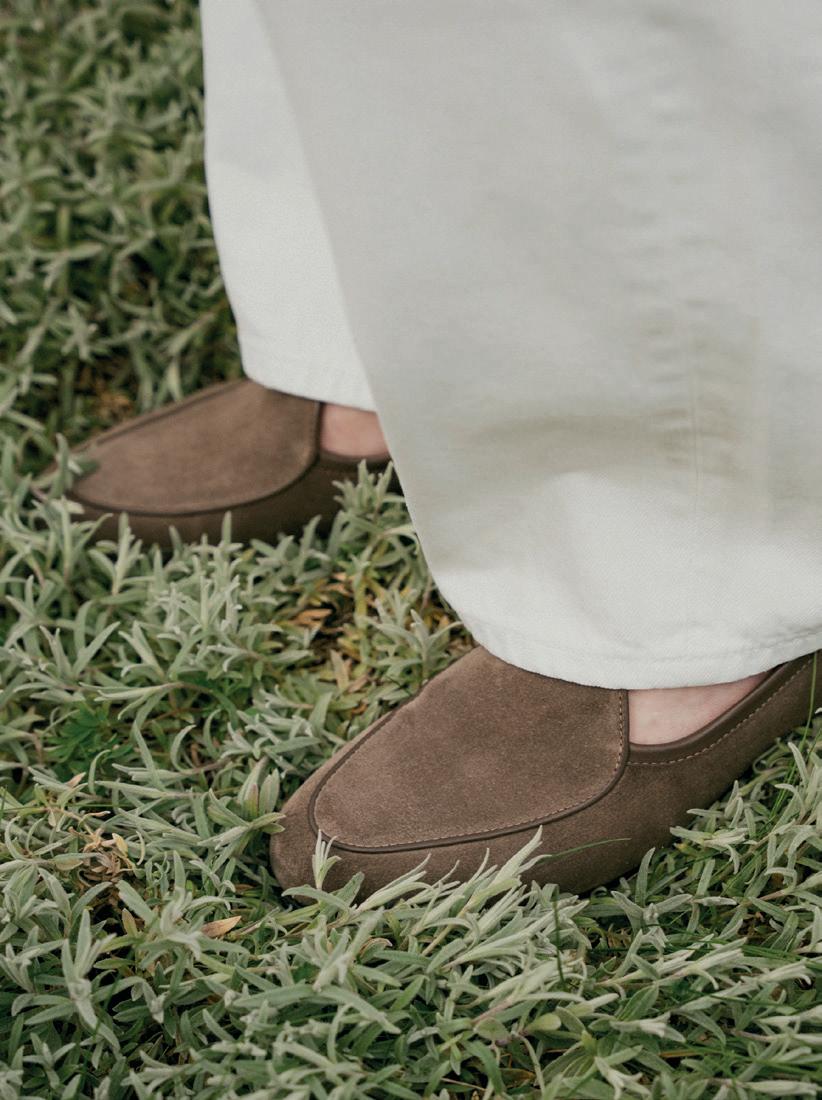
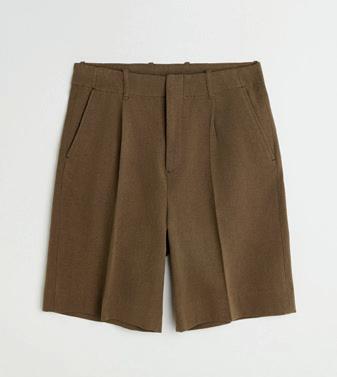
Myrqvist – Ängby Walker in taupe suede No one does loafers quite like Swedish brand Myrqvist, and the taupe suede Ängby Walker pair are brilliant. The taupe suede shoes have a refined silhouette and versatile design, featuring a rubber walker sole and an engineered heel that provides stability as you go about your day. All that and they look fantastic, too!
Ängby Walkers in taupe suede, EUR 299 www.myrqvist.com
Our Legacy – Borrowed shorts in tobacco draping canvas
Now, it wouldn’t be the height of summer without shorts, let’s face it! This stylish brown pair from Our Legacy is made from Turkish cotton and hemp, and feature front pleats, a hidden hook, and eye waist closure. The relaxed fit makes them perfect for sweltering city strolls or evening dinners in the Mediterranean. Pair with a linen shirt, a plain t-shirt, and a good pair of loafers.
Borrowed shorts in tobacco draping canvas, EUR 360 www.ourlegacy.com
We Love This: August 2025
This month, we’re obsessed with the Scandinavian archipelago style. For a sun-soaked terrace with a view of sandy dunes, or perhaps a secluded cottage by the rugged cliffs, this blend of rustic charm, natural materials and connection to the sea is equally irresistible.
By Malin Norman | Press photos

GRANIT – striped cushions
These striped cushions from Swedish interior brand Granit combine elegance with natural softness. Made from a mix of cotton and linen, the timeless design will look as fabulous on the sofa in the living room as it does thrown on the bed, or even in any outdoor space. Striped cushion Blockrand 40x60cm and Rand 50x50cm, both in blue/white. Price: SEK 249 each www.granit.com
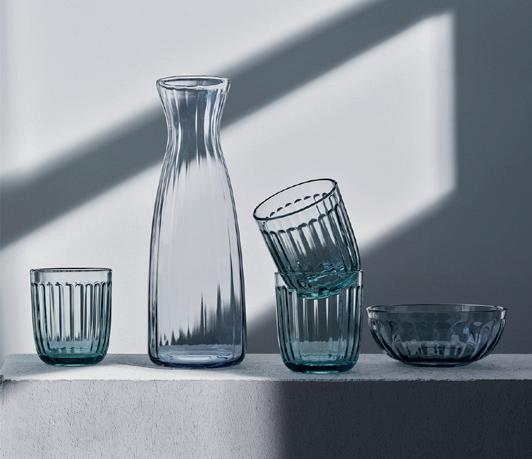
Ittala – Raami tumbler
When enjoying that sea view on the veranda, remember to stay hydrated. These tumblers in recirculated glass from Ittala fit the archipelago vibe. Designed by Jasper Morrison, the Raami series features versatile tableware with a simple, thoughtful design. Made of 100 per cent recirculated glass, they are produced from waste glass at Ittala’s factory in Finland. Set of two tumblers, 26cl. Price: GBP 25 www.iittala.com
HAY – Crate lounge chair
The classic Crate Collection was initially designed of surplus wooden shipping crates by Gerrit Rietveld (1888-1964), one of the greatest Dutch architects and furniture designers, back in 1934. It has now been relaunched in the Rietveld Originals x HAY collaboration. This lounge chair honours the original design, with balanced proportions and optimised assembly. Pictured is the chair in white water-based lacquered solid pinewood. Price: SEK 3,849 www.hay.com
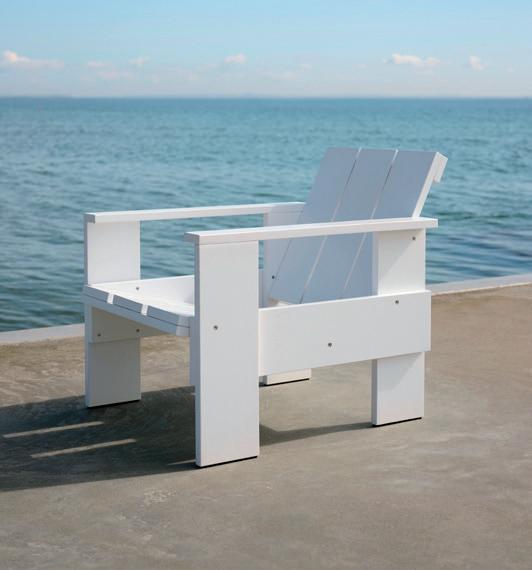
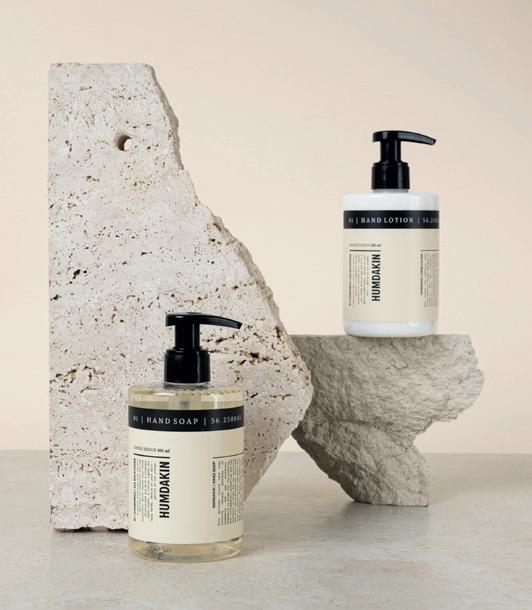
Ocean Store – poster
No archipelago home is complete without a photograph of a fishing boat. This poster features a group of fishermen from Åstol, on their way to the North Sea in 1954. Photographer: Gösta Skoglund (1904-1987). Available in three sizes. Price: from SEK 299 www.oceanstore.se
Humdakin – hand soap & hand lotion
Danish brand Humdakin has a range of products that are kind to the environment, to the home, and to your skin. Its soothing hand soap and hand lotion with camomile and sea buckthorn leave your hands with a gentle, fresh scent. Humdakin’s liquid products are dermatologically tested and free of parabens, dyes, essential oils, chemical perfumes, endocrine disrupting substances, and carcinogens. Price: hand soap EUR 23, hand lotion EUR 32 www.humdakin.com
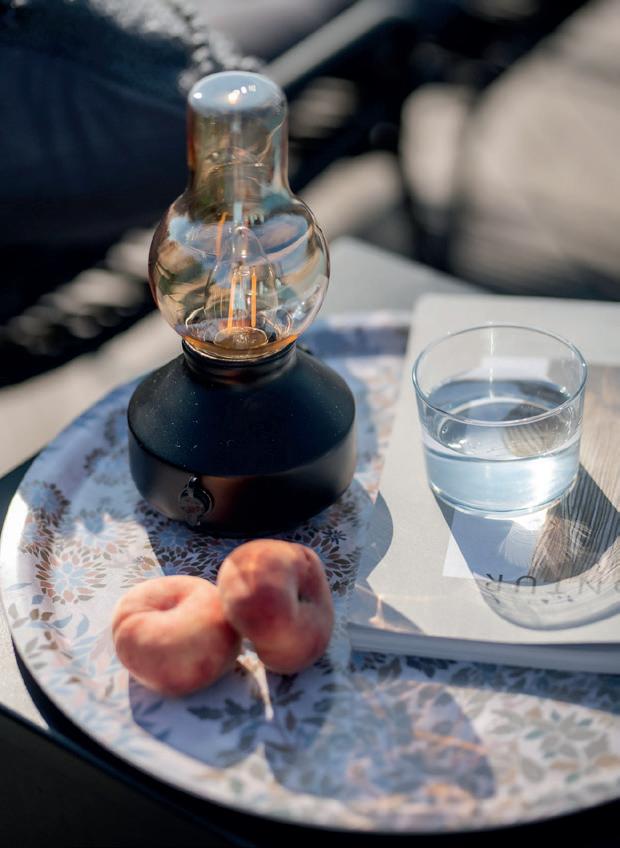

PR Home – chargeable lamp
Swedish company PR Home was established in 1983 and is one of the leaders in stylish lamps for the home. Its modern version of the classic oil lamp is chargeable, can be dimmed, and can withstand outdoor use – perfect for early autumn evenings in the garden or on your terrace. The lamp is made of metal and glass, and is powered by a lithium-ion battery via a USB-C socket. Available in black, sand and green. Price: SEK 799 www.prhome.se


Sustainable fashion rooted in tradition, craft and equality
Faroese fashion brand Guðrun & Guðrun has built an international reputation for handcrafted knitwear made with care, conscience, and a commitment to sustainability. But behind the ethereal mohair sweaters and open-knit dresses lies something deeper: a quiet, long-term investment in women’s lives. Through partnerships with knitters in Jordan, Peru, and the Faroe Islands, the brand supports not just craftsmanship but also equal rights and opportunities for women.
By Signe Hansen | Photos: Guðrun & Guðrun
Founded by Faroese political scientist Guðrun Rógvadóttir and designer Guðrun Ludvig, Guðrun & Guðrun emerged from a shared desire to create fashion with integrity. Since then, Guðrun & Guðrun has grown steadily, gaining international recognition while staying true to its values.
From the outset, social responsibility was integral to the duo’s mission, particularly the concept of empowering women through meaningful employment. “It all starts with the chance to earn your own

money,” says Rógvadóttir. “That changes everything. It gives you agency. It means that you don’t have to depend on someone else, and that is often the first step to making choices for yourself.”
For more than 15 years, the label has worked with female knitters in Jordan. In fact, the company’s striking collections are all handknitted by approximately 90 knitters in Peru, Jordan and the Faroe Islands.
Empowerment through craft
Guðrun & Guðrun’s social impact story began in Jordan, where Rógvadóttir, then working in international development, saw an opportunity to create jobs for local women, an idea that grew naturally from the values behind the brand she had recently co-founded with designer Guðrun Ludvig.

“We had started Guðrun & Guðrun on the side, and while I was in Jordan, we talked about how great it would be if we could involve women there in the production,” she explains. “Many of them couldn’t work outside the home, so this became a way for them to earn an income while staying with their families.”
The women they work with today are primarily from the Circassian community, a group with its own strong needlework traditions. “Some of them came to us with small children back then,” Rógvadóttir says. “Now those children are grown and going to university – paid for with the money that their mothers earned from knitting. That feels meaningful.”
In Peru, the company collaborates with a group of around 20 women, all part of a deeply rooted local knitting tradition. And on the Faroe Islands, where knitting has always been central to culture, the brand has helped breathe new life into fading practices. “When we started, knitting wasn’t very fashionable. But I think we’ve helped bring interest back, not just in the garments, but in the value of handmade work.”
AW25: redefining Faroese wool
With its Autumn/Winter 2025 collection, Guðrun & Guðrun sets out to do with Faroese wool what it has long been celebrated for achieving with mohair, transforming
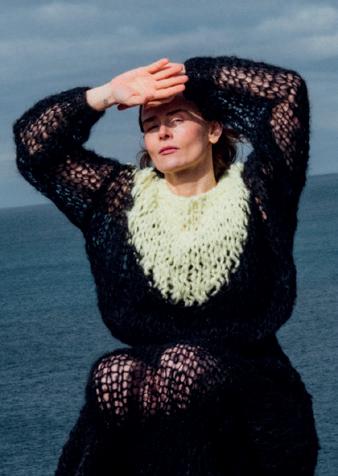
a traditional, often underestimated material into something light, modern, and refined. “Our mohair pieces have always been known for airiness and delicacy,” says Guðrun Rógvadóttir. “This time, we wanted to apply that same softness and elegance to Faroese wool, which is normally considered too coarse for anything but socks or heavy sweaters.”
The results are striking. Using the finest one-ply yarn – so thin that it is typically used only for machine knitting – the brand has created hand-knitted garments that appear almost weightless. “People say that you can’t hand-knit with yarn this fine,” Rógvadóttir says. “But of course, we do it anyway.” The collection features both new designs and reimagined classics, including a fluid dress that can be styled in
For more than 15 years,
several ways. “It’s playful and versatile,” she adds. “We like pieces that invite people to interact with them.”
At its core, the collection is about curiosity and challenge. “Sometimes the material wins, and sometimes the designer wins,” says Rógvadóttir. “It’s always a back and forth. But we like that. It keeps us curious.”
A different kind of fashion
Guðrun & Guðrun is often described as a slow fashion label, but the philosophy goes deeper than that. “We don’t really follow trends,” says Rógvadóttir. “Some of our customers are still wearing pieces from ten years ago, and they are still not out of fashion. Our designs are made to last, not just in quality but in style.”
Durability is part of the story. So is honesty. “Everything is made with natural materials. And we’re transparent about who makes our clothes and how. The sweaters are really knitted by hand – two needles, one woman, sitting in her home. That’s important to us.”
That kind of authenticity resonates. “There’s a growing interest in things that are real – real stories, real hands behind the work,” Rógvadóttir says and concludes; “I think people are drawn to the idea that something they wear has been touched, shaped, and cared for by someone else. That’s part of its beauty.”
www.gudrungudrun.com Instagram: @gudrungudrun_
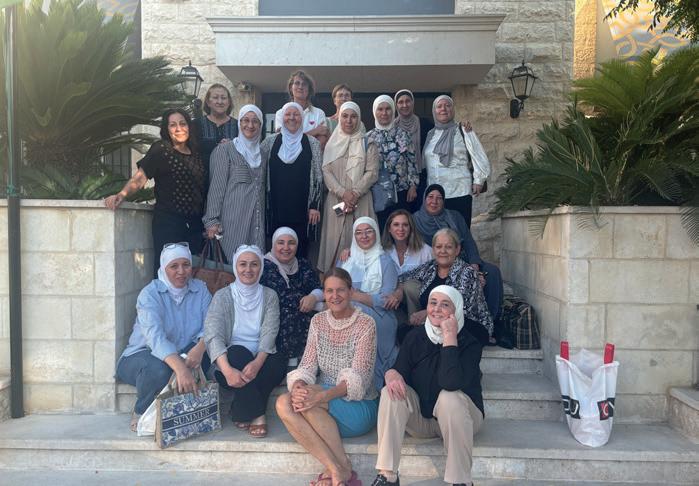
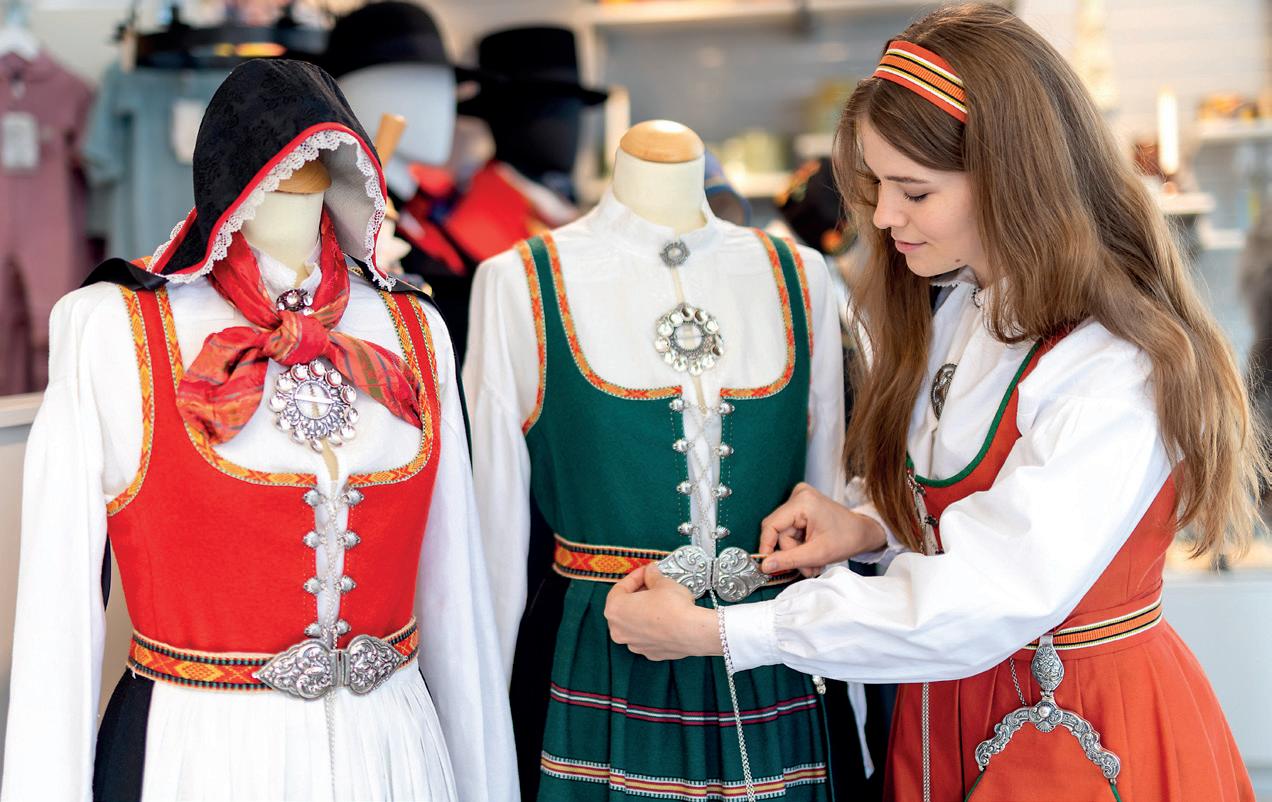
Husfliden Tønsberg: a handcrafted piece of Norway
Based in Norway’s oldest town, Husfliden Tønsberg is a guardian of craftsmanship and tradition. A part of the Norsk Flid Husfliden network, this beloved shop has, for 75 years, offered handcrafted Vestfold bunads, repairs, and a curated selection of Nordic design – all made to preserve Norwegian heritage.
By Celina Tran | Photos: Husfliden Tønsberg
On any crisp, sunlit Norwegian Constitution Day, three things can be expected: flags waving in the breeze, brass bands playing familiar tunes, and the streets filling with people dressed in vivid colours and intricate embroidery. Anyone who has been lucky to behold the sight will know that Norway’s beloved national costume, the bunad, is more than just a piece of clothing. With varying designs, colours, and patterns, it is as much a family heirloom and symbol of regional pride as a living link to Norwegian history and identity.
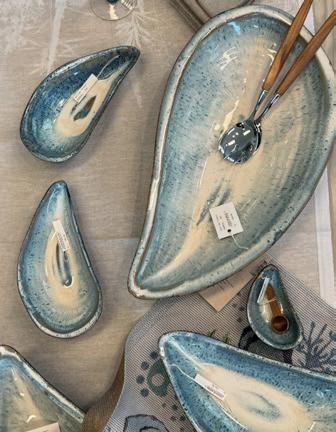
In Vestfold, this tradition takes form in Husfliden Tønsberg, a bunad maker and the fourth-largest shop within Norsk Flid Husfliden; a trusted network of 28 shops across Norway dedicated to preserving and promoting traditional Norwegian handicrafts.
Small details that shape national tradition “Husfliden Tønsberg was established in the 1950s and started out as a small business that sold yarn and handmade products made by local artisans,” says Rita Helene Gallis Fadum, tailor and general manager of Husfliden Tønsberg. “In the early days, Husfliden shops were often established by local women who wanted to contribute to the household income by selling their crafts. In 1991, we became a limited company owned
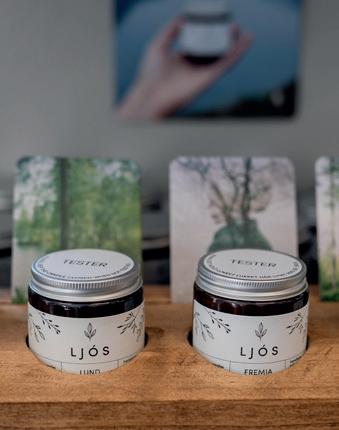
by various craft associations in Vestfold, with Tønsberg holding the majority share.”
Since 1998, Husfliden Tønsberg has been located in one of the city’s finest corner buildings at the top of the main square, with large, bright display windows and a welcoming workshop on the second floor. Here, a team of five highly skilled artisans work away tirelessly to craft and restore bunads, each with their own area of expertise.
“For many, the bunad is a family tradition. It shows where you come from and connects you to your roots. Because it’s such a personal purchase, we pride ourselves on providing close guidance and excellent service, from the first measurements to the final fitting,” says Fadum. “The goal is for every customer to leave here as a proud bearer of a perfectly tailored bunad.”
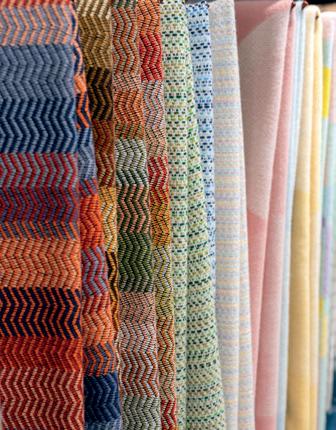
Quality to last generations
Creating a bunad is no small task. A complete women’s bunad can require hundreds of hours of meticulous work: handwoven bands for the skirt and bodice, finger-crocheted edging, embroidered linen shirts, handwoven or embroidered aprons, and lace made by hand for the traditional cap. The men’s bunad, with its striking red jacket and yellow silk vest, is a reconstructed design based on original garments from the 1830s.
The demand for both new bunads and repairs keeps the team busy all year round. Husfliden Tønsberg is a certified training company and has guided several apprentices in bunad making. It also works closely with skilled local women who help with embroidery, knitting, and sewing different parts of the costumes –ensuring that every bunad remains truly handmade.
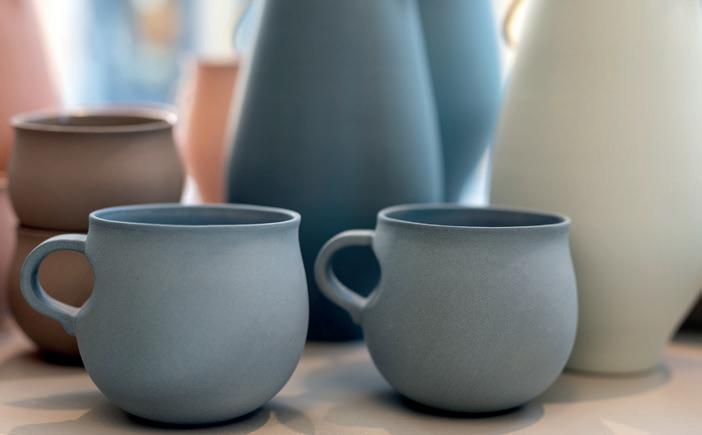
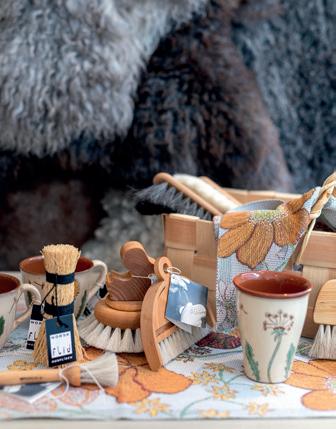
“People often don’t realise how much work goes into each piece. But that’s exactly why it’s so important to us to keep these traditions alive,” Fadum says. “We believe in taking care of Norwegian craft traditions and passing them on to the next generation. Our products are locally sourced, made to last, and worth maintaining – the opposite of throwaway culture. That’s why we also help repair bunads and accessories, so they can be used for decades, or even centuries.”
Bunad production accounts for more than 70 per cent of the shop’s turnover, but Husfliden Tønsberg is also a treasure trove of Norwegian and Nordic design and craft. Visitors will find high-quality yarn from Rauma and Hillesvåg wool mills, weaving yarns, Røros Tweed blankets, sheepskins from Granberg, felt slippers from Tova, traditional knitwear, ceramics from local artists, wooden products, interior textiles, and glassware from the glassworks in Vivestad, to name just a few!
So, whether you are stepping into Husfliden Tønsberg to pick up your very first bunad, to repair a treasured family heirloom, or simply to browse beautiful Nordic design, know that you are in the beating heart of Norway’s cultural heritage.
Visit Husfliden Tønsberg Øvre Langgt. 44 3110 Tønsberg, Norway www.norskflid.no/tonsberg
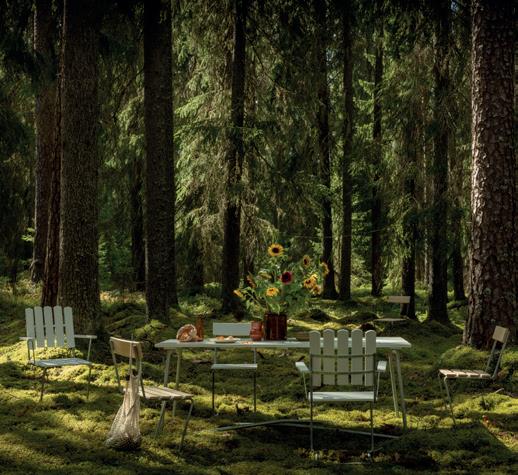
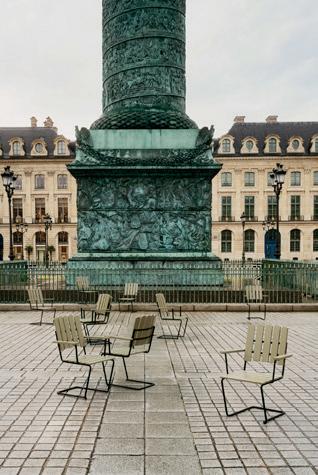
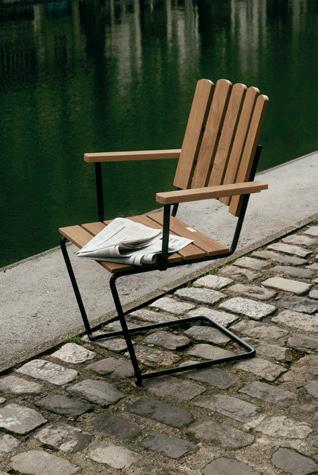
130 years of tradition, forged in steel
Grythyttan Stålmöbler creates premium outdoor furniture that combines comfort, function and timeless Scandinavian design. Its A2 armchair has decorated Swedish gardens for decades, and the High Tech series is nothing less than a modern design classic. Please, take a seat.
By Malin Norman | Photos: Grythyttan Stålmöbler
Spanning four generations of the Lindqvist family, Grythyttan Stålmöbler has provided timeless outdoor furniture for nearly one hundred years. But the company dates back further. In 1895, Grythyttan’s founder, Karl Lindqvist and his friend, blacksmith and mechanic Theodor Berg, had a vision to start their own forge, offering first-class craftsmanship and fine steel products such as axes and horseshoes.
The company is still based in Grythyttan in the beautiful district Bergslagen.
“Through our craftsmanship, we carry the torch of history into the future,” says Bo Hellberg, chief marketing officer.
“Over the past 130 years, we have refined, improved and further developed the strength, stability and beauty of the Grythyttan Stålmöbler furniture.”
The A2 armchair, designed by Artur Lindqvist, has decorated Swedish gardens since 1930. “Inspired by the Bauhaus movement in Berlin, Artur created the
A2 armchair – a classic that has become a staple of Swedish summer,” says Hellberg. Now part of the Classic series, the chair has been slightly updated and is available in several new versions, as well as in a dashing new light-green colour.
Another highlight is the High Tech series, based on Nisse Strinning's design from 1984. Made completely out of steel, the chair is neater and lighter than the
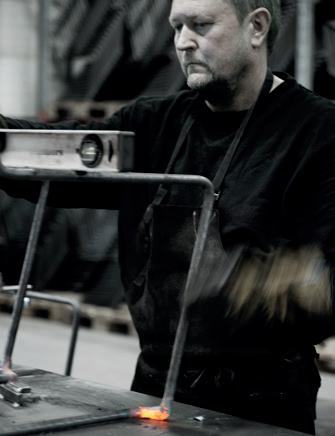
A2, hence a popular feature in gardens, on verandas and balconies, and more recently it has been moved into homes where it works perfectly as indoor furniture too. The series is available in three new colours: chestnut, petrol and ivory.
All furniture is still made in the forge, with sustainability in mind; using carefully selected materials such as hot-dip galvanised steel, Swedish pine and teak – long-lasting materials that stand the test of time and weather.
Based on true craftsmanship, durable quality and classic design – furniture by Grythyttan Stålmöbler is used and loved by generations. “Our furniture can be passed on to the next generation, and the next one after that. Every piece is a testament to the incredible knowledge and tradition of Bergslagen,” adds Hellberg.
Whether for your garden, balcony, patio or outdoor seating area, Grythyttan Stålmöbler has become a natural part of Swedish furniture history – and no doubt of the outdoor environments of the future, too.
www.grythyttanstalmobler.com
Facebook: Grythyttan Stålmöbler Instagram: @grythyttanstalmobler
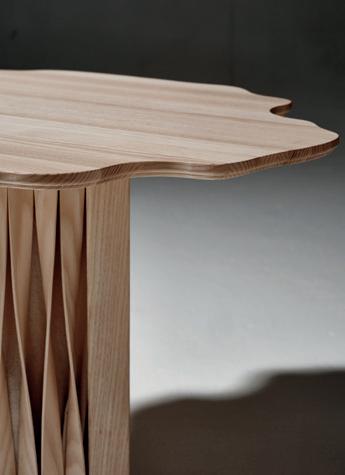
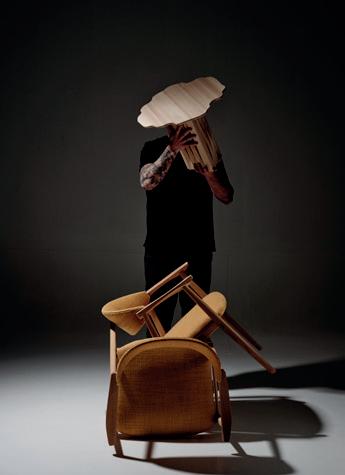
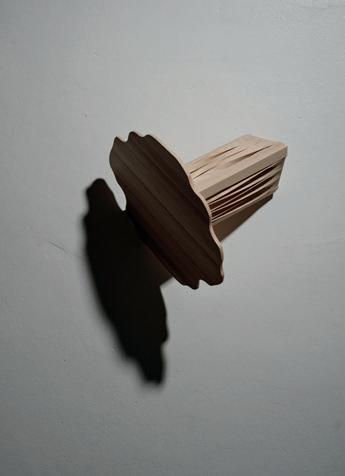
Furniture for life, with nature in mind
Swedish up-and-coming design studio and furniture brand Struktur Sthlm creates bold furniture from Stockholm’s waste wood – the ultimate in sustainable design.
By Malin Norman | Photos: Studio Slakthuset
Founded by furniture designer and cabinet maker Richard Poland, Struktur Sthlm is based around a one-of-a-kind, conscious concept. The design studio collaborates with arborists in the Stockholm area, to create exceptional furniture and wood art – with nature in mind. The designer means that each tree tells a story, and that story lives on in the creations.
“We create furniture made of local trees cut down by arborists and not from farmed wood,” says Richard. “Let’s face it, trees are the lungs of our beautiful planet and we need to use them consciously and with respect. Trees that need to be cut down for other reasons than becoming lumber are the ones that we use for our furniture.“
Working with wood in this way means that the range of furniture is produced in limited collections. And what is usually discarded from the design process now generates new products, such as lamp shades and coat hangers. “We use whatever is left over to make something beautiful. For us, this is the ultimate in
sustainability: to make products that last, from a sustainable source, and to use every little piece of the material.”
The concept is bold, and so is the design expression. “Our designs are not so much pieces of art, they’re more based on what the wood actually looks like,” says Richard. “We want to keep the elegance of the wood, whilst combining function with a modern twist.”
Greenhouse at Stockholm Furniture Fair
In February, Struktur Sthlm exhibited at Greenhouse, the international platform for up-and-coming designers at Stockholm Furniture Fair. Greenhouse serves as a springboard for tomorrow’s design talent. In 2025, a total of 38 designers and 19 design schools exhibited.
”Stockholm Furniture Fair is the premier platform for Scandinavian design and architecture,” says Richard. “This year’s edition saw more than 15,000 visitors, an excellent opportunity to show our designs to a broader audience.” Struktur
Sthlm also collaborates regularly with other craftsmen and artisans, on new and exciting design projects.
Studio Struktur is the design studio’s on-demand service. “This is where we make designer dreams come true,” adds the founder. “Contact us if you want our help in making your new creation. We will help you design it and, of course, build it for you.” It certainly sounds tempting!
www.struktursthlm.se
Instagram: @struktursthlm
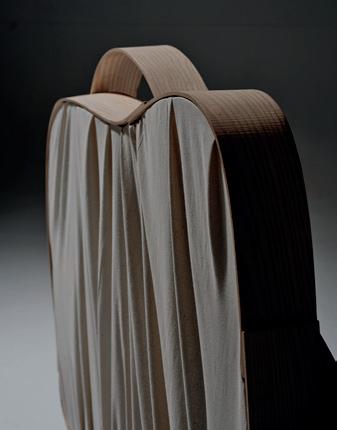
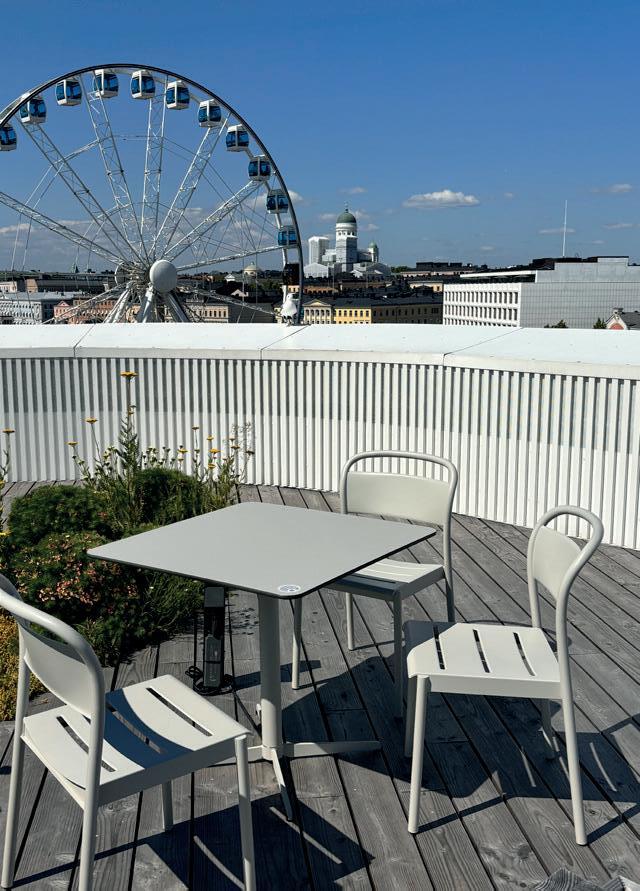
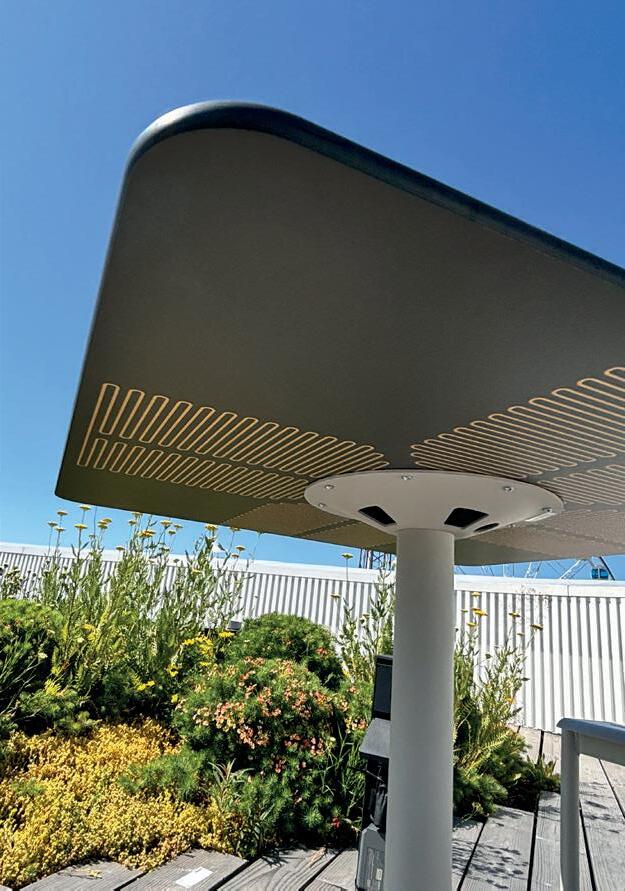
Warmth reinvented: a new era of digital warming technology
Finnish start-up The Warming Surfaces Company has introduced a new technology for digital warmth – for increased health, comfort and sustainability. This is a new era of energy efficient warmth, like a warm hug during cold days.
By Malin Norman | Photos: The Warming Surfaces Company
The Warming Surfaces Company brings heating to the age of sustainability with its Halia digital warming technology, which turns surfaces in our living environments into smart warming surfaces. The technology delivers instant comfort and well-being, sustainably.
The innovative solution has been made available first via the Quatro warming
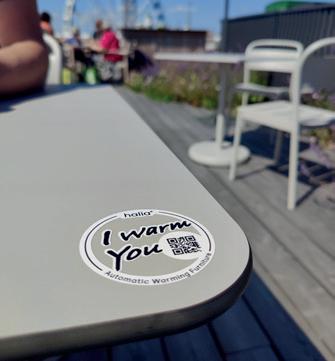
terrace table with integrated Halia technology, which consumes less than five per cent of the energy of conventional terrace heaters. “In France, terrace heating has been banned because emissions were equal to around 300,000 cars in traffic,” says Jani-Mikael Kuusisto, co-founder and CEO. “With our technology, we can bring emission-free, energy-efficient warmth back into terraces, in France and elsewhere.”
The Warming Surfaces Company has seen a more than 80 per cent increased thermal comfort compared to conventional gas heaters. “Temperature plays
a crucial role in the ambiance of a restaurant. With our Quatro table, you can make outdoors areas pleasantly warm and cosy,” says Kuusisto. “The technology creates pockets of warmth that heats up the large muscles in the body. You can control the temperature, and thanks to the four sensors, it only activates when someone is actually sitting at the table and turns off when they leave. This also saves energy, of course.”
The award-winning startup is a spin-off from VTT Technical Research Centre, one of Europe’s leading research institutions. After just three years in business, The Warming Surfaces Company has already been recognised as a top finalist at PropTech Startup Europe Awards 2024 and Halia warming technology is used in a product that won at the German Innovation Awards 2024, to name just a few accolades.

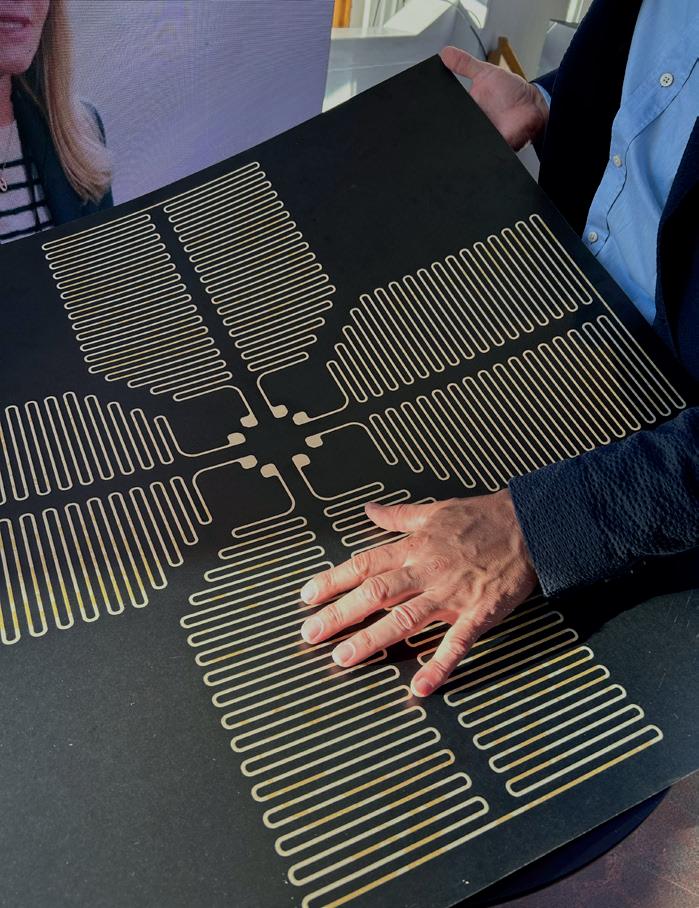
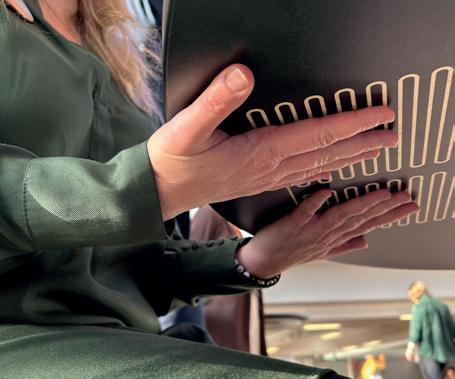
The new age of warming has most certainly arrived, with alternative and sustainable choices for heating such as Halia, which fittingly means hug in Finnish. Next up for this pioneering company is looking at applying the technology to other furniture and a wide range of materials.
The Quatro warming terrace table is already available to order. For more information and to place your order, you can check out the website.
www.halia.fi
LinkedIn: The Warming Surfaces Company
Instagram: @haliawarming
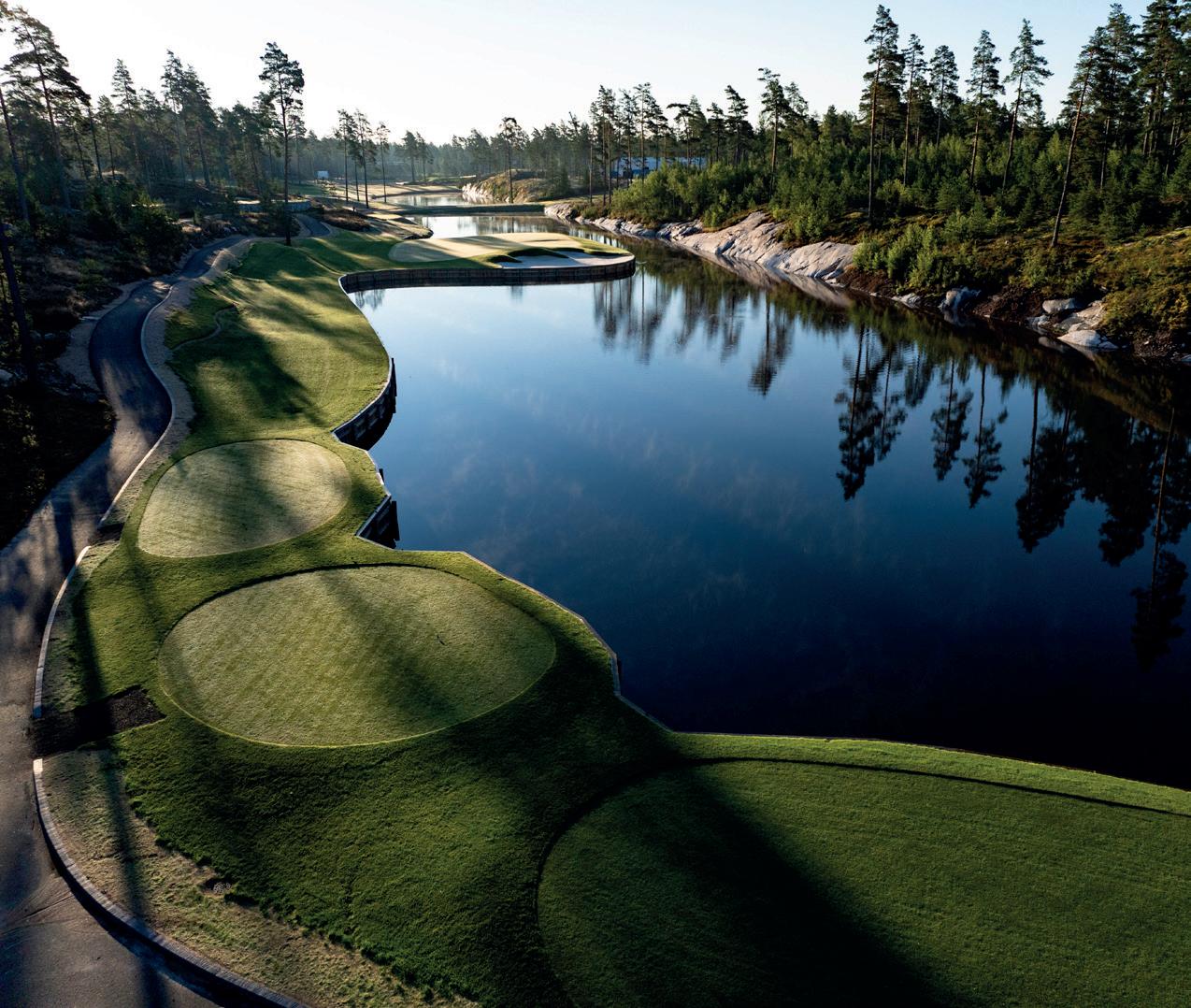
Let the landscape lead: Pickala Rock Resort brings world-class golf to the Finnish forest
Just 30 minutes from Helsinki, nestled in the forests of Siuntio, Pickala Rock Resort offers something rare in Northern Europe: a world-class golf destination shaped by the landscape itself. This is not a gated enclave on borrowed land. It is a resort where golf follows the contours of geology, where homes are oriented to the sun and forest, and where quality of life means a swim, a sauna, and the scent of pine after rain.
By John Weston
The heart of Pickala Rock Resort is Rock Golf, a brand new nine-hole par 3 course aspiring to be the best in the world. Opened in June, Rock Golf has already impressed players with its visual drama and meticulous craftsmanship, which the developers attribute to investing “more time
and money into every detail and square metre” than any other course in Finland.
Designed by Finnish golf architect Lassi Pekka Tilander, whose international credits include Pärnu Bay Golf Links in Estonia and Tbilisi Hills in Georgia, the
layout carves its way through ancient woodland and mossy cliffs. “The Rock course is unique. Ancient pines and junipers, along with moss and lichen-covered rocks, create a magical atmosphere. Water features edged by steep cliffs enhance the exceptional beauty. It's a completely new experience, as it is not possible to build normal golf courses in such landscapes,” says Tilander.
Rather than imposing itself on the land, however, the course adapts to it. Playing surfaces were shaped into the terrain, and the natural rock formations, boulders
and steep cliffs were utilised rather than flattened or removed. The result feels immersive and organic, with dramatic views and striking elevation changes. Almost all tee shots play downhill, offering players full visibility from tee to green and a tantalising dream of a hole-in-one, though the range of distances (from 81 to 224 metres) and complex greens ensure the course is no pushover – no holes-inone recorded since opening a month ago.
A rethink of par 3 golf
Rock Golf rethinks the par 3 format. “Most golfers think of a par 3 course as some kind of practice course for beginners. Rock is not like that. Rock is a real golf course, just without any par 4s or par 5s,” says Kari Karvinen, owner of Rock Golf.
Each of the nine holes is individually memorable, with signature features and four tee boxes per hole, all slope-rated for both men and women. The design supports a wide range of abilities and makes it easy for families and mixed-ability groups to play together. “At Rock Golf, the game groups start every 12 minutes. This means that groups of players of very different levels can play on the course at the same time without disturbing each other,” explains Karvinen.
The social side of golf
Faster to play than traditional formats and more intimate by nature, par 3 golf encourages players to move as a group and share the highs and lows of every
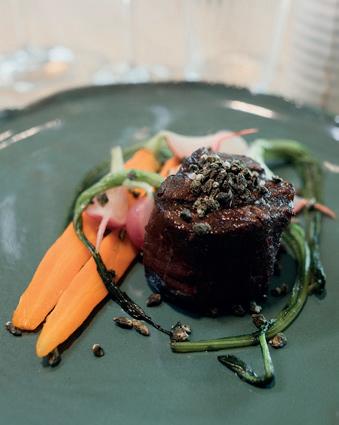
shot. This social dimension is deliberate, and it continues beyond the final putt.
Rock Golf’s terrace restaurant serves à la carte Scandinavian cuisine, unusual in Finland, where most golf restaurants offer buffet food. “The goal is to have food that approaches fine-dining quality,” says Karvinen. And whether you have played a quick morning nine or joined friends for an evening round under the long Nordic summer light, Rock Golf invites you to linger.
Conversations drift from the greens to the grill, from birdies to blueberry cocktails, with views stretching back over the Rock course. The clubhouse also features luxury saunas and locker rooms, as well as a cosy Pro Shop tailored to a discerning international clientele.
A new kind of resort community
Rock Golf was the first part of the resort to open. Surrounding it is the developing Pickala Rock Resort residential area, which will eventually house around 150

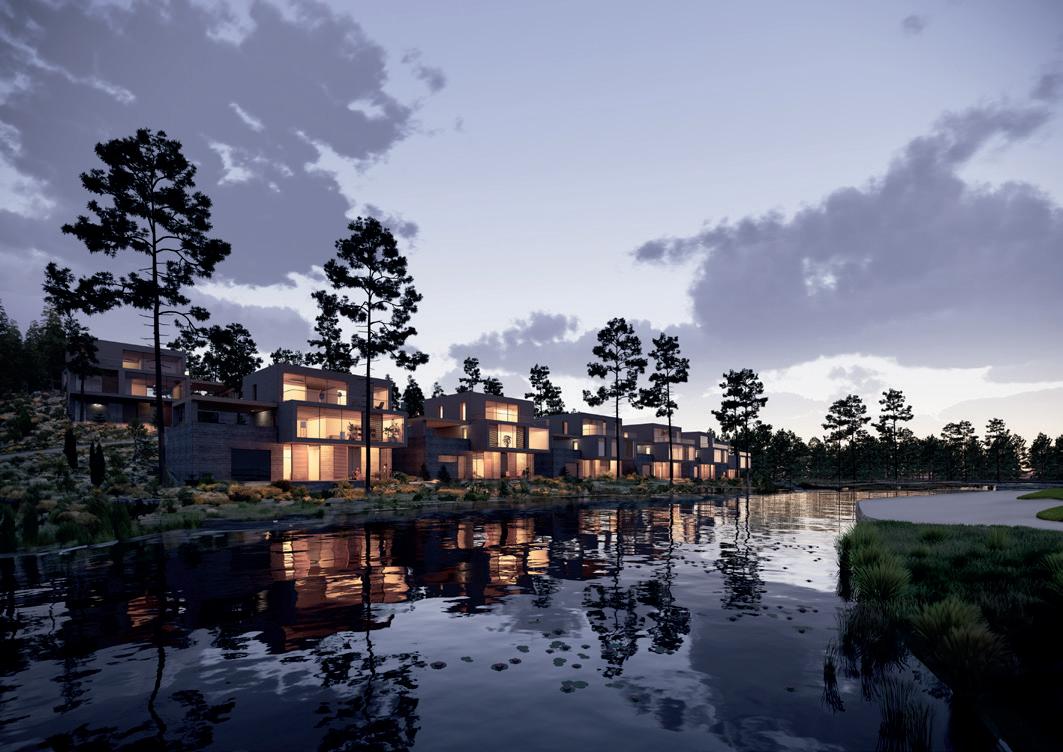
homes. Building on the legacy of the adjacent Pickala Golf complex, home to three full-length courses and a six-hole short track, the new residential community offers high-quality housing with a focus on design and the surrounding environment, whether that means building a detached house independently, buying a detached house built by a developer, or buying an apartment from a housing company.
Construction of homes will begin in late 2025, with an estimated 50 completed by the summer of 2027 when Pickala Rock Resort will host Finland’s prestigious Asuntomessut (Housing Fair), a monthlong event which is expected to attract more than 100,000 visitors.
The selection of the resort as the 2027 venue reflects the project’s emphasis on architectural quality, sustainability and forward-thinking design. “When preparing the Rock Resort site plan, a nature study, traffic study, stormwater study
and climate impact assessment were carried out. The site plan carefully considers all the natural values of the area; including, for example, the swamps, old shield pines, the ancient shoreline rocks, lichen-covered cliff tops and flying squirrel trails,” Karvinen explains proudly.
Living in the landscape
Homes in Pickala Rock Resort are designed to work with the terrain. For ex-
ample, on steep, sunny slopes, premium stone houses with large windows and multi-level terraces overlook the golf course and clubhouse. These buildings are organised as housing company units but are technically detached, offering both privacy and community.
Terraces connect indoor and outdoor spaces, while interiors emphasise natural light and functional planning. In ad-
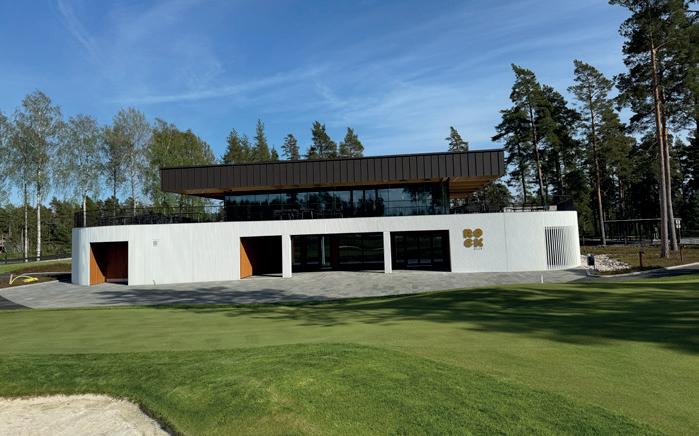
dition to stone houses, the area will also feature wooden houses.
Beyond golf: nature and recreation
The Pickala area offers a wide range of leisure activities. Residents and visitors can enjoy tennis, padel, pickleball, paddling, hiking, cycling, mushroom and berry foraging, cross-country skiing and lake swimming.
Two marinas serve boaters and fishers, and the proximity to green space makes the area ideal for birdwatching and outdoor recreation all year round.
Where golf and nature meet
Rock Golf and its neighbour Pickala Golf together form the largest continuous golf complex in continental Europe by number of holes. The scale is remarkable, but the experience remains personal and rooted in place, with fairways woven into the forest and homes tucked between stone and trees.
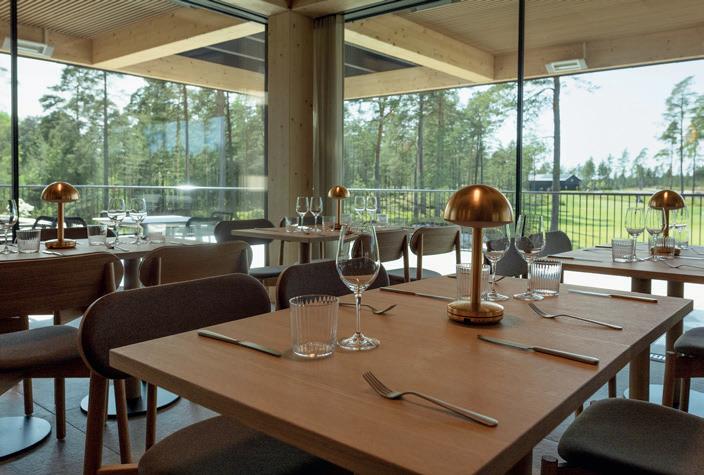
“We want to offer more than a place to live or play,” says Karvinen. “It’s about quality of life – being outdoors, being active, and being connected to this extraordinary landscape.”
That connection takes many forms: the challenge of precision golf on sculpted terrain, the sound of birdsong on a morn-
ing tee, or a clubhouse meal shared as the light fades over the forest. At Pickala Rock Resort, golf and nature are not rivals. They are part of the same design.
www.rockgolf.fi
www.rockresort.fi
Facebook: Rock Golf
Instagram: @rockgolfofficial


Confidence on the go: Norwegian innovation in stoma and wound care
Norwegian MedTech company Global Health Technology is making an impact in the international healthcare industry. Its groundbreaking stoma and wound care solutions promise to improve quality of life for patients.
By Maria Sødal Vole | Photos: Global Health Technology
Founded in Stavanger in 2010, Global Health Technology takes an innovative approach to developing healthcare solutions that truly make a difference in people’s lives. Founder and retired nursing assistant Jofrid Erland knows firsthand how important it is to develop healthcare products that actually address the problems and challenges that patients face. In 2007, her husband was diagnosed with colon cancer and returned from the hospital with a stoma bag. The couple soon discovered that the ostomy bags available
in Norway were unable to prevent leakage coming into contact with skin and clothes. This has a major impact on patients’ quality of life and ability to work, travel, and have a fulfilling social life.
Searching for better solutions on the international market, Erland realised that there were simply no effective, comfortable options protecting against leakage and odour. Gaining a better understanding of the challenges and needs of people living with a stoma through speaking with others
in similar situations, she sewed a prototype that would absorb leakage while providing greater comfort and security.
Erland worked with industrial designer Slip before bringing her prototype to iPark, now Validé, an international centre for research, innovation and business development. Her story and self-made prototype gained plenty of interest, and Erland teamed up with several expert developers and supporters. The work has culminated in a range of advanced stoma and wound care solutions that aims to improve patient outcomes and help people regain their quality of life. Today, the products are sold in Europe and the Middle East, with ongoing international expansion.
Award-winning, user-driven solutions
It is estimated that around 13.5 million people around the world live with an ostomy bag, and the vast majority of them experience leakage at least once. Most people with a stoma report frequent or recurring leakage that affect their quality of life.
“One leak is one leak too many. It’s a difficult and distressing experience that makes a lot of people retreat from social life in fear of leaks occurring while they’re out in public or at work,” says Erland. “Our driving force is making sure everyone has a good quality of life and can move around freely to do all the things most of us take for granted. I’ll never stop fighting for it, because I know how important it is.”
Global Health Technology’s innovative solutions for stoma and wound care have been warmly welcomed on the international market. In fact, the company won the Innovation of the Year 2025 award at the prestigious DEWU German Wound and Care Congress in Bremen for two products: Erland Care Protective Skin and Erland Care Stoma Pad. The company also won the Social Care Premier Supplier Healthcare Award 2022 in the UK.
The patented Stoma Pad is a groundbreaking solution that was developed over the course of a decade, with input from stoma patients. The result is a new type of superabsorbent stoma pad that reduces risk of leakage by stabilising the pouch plate, as well as absorbing potential leakage. In
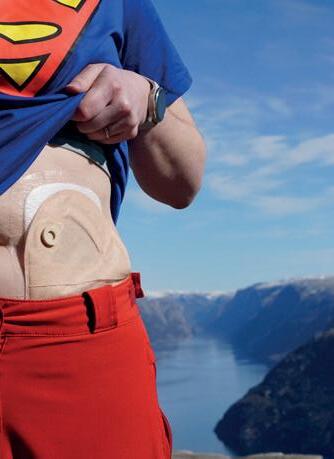
fact, the Stoma Pad can absorb up to 15 times its own weight. The pad consists of a perforated soft silicone layer that is placed directly on the skin, with an inner pad made of liquid-absorbing material covered with a breathable film. The product ensures safe and stable attachment of bag and plate, reducing the risk of leakage and offering wearers better security as they move through their day.
Product to optimise wound healing
Based upon the cutting-edge Stoma Pad technology, the company has developed a range of wound care products available in different sizes for various indications. The award-winning Erland Care Protective Skin is a multifunctional, skin-friendly wound dressing suitable even for those with very sensitive skin, such as patients with Epidermolysis Bullosa (butterfly skin). “We tested a lot of silicon adhesives in our design process, and it took a long time to find the best composition,” says CEO Rikard Olsson. “It has to attach well to be secure, but not so well that it disturbs the healing wound upon removal.”
Breathable and waterproof, the dressings are designed to optimise wound healing and offer pain-free removal. Though Erland Care Protective Skin is light and thin, it contains a superabsorbent element which binds wound fluid and activates fibres that improves healing. Reimbursement of Erland Care Protective Skin and Erland Care Stoma Pad varies across markets.
Developing a medical product is demanding, time-consuming and costly.

“It’s not the easiest industry for creating new products as it’s strictly regulated, so you need a lot of passion and drive to not give up when encountering challenges,” Olsson says. He points out that passion is one thing Jofrid Erland has in abundance. “She is the driving force behind everything we do.”
“It’s been a long journey, but I’ve had fantastic help. So many talented people have helped us develop, in my view, the world’s best bandage for wounds and stoma. Winning the innovation award in Germany was a huge achievement for all of us,” Erland concludes. “I have high hopes for the future – I want as many people as possible to be helped by our products.”
www.globalhealthtechnology.no Facebook: Global Health Technology Instagram: @global_health_technology
LinkedIn: Global Health Technology AS
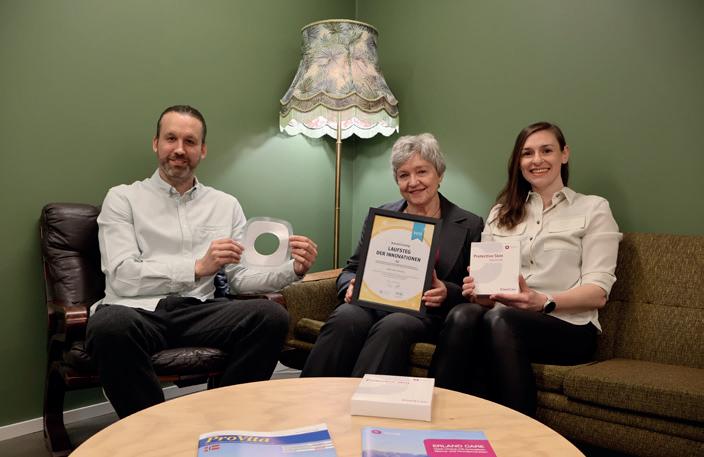

Estonia: a digital stronghold for cybersecurity, AI and defence innovation
Estonia is fast becoming Europe’s go-to hub for digital innovation and security. From cutting-edge cybersecurity to AI integration and defence technology, the small Baltic nation has carved out an outsized role on the global stage. At the heart of it all is Invest Estonia, offering international investors everything from hands-on guidance to a superb suite of digital services, helping both startups and multinationals thrive in a secure, future-ready environment.
By Signe Hansen
Despite the global turbulence of the last few years, Estonia has continued to draw foreign direct investment at impressive levels. With its competitive taxes, cutting-edge digital infrastructure, and open, innovation-friendly economy, the country has firmly established itself as a preferred destination for forward-looking companies. “Investors are really noticing and appreciating how easy it is to do business here,” says Joonas Vänto, director of Invest Estonia. “We’re 100 per cent digital when it comes to government services; everything you need to communicate with the state is online – you can
start a company from abroad, you can run it from abroad, and there’s very little red tape. We’ve had the most competitive tax system in the OECD for over 11 years and recently announced new incentives for investors. It’s the combination of all these things that really sets Estonia apart.”
Already renowned for its record-high number of unicorn startups, the appeal of the small nation has continued to develop to meet changing global demands. In particular, recent years have seen a strong FDI growth in defence technology, cybersecurity, and AI. As these
sectors are experiencing an innovation boom, Estonia has proven especially well-positioned to meet global demand. "What we’re seeing is a shift," says Vänto. "Deep tech and defence tech are the two really big things where everything seems to be happening right now."
Cybersecurity and AI: from necessity to leadership
Estonia’s rise in cybersecurity did not happen by chance. In 2007, the country was the target of one of the world’s first nationally coordinated cyberattacks – an incident that served as a wake-up call and kick-started decades of focused investment in cyber resilience. Today, Estonia is recognised as one of the most digitally secure nations globally. According to the National Cyber Security Index, it consistently ranks in the top ten.
The country hosts several major EU cybersecurity institutions and is home to a
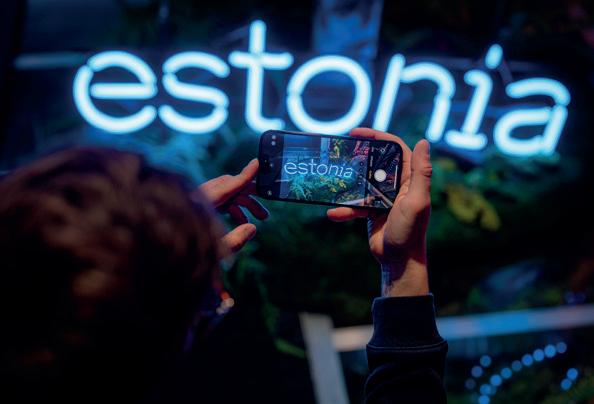
growing number of companies in the sector, including Malwarebytes, Cybernetica, and Guardtime. "We have a long-standing commitment to cybersecurity, and the world is recognising that," says Vänto.
AI development is following a similar trajectory. While Estonia is not chasing hype, it is deeply integrating AI into its public and private sectors. "It’s not just about launching startups," Vänto explains. "AI is being woven into society. The education system is being aligned with it to prepare the workforce for what comes next."
Defence tech: unapologetically essential Estonia is also emerging as a key player in Europe’s evolving defence landscape. "From our perspective, defence tech is the top sector investors are interested in right now," says Vänto. "It’s not without controversy, but we’re unapologetic about the need for it. For the defence sector to thrive, Europe needs to invest heavily in the sector and new technologies."
Recent plans include a massive new defence industry park set to open in 2027, part of a larger vision to build a robust local defence ecosystem. Estonia is already seeing strong international interest, from NATO partners to regional governments, and is home to innovation in robotics, autonomous systems, and battlefield communications.
Why Estonia?
For many investors, Estonia offers a rare combination of digital excellence, policy

stability, and responsiveness. A recent survey on the benefits of doing business in the Baltics revealed that 69 per cent of foreign investors cited the country’s digital infrastructure as a top reason for investing there. In Invest Estonia, this digital advantage is complemented by a hands-on approach.
"We work with both global giants and early-stage startups," says Vänto. "What really sets us apart is how we combine a personal approach with strong digital tools. Each company gets a dedicated investment advisor and a tailored strategy. But we also use in-house AI and a fully digital support ecosystem. That combination makes us agile and effective."
Major companies like Ericsson and ABB have been in Estonia for over 30 years,
testament to the long-term value the country delivers. More recently, initiatives like the e-Residency programme and new incentive grants are making Estonia even more attractive for newcomers. A key opportunity is the Largescale Investment Grant, which supports capital investments of €100 million or more with up to 15 per cent reimbursement, capped at €20 million. Applications remain open until 11 August 2025.
In a world that demands both security and innovation, Estonia offers both. For startups in AI to multinational defence systems, Estonia stands ready – digitally prepared and strategically positioned.
www.investinestonia.com
LinkedIn: Invest in Estonia
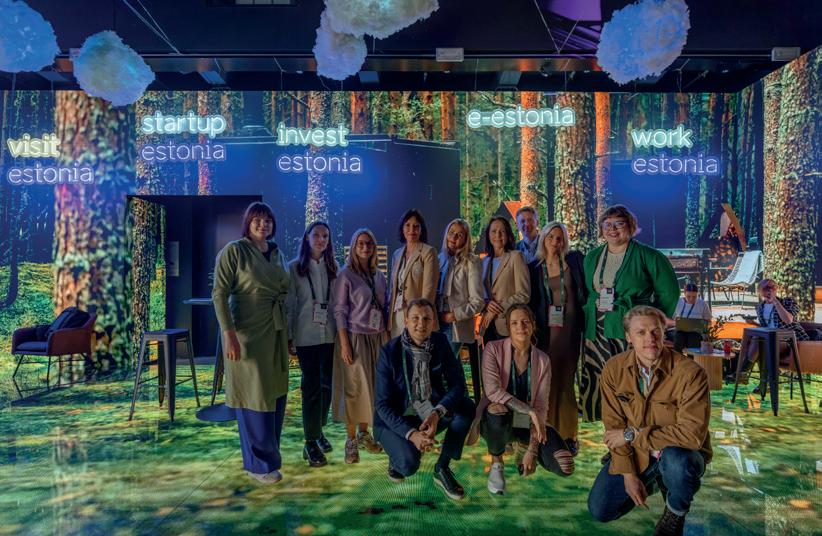
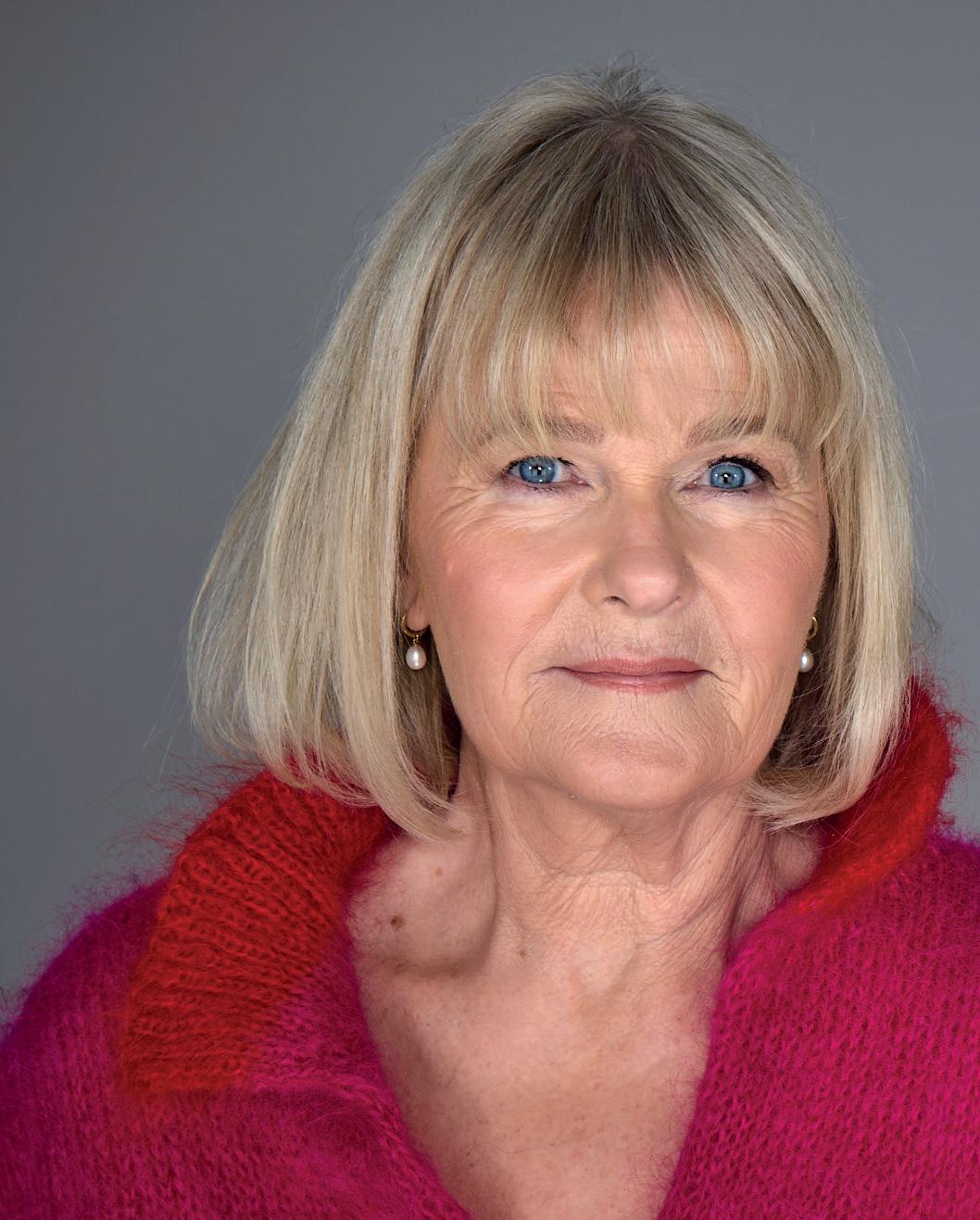
Sissela Kyle: Sweden’s queen of variety
A Swedish cultural icon, Sissela Kyle is a regular on screen, stage and behind the microphone on radio. Juggling directing and performing must surely be staminasapping. Her solution? Grab naps where you can, even if it happens to be backstage.
By Xander Brett
There is busy, then there is Sissela Kyle. Performer, director, comedian… her job titles are countless. Seemingly as comfortable on stage as behind it, later this year she will traverse Sweden with a one-woman show. Next month, a musical she is directing, written by her partner Per Naroskin, takes to the stage in Gothenburg, with a nationwide tour to follow. Oh, and she has found time for an autobiography, which is due for publication imminently.
“I’m an actor first and foremost,” Kyle clarifies, battling a cold that, she jokes, makes her sound like Marge Simpson.
“That’s what I trained for, and most of my life and career has been in acting, but for the past 15 years or so, I’ve primarily been a director.”
Kyle helped oversee Stockholm’s Parkteatern for a period. She is a five-time winner of the Guldmasken theatre award. That is before you count her Karamelodiktstipendiet, Magnoliapriset, Stora retorikpriset, Alf Henrikson-priset and Medaljen
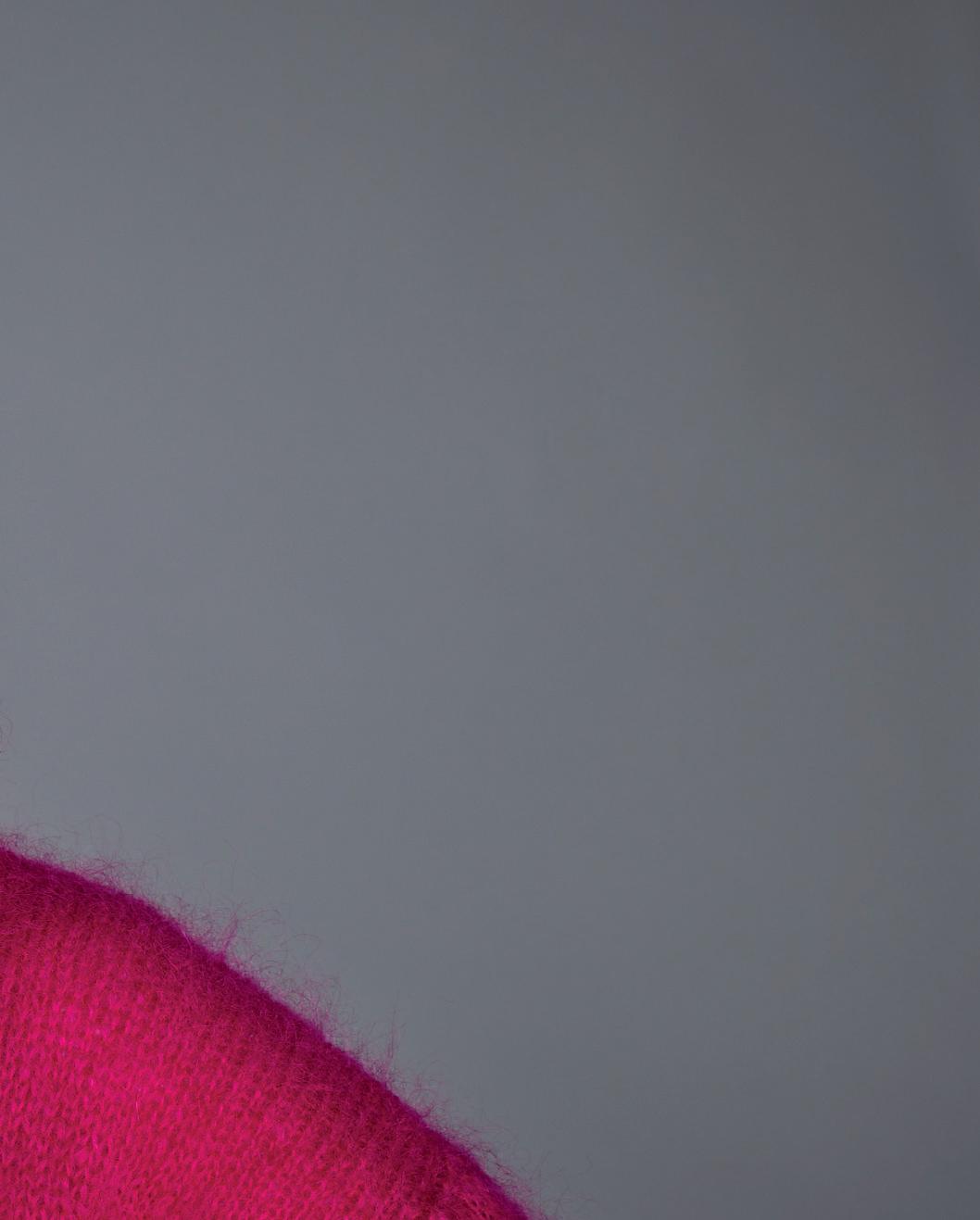
Litteris et Artibus, which was presented during a royal audience. Such a glittering array of prizes confirms her position in the upper echelons of Sweden’s creative society. In 2009, she was the subject of an episode of Här är ditt liv, Sweden’s answer to This is Your Life.
A cultural childhood
Kyle’s autobiography, CV. Livets gång, will be published by Norstedts next month. It has, she says, provided her with an opportunity to jump back into her life “at certain occasions or emotions,” and with hundreds of pages, it seems there is much to learn about the girl who grew up in Partille, just outside Gothenburg.
Kyle’s parents were academics and exposed her to the performing arts from an early age. She read plenty, too, and says that cultural discussions in the household were frequent. Her late mother, Gunhild, forms the subject of her aforementioned one-woman show, Min föreställning om mamma, which charts Gunhild’s success
as a pioneering professor of women’s history. It will soon set off on another hectic pan-Sweden journey, beginning in Kalmar on 9 October, having already been on tour towards the end of last year.
After fledging the nest and working in healthcare, the young Kyle was employed as a supply teacher, before following her calling and heading north to Stockholm, where she was enrolled at the drama school Teaterhögskolan.
“You often hear about the death of theatre, particularly with the competition from streaming,” she muses. “But I think
the performing arts are quite strong in Sweden. Theatre will survive. There will always be people telling stories, and there will always be people who want to hear them live. Theatre is rehearsed and repeated, but at the same time it’s immediate: it happens right there and then.”
An international exploration
Kyle may have grown into a Swedish national treasure – she has been a presenter on Sveriges Radio’s programme Sommar i P1, something equated to receiving a knighthood or damehood, no less than four times, as well as a presenter on its winter version – but she is no stranger
to international attention. A Very Scandi Scandal, in which she stars as the doctor-turned-bank robber Cecilia Stensson, reached UK audiences via Channel 4’s Walter Presents service in 2019, and All and Eva, in which she plays Inger, has also made it abroad.
We are speaking after she has returned from a trip to London, buoyant with the merits of British comedy. “I want to mix dark and light, and I think England is very good at that,” she explains, “I love the English use of words and irony. I welcome it, and I think Sweden has learned a lot from it. We have German influences
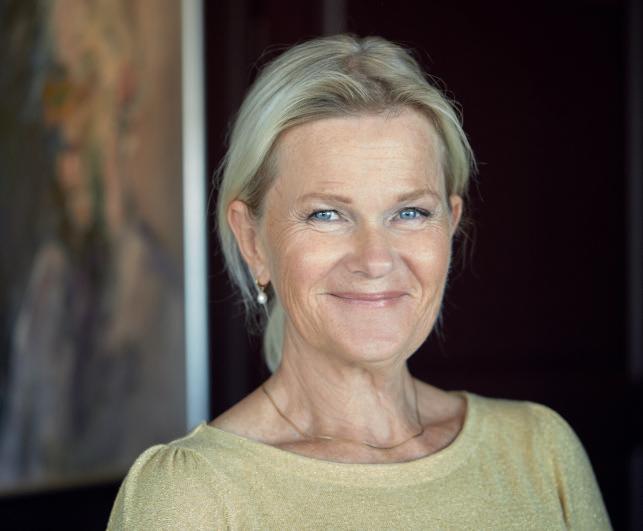
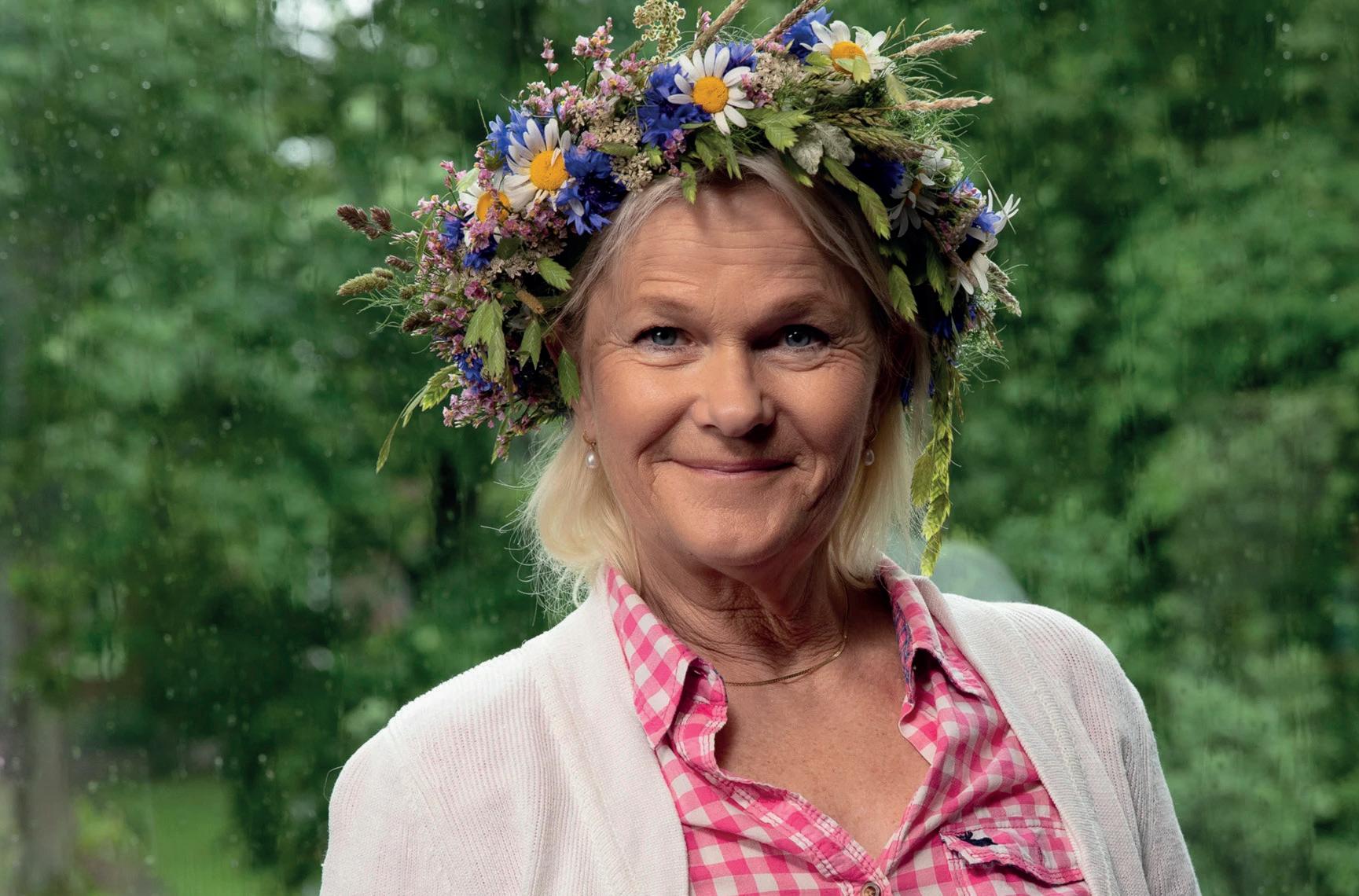
too, though, and many Swedish directors have been influenced by the German school of thought.” When asked if, despite its similarities, Swedish comedy maintains a darker edge to Britain’s, Kyle smiles and replies simply: “I hope so!”
She has seldom performed in English (bar, she mentions, some occasions in Australia and Belgium) and, though countless series in which she appears have travelled overseas with subtitles, Kyle insists she always acts with only the Swedish audience in mind. “Maybe the producers think about the international potential, but I don’t,” she explains. “It’s out of my hands. In film and television, the editors have so much control. It’s not like being on stage, where you can own the situation.”
The joy of a pocket musical
Kyle’s current focus is her pocket musical Nån måste göra det!, which she de-
scribes as containing a characteristic mix of humour and seriousness. The title translates as ‘someone has to do it’ and it will start its voyage at Gothenburg’s Lisebergsteatern on 26 September, before jetting off to theatres nationwide.
Well-known performers Helen Sjöholm and Gunilla Backman are on the cast list,
appearing as Kassandra and Gunilla, two friends tasked with sorting out a library. They deliver a collection of Swedish songs, some of which have been reworked to suit the action on stage. “They sing so fantastically well that your heart breaks,” shares Kyle, who also says that she always finds the thing she’s currently doing the most interesting. “Whether it’s
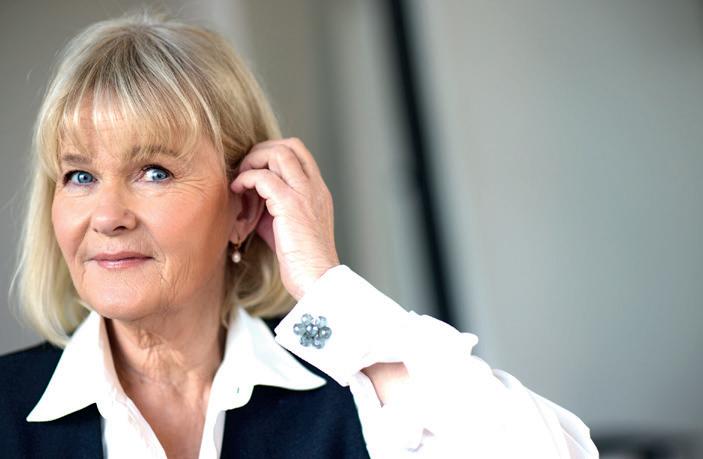
a TV show or in the theatre, what I’m doing fills me up so much that I don’t need to think about anything else.”
Pushed for her secret to fending off competing commitments and ideas, the response is uncomplicated. “I’m very good at taking a nap. I’ve slept in the fika room backstage. If there’s a sofa or somewhere for me to put a mattress, I can switch off anywhere. I think that’s one of the things that has made it possible for me to be so productive. Give me five minutes and I’m back on track.”
When the busy touring months return, Kyle might be needing more power naps than usual. Not that the vigour of Sweden’s all-powerful cultural queen of variety should ever be underestimated.
Follow Sissela Kyle: www.sisselakyle.se
Facebook: Sissela Kyle
Instagram: @sisselakyle


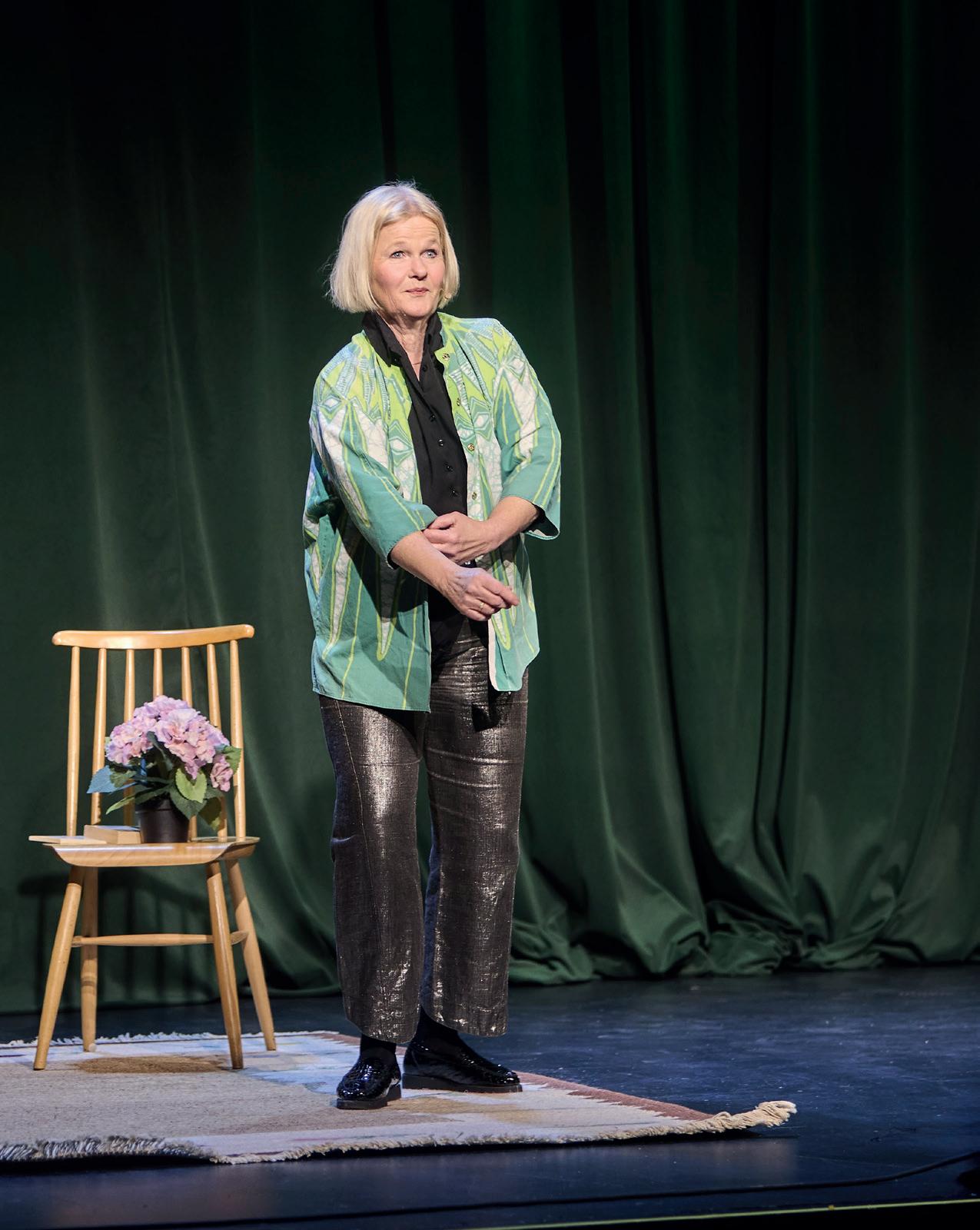
Arne Børresen: the taste of Hamar

In a quiet corner of Hamar, Arne Børresen continues to uphold a legacy that began in the wake of war. As the sole remaining traditional butcher and sausage maker in the city, the company has become a symbol of craftsmanship, community, and unwavering commitment to quality.
By Celina Tran
In the heart of Hamar, Arne Børresen AS is not merely the city’s last remaining traditional butchers, but a living piece of Norwegian food culture. From its traditional Norwegian medisterkaker (pork meatballs) to the award-winning wiener sausages, everything it makes carries the flavour of time, care, and local pride.
While the rest of the industry races toward automation, Arne Børresen AS continues to work the old way. Meat is still hand-cut, sausages are hand-filled, and beef patties are fried by people rather than machines. “Our recipes haven’t changed much since the 1950s, nor has our commitment to quality,” says Marius Kjeldstadli, deputy manager at Arne Børresen AS. “We’re proud to remain an
artisanal business that uses few modern machines. Good old-fashioned craftsmanship is disappearing more and more, and it’s important to preserve it.”
From fish-filled sausages to gold medals
Arne Børresen AS was founded on New Year’s Day in 1946, in the cold dawn of
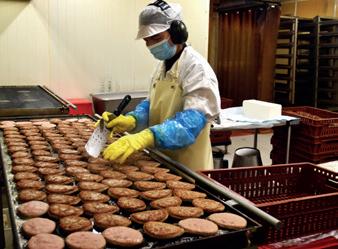
post-war Norway. While most people were still recovering from the trauma of the era, Arne Børresen decided to open a much-needed butcher and sausage-making workshop.
“Meat was still hard to come by in those early years after the war, so initially they were packed with fish, often herring,” says Kjeldstadli. “At a time when fuel was also hard to come by, Børresen borrowed a horse and cart, and rode from farm to farm in search of emergency-slaughtered animals that could not be sold on the open market but could still be used. He was one of the first who managed to get meat for the sausages, which made him very popular.”
As the business grew, he invested in a moped with a wooden delivery box on the back; the most affordable delivery van he could get. Rain or snow, he would ride across Hamar, delivering sausages and other handmade products to restaurants, cafés and kiosks, truly making
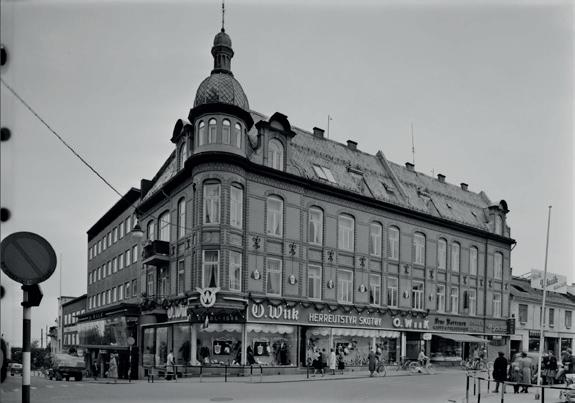
a name for himself through grit and persistence.
By the 1960s, business was booming. So many customers were showing up on Fridays and Saturdays that a queue and ticket system had to be introduced to manage the rush. People came for recipes packed with both pork and beef, crafted by skilled hands and made with local ingredients.
Pride and tradition in sausage making Today, Arne Børresen AS is run by a small, tight-knit team with a strong sense of pride and tradition. The company continues to make most of its products in the same way it always has, and the famous wiener sausage is widely regarded as one of the best in Norway. With multiple
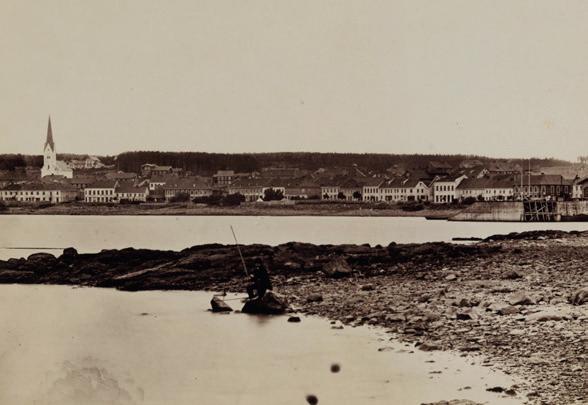
gold, silver, and bronze medals from national and Nordic meat championships, its reputation is as solid and secure as the sausage skins.
“The retail shop closed in 1980, due to the shifting marketing conditions, but we’re still at the factory in Disen that we moved to in 1966. Now, our products are available around the region, and we’ve partnered with Isbilen (the Norwegian Ice Cream Truck) to bring our products across the country.”
While expansion is on the horizon, the core values remain unchanged: craftsmanship, quality, and pride in local food traditions. The team is exploring larger premises outside the city centre – “for the sake of our poor neighbours,” Kjeld-

stadli jokes – but insists that it will always remain an artisanal business where almost everything is still done by hand.
So, if you ever visit Hamar or are lucky enough to spot one of its products in your local store, take a satisfying bite of history.
www.arnebørresen.no
Facebook: Arne Børresen
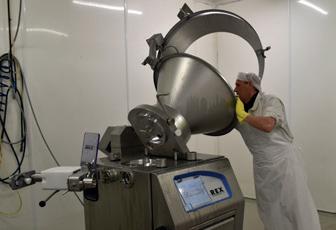
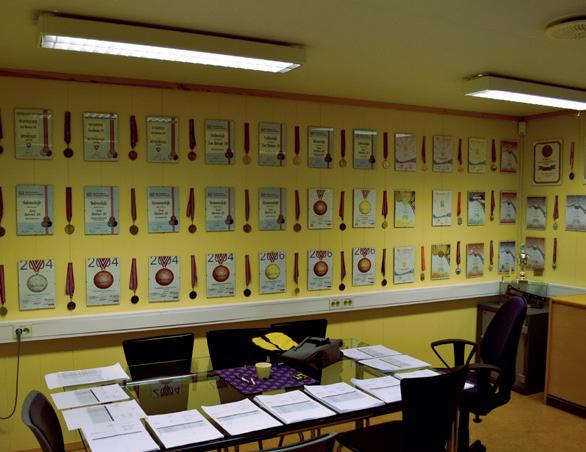
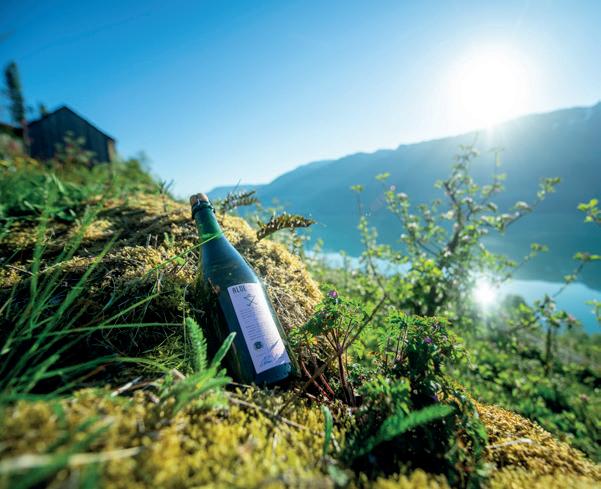
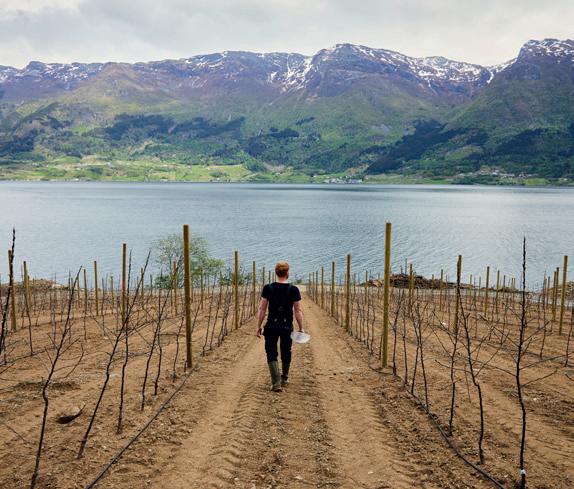
Bringing Hardanger’s award-winning cider to the world
Norwegian craft cider is thriving and Alde Sider is renowned as one of its leading producers. A pioneer and a driving force in the craft cider wave, founder Olav Bleie is on a mission to share the joy of cider from Hardanger with the rest of the world.
By Malin Norman | Photos: Alde Sider
The Hardanger region on the west coast of Norway is by now a stronghold for cider. One of the leaders in the cider revolution is Alde Sider, located on Bleie Farm in Sørfjorden, surrounded by mountains, the Hardangerfjord and the Folgefonna glacier. Olav Bleie runs the farm, which has an annual production of around 100,000 litres of cider, as well as 50,000 litres of apple juice and 10,000-15,000 litres of other fermented products, such as ice cider.
Bleie inherited the farm from his father 20 years ago, learned how to grow apples and make cider, and eventually took the step to produce cider commercially in 2014. “It was scary to start the cider business, but the product was so great and very different from every cider I had ever tasted. Taking a product that our forefathers were so familiar with, we can finally show how fantastic it is to people in Norway and further afield.”
Cider from Hardanger is well known both in Norway and internationally, with popularity reaching new heights recently and local producers winning heaps of prestigious awards. A leading producer but also an award-winning one, earlier this year Alde Sider won Best-in-Class in the category dry modern cider at The Great Lakes International Cider and Perry Competition (GLINTCAP), the world’s largest cider competition.
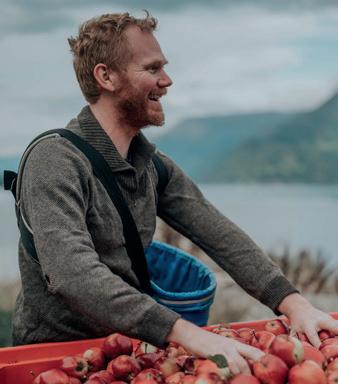
The recipe for success is a combination of the terroir, the microclimate and the apples, as well as the dedicated farmers. “The Gulf Stream ensures a stable climate, similar to southern Europe, which is beneficial for growing apples,” says the cider maker. “Also, the long daylight hours in the growing season, which lasts from May to September or even longer, give the apples the red cheeks but also an acid buildup and a lot of esters and polyphenols – this is the perfect starting point to make some of the world’s best ciders.”
Bleie is a pioneer not only in producing cider but also in the Hardanger cider wave of popularity and a driving force behind what
is now a booming tourism market for cider. “We have a fantastic community of cider makers, who built this market together,” he says. “Our goal is to show what real cider is, to tell the story of the product, and to bring people along on the journey.”
www.aldesider.no
Facebook: Alde Sider
Instagram: @aldesider

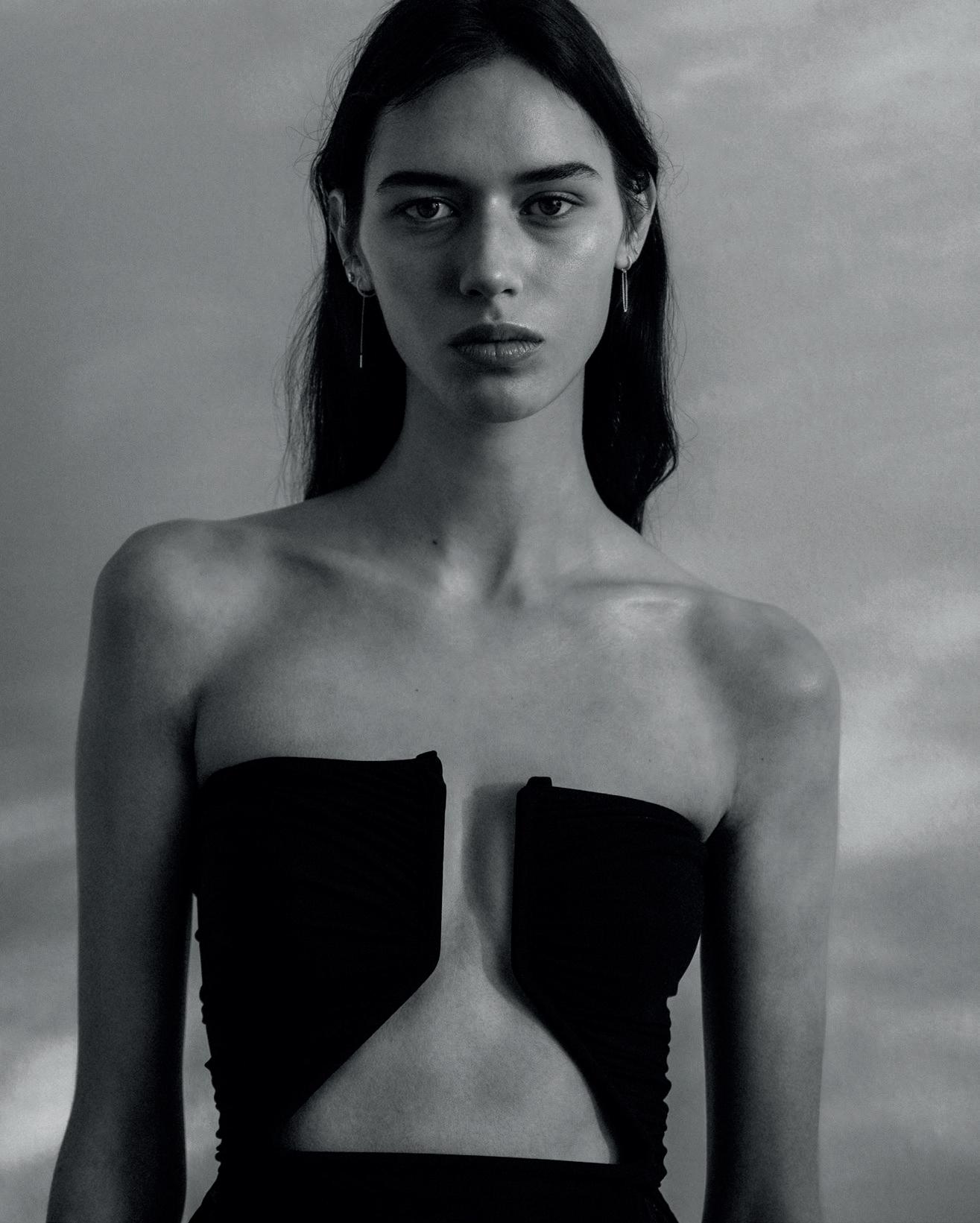
Jewelry with a unique blend of sustainability and self-expression - celebrating life’s milestones with creations that are both timeless and daring.
Berry crumble
The gardens and forests are full of berries and it is time to enjoy them to the fullest. Fresh berries can be used for so many things; sprinkled on top of your morning oatmeal, or enjoyed with milk for a snack. Then of course you can make jam and marmalade, or freeze them for when winter rolls around. One of my favourite things, though, is to make berry crumble. I love the combination of berries and sweet crumble. Especially when you add a little syrup to the crumble, which creates a yummy caramel flavour. I hope you will enjoy this recipe as much as I do!
By Sofia Nordgren
Ingredients:
Crumble
125 g cold butter or margarine
120 g all-purpose flour
60 g rolled oats
135 g caster sugar
70 g syrup
A pinch of salt
Filling
1 l berries of your choice, e.g. red currants, strawberries or raspberries
1.5 tbsp corn starch
3 tbsp caster sugar
1 tbsp vanilla sugar
Instructions:
1. Preheat the oven to 200°C.
2. Combine the ingredients for the crumble and work together into a crumbly dough.
3. Pour the berries into a bowl and sprinkle with sugar, vanilla sugar, and corn starch. Carefully stir together.
4. Pour the berry mix into a pie tin.
5. Sprinkle the crumble over the berries.
6. Bake in the middle of the oven for 20-25 minutes, or until golden.
7. Cool and serve with vanilla ice cream.
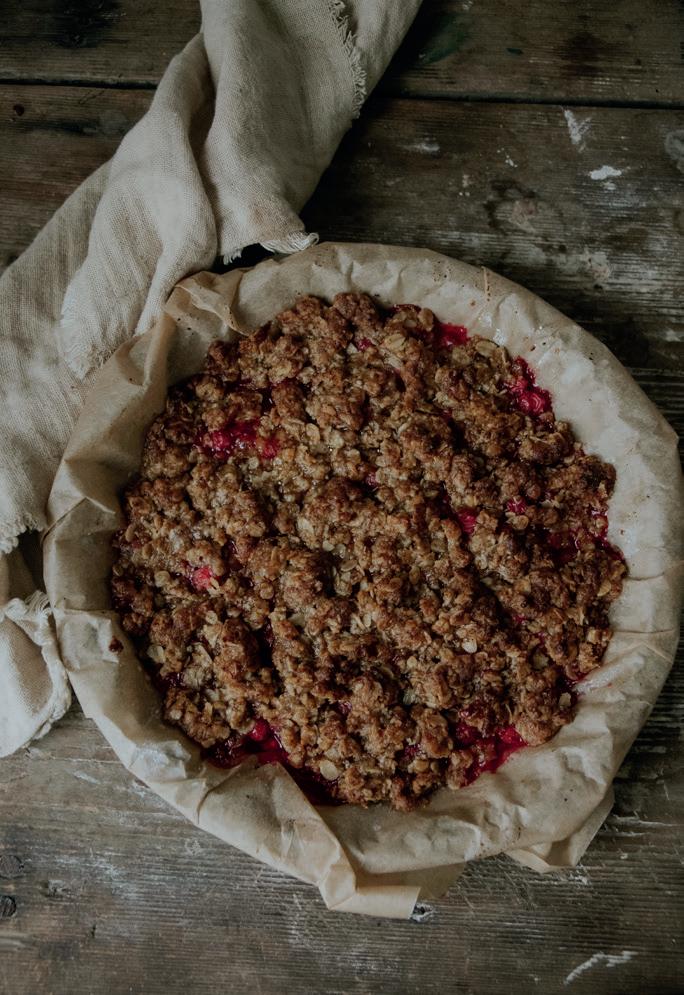

Winner of the best Regional Cookbook at the Guild of Food Writers Awards 2022, Sofia Nordgren lives with her family in a small town in Sweden, working as a photographer, content creator and plant-based cookbook author. Cooking and baking have always been a hobby of hers and on top of that, she has a passion for nature, gardening and slow, seasonal living. Foggy mornings, cinnamon buns, and playing with her kids are among her favourite things in life. Sofia Nordgren also runs the successful blog, The Nordic Kitchen.
Beer for the crayfish party?
Check out this trio
It doesn’t get more Swedish than crayfish parties, with quirky culinary traditions and funny songs at long communal tables, and what have you. If like me, you don’t really fancy seafood en masse, you can still enjoy the party – with a nice beer in hand. Here are three of my favourite brews to bring along, if invited to a proper kräftskiva.
By Malin Norman
Let’s start with a bang: Nils Oscar God Lager. This is one of the country’s best and most popular lagers made by a microbrewery, praised for its malty character with notes of white bread, honey, citrus and herbs. God Lager is the brewery’s flagship beer, launched just a year after it was founded in 1996. The name actually means tasty lager – what more do you need?
Well ok, another fabulous Swedish lager is Helsinge Pilsener, with the expected bready notes as well as a decent level of bitterness. Made by Helsinge Ångbryggeri, pretty close to my hometown in the region of Hälsingland, this beer is outstanding when served fresh. Started in 2004, the microbrewery
has a fairly small core range, focusing on what they know; German style lagers. The Rauchbier called Helsinge Rököl is great too, with balanced smokiness, some herbs and spices, and maple syrup bread.
And last but not least, a beer style that generally works really well with seafood is Witbier, a Belgian style wheat beer. If you want to devour a great Swedish version with your crayfish (or without the crawlers, like me), go for Belgian Witbier by Poppels Bryggeri. This is one of my all-time favourite Swedish breweries, founded in 2012 by a group of beer lovers in Jonsered, just outside Gothenburg. In this delicious beer, the brewers have used coriander and orange peel – for the typical light spiciness and citrus notes
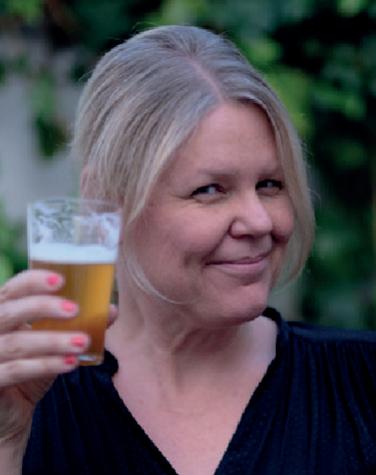
that you would expect in a well-made Witbier.
Now you’re all set, with the beer at least. For some helpful insider’s tips on crayfish party etiquette, check out our special feature in this issue.
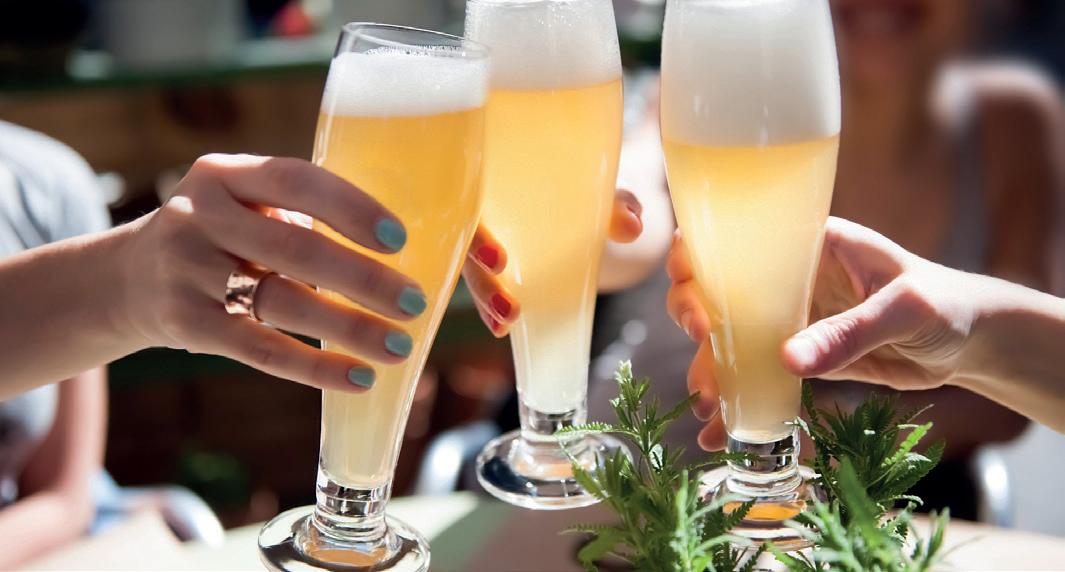
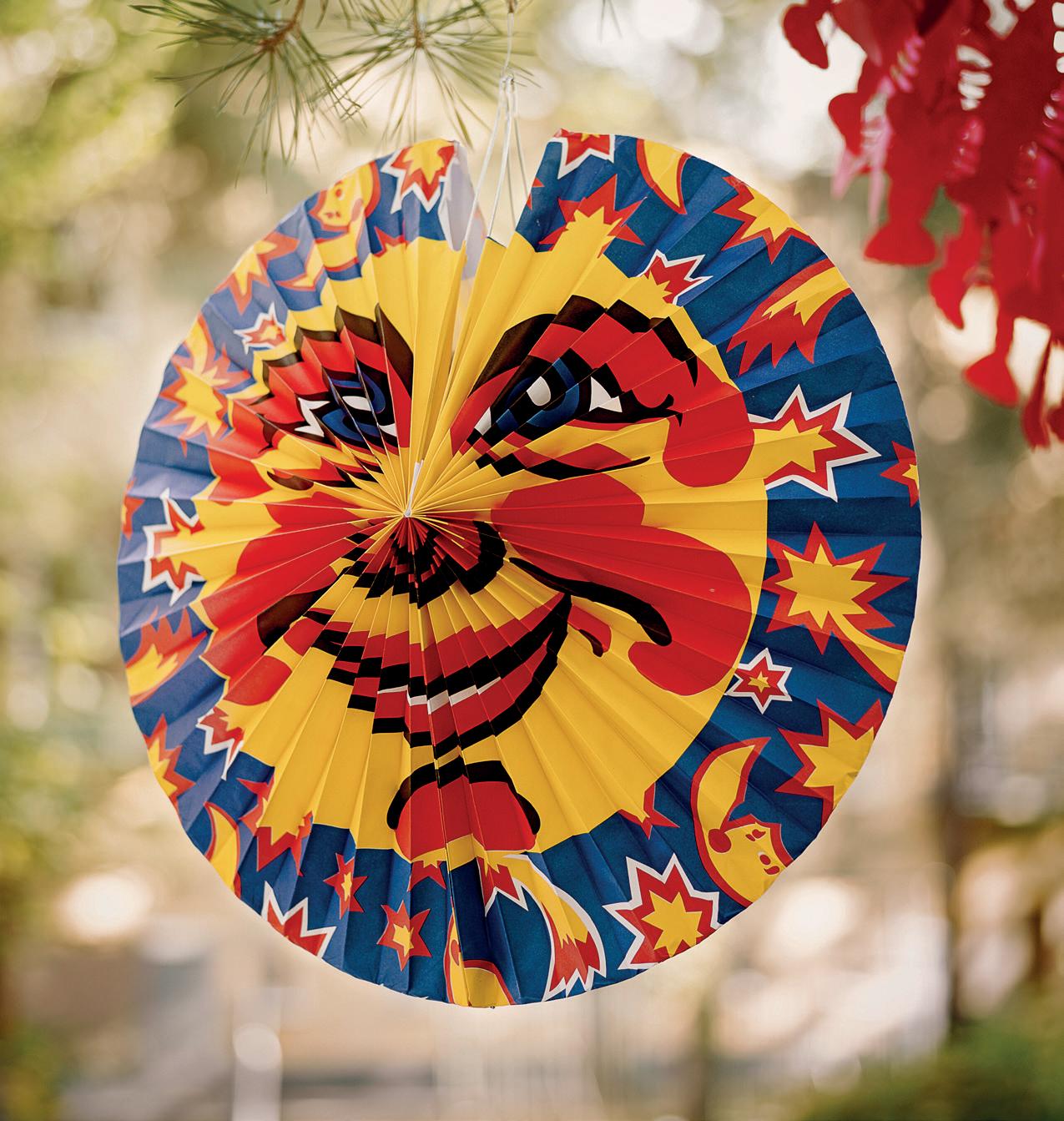
Get ready for the crayfish party!
August means that crayfish-party season is here, marking the end of summer. This is our insider’s guide to the classic Swedish feast. Make sure to stock up on colourful paper lanterns and funny party hats, plenty of side dishes in addition to the red gold, such as the delicious Västerbotten cheese quiche, and of course some snaps and drinking songs.
By Malin Norman
According to Nordiska Museet, Sweden’s largest museum of cultural history and stories about the life and people of the Nordic region, historically crayfish season began on 8 August. This relates to an old ban on crayfish catching between November and 7 August, due to the risk of over-fishing. Even though the ban was abolished in 1994 and no specific date is set nowadays, most Swedes start eating crayfish at the beginning of August still, continuing until the end of September.
The annual seafood feast has been part of Swedish culture for hundreds of years; since the 16th century, that we know of, but possibly earlier still. Like many other festivities, it started among the upper classes and royals. Apparently, common
people did not actually eat crayfish, as it was seen more as a food for emergencies and fasting. Swedish biologist and physician Carl Linnaeus even described crayfish as insects and not suitable for human consumption.
Origins of the crayfish party
Crayfish was first mentioned in Swedish gastronomy in a letter from Erik XIV to the bailiff at Nyköpingshus, dated 1562. In the letter, the king orders that as many crayfish as possible be obtained for his sister Anna's wedding. At that time, King Erik cultivated crayfish in the water-filled moats around Kalmar Castle.
In Olaus Magnus' chronicle about the history of the Nordic people, published in

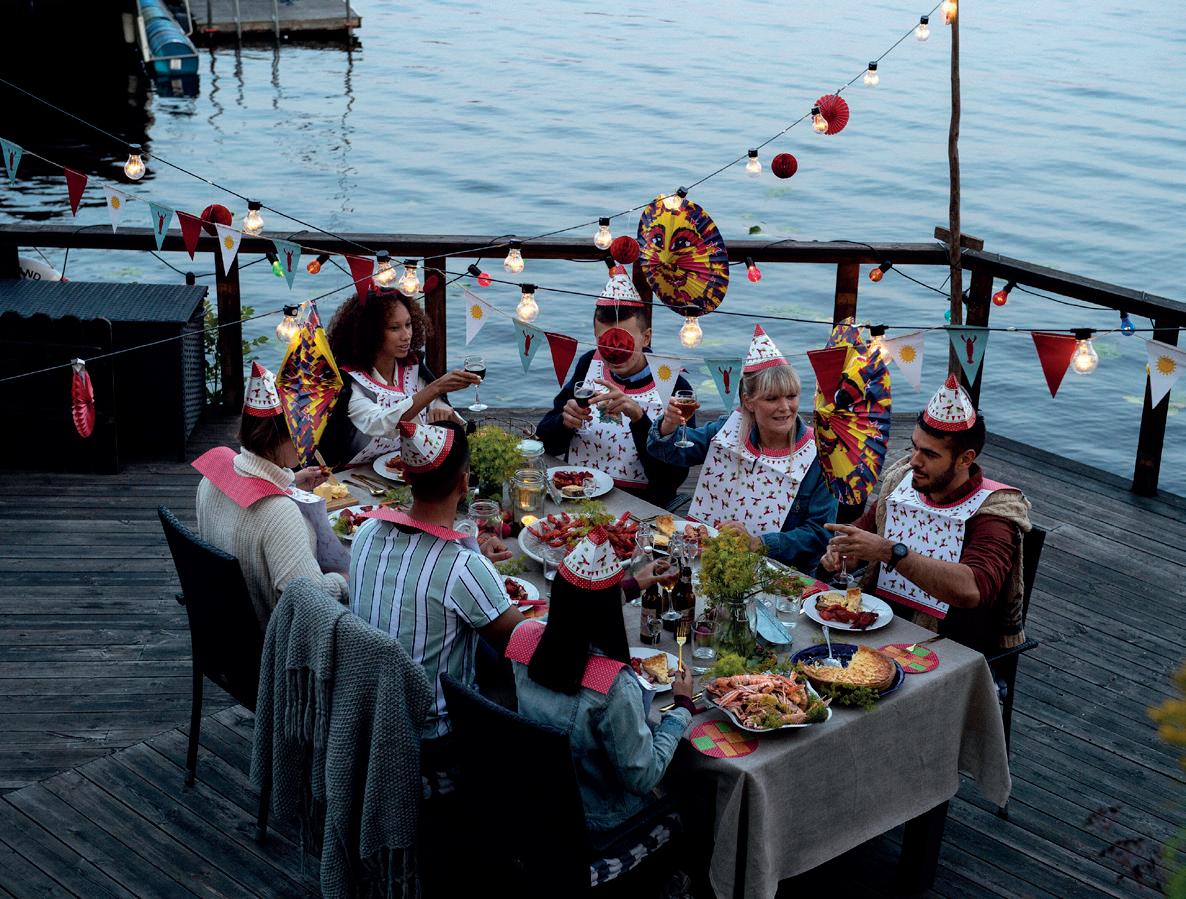

Västerbotten cheese quiche recipe
Quiche dough:
3 dl wheat flour
125 g butter
0.5 tsp salt
1 tbsp cold water
Filling:
3 eggs
2 dl cream
2 pinches coarsely ground black pepper
300 g grated Västerbotten cheese (you can replace the cheese with a cheese of your liking)
Roe sauce (optional):
1 red onion
100 g fish roe
2 dl crème fraîche or sour cream
Preparation:
1. Set the oven to 200°C.
2. Mix the flour, butter and salt into a crumbly mass. Add water and quickly work together into a dough.
3. Press the dough into a quiche dish. Prick with a fork and refrigerate for about 10 mins.
4. Pre-bake for about 10 minutes.
5. Whisk together eggs, cream, salt and pepper. Add the cheese and pour the mixture into the quiche crust.
6. Bake in the middle of the oven until the egg yolk has set and has a nice colour, about 20 minutes.
7. Leave it to cool before serving.
Source: sweden.se

Latin in the mid-16th century, he describes the availability of crayfish in moats and basins. It also reveals how foxes would catch crayfish with the help of their tail.
Crayfish was not eaten whole and cold, as nowadays, but rather in various minced meats and stews, and Kajsa Warg's 18th century cookbook on housekeeping for young women includes recipes such as crayfish cake and crayfish sausage. When people eventually started eating crayfish whole, they were cooked and served steaming hot. Towards the end of the 19th century, crayfish were cooled in the broth and decorated with sprigs of dill.
The word for crayfish party – kräftskiva – was first used at the beginning of the 20th century, according to Nordis-
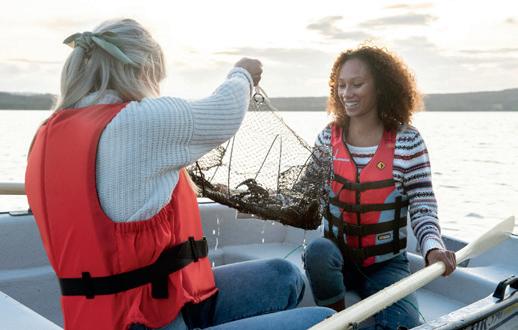
ka Museet. It probably originated in the bourgeois crayfish feasts, called crayfish supper, which involved crayfish and plenty of alcoholic drinks. By the 1930s, it was an established term.
Swedish culture and self-image
The crayfish party is an important part of the country’s culture, and closely associated with the Swedish self-image, with some important elements and rituals. Despite the notion of Swedish minimalism, more is definitely more at a proper crayfish party.
Making the most of the last summer days, most crayfish parties take place outdoors. A long communal table tends to be decorated with Swedish flags, colourful paper lanterns – like the popular smiling full moon – and novelty party hats. Crayfish
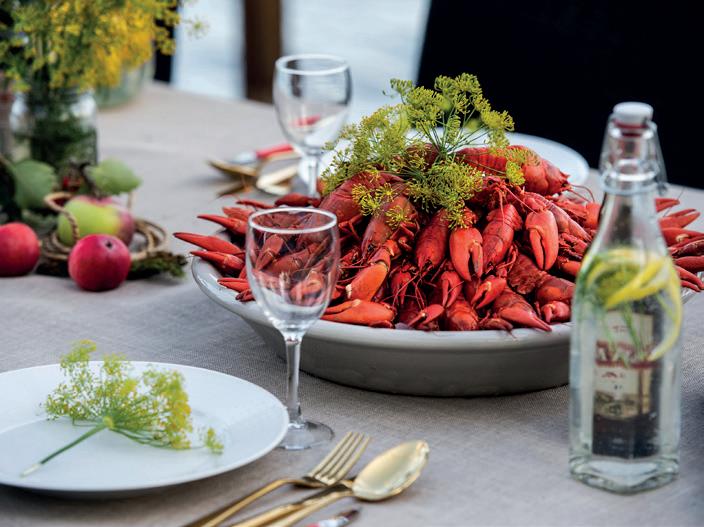
feasts make for messy eating, so many hosts use crayfish-themed paper tablecloths, napkins, bibs, and paper plates.
The red gold that the crayfish is renowned as, is boiled with salt, dill and sometimes beer, chilled and eaten fresh from the shell. You eat crayfish cold, with your fingers. And sucking noisily to extract the juices is perfectly acceptable behaviour.
Swedish supermarket ICA recommends around 0.5-1.0 kilo of crayfish per person – piled on large plates in the middle of the table. Common side dishes include the delicious Västerbotten cheese quiche, freshly baked bread, some form of salad, and of course a selection of snaps – and drinking songs, like the ever so popular Helan Går.
Tips for first-timers
Visit Sweden explains the ground rules to eating crayfish:
• Turn it belly up and suck the brine – slurping is almost mandatory; no need to be polite.
• Next, wring off the tail and extract the most sought-after part of the crayfish meat using a crayfish knife.
• Lift the back shield to reveal the delicious crayfish butter – a yellowish, butter-like paste found behind the head.
• The claws are best cracked with a crayfish knife, and the succulent meat can be teased out with a designated, pronged tool – though you will manage fine with a fork or your bare hands.
Source: visitsweden.com
SpecialTheme: MADE INNORWAY
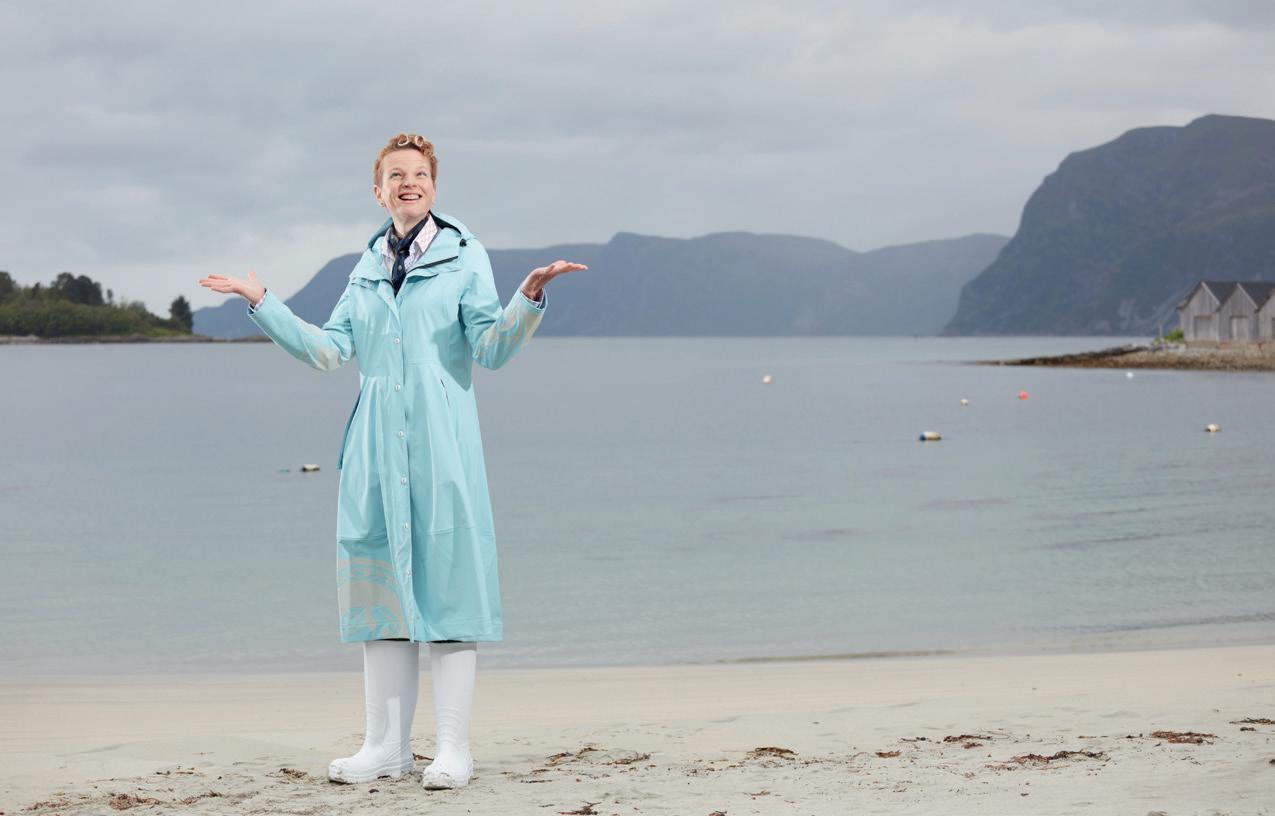
one NODE: delightful rainwear from rural Norway
On an island off the rugged west coast of Norway, surrounded by fjords, fishermen, and spectacular skies, designer Julia Kröner Venø has launched a colourful addition to the world of outerwear. Though the idea was born from storms, one NODE is a rainwear brand that brings fashion, joy, and community together.
By Celina Tran | Photos: one NODE
Located on a grey, rain-swept coastline and with a population of about three thousand people, Selje is not your typical fashion capital. Though, that is sort of the point. Here, among the intervals of early morning dew and afternoons of lashing rain, one NODE was born.
“Through our designs, we try to bring a little joy and colour into people’s lives,” says Julia Kröner Venø. “We want our rainwear to not only encourage an active outdoor lifestyle, but also joyful community interactions.”
From bustling metropolis to…rural Norway?
Originally from Germany, Julia is a designer whose career has taken her every-
where from London to Atlanta. The latter is a sprawling, fast-paced metropolis in the American South, very much a city of ambition where she thrived. However, when the
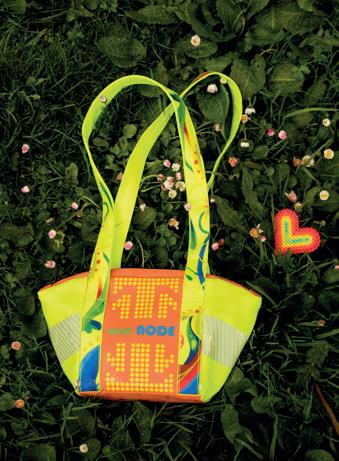
pandemic hit, priorities began to shift. Julia and her husband, Norwegian artist Bjørn Venø, found themselves longing for something quieter and simple. “The fast-paced rhythm of American life was invigorating, but we needed a reset. Not just geographically, but spiritually.”
Doing a complete 180, the couple and their two young children decided to move back to where Bjørn had grown up; a small island called Venøy, 20 minutes from Selje. There, along the edge of Norway’s weather-worn coast, the rhythm is slower than in the cities. Life is shaped by tide, wind, and the quiet persistence of nature, and days begin with gull cries and the soft crashing of waves rather than the blaring honks of the morning rush. It is a place where people wave when they drive past, not because they know you well, but because you are a part of something.
Drawing on her skills and background, Julia wanted to establish herself and create something that would honour the
coastal Norwegian ethos: simple and functional, while rooted in nature and real life. “It rains a lot here, but I never found anything I actually wanted to wear. I wanted colour and emotion, something that felt alive.’
With a rainwear brand in mind, Julia spent two years searching for a European manufacturer. As a tailor, it was important to her that she could ensure quality and good working conditions for those producing her designs. “We found the perfect ethical partner in Poland, who also shares our passion for the Norwegian lifestyle.”
Connecting people through rainwear
The brand one NODE was born not in a boardroom, but in a community shaped by its salty air and sturdy wood, conversations and simple living. “A node is a point of intersection, where things meet; be it cultures, generations or people. I wanted to create a brand that encourages people to meet each other, even in the rain. In Norway, people don’t usually come up and say, ‘You look nice.’ But when you’re wearing a colourful raincoat, they do! They start talking, and suddenly, you’re not just two strangers passing by.”
Since its inception, the brand has grown from one node – Julia – into a mission-driven community. It has attracted
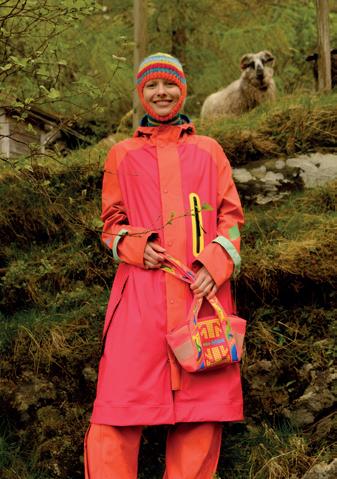

a growing network of both local and international partners, and they continue to work closely with schools and professionals in the region.
“The philosophy of one NODE as a point of intersection is reflected not only in our design approach, but also in our team structure and partnerships. Our recent capsule collections, fashion shows, and limited-edition pieces are created in collaboration with both local and international creatives.”
From fashion shows with the local cultural heritage centre to limited-edition rain
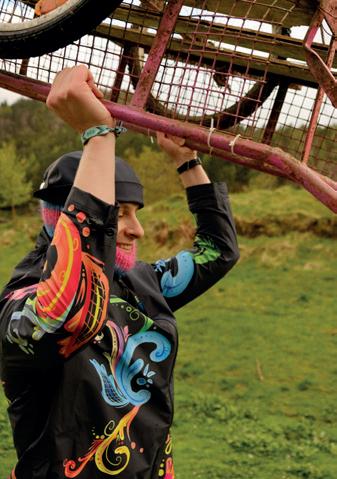
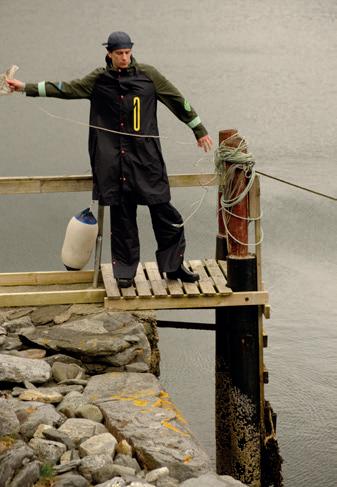
capes inspired by West Coast folklore, the one NODE design process celebrates co-creation and shared stories from near and far. What makes the brand distinctive is its bold and joyful design, an intentional choice as turmoil sweeps across the world. At one NODE, rainwear is designed not only to protect, but also to delight.
With tones inspired by wild berries, seaweed greens, and soft sunbursts, the designs bring warmth and energy to what can otherwise be dreary days. “People need colour right now, especially here in the northern hemisphere,” she says. “Wearing something bright doesn’t only lift your mood, but it can also spark conversation.”
Though firmly rooted in the Nordic countryside, the brand’s reach is expanding rapidly. After showing at CIFF in Copenhagen, one NODE is planning pop-ups in some of Europe’s rainy capitals, aiming to connect with new audiences the colourful rainwear of Selje.
www.onenode.no
Facebook: one NODE
Instagram: @onenode_no
If you want to become part of the growing one NODE community, or know a location where the brand could pop up, reach out to Julia via @onenode_no.
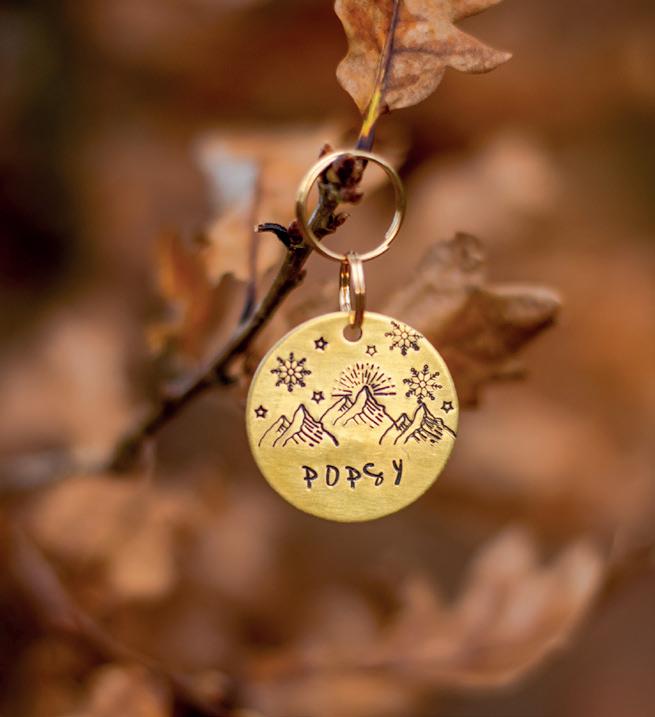
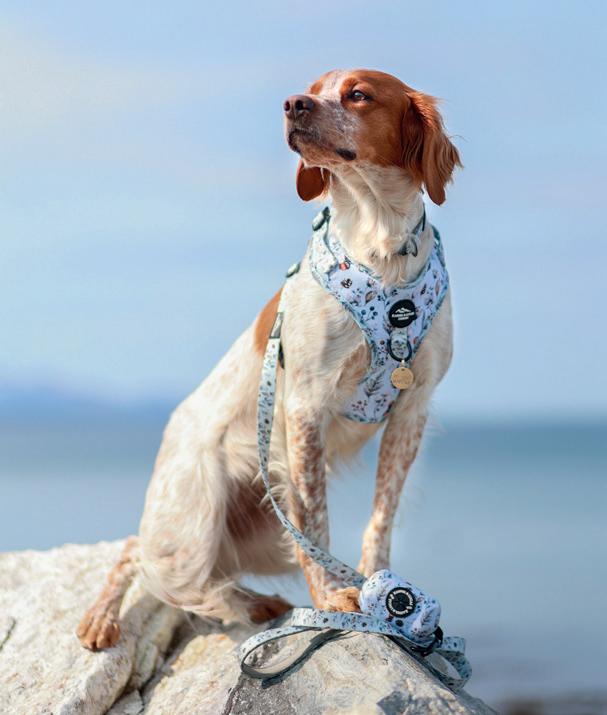
Kasper & Lucas Design: made with our hounds at heart
From beautifully hand-stamped name tags to sturdy, stylish harnesses and leashes, Norwegian company Kasper & Lucas Design offers a curated range of products that combine bark-worthy style with everyday functionality.
By Celina Tran | Photos: Kasper & Lucas Design
If you are lucky enough to have a four-legged pooch that snores by your feet or greets you by the door with a wag of the tail every time you come home, you will know full well why dogs are referred to as man’s best friend. It was this very love for canine companions that birthed Kasper & Lucas Design.
The company’s story begins with two four-legged co-founders: Kasper and Lucas, a pair of curly-haired poodles who trotted into Lise Mette’s life in 2017 and 2019. “We shared photos of them online and started getting questions about their collars and tags,” says Lise Mette. “At the same time, I kept seeing stories about dogs going missing. I wanted to
create something that wasn’t just cute, but could help bring dogs safely home.”
What began with a few name tags for her own dogs has blossomed into a full-
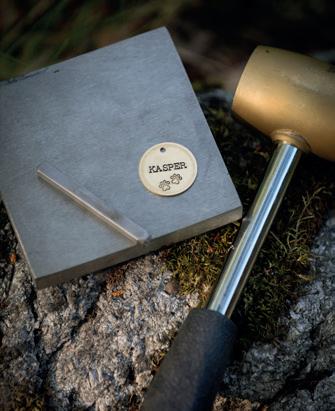
scale online boutique offering over 190 tag designs, uniquely designed harnesses, hand-beaded collars from a Fairtrade project in Kenya, and accessories made to last.
Handmade with intent
The very first product set the tone for everything Kasper & Lucas Design has become. Already from the get-go, each tag was uniquely imprinted using a hammer and metal stamps, making no two exactly alike. It is slow and intimate work, which is precisely the ethos that now runs through the entire brand.
“From idea and design to the complete product, we do most of it ourselves,” says Lise Mette. “When you receive a package from us, it’s been through hands that care and want everything to not just look good, but be right too. We value quality over quantity, and prioritise making thought-through, solid and beautiful
products. Everything we send off should be something we would’ve been proud to use ourselves.”
Safety and functionality are non-negotiable. Harnesses are ergonomic, collars are built to last, and even the poop bag holders are thoughtfully designed. Furthermore, each product is made with intent. In addition to being pleasing to the eye, the product needs to be comfortable for pets to wear as well. In addition, they should feel personal.
“We know that all customers are different. Some want simple designs while others want something special. Some might be looking for a gift for their friend; others might have lost their four-legged best friend and want a memory,” says Lise Mette. “By listening to the stories behind each purchase, the product becomes so much more than just a product.”
At Kasper & Lucas Design, the staff know many of the customers by name and take it into their own hands to follow up each order because they understand how important relationships to our pets truly are. “For us, it’s about making small, but good choices all along the production chain,” she says.
The company also supports a Fairtrade project in Kenya through hand-beaded collars. “A collar made by independent

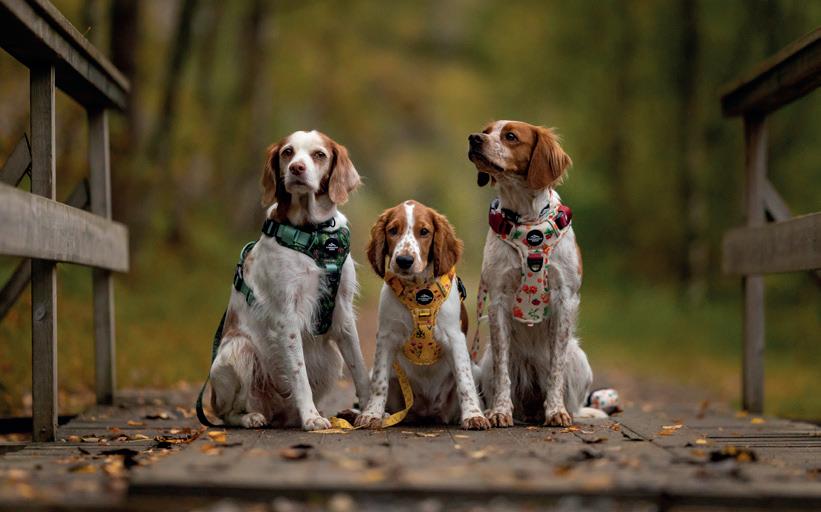
women there is worth so much more to us, not just because it’s beautiful, but because it contributes to something important. For most of these women, this is the only possibility for paid work, and it makes it possible for them to send their loved ones to school, to access health care, and provide food and better housing for their families, all on their own.”
Fundamentally Nordic designs and solutions
One glance at the range, and you will instantly see the deep influence of the Norwegian landscape. Indeed, every design feels quietly Nordic: understated, strong, and deeply connected to nature. Patterns echo pine needles or mountain ridges. Colours reflect rocks, moss and midnight skies. It is a distinctly Scandinavian take on pet design, rooted not in trend but in timelessness.
“We believe that the simple style, Nordic and natural, helps create a sense of peace, also in everyday products.” As the brand continues to grow steadily, both nationally and internationally, it is set on growing sustainably, while remaining personal. Further ahead, it is looking to focus even more on Norwegian design and functional solutions with personality. “We want to be the go-to for quality-conscious dog owners in Norway
and beyond, without losing what makes us special,” says the founder.
In a time of fast fashion and throwaway trends, Kasper & Lucas Design offers a sense of permanence, of care, of connection. “People think they’re buying a dog tag or a harness,” adds Lise Mette, “but what they’re really choosing is to support something slower, more thoughtful – something made by hands that care.”
www.kasperandlucas.com
Facebook: Kasper & Lucas Design Instagram: @kasperandlucasdesign
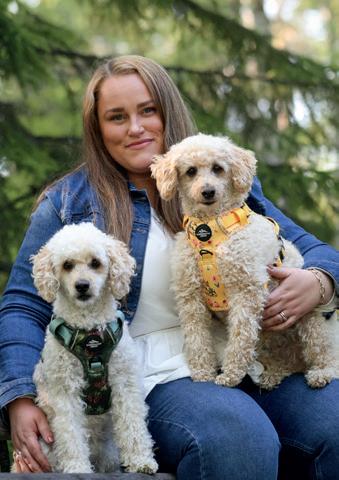
A sanctuary for contemplation and transformation
A place for healing and self-discovery.
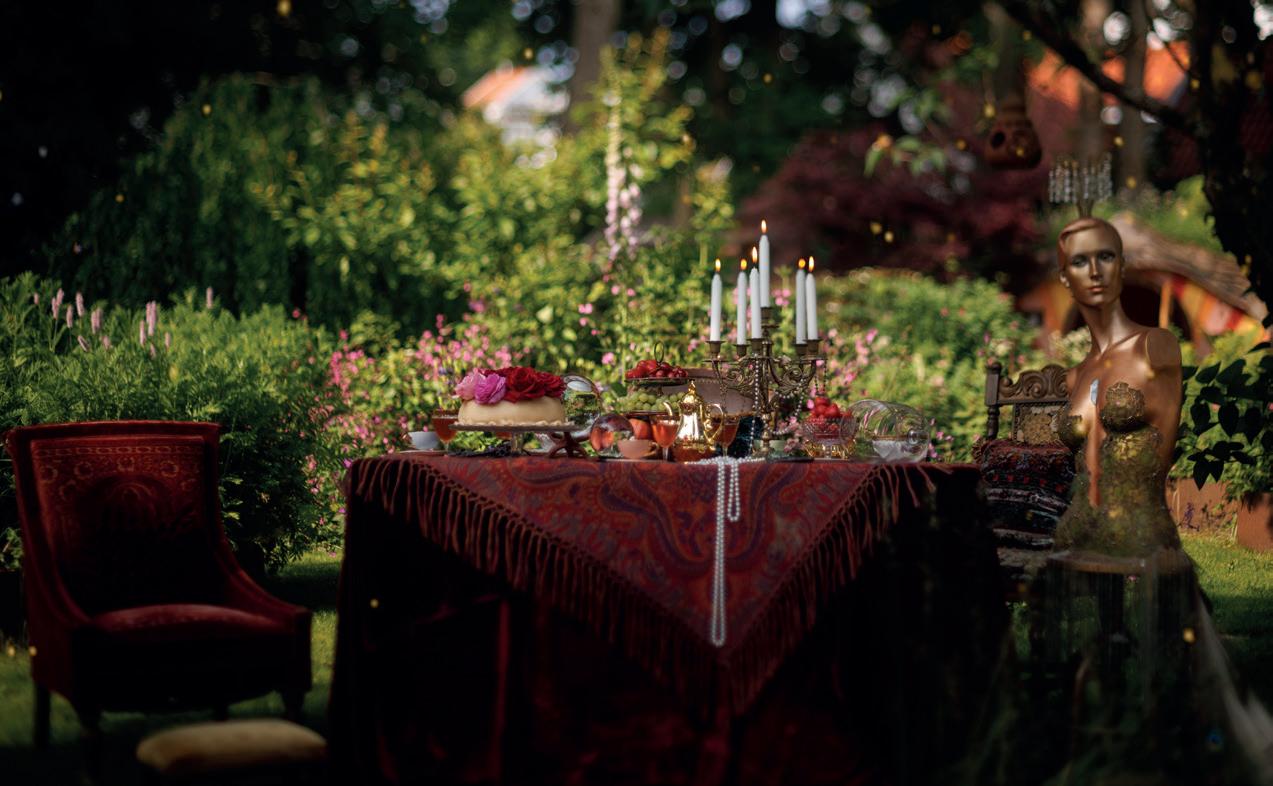
House of Bothania offers immersive healing experiences and authentic journeys into self-discovery.
By Eva-Kristin U. Pedersen | Photos: Ole Harestad
A short, ten-minute walk from the centre of Stavanger, on Norway’s southwestern coast, there is a special garden waiting to be discovered. Or rather, a garden and a house, together forming a sanctuary that invites you on a journey of exploration and healing. It is a place where your senses are awakened and you are free to take deep, restorative breaths. This is House of Bothania.
“My husband and I bought the property in 2017 as a creative work location. I soon felt drawn to do something with the outside area as well,” says Silje Engelstrand Natland, founder and creative director at House of Bothania.
Shortly after, Natland had a vision. She saw seven distinct realms, each symbolising a phase in the soul’s evolution. These became the foundation for The Alchemist
Garden, a place where the outer landscape mirrors the inner journey. “It took five years to establish the foundation and structure of the garden, but now it reflects the vision I had,” Natland adds.
She explains that the garden is based on holistic and therapeutic principles and it changes with the seasons. “The garden is ever evolving, ever expanding, and no
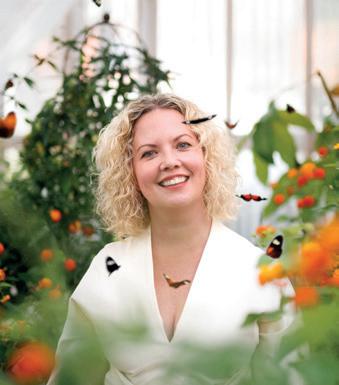
matter when you visit, it will always have something meaningful to offer,” she says.
Holistic treatments
At its heart, House of Bothania is a place where inner and outer landscapes meet; a sanctuary designed to support deep transformation, reconnection and healing.
The Alchemist Garden, however, is just one part of the broader House of Bothania experience. The villa itself, along with the restored stables, is used for holistic healing treatments and for group activities such as creative sessions, coaching gatherings and intimate dinners. Twice a year or so, Natland also hosts retreats on the property.
In addition to the villa and the garden, House of Bothania includes a writing studio and, last but not least, the Butterfly House. This latter symbolises one of the deeper purposes of House of Bothania: transformation. The metamorphosis of caterpillars into tropical butterflies, one of nature’s most profound and beautiful
changes, mirrors a personal healing journey. In the Butterfly House, you can witness this natural miracle unfold up close.
“We recently launched an Alchemist Garden Experience, offering guided tours for groups of up to 20 people through both the Alchemist Garden and the Butterfly House,” Natland says, adding that the experience is available approximately once a month, but that private tours may be organised upon request.
Healing treatments
When it comes to the treatments offered at House of Bothania, Natland explains that they are healing sessions rooted in a holistic, intuitive approach. Each treatment is tailored to the individual, responding to their specific needs and where they are on their personal journey.
In-house perfumes, oils and elixirs are an integral part of the treatments. Available both on-site and through an online shop, these handcrafted, bioenergetic and cruelty-free products are designed to support emotional and energetic healing. “Our products are 100 per cent developed locally,” Natland underlines.
She explains that all products can also be used on their own, whether as a mist to refresh and change energy, as bath oil, or as perfume applied to pulse points or areas that cause pain or problems.
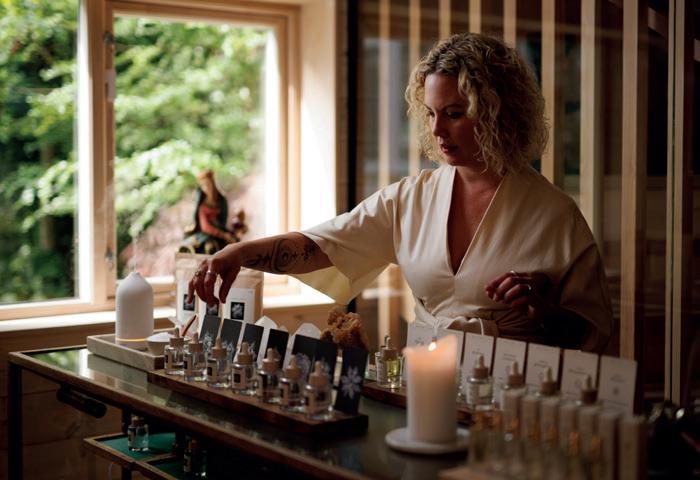
A family business
While Engelstrand is the founder and guiding force behind House of Bothania, it is very much a family effort. “My husband is both my greatest supporter and the one who always challenges me to go beyond my limitations,” she says.
Natland’s daughter is also very much involved in most aspects of the work. She is completing a training in embodied yoga and somatics, which will add another layer of depth to what House of Bothania offers. “She is my right hand and makes this a true family adventure,” Natland enthuses.
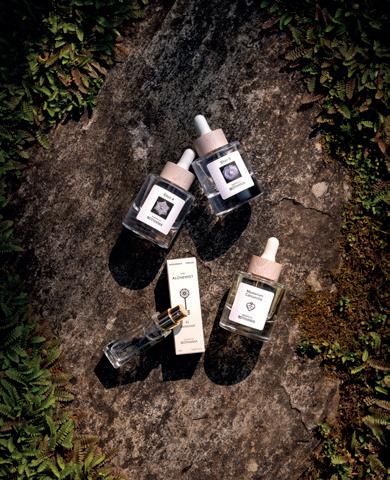
The customer base at House of Bothania is international. “I’ve travelled a lot and most of my network is international, so it feels natural to engage with a global audience. But I would love to connect more with the local community as well, and invite more Norwegians to discover what this place can offer,” Natland explains, adding; “Ours is a unique place. It’s an attraction for international visitors, but also a treasure for those close by.”
www.houseofbothania.com Facebook: House of Bothania Instagram: @houseofbothania
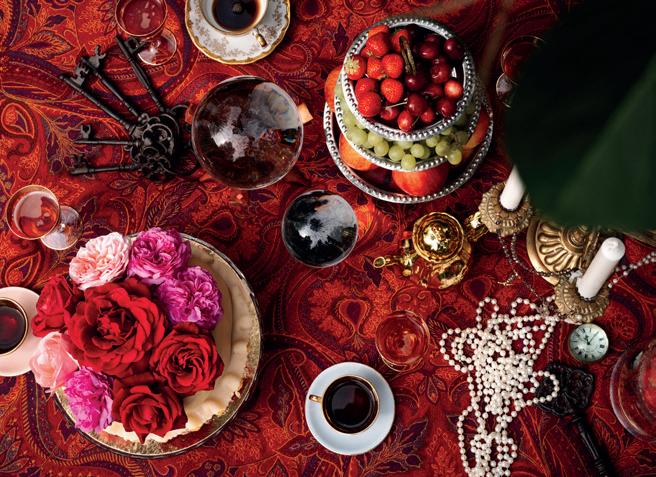
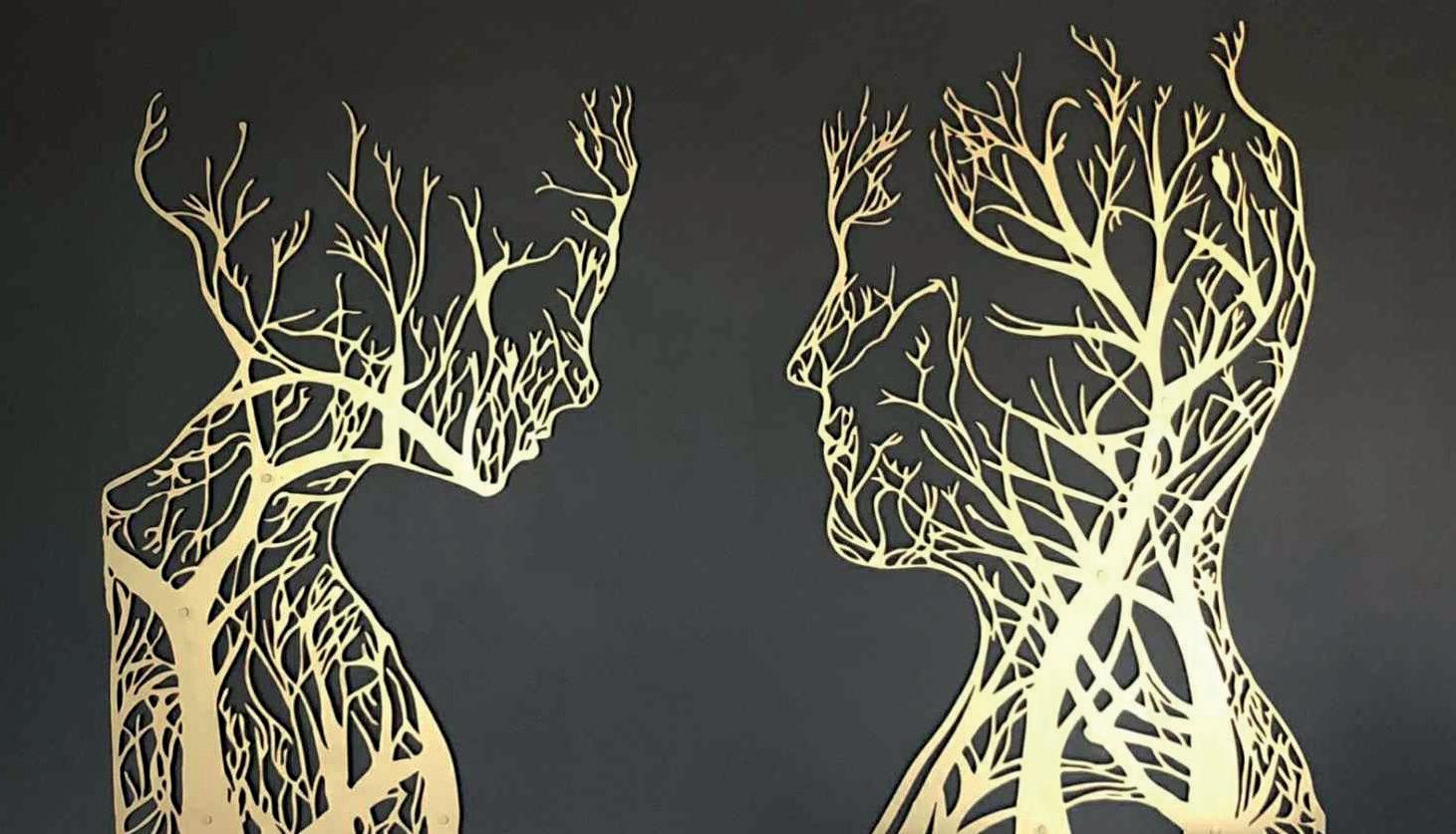
Lillehammer Laserdesign: Norwegian design with a personal touch
From decorative details in amusement parks to technical components for industry, Lillehammer Laserdesign is a hobby-product turned family-business that produce everything from awards and signage to bespoke designs.
By Celina Tran | Photos: Lillehammer Laserdesign
Based in Norway, Lillehammer Laserdesign has carved out a unique niche in the country’s creative landscape. What began as a small family experiment in a garage has grown into a modern design and production company.
“We bought a small CNC machine in 2013, just to test out some engraving and cutting at home in the garage,” says Stian Andre Furuheim. “We immediately got a taste for more.” Furuheim runs the business with his father, and his two sisters also help. “The benefit of being a family company is that we know each other well and play to each other’s strengths. That
creates a sense of security internally, but also for our customers,” he says.
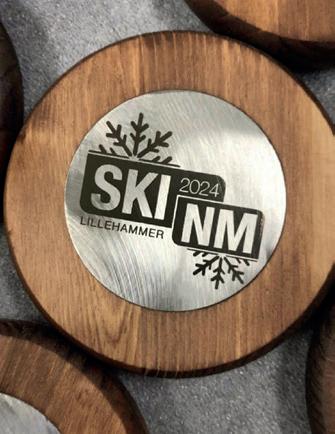
The journey from the garage to a fully equipped workshop has involved continuous investment and a genuine interest in new technology. After starting with the hobby CNC machine in 2013, the family invested in a larger CNC router in 2018, followed by a CO₂ laser in 2019. In 2021, they finally decided to take the step of founding Lillehammer Laserdesign AS.
“That’s when we also bought our fibre laser, which cuts steel with high precision. That opened up a lot of new opportunities for us,” Furuheim explains.
In 2022, they expanded further with a machine capable of engraving on most types of steel, perfect for signs, trophies, technical parts and intricate branding products. The family company can now rely on a loyal customer base from both industry and the private market, and today Lillehammer Laserdesign offers a
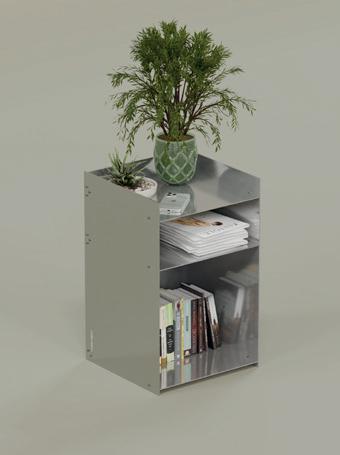
wide range of products and services in laser cutting, engraving and design; in steel, wood, acrylic and plastic.
Making big impacts with small touches
With Lillehammer Laserdesign, you get a combination of modern technology and a personal approach, which allows them to be both flexible and creative in their work. “We love a challenge! Often, it’s about sitting down with the customer, thinking creatively together and finding solutions that work,” says Furuheim. “We’re small enough to be agile, but we have the equipment to deliver high quality on both large and small orders. We take the time to really understand the customer’s needs, and many appreciate that we follow up through the whole process from idea to finished product.”
Among clients is the Olympic Park in Lillehammer, which ordered reception signs from Lillehammer Laserdesign. They also produced 1,300 participant trophies for


the Norwegian Championship Week 2024, a large sports event where multiple disciplines are gathered in the same week. “That was a big job, but incredibly fun to be part of something that’s awarded to so many athletes,” Furuheim adds. Another exciting project was designing and making fire pits in Corten steel for Norway’s Nicest Craftsperson, commissioned by the Norwegian Building Industry. “The fire pits are decorated with logos and custom designs, and it was great fun to help create trophies that really stand out.”
The project that the team is the proudest of, however, is its work for the beloved Hunderfossen, known by most Norwegian children as a magical adventure
park in Lillehammer, where fun, tradition, and trolls meet. Lillehammer Laserdesign had a special project for the Musikkfabrikken (The Music Factory). “We got to help make speaker grilles in 6-millimetre steel, shaped with musical notes, that are installed in the floor of the attraction, as well as decorative notes in MDF that are mounted around the restaurant. It was fun to contribute to something completely new.”
Later, Musikkfabrikken won first prize for Best Attraction Limited Budget in an international competition, competing against amusement parks from all over the world. The award is given to attractions built for under NOK 100 million. “It’s special to know that something we made here in Lillehammer is part of an award-winning experience,” says Furuheim.
As the company moves into the future, the family wishes to grow the business in the fields of industry design and interior design, while always keeping an eye out for new technology and sustainable production methods. Furuheim adds; “We see great potential in component production, industrial marking and custom designs for interiors. We’d like to become the preferred partner for anyone who wants quality and bespoke solutions.”
www.lhld.no
Facebook: Lillehammer Laserdesign AS Instagram: @lillehammerlaserdesign


Innovative solutions for modern spaces
Stavanger-based Farstad Profilsystemer has a long and proud family connection to the glass trade. Delivering locally produced glass and aluminium solutions of the highest standard for homes and businesses across Norway, the company is committed to quality, sustainability, and craftsmanship.
By Maria Sødal Vole | Photos: Farstad Profilsystemer
Farstad Profilsystemer is built on generations of experience in glass artisanry. Manager Mette Farstad has a Master of Science in Economics and Business Administration from the Norwegian School of Economics, and took over running the business in 2016. Her father, Rune Olav Farstad, was educated as a glazier – the youngest in the country to achieve the certification – and according to Mette, he may still hold that title.
Taking over his father’s glass company in the late 1970s, Rune was keen to cultivate innovation in the industry. Farstad Profilsystemer was established in 1991, and the business evolved over time, moving away from the typical window in-
stallations of traditional glazing companies and toward larger installations such as glass garden rooms and glass walls for office spaces.
Led by Rune, the company developed innovative new profile systems in glass and aluminium, which suppliers across Norway quickly took an interest in. Today, an extensive selection of more than 300 different profiles is available, and patented solutions from Farstad Profilsystemer are delivered by some 30 distributors around the country.
While Rune has now stepped back from day-to-day operations, he remains involved in aspects of the business, such
as product development. “Innovation is at the core of what we do,” Mette says. “Our solutions should be flexible and solid, and they should be well-adapted to the individual customer.”
Farstad Profilsystemer benefits from a multidisciplinary team of highly skilled professionals, including glaziers, building engineers, and technical experts. The dynamic team combines decades of experience with contemporary design sensibilities, creating spaces that are both practical and attractive.
“We’re like a big family. Several of our employees have been with us for a long time and trained with my father, so they feel ownership and want to continue building on our solid foundations,” Mette says. “Our team has creative drive and embodies the innovative spirit – we want to be the best at what we do and continue to find new uses for these materials.”
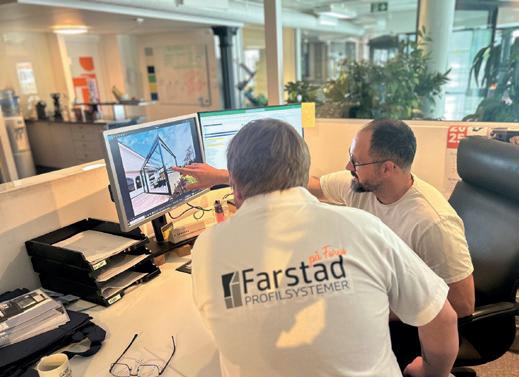
Bespoke solutions built to last
Farstad Profilsystemer does not believe in the one-size-fits-all approach. Specialising in bespoke solutions perfectly tailored to clients’ needs and wishes, as well as structural considerations, the company is committed to helping customers bring their vision to life.
“There are no standardised solutions; everything is made specifically for each client using our own profiles,” Mette explains. “Since we have our own production and fully stocked warehouse, we’re able to deliver what clients want with a quick turnaround – no waiting for months for materials to be delivered.”
Delivering a range of indoor and outdoor solutions, the team believes in smart, aesthetically pleasing solutions that are made to last. Employing a patented click
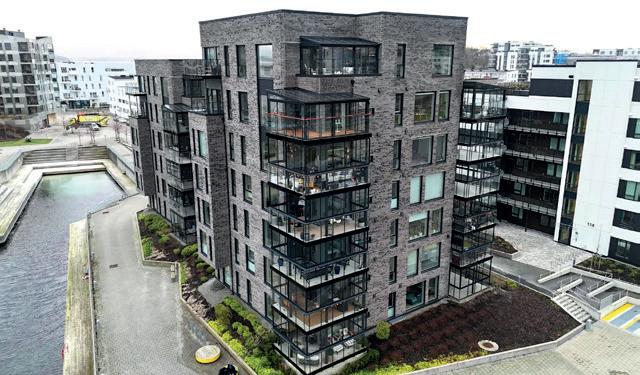
system that ensures clean lines, straight edges, and a sleek look, Farstad Profilsystemer is known for its commitment to innovation and high standards.
With a long and proud history that informs every aspect of its operations, the team is dedicated to quality and precision. “We’ve been delivering premium solutions to private and commercial customers for 40 years and know what will work best within a space, and our customers tend to appreciate our expertise. We will always adjust and adapt our plans to best suit the client’s needs,” Mette says. “A lot of people appreciate that these are sustainable, environmentally friendly materials that are durable and require minimal maintenance. Customers also value that they can drop by our large showroom, to see and touch the various solutions, and speak to members of our team.”
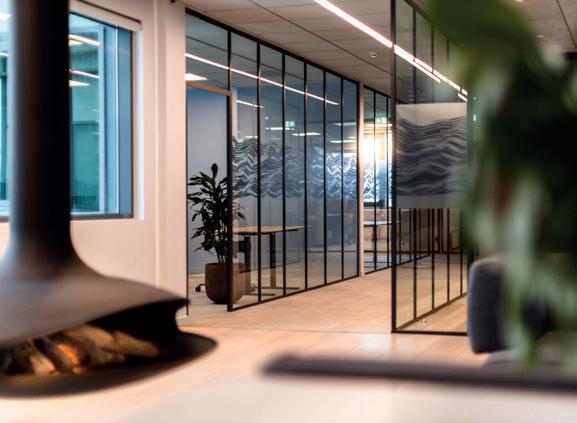
Farstad Profilsystemer’s glass and aluminium components are all manufactured locally at the factory located at Forus in Stavanger, which is one of Norway’s largest industrial areas. Alongside working directly with client projects for homes and commercial spaces, the company also collaborates with local distributors across the country.
“Our company is locally rooted with strong ties to the community in Stavanger, but with a broader focus,” Mette says. “We want to be able to supply our high-quality solutions across the country and are happy to have long-term working relationships with excellent local distributors nationwide.”
www.farstadprofilsystemer.no
Facebook: Farstad ProfilsystemerFarstad på Forus

Rockz: wearable beauty from Norway’s south coast
Established by Jennifer Henriksen in 2024, Rockz has fast become a firm favourite on the Norwegian jewellery scene. Dedicated to exceptional quality and timeless design, the small brand’s pieces can enhance any outfit – whether you are dressing up or down.
By Maria Sødal Vole | Photos: Rockz
Rockz is built on the simple concept of high-quality materials combined with attention to detail and classic design. Inspired by seasonal colour palettes and current fashion trends, Henriksen creates exclusive jewellery pieces that elevate looks for special occasions as well as everyday outfits.
“I’m focused on quality and only use stones and materials that meet my standards,” says Henriksen. “I think of my pieces as eye candy – they look lovely and feel good to wear.”
Henriksen carefully crafts stylish, timeless bracelets and necklaces with the use of hand-picked gemstone beads, freshwater pearls, and other decorative elements. She says that jewellery in pink
and white jade, green agate and honey calcite are particularly popular in the summer season.
Rockz is sold at a number of shops and jewellers across Norway’s beautiful south coast, notably at the groundbreaking art museum Kunstsilo in Kristiansand and at Cactus, a gorgeous gem of a shop in the centre of Mandal. The brand also made the official bracelet for the much-loved beach festival Palmesus last year.
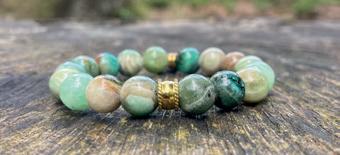
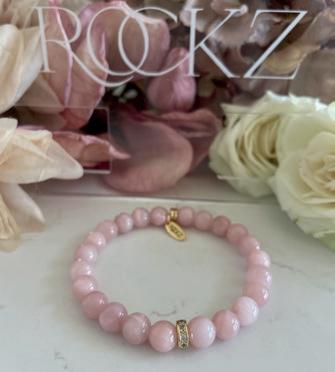
“The journey with Rockz has been fantastic so far,” Henriksen says. “I have a lot of returning customers which I’m so grateful for. It’s fun and rewarding to know that people enjoy my jewellery!”
www.rockz.no
Facebook: Rockz
Instagram: @rockz.no

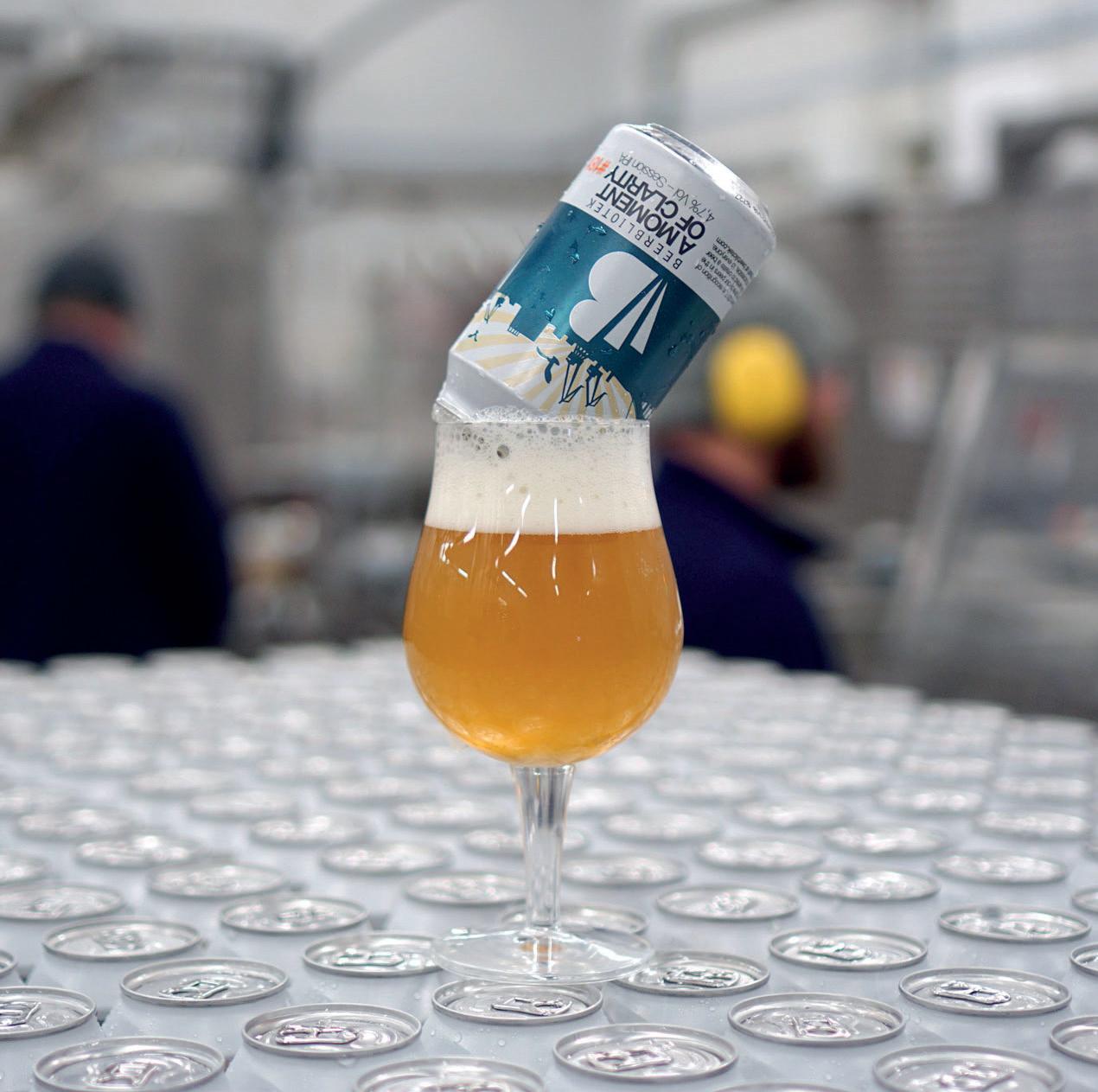
Gothenburg’s vibrant beer scene
Some of the world’s best breweries are based in the Gothenburg area. Here, the likes of Poppels, Beerbliotek, Stigbergets and Dugges brew nothing but outstanding beer. We take a closer look at the city’s bubbling beer scene – this is local beer at its best.
By Malin Norman
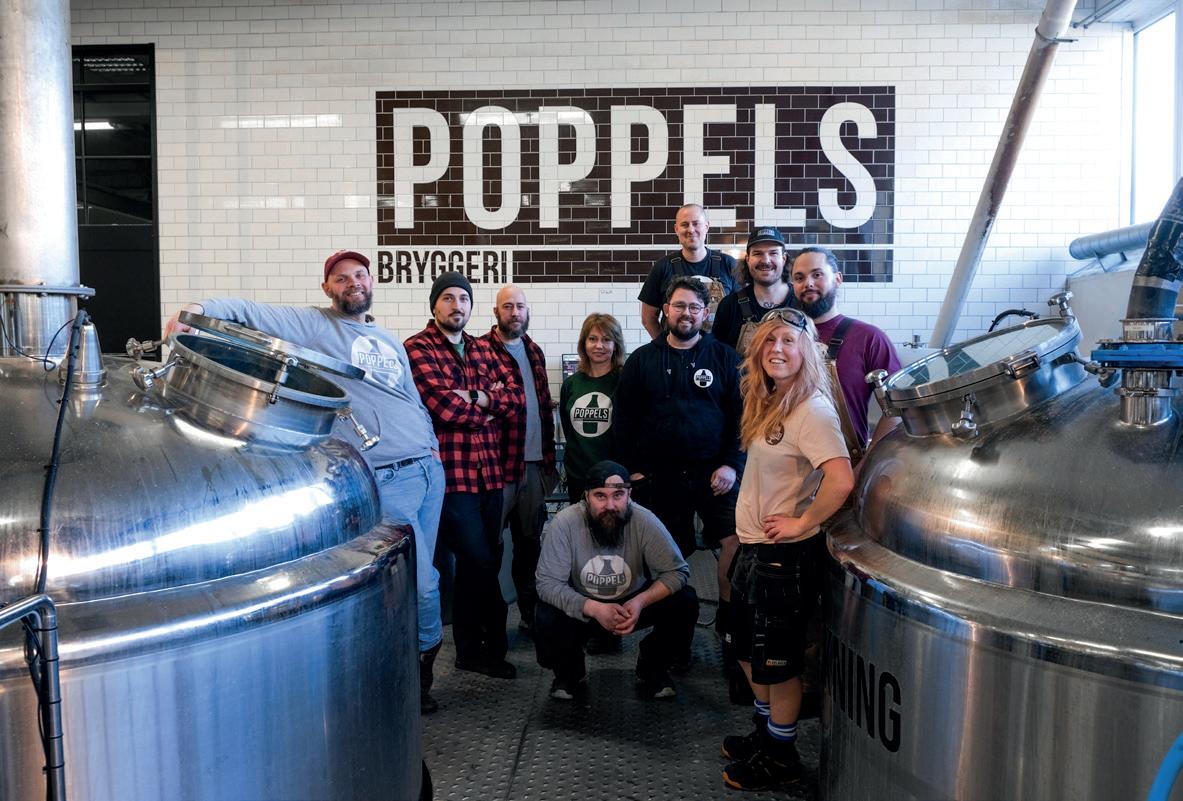
Gothenburg has a long-standing brewing tradition. Back when the city was founded in 1621, a number of breweries were located here. In the 16th and 17th centuries, brewers like George Carnegie laid the foundations for the city’s brewing industry. And during the days of the East India Company in the 18th century, much of the beer was exported around the world.
The beginning of a new era in Gothenburg's beer history awaited in the early 2000s, with a renaissance for smallscale, local craft breweries. According to the official visitors guide goteborg.com, there are now around 40 breweries in the area, many of which also have taprooms – the perfect place to taste the beer fresh and get a feel for the craft beer vibe.
Sweden’s beer capital
“Gothenburg has a fantastic range of craft beer and is even referred to as
Sweden’s beer capital, which is a fair description,” says Anders Storm, marketing manager at Poppels Bryggeri. “Many local breweries offer incredibly high quality and have a solid reputation in Sweden and abroad.”
Poppels is one of the city’s most successful breweries and, since the outset, the team has worked hard to make craft beer more easily accessible; for instance,
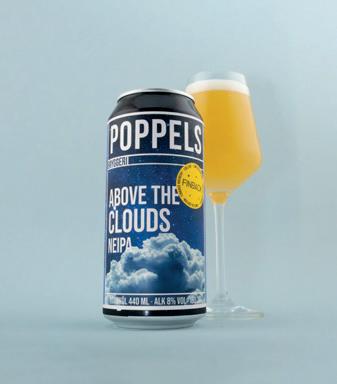
with style descriptions, plus beer and food pairings on the beer labels. “If you buy Poppels, you know that the beer will be good,” says Storm. “We also have an amazing community with over 5,000 shareholders, who do great work as ambassadors for the brand.”
Located in Jonsered, Poppels has also opened an additional venue, a restaurant called Citybryggeri. The area around Ringön is well worth a visit, according to Storm. “In addition to our restaurant, you will find, for instance, Stigbergets, Vega Bryggeri, Ivans Pilsnerbar and Två Små Grisar here – all superb breweries with taprooms.”
On 4 August, Poppels releases its new beer Above the Clouds NEIPA, a hoppy and hazy IPA, in collaboration with Finback Brewery from New York. Other exciting news is the berry collection on
6 September, where people can leave berries from their gardens at the brewery. “Later, we’ll use the berries to brew a beer, and everyone who donated berries will have their name added to the label,” says Storm. “In the past, the release has nearly caused fights between the berry donators, who wanted to get their hands on a bottle. Naturally, we don’t want any fighting, but we’re hoping for a lot of enthusiasm!”
Beer bus and collaborations
“Gothenburg’s beer scene is bustling with life thanks to an unusually engaged community,” agrees Richard Bull, co-founder and managing director at Beerbliotek. “Breweries, bars, beer enthusiasts and event organisers cooperate to create something bigger – together.”
An example of the close-knit community spirit is the free ‘hop-on, hop-off' bus service on Saturdays, a project between Beerbliotek, Stigbergets, Vega, Spike and Poppels. “The bus takes you between our taprooms, so it’s a great way for locals and visitors to discover our lively beer scene.”
Brewing in an industrial area in Majorna, the six friends who run Beerbliotek are driven by innovation and a passion for experimenting. Something is always happening here, with new beer releases, collaborations and events.
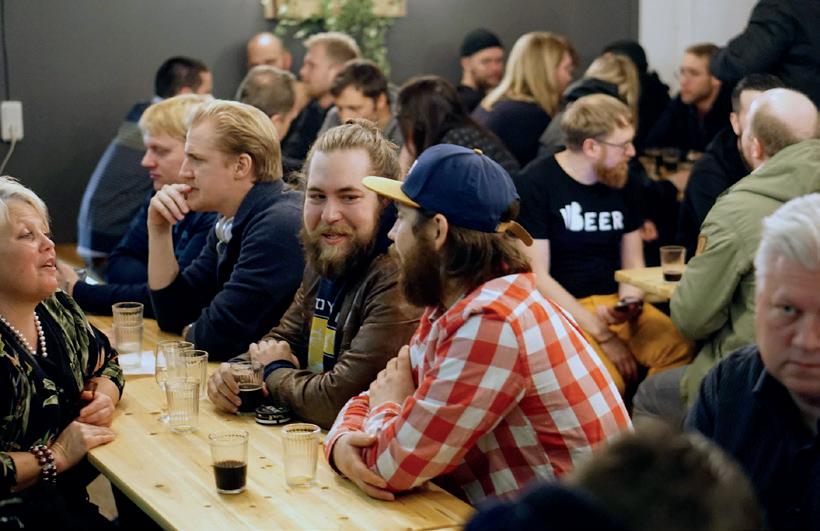
“We love to push the boundaries, constantly striving to be better and to brew a broad spectrum of exciting beers,” says Bull. “Right now, we’re proud of our Nitro Stout, a collaboration with The Red Lion in Gothenburg. We’ve managed to create a well-balanced stout with character, which is not easy. It stands out, technically as well as in flavour.”
Old rockers and nurses
Also at the forefront of the city’s beer culture is Dugges Bryggeri, founded by
Mikale Dugge Engström in 2005. The brewery is located in Landvetter, on the outskirts of the city, and has a taproom called Dugges Pils in Linnéstaden. With over one million ratings on Untappd, the app for finding and rating beers, its beers are no doubt loved by consumers. One of the bestsellers is Tropic Thunder, a sour fruit ale that tastes like a popsicle – a modern classic.
Another trailblazer in local craft beer is Electric Nurse, started in 2012 when a
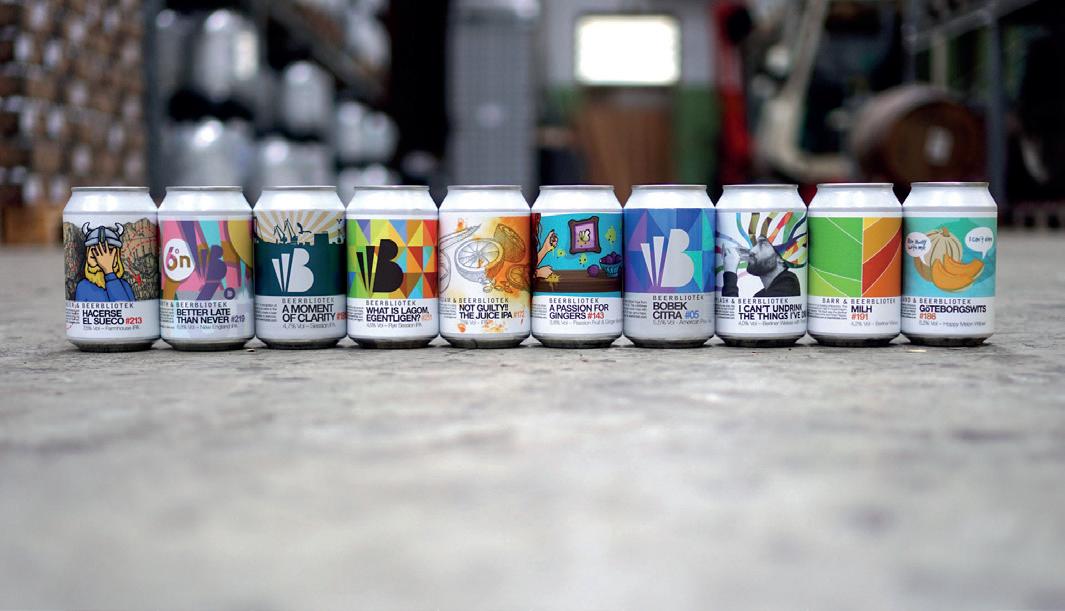
nurse (Ida Engström) and an electrician (Peter Robertsson) met and bonded over their love for beer. This brewery is also based in Landvetter, with its beer available at many beer bars in the city.
There is more! Odd Island Brewing in Lindome, south of Gothenburg, was started in 2016 by Daniel Svensson and Peter Iwers from the metal band In Flames, when the rockers decided to leave touring life and focus on brewing; anyone is invited to check out the tap room, which is open Friday and Saturday. And small brewery O/O Brewing, named after its founders Olle and Olof, is a must too, with innovative flavours and cool labels. This brewery has its own bar, O/O Bar, on Bangatan 22 near Masthugget Church. And the list goes on.
Highly anticipated All In Beerfest
In addition to its many breweries and taprooms, the city has a tradition of hosting great beer festivals, such as GBG Beer
Week and Gothenburg Beer & Whisky Fair (next edition on 17-18 April 2026), as well as the popular All In Beerfest, which is considered one of Sweden’s best beer
festivals. Started by local brewery All In Brewing in 2013, it attracts many beer lovers that have the same passion for beer as the brewers.
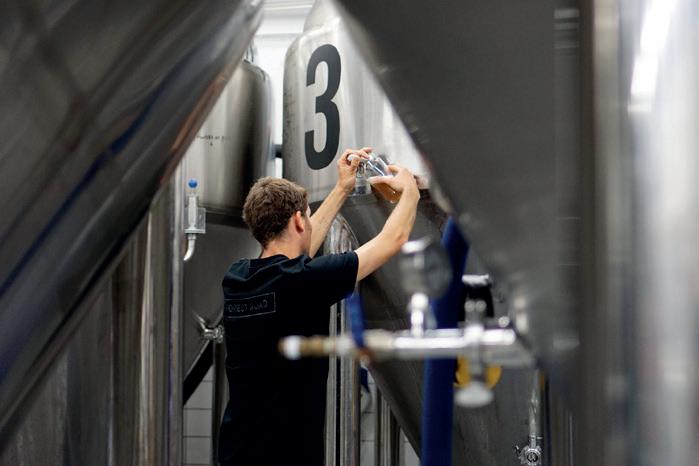
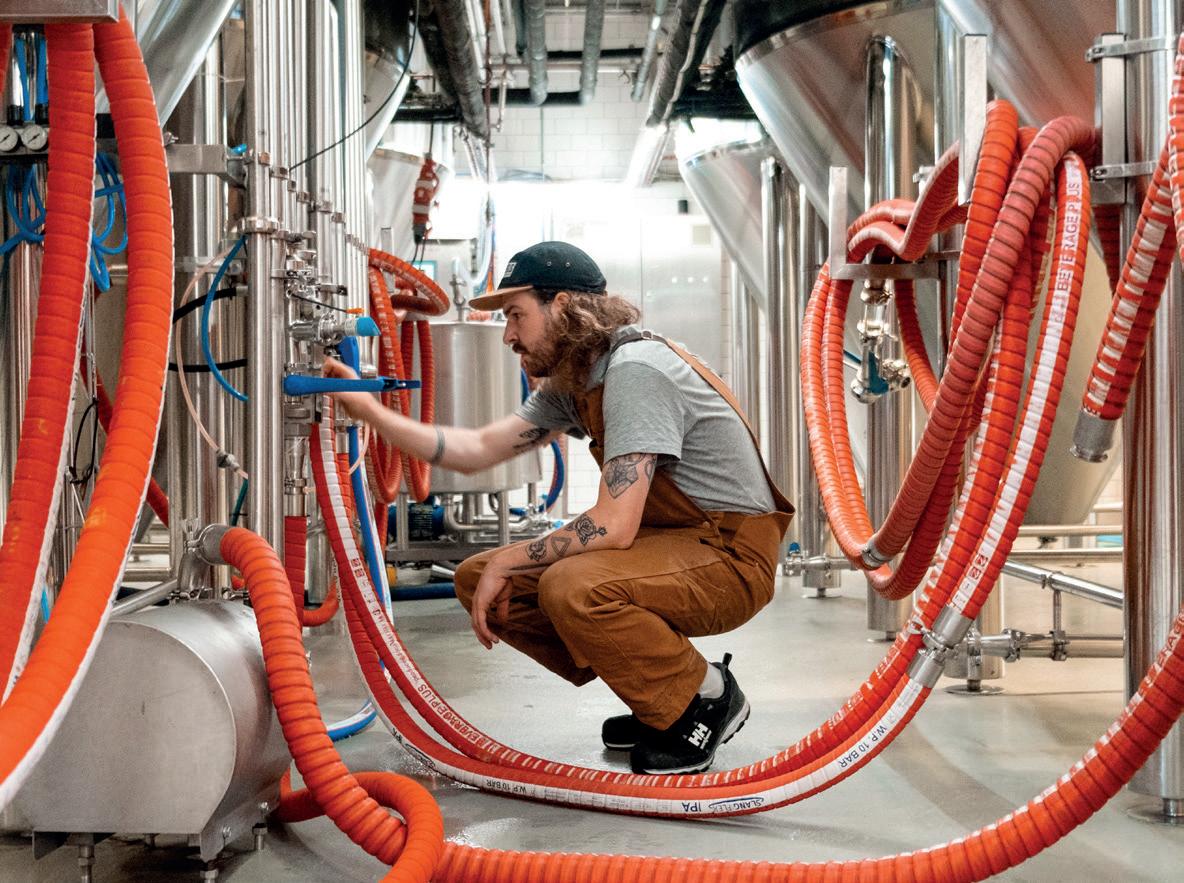
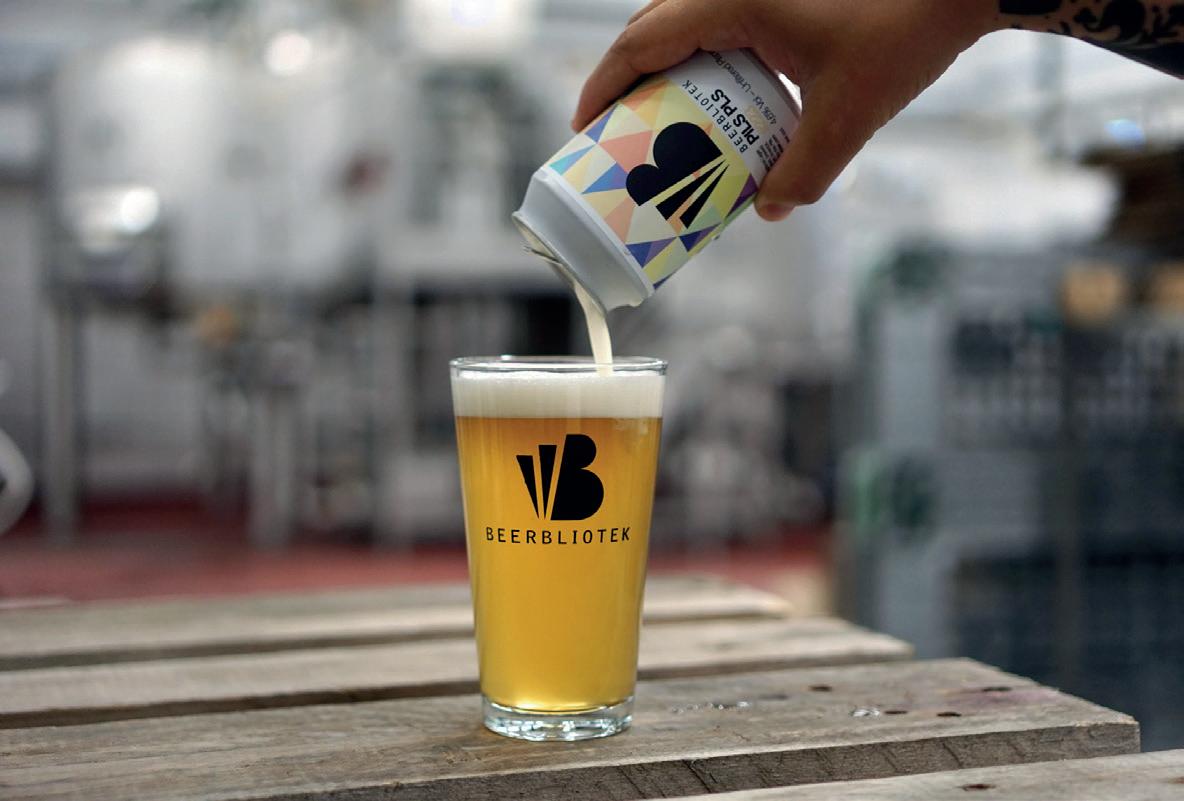
This year’s edition of All In Beerfest takes place 7-8 November at Världskulturmuséet (The Museum of World Culture) and is bound to be an unforgettable event with nothing but the best beer. “All In Beerfest is a highlight of the year,” confirms Storm at Beerbliotek. “We have just taken over the restaurant at Världskulturmuséet, which opens up to a new platform where we can create outstanding events and experiences.”
If you love beer, there is plenty to explore and look forward to in Gothenburg. Thanks to its heritage, the many pioneering and world-class breweries, and a growing craft beer culture, the city has certainly earned its reputation as Sweden’s beer capital!
For more tips on what to see and do in Gothenburg, you can check out goteborg.com
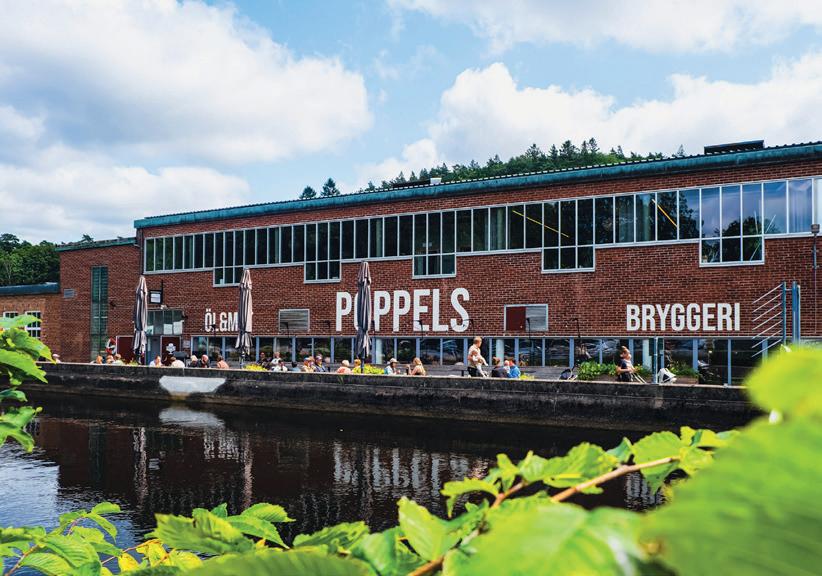
SpecialTheme: TOPAUTUMNEXPERIENCES INSWEDEN
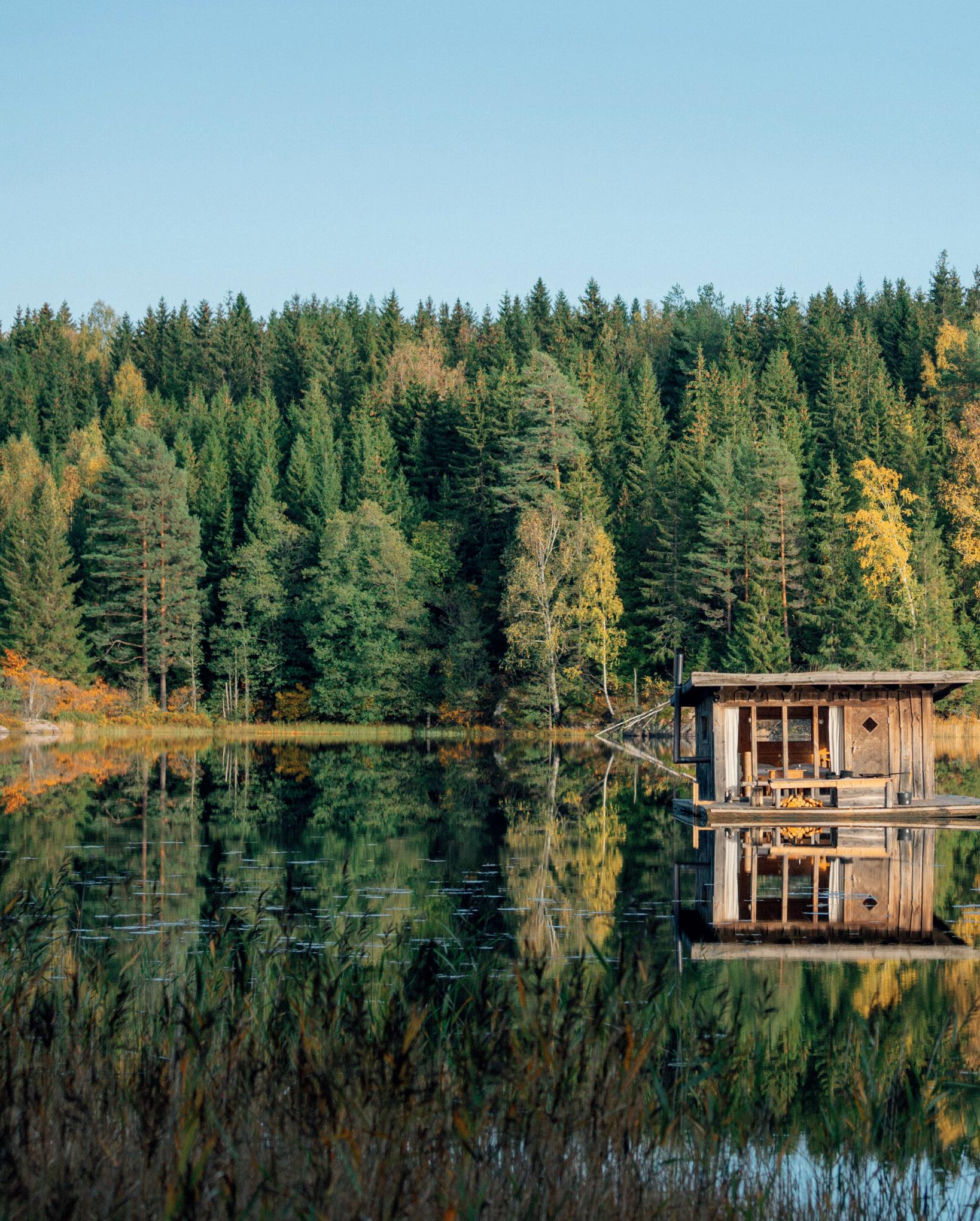
Top autumn experiences in Sweden
With milder temperatures, a sense of calm, and shifting scenery with vibrant yellow, orange and red leaves as a backdrop, autumn is the ideal time to visit Sweden. Get inspired by this guide to the top autumn experiences in Sweden – from beautiful landscapes to cultural and culinary discoveries.
By Malin Norman
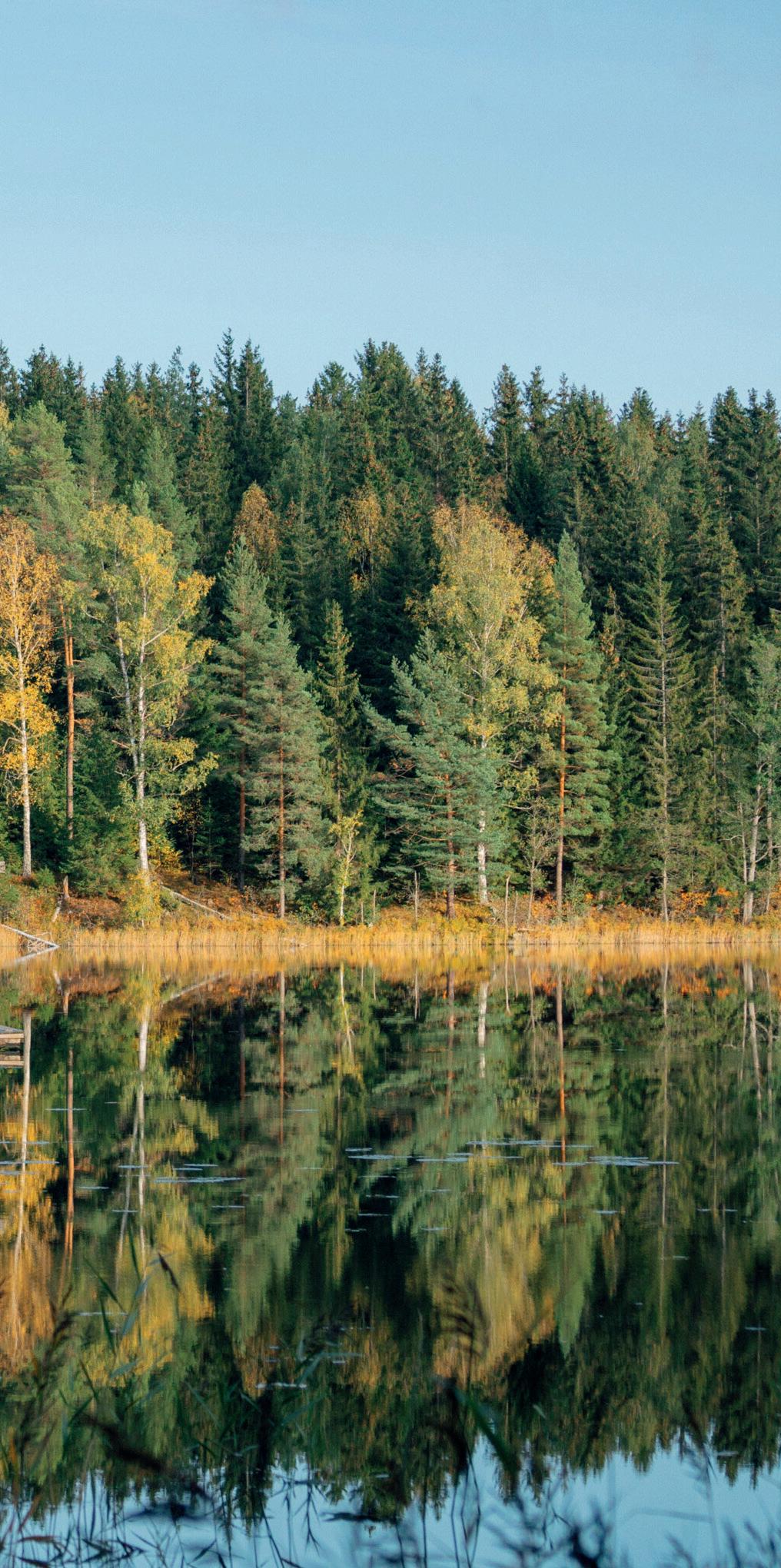
The autumn air is crisp, temperatures are mild, and the crowds have pretty much left. This is an excellent time for outdoor activities in Sweden, from kayaking to biking and even wild swimming. Nature opens its pantry, the forests are a berry heaven, and you will find blueberries, lingonberries and wild raspberries, as well as mushrooms.
According to Visit Sweden, hiking in Sweden during autumn is a must as the landscape is more beautiful than ever and the mosquitoes have finally disappeared. For many, Swedish Lapland is the place to go – it might even be on your bucket list? If lucky enough, you can catch the first Northern Lights on a clear night, without the cold and the snow. Apparently, the best time is between September and late March, but the Northern Lights can be seen as early as August.
Ranging from day hikes with a train station as the starting point to more challenging routes, there are trails for every taste. Top hiking trails include The King’s Trail (Kungsleden), Sörmlandsleden, and The Emigrant Trail (Utvandrarleden), but there are many more.

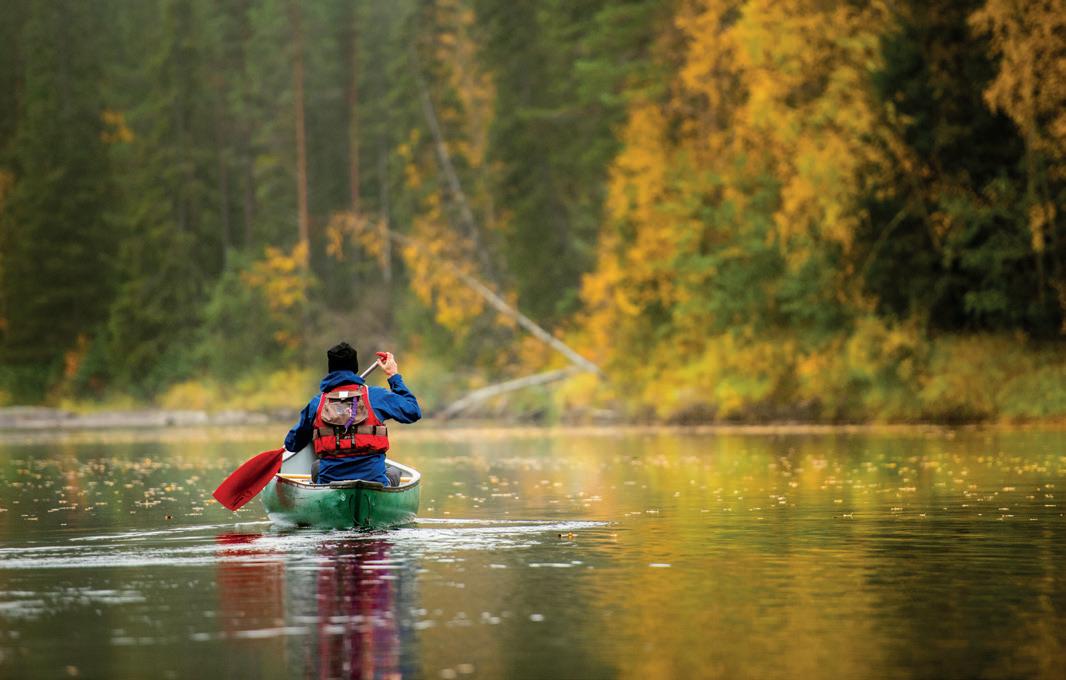
Another unforgettable experience is to hike along the new Stockholm Archipelago Trail, a 270km hiking trail over 20 islands in the Stockholm Archipelago –from Arholma in the north to Landsort in the south.
Did you know that mid-August to the end of September is actually called The Magic Season in the archipelago? This is because the water temperature is about two weeks behind the mainland, so spring is colder but autumn is milder, like an extension of summer. A beautiful calm rolls in, too, once the city folks have returned home after their summer holidays.
Autumn highlights for foodies
Foodies are in for a treat, with autumn being the ideal season for exploration and events. The beginning of August marks the start of crayfish-party season, which we cover in our special feature in this issue, with insider’s tips, whilst the third Thursday of August serves as the premiere of sorts for fermented herring –a feast of the infamous smelly fish called surströmming.
For lobster fans, the first Monday after 20 September is when the lobster harvesting season begins. For the intrepid, the west coast of Sweden offers a range of seafood safaris, but you can also join a local fishing boat to catch oysters, mussels and crayfish, or to harvest seaweed.
The Swedish Cheese Festival is well worth checking out too. A homage to fromage, it gathers thousands of cheese
lovers every year. Taking place 10-11 October in Gothenburg, the festival promises celebrity chefs competing in making the best cheese dishes, as well as plenty to taste on-site and to bring home. There is even a cheese safari, where you can learn and discover even more.
Truffle lovers should head to Gotland. The island organises Gotland Truffle Month in mid-October, which culminates


in Gotland Truffle Festival, 14-16 November. The festival promises seminars on truffles, a truffle market, truffle hunts, a truffle ceremony, and special truffle menus at many restaurants in Visby.
Do you crave more for the tastebuds?
Head to Stockholm Food & Wine, 7-9 November. And if you have a sweet tooth, the pastry and chocolate festival Bakoch Chokladfestivalen runs in parallel. Come and taste, smell, talk, listen and learn at one of the Nordics’ largest combined food and beverage fairs.
Romantic getaways and cosy fika Autumn is also the start of the cosy season, when Swedes light up their homes
with tea lights and meet for fika in cafés as the darkness falls outside, often with a cinnamon bun to devour. The Swedish Cinnamon Bun Day (Kanelbullens dag) is celebrated nationwide on 4 October. Why not book a city break and explore the many coffee shops in Stockholm, Gothenburg and Malmö?
For the ultimate romantic stay, head to a castle for the weekend. Whether you’re looking for a premium getaway or a relaxing break in the countryside, Sweden has a castle for every occasion. The country’s castle hotels and manor houses are often situated in idyllic locations, close to lakesides, woodlands or golf courses, offering a wonderful escape
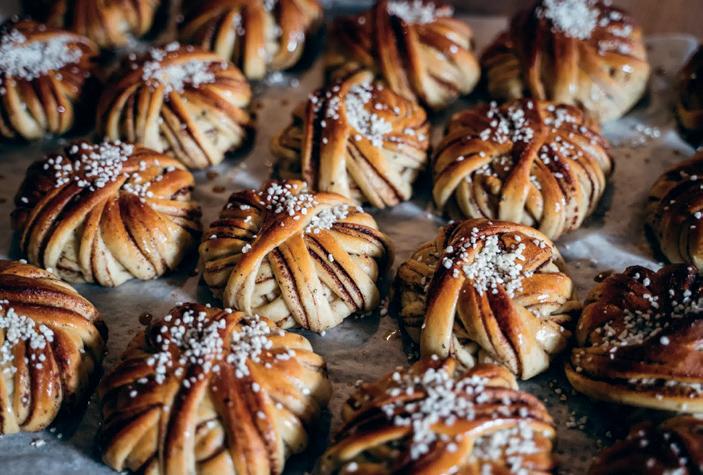

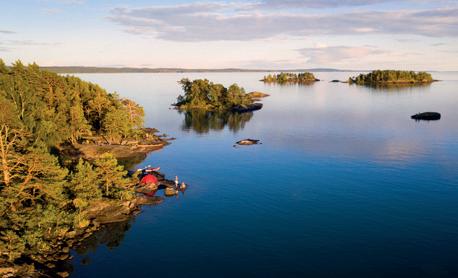
Photo: Roger Borgelid, imagebank.sweden.se
from the hustle and bustle of city life. You can even spend the night in a haunted manor house, if you dare.
For more inspiration on what to do in Sweden, see visitsweden.com Instagram: @visitsweden
Some autumn activities in Sweden
• 21 August: The official fermented herring premiere is celebrated in restaurants nationwide and marks the start of the surströmming season.
• 25-28 September: Gothenburg Book Fair – Scandinavia’s largest cultural event and a celebration of the written word.
• 4 October: The Swedish Cinnamon Bun Day (Kanelbullens dag).
• 11-19 October: Stockholm Open, Sweden’s premier tennis championship.
• 1 November: All Saints' Day – when Swedes light candles for their lost loved ones, while cemeteries all over the country are beautifully aglow.
• 5-16 November: Stockholm
International Film Festival – one of the leading film festivals in Europe.
• 27-30 November: Sweden
International Horse Show, one of the world’s largest equestrian events, is held in Stockholm.
Source: visitsweden.com
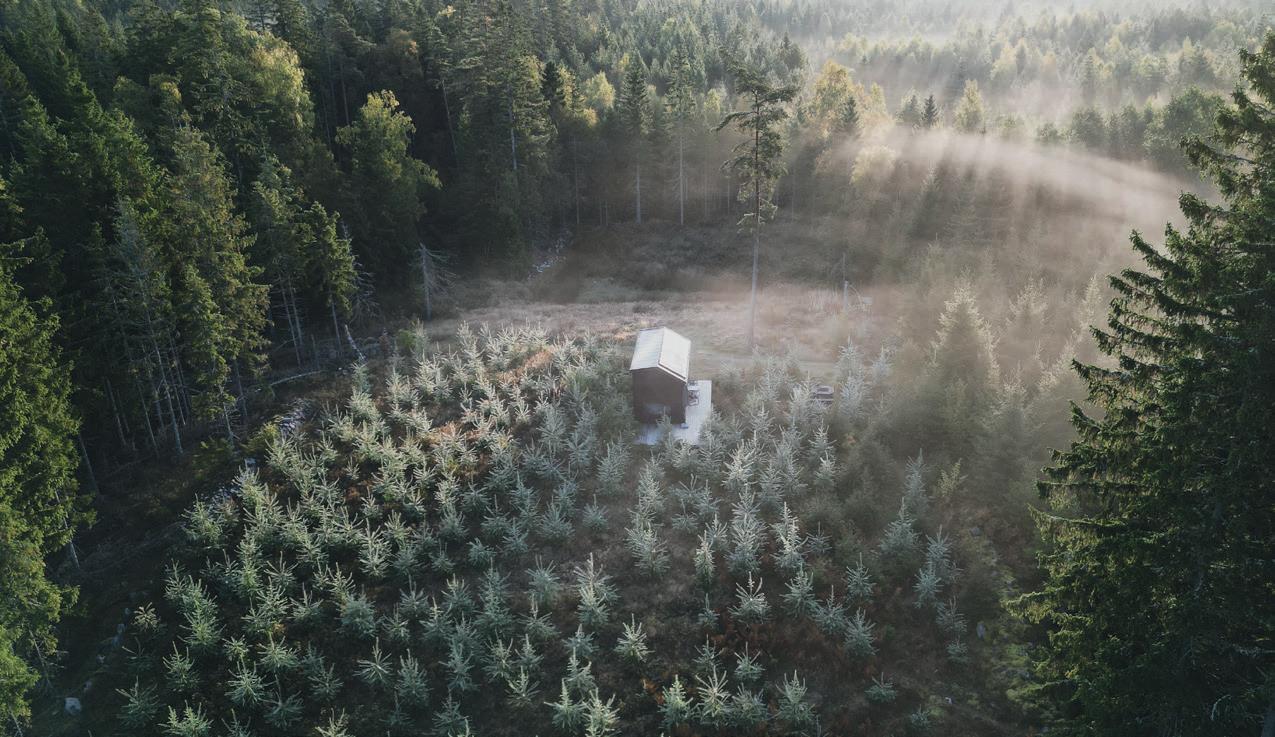
Find your next adventure, in nature
Leading Scandinavian digital marketplace Campanyon offers unforgettable stays in nature. With spectacular accommodation options on the platform, the brand is now also growing in the Swedish market.
By Malin Norman | Photos: Campanyon
The digital marketplace Campanyon aims to make nature accessible to everyone, by inspiring people to get out of the city, find their next adventure and explore local surroundings through unique, nature-based stays. “We want to accommodate nature experiences, whether you’re a seasoned outdoor enthusiast or have barely been in nature before,” says Kristian Qwist, co-founder and CEO.
With thousands of close-to-nature escapes, the platform encourages travellers to explore the variety of accommodation options, such as glamping domes, treetop houses, tiny houses, and other gems. Some are completely off-grid and have outdoor kitchens and bathrooms, whilst others provide a bit of luxury, like fully equipped kitchen, bathroom, and Jacuzzi. “You can go on an adventure to experience lots of different activities or simply enjoy the quietness of nature with
a good book on the balcony or by the fireplace,” says Qwist.
Campanyon puts nature first, handpicking hosts to ensure quality. With more than 100,000 followers on social media and a rating of 4.9 out of 5 on Trustpilot – one of the highest rated travel sites in Scandinavia – this is a reliable, transparent platform with a strong communi-
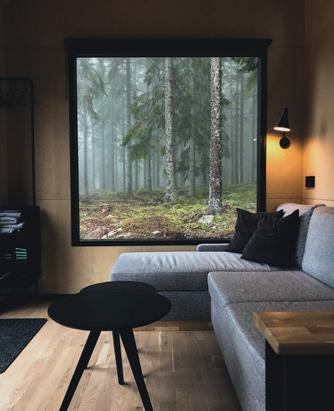
ty; it’s also been praised for its insanely good customer service.
Growing interest in short-term nature experiences
“During the pandemic, as we were all banned from travelling abroad, suddenly the nature trend was booming. People wanted to escape and be close to nature, but there was no suitable platform available. Campanyon was our answer to people’s need to get out there,” explains Qwist. “Whilst glamping was somewhat intangible a few years ago, we now have a product that people understand. Since we started Campanyon, we’ve handled more than 60,000 booked nights for our customers.”
In 2024, Campanyon acquired the Danish competitor Owayy. The deal was a strategically important milestone in becoming the leading Nordic platform for overnight stays in nature. “With Owayy's strong presence in Denmark, and our leading position in the Norwegian market, this acquisition took us one step closer to our goal of promoting short-distance adventures throughout Scandinavia and further afield,” confirms Qwist.
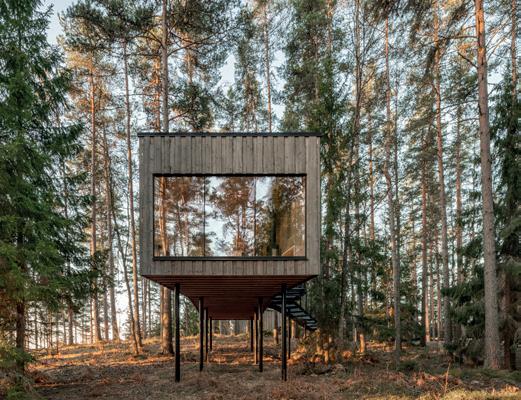
The interest in short-term experiences in nature continues to grow, and the market has enormous potential. Campanyon is continuing to develop its offering simultaneously. “The nature travel trend is here to stay. We want to make nature accessible to as many people as possible through one-of-a-kind overnight experiences, and being an established platform in Scandinavia, the conditions for further growth are in place.”
Unplug and reconnect with nature, the Swedish way
The platform works as a link between hosts, both private and professional, and guests, who tend to be nature-loving people looking to leave the city buzz for a while to be close to nature. “Ultimately, we want to help people find their next adventure,” says Qwist. “There are so many incredible places that need to be experienced. Cam-

panyon helps people discover these hidden gems – places that can be hard to find or easily overlooked on other platforms.”
Campanyon’s goal is to replicate the success from Norway and Denmark in Sweden, and give Swedes the opportunity to book directly on the platform. “Sweden is a growing market, and has seen strong growth this summer,” Qwist explains. “Places are starting to emerge and gain traction – especially in the regions around the big cities; Stockholm, Malmö and Gothenburg, where we also see cross-border travelling, such as from Denmark to Sweden.”
Promoting sustainable micro stays rather than mass tourism, Campanyon wants to help people get off the beaten track and away from viral places, and is hoping to show how smaller destinations can be
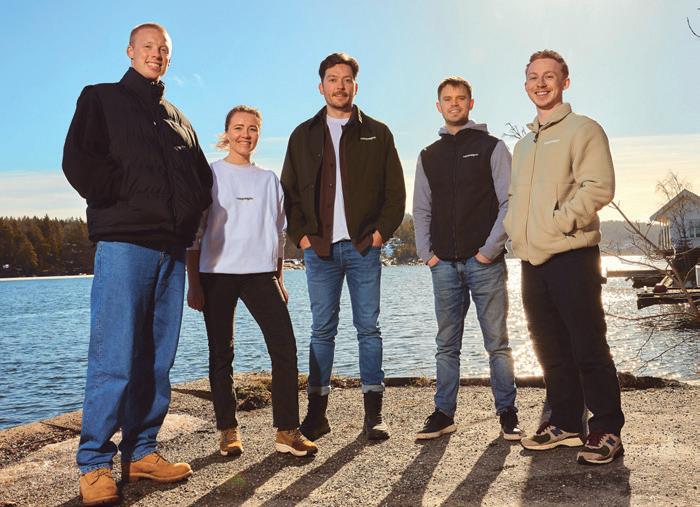
fantastic for exploring nature. “We already have a lot of fantastic Swedish options where people can unplug, reconnect, and retreat to nature,” Qwist ensures.
With Campanyon, you can experience local, authentic places that you might not have heard of before, as well as local activities and products, and enjoy spending a night, or several nights, in nature. Qwist adds; “What we offer are safe, sustainable, and easily accessible nature experiences.”
www.campanyon.com Facebook: Campanyon Instagram: @campanyon
Examples of exciting micro stays in Swedish nature:
Yggdrasil Igloo in Skåne
A hidden gem awaits in Skåne. Here, you can stay in a beautifully designed igloo with stunning panoramic views. The cosy deck is perfect for enjoying your morning coffee or watching the sunset. Go for a quiet walk, grab a paddle board and head out onto the lake, or make the most of the outdoor grill.
Lavvo in Sorsele
If you prefer a more secluded stay, opt for a traditional tent on a small, private island. Lavvo is accessible by snowmobile in winter and boat in summer. The fire stove inside the tent ensures a comfortable stay, even in freezing temperatures. For a true Nordic experience, heat up in the sauna and then go for a dip in the lake.
40 years as a family-owned hotel and spa
With a past as a glamorous palace and later a monastery with its own brewery, nowadays Vadstena Klosterhotel is an award-winning spa hotel – a place where you can switch off and relax. This year marks the 40th anniversary as a family business, which is being celebrated via a number of exclusive guest experiences.
By Malin Norman | Photos: Vadstena Klosterhotel
Vadstena Klosterhotel is a meeting place as well as a sanctuary for relaxation and inner peace, with an award-winning spa and a celebrated wine cellar. This hotel is very much a family affair, with the Milton family running the business for the past 40 years.
In celebration of its 40th anniversary, Vadstena Klosterhotel offers a not-tobe-missed exclusive; the anniversary package. “We want to share this milestone during a weekend filled with history, culinary surprises, and relaxation,” says Sofia Lindholm, spa manager. Another fabulous weekend awaits with the spa package, called Kura Skymning. It includes luxurious treatments for mind and soul; a must for all spa lovers. There’s
also an amazing evening concert in the monastery church to look forward to.
Many guests are drawn to the hotel because of its outstanding wine cellar, which dates back to 1384. Impressively, the cellar has been awarded a red star in Star Wine List. “Our wines are carefully selected by experts, and we are delighted to be part of this prestigious network

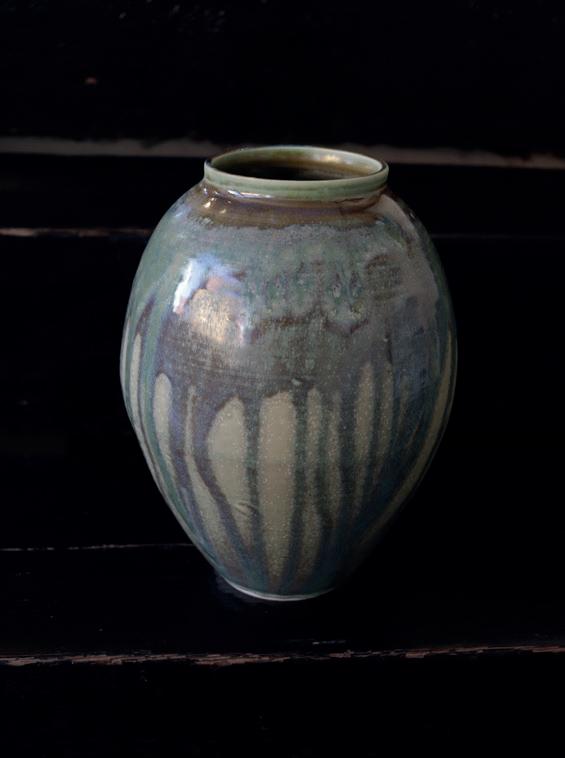
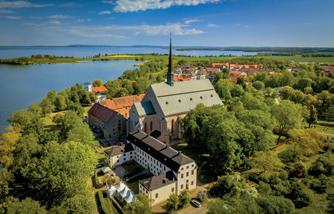
of wine bars and wine restaurants worldwide,” smiles Lindholm.
The Milton family focuses on relaxing, holistic experiences for guests; a time for contemplation, if you will. Earlier this year, the family also opened a small boutique hotel nearby, which will be refurbished in phases, with a restaurant, a catering kitchen, and a bakery. It’s set to become another essential highlight to explore in Vadstena.
www.klosterhotel.se
Facebook: Vadstena Klosterhotel & SPA Instagram: @klosterhotellet

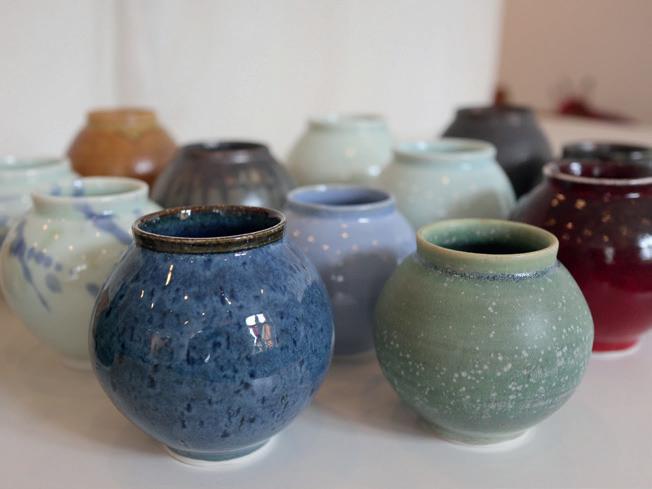
Seven Nordic book releases for your summer reading list
Like with film and TV right now, the Nordic world of fiction is alive and kicking. We bring you the lowdown on some of the most exciting books released in 2025 – be sure to add these to your summer reading list.
By Anders Lorenzen
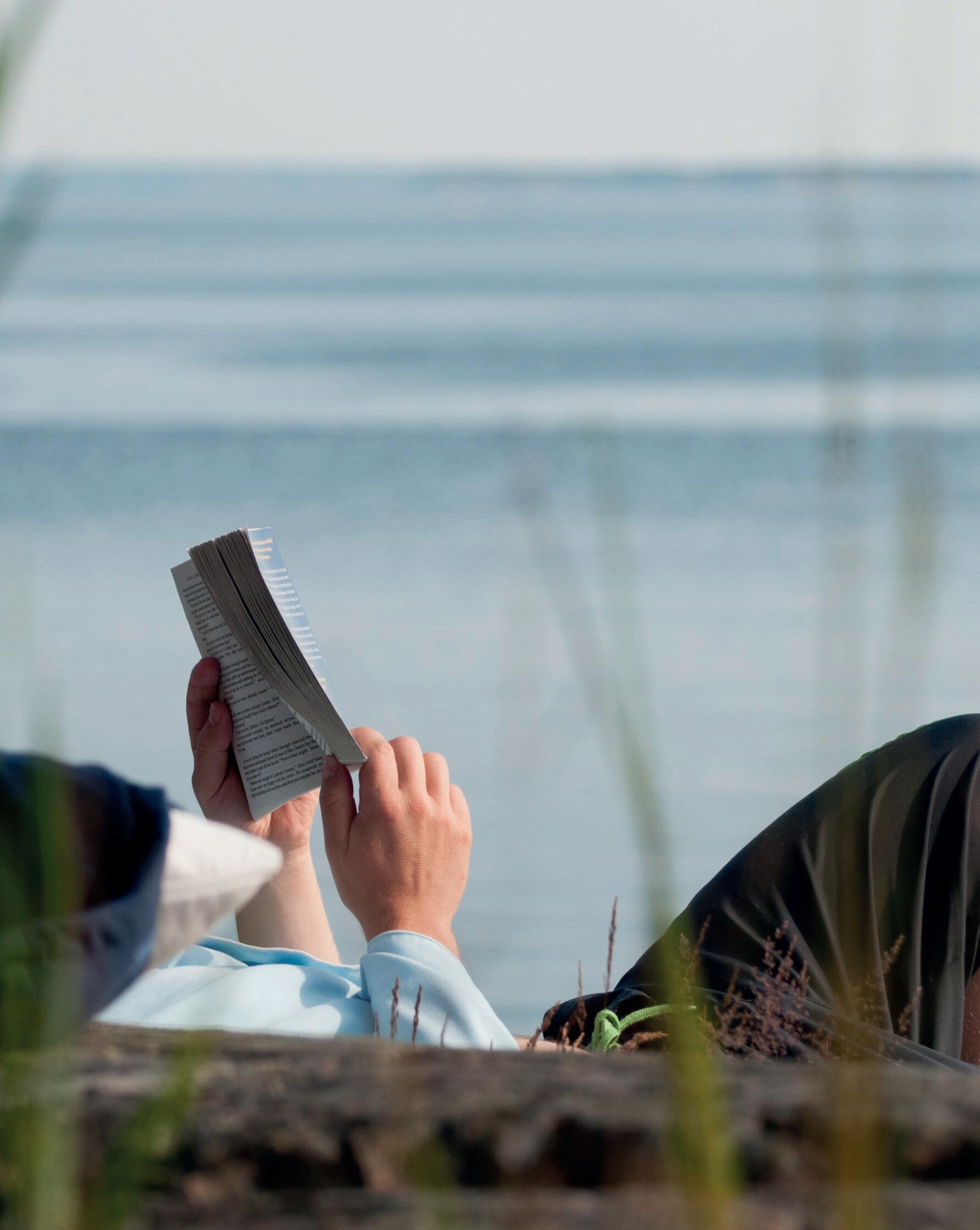
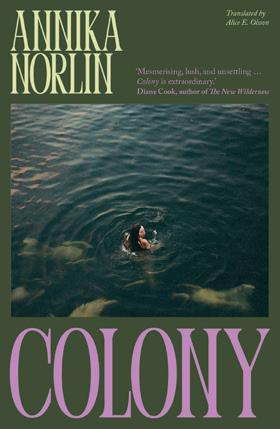
Colony by Annika Norlin
Originally published in Swedish in 2023, Colony has quickly become a bestseller. The novel, written by pop star Annika Norlin, was released to an English audience this year. The protagonist is burned out, in her job and life, to the extent that she tosses her iPhone into a lake and seeks solace in the northern Swedish countryside and forest. There, she encounters seven people who have adopted the commune lifestyle for some 15 years. There are three men, three women, and a teenage boy. In this mysterious group, each group member seems to maintain their individuality whilst living together in the communal setting out in the wilderness.
Money to Burn by Asta Olivia Nordenhof
Asta Olivia Nordenhof's novel was first published in Denmark in 2020, and the English edition was released early this year. Money to Burn, the first novel in the Scandinavian Star series, shows that capitalism is not perfect, even in the Scandinavian societal model. Decades after one of the biggest disasters ever in Scandinavia, revelations have found that the fire on the Scandinavian Star ferry, which killed 159 people, might have more to it than initially believed. At the centre of this story is a couple who were brought together by the disaster and are now struggling to hold their marriage together. With the revelations that it was not an accident but an insurance scam gone wrong, what does it mean for the pair?
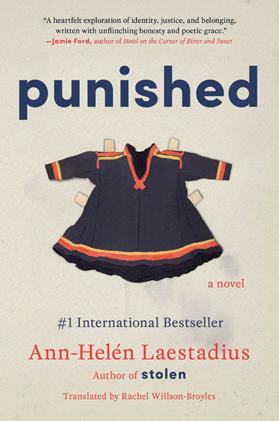
Punished by Ann-Helén Laestadius
Staying in Sweden, another book has become a bestseller in the country. Punished, written by Ann-Helén Laestadius, is inspired by actual events in 1950s Sweden. The plot centres around five children of Sámi reindeer herders being taken from their families. The Swedish state has mandated they attend a nomad school, where they are forbidden to speak their native language. The storyline is rooted in the Sámi people's historical discrimination by the Swedish government.
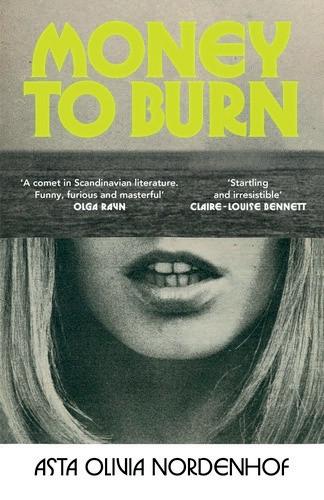
On the Calculation of Volume by Solvej Balle
Shortlisted for the 2025 International Bookers Awards, Danish author Solvej Balle’s On the Calculation of Volume is a septology. The first volume was released in Denmark in 2020, and so far, five of the seven novels have been released. The English versions of volumes 1 and 2 came out in March this year, and the translation of the next volumes is in progress. They have already received global recognition and acknowledgement, with positive reviews in The Guardian, The New York Times, and other well-known publications.
Volume 1
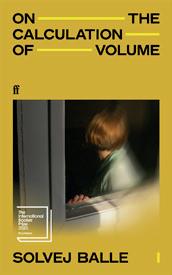
In the first volume, we are introduced to the heroine who has involuntarily stepped off the train of time: 18 November repeats itself endlessly in her world. On her 122nd day, she no longer experiences the changes of days, weeks, months, or seasons, but finds herself in a lonely new reality without being able to explain why. How is it that she wakes every morning into the same day, knowing to the exact second when the blackbird will burst into song and when the rain will begin?

Volume 2
In volume 2, we are drawn further into the maze of time. Here, space yawns open, as if suddenly gaining a new dimension, extending into ever more fine-grained textures. Within this new reality, our senses and the tactility of things grow heightened: sounds, smells, sights, and objects suddenly come alive, as if the world has begun whispering to us in a new language.
The English release of volume 3 is planned for 18 November this year, and volume 4 for 7 April 2026.
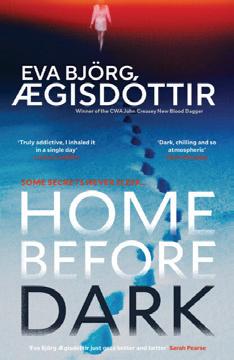
Home Before Dark by Eva Björg Ægisdóttir
Eva Björg Ægisdóttir's Home Before Dark plays out in 1967’s Iceland. The psychological thriller is a nerve-wrecking and horrendous missing-child mystery. The older sister of a 14-year-old girl goes missing the day before the younger sister, who had used her older sister’s identity, was due to meet a pen pal. Ten years later, in 1977, the disappearance remains unsolved. But a letter arrives for the now adult sister; it’s from that pen pal who is still out there. Desperate for news about her sister and worried if she could be next, she embarks on her own investigation.
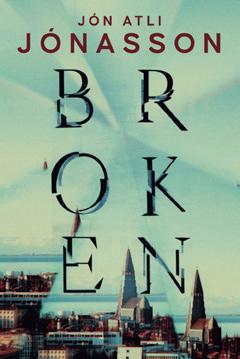
Broken by Jon Atli Jonasson
With Broken, Icelandic screenwriter
Jon Atli Jonasson makes his English debut. The story takes place in a dark corner of Reykjavík, the Icelandic capital. A troubled teenager goes missing from a school trip, and an unlikely duo teams up on a search mission, which follows a thread of corruption that goes on and on.
Museum of the Month, Denmark
Art that speaks to the world from the heart of Jutland
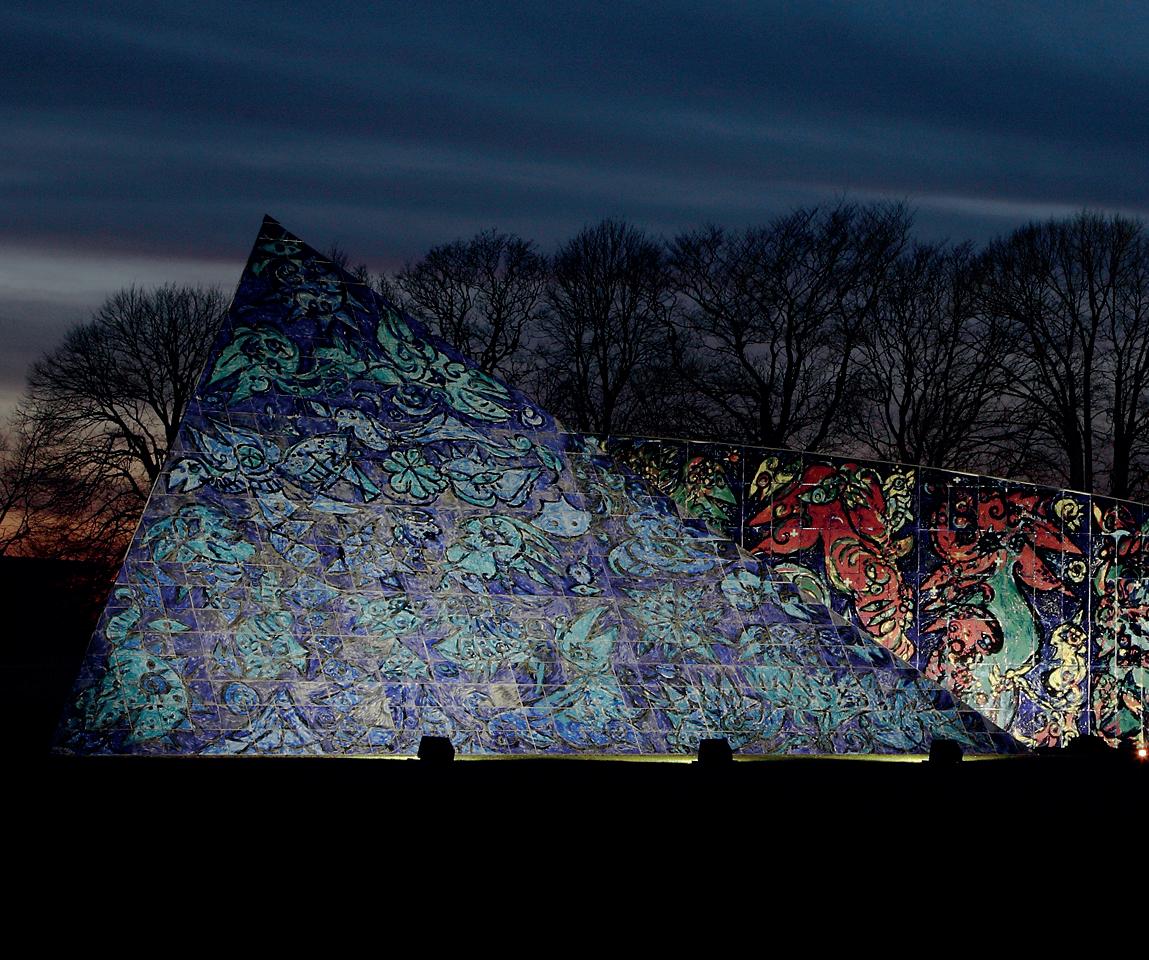
In the heart of Jutland lies a place where art, fantasy and architecture merge with captivating results. At the Carl-Henning Pedersen & Else Alfelt Museum, visitors are immersed in a fairytale world created by two of Denmark’s greatest COBRA artists. Their imaginative works speak to universal human experiences, and now, with the museum’s first major travelling exhibition touring the world, their message is reaching new audiences.
By Signe Hansen
Even before stepping inside, visitors at the Carl-Henning Pedersen & Else Alfelt Museum (CHPEA) in Herning are greeted by spectacular psychedelic colour displays and immersive art experiences. Created by Carl-Henning Pedersen, the museum's mosaic facade and a vast ce-
ramic frieze transcend the boundaries between art, exteriors and architecture.
Once Europe’s largest artwork, The Play of Imagination around the Wheel of Life, a 1,000-square-metre masterpiece, wraps around spectators in a spectacular
display of colour and form. Stepping inside, guests enter an immersive universe where fantasy, symbolism, and storytelling come together. The frieze, created in the 1960s, reflects Pedersen’s belief in art as a total experience. Since 2020, it has been accompanied by Ophav, an evocative sound installation by composer Ditte Rønn featuring Herning Church’s boys’ choir. The result is a deeply sensory journey that blurs the boundaries between visual art and sound, past and present.
“The COBRA artists created art that speaks across time and borders. Their works address universal, human themes
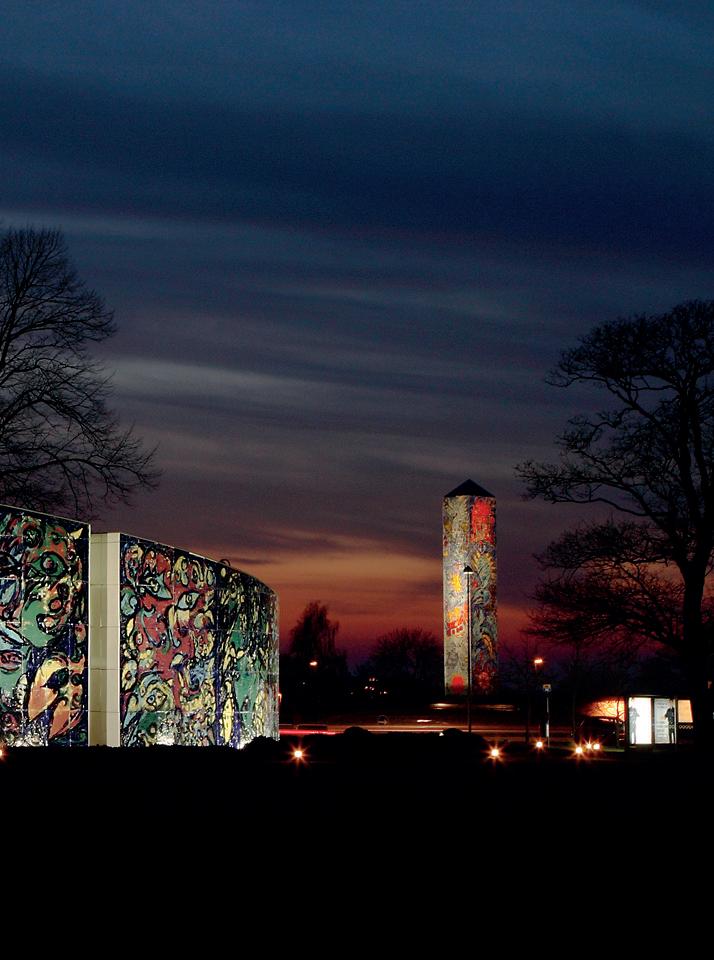
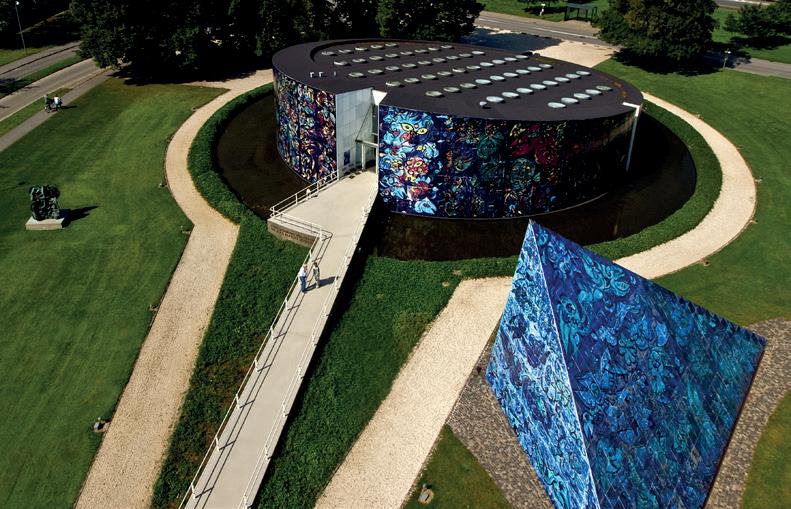

– ideas that remain deeply relevant today,” museum director Lotte Korshøj explains. “The frieze is a completely unique space, and I have personally never come across anything like it. You step into this 360-degree artwork surrounding you –above is the blue sky, below is the grass, and you are standing right in the middle of this circular universe.
Out in the open, the artwork and the sound work come to life in new ways, changing its mood with the seasons and weather.
A unique artistic language
Created as part of the post-war COBRA movement, the vivid, imaginative works of Pedersen and Alfelt continue to resonate far beyond Denmark’s borders. The two artists met in Elsinore in the early 1930s and married shortly after. It was Alfelt who introduced Pedersen to painting, and together they developed distinctive yet complementary artistic languages.
Pedersen became known for his colourful, spontaneous works populated with
fantastical figures, animals and symbols. His style was deeply rooted in the idea that art should spring from the subconscious and the free imagination. Else Alfelt, meanwhile, was inspired by nature and spirituality, creating luminous, poetic works.
Founded in 1976, CHPEA was created thanks to Carl-Henning Pedersen’s wish to donate his art to the public. In the 1960s, he offered 1,000 of his works to any municipality willing to build a museum. When Else Alfelt passed away before its opening, her works were added to the collection, forming an exceptional artistic dialogue between the two.
Today, CHPEA houses over 6,000 works by Pedersen and Alfelt, and its collection reflects the artists’ global outlook and the COBRA movement’s boundary-breaking approach.
Reaching a new audience
The recent launch of Cosmic Dimensions, a five-year travelling retrospective of their works, marks a milestone for the museum and its ambition to reach a worldwide audience. This May, the exhibition opened at Kunstsilo in Kristiansand, Norway –recently nominated as the world’s most beautiful museum – marking the start of its five-year journey. The exhibition, featuring 150 works by Pedersen and Alfelt, is the first full retrospective of the two artists to travel internationally.
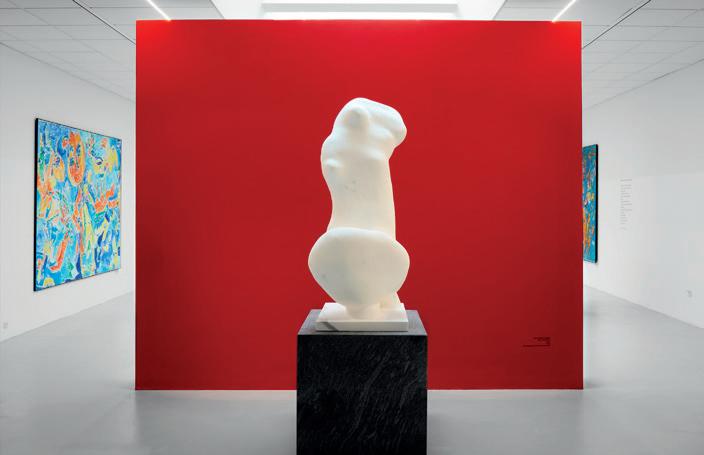
“The exhibition shows their development from the 1930s onwards,” explains Finn Poulsen, head of the museum board. “It includes major works from the COBRA years, as well as pieces never before shown outside Denmark.”
After closing in Kristiansand at the end of August, the exhibition will travel on to Lübeck’s St. Annen Museum in Germany, bringing the visionary spirit of COBRA to new European audiences. The travelling exhibition is a natural extension of CHPEA’s mission to make its collection accessible.
“We want the works to go out into the world,” says Poulsen. “Art plays an important role in society – it can inspire

debate, reflection, and imagination. That was Carl-Henning Pedersen’s vision, and we continue to build on it today.”
A royal touch
As CHPEA approaches its 50th anniversary in 2026, it is committed to renewing and expanding its relevance. The museum is working to make its entire collection accessible online, enabling anyone, anywhere, to explore Pedersen and Alfelt’s works. This ambition is part of a broader effort to ensure the collection remains dynamic and connected to contemporary society.
“Our aim is to keep the museum alive and relevant,” says Korshøj. “It is not a mausoleum, but a living place with themes we can all relate to today.”

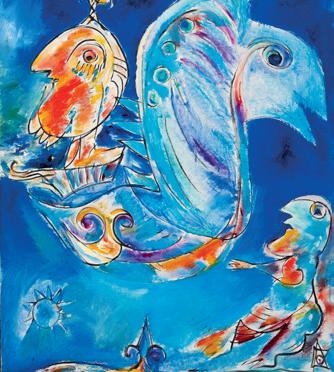
This vision is also reflected in the museum’s permanent exhibition Eventyrlig Dialog, which pairs Pedersen’s works with sculptures by the late Prince Henrik of Denmark. Originally created with the prince’s involvement, the exhibition continues to attract new audiences, many of whom are experiencing art in a museum setting for the first time.
A universal language
At the core of the museum’s appeal is, however, the deeply resonant universal language that remains in Pedersen and Alfelt’s works. While Else Alfelt explored the timeless stability of nature – painting mountains as symbols of the eter-
nal – Pedersen’s spontaneous, colourful paintings were created with the belief that art from the depths of the soul can speak directly to others.
“Else Alfelt focused on our place in the cosmos, reminding us that we are just small parts of something much bigger,” says Korshøj. “And Carl-Henning Pedersen believed that if we can speak from the innermost part of ourselves, we can touch that same place in others.”
Indeed, CHPEA is a place where the human spirit thrives in its essence, and imagination knows no limits. Visitors can spend a day immersed in art, fantasy, and creativity – and round off their journey with an invigorating coffee and moment of reflection in the museum café.
Museum opening hours: Tuesday - Sunday 10am-4pm www.chpeamuseum.dk
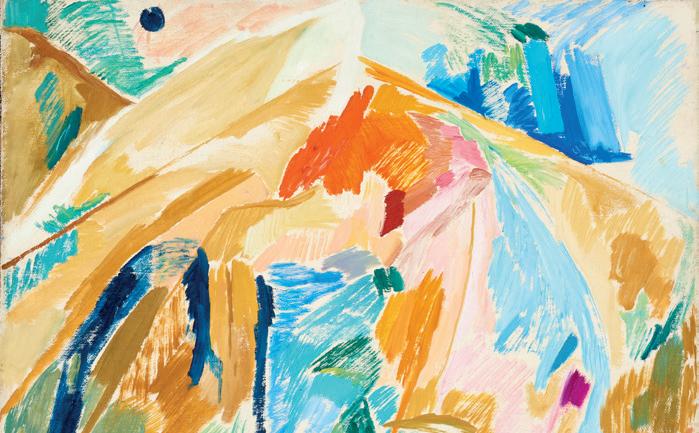
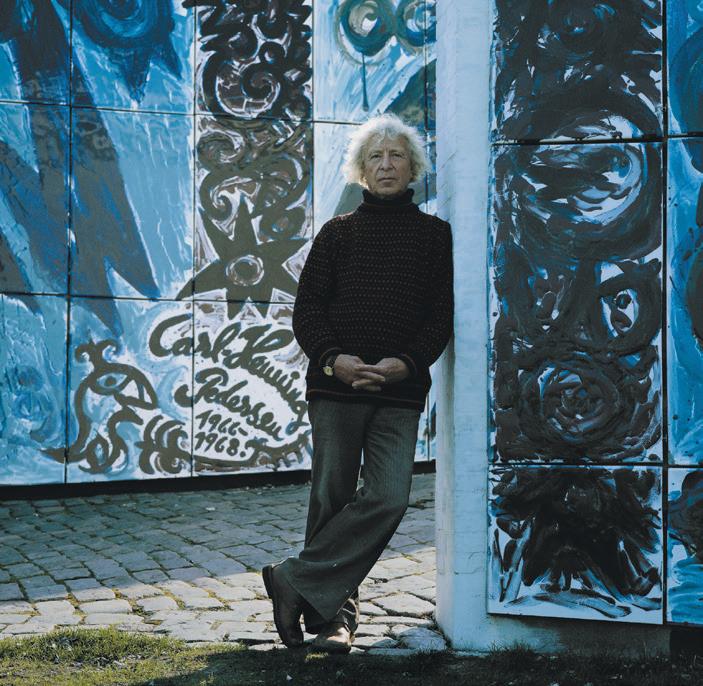
• Carl-Henning Pedersen (1913–2007) and Else Alfelt (1910–1974) were key figures in Danish modernism and the international COBRA movement.
• In 1976, the museum opened its doors to a collection of 6,000 works by Carl-Henning Pedersen and Else Alfelt.
• Since opening, the museum has been expanded several times, including in 2015, when it was extended with an underground hallway leading to the Angli courtyard, where Pedersen’s monumental frieze The Play of Imagination around the Wheel of Life is located.
• The Museum is situated in Birk Centerpark, in the eastern part of Herning. Birk offers a variety of cultural experiences including a sculpture park and The Geometrical Gardens.
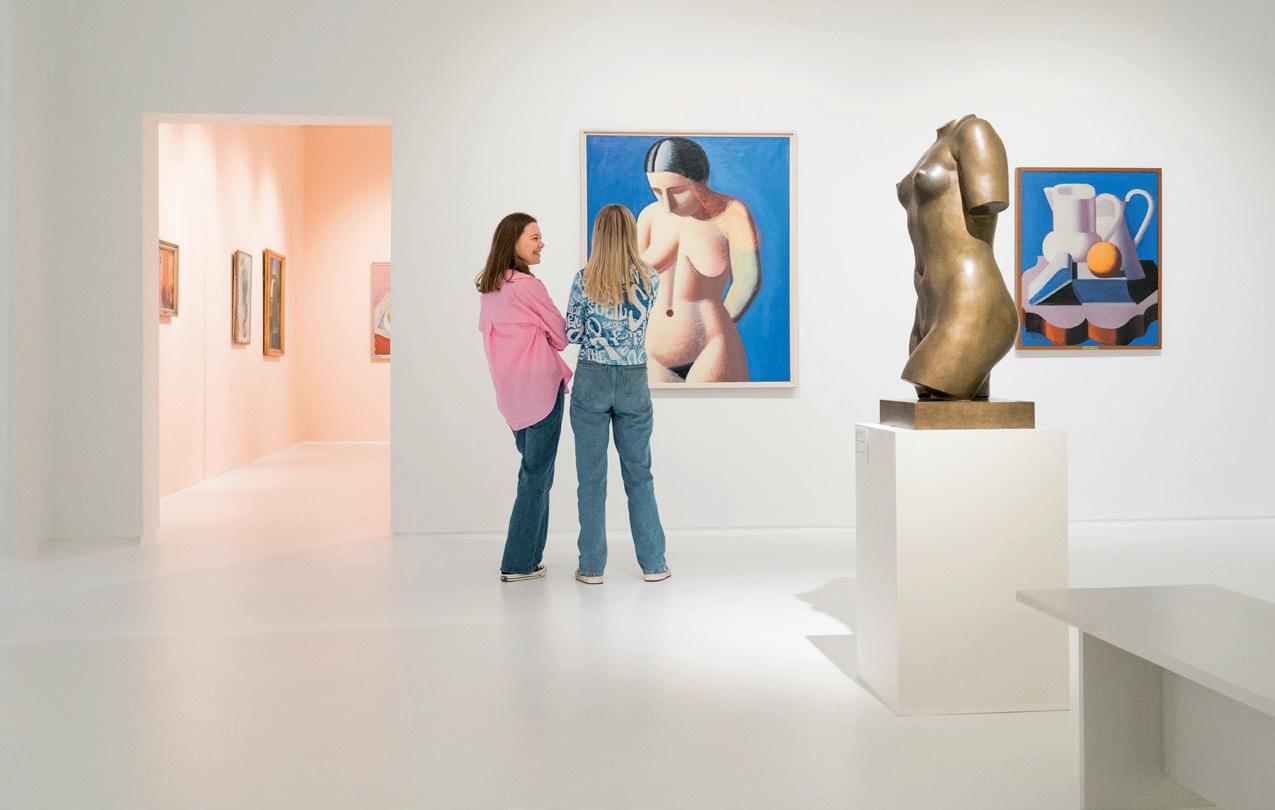
Museum of the Month, Denmark
Kunstmuseum Brandts
– set your imagination free
Located in a transformed textile factory in the heart of Odense, Kunstmuseum Brandts offers visitors of all ages a one-of-a-kind art experience, featuring industrial settings, the city’s best panoramic views, and exhibitions ranging from historic masterpieces to contemporary and family-friendly shows.
By Signe Hansen
Located just an hour from Copenhagen by train, Kunstmuseum Brandts has become a favourite destination for art enthusiasts of all ages. In fact, for many children, the museum provides their first memorable encounter with art – and with this summer’s mix of Cathie Pilkington’s contemporary works, Jens Juel’s dark portraits, and Jakob Martin Strid’s enchanting universe, the museum is sure to please its many loyal regulars as well as any curious newcomers.
“We show world-class art in a way that feels accessible to everyone,” explains museum director Stine Høholt. “Each year, the museum presents a diverse exhibition programme with bold, inspiring and moving works, aspiring to offer as many views
of the world as the world of art is full of. We like to encourage different sensibilities and expressions, and feel that this is a great way to be relevant and inclusive.”
More than an art museum
Housed in an old textile factory, one of Denmark’s first industrial buildings to be transformed for cultural use, the museum is a destination in itself. “You can still see the oil stains from weaving machines on the original floors in our collection wing,” says Høholt. “There is a special atmosphere in a museum with historic surroundings, adding an extra dimension to the visitor experience.”
Across the building’s five floors, the museum showcases an impressive collec-
tion of Danish and international art, with almost 17,000 works, including paintings by Hammershøi, Juel, and Lundstrøm. With many regular local visitors, the museum also offers a cosy place to meet locals and experience the friendly atmosphere of Funen and Odense, a large university city with a buzzing city centre.
“We are located in the middle of the city and are part of its vibrant urban life, and our museum offers the best view in town – a
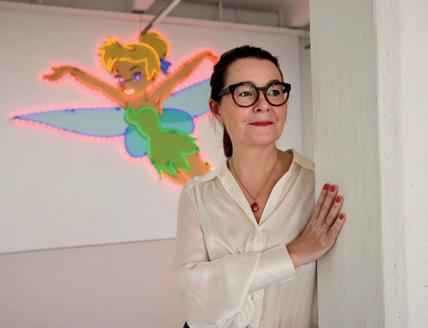
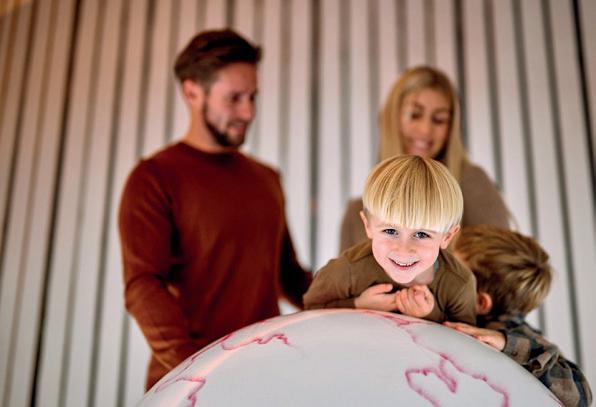
panorama over the city’s rooftops,” says Høholt. The museum’s central location also means that it is within easy reach by both car and train, with the station just a few minutes’ walk away.
This year’s highlights
This year’s highlights include an exhibition by one of Britain’s most exciting contemporary artists, as sculptor Cathie Pilkington transforms the museum’s fourth floor into a whole installation, titled Rag and Bone. Combining her sculpted and painted works with a wide range of props, materials, and furniture, it is the artist’s first solo exhibition in a Danish museum.
Other highlights include Jens Juel’s portraits of Danish royals and nobles (until 24 August), as well as over 80 original works from popular Danish children’s book creator Jakob Martin Strid’s The Fantastic Bus. “We see all age groups enjoying Strid’s poetic line, which conveys
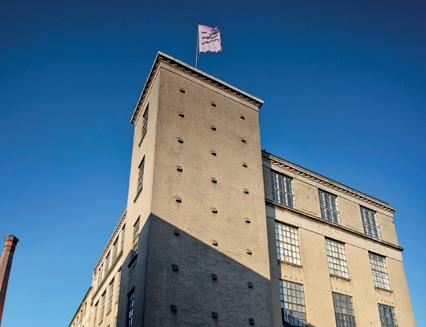

strong messages about art, imagination, and community,” says Høholt. “The exhibition is perfect for children and families, but also for any adults who want to join an adventurous road trip.”
A family destination
It is by no means the first time the museum presents art that appeals to a younger audience. For 30 years, the museum’s sensory exhibitions have offered artistic, playful spaces to explore life in new ways. “For many children, this is their first meeting with art,” says Høholt. “We take them by the hand into worlds and stories that they can easily enter. It should be fun, serious, and thought-provoking – but never indifferent.”
Moreover, welcoming staff, a creative workshop, and a café overlooking Odense’s cosiest square provide the setting for a full day of unforgettable art experiences. “Our ambition is to offer a wide range of high-quality exhibitions all year round, and to be the first choice for visitors from across the globe who seek worldclass art, creativity, and inspiration,” stresses Høholt and concludes; “Whether you drop by for a short visit or spend several hours here, our museum is designed to set your imagination free, open up dreams, and inspire meaningful conversations.”
www.brandts.dk
Facebook: kunstmuseumbrandts
Instagram: @kunstmuseum_brandts
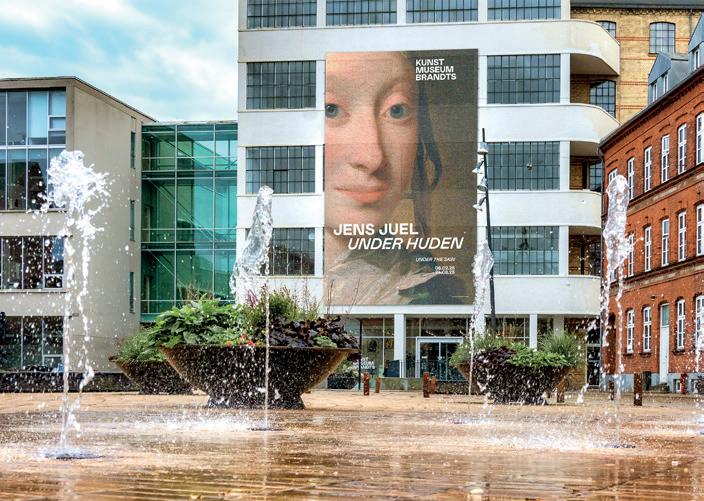


Museum of the Month, Denmark
Where history, craftsmanship, and storytelling meet
Step inside one of Denmark’s best-preserved ceramic factories where history, craftsmanship, and storytelling come together. At Hjorths Keramikfabrik, visitors explore more than just ceramic traditions; they experience a working museum where past and present merge in every cup, glaze, and conversation.
By Heidi Kokborg | Photos: Bornholm’s Museum
Founded in 1859 by Lauritz Hjorth, Hjorts Keramikfabrik remained in family hands for four generations before being taken over and carefully restored by Bornholm’s Museum. Today, Hjorths Keramikfabrik stands almost exactly as it did in the 1800s. “When you step into our production space, it feels like stepping back in time,” says Karina Skibby, head of production at Hjorths Keramikfabrik.
Visitors can experience ceramics being made on original foot-powered wheels from the 1870s, speak to ceramicists, and see the factory's history unfold in the very space it was created. “We want visitors to meet the people behind the craft. You're not just looking at objects in glass cases – you’re seeing how ceramics are made,” enthuses Skibby.
Feel the history in each piece
Ceramics are deeply rooted in Bornholm’s identity. With abundant natural resources like stoneware clay and glaze materials,
the island has long been a hub for pottery. All ceramics from Hjorths Keramikfabrik are still made at the factory in Rønne, using traditional methods and raw materials sourced on the island. “It’s important for us to keep production here. We want to pass on the old craft traditions and show that it's possible to choose something local, handmade, and meaningful,” says Skibby, who also explains that the factory is a rare industrial monument in Denmark – one of the few places where traditional
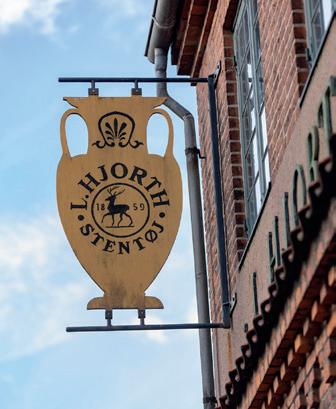
craftsmanship is kept alive in its original setting. “We still use the old clay mixers and spark-powered wheels.”
From the outset, Hjorths Keramikfabrik was a success and the ceramics were shipped all over the world. A signature example is the Apoteker series; a collection with origins in the 1920s that is still produced today using local ingredients and historic glazes. “You can feel like each piece is made with care and has a history, from the cup you drink your morning coffee from to a beautiful bowl,” says Skibby.
Whether you are a ceramics enthusiast or simply curious, Hjorths Keramikfabrik offers a full-circle ceramics experience. Through exhibitions, hands-on activities, and direct encounters with ceramicists, you leave with more than just knowledge – you leave with insight. “Even if you know nothing about ceramics when you arrive, you’ll walk away with an understanding of what it really means to work with clay, which will also make a difference when you explore the rest of Bornholm,” adds Skibby.
www.hjorthsfabrik.dk/en
Facebook: Hjorths Fabrik
Instagram: @hjorths_keramik_fabrik
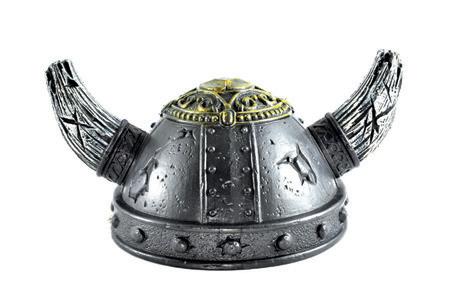
Vikings in Västerås
The Viking age
Frösåkers Brygga is a genuine attraction for the entire family that takes you back in time.
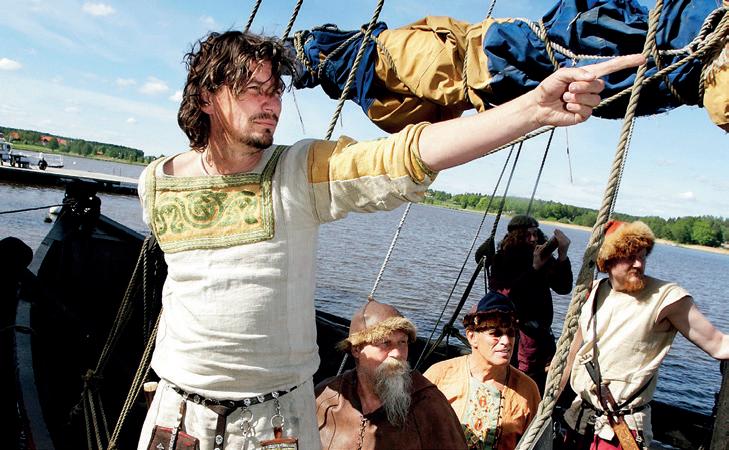
Anundshög – a forgotten time!
Anundshög is a real treasure for everyone, regardless of how interested in history you are. Anundshög is Sweden’s largest burial mound and is said to be the resting place of King Bröt-Anund although the grave has never been excavated. Alongside the burial mound there are five stone ships from the first millennium AD as well as other graves and a stately rune stone. Anundshög and the surrounding area of Badelunda are full of prehistoric finds and are believed to have been an important centre of power.
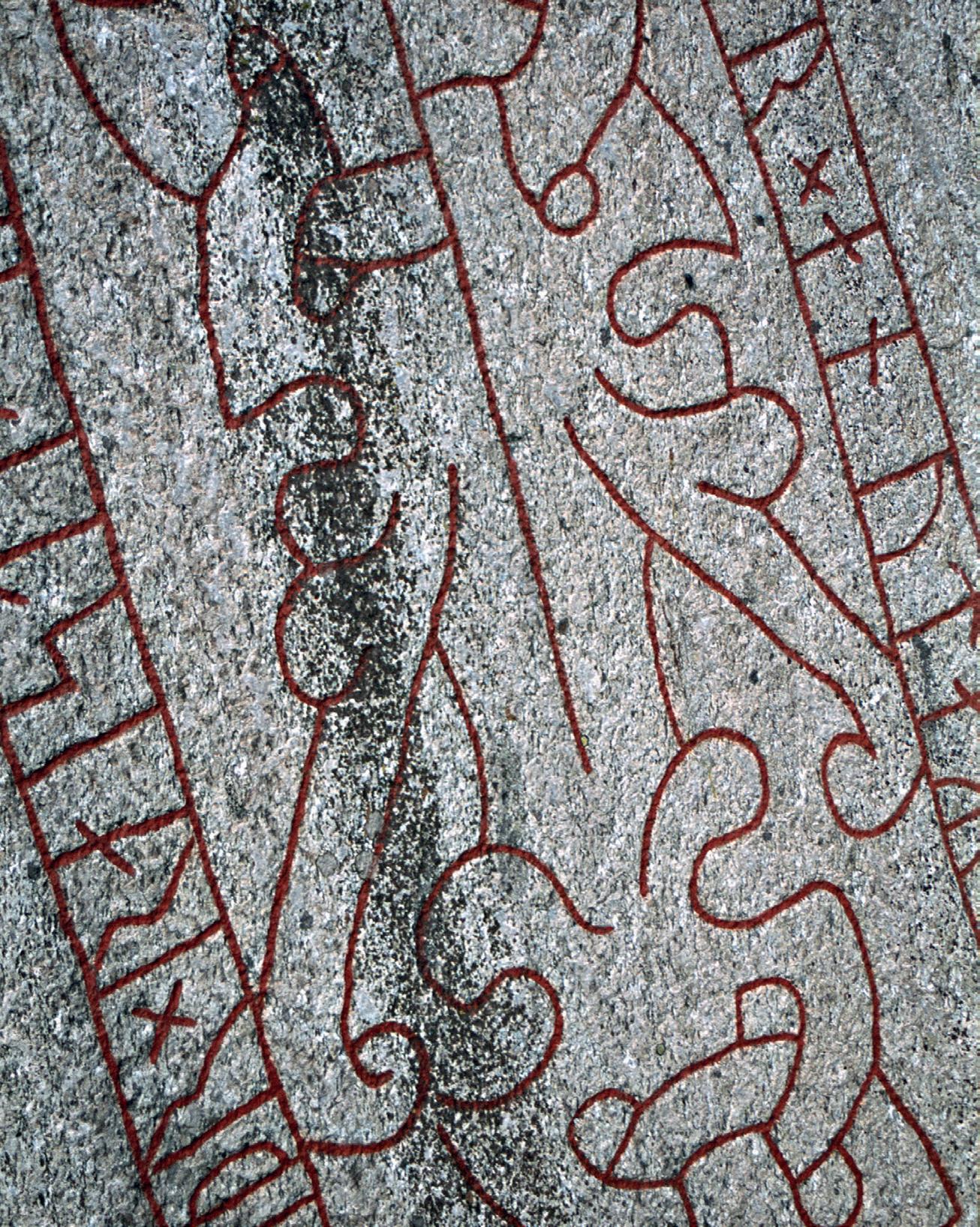
Seven places to check out in Västerås:
• Västerås Domkyrka: cathedral and resting place of King Erik XIV

• Västmanland Läns Museum: tells the story of the city’s cultural heritage
Kokpunkten Actionbad: Sweden’s first action-filled water park
Anundshög: Sweden’s largest burial mound with rune stones
Skultuna Messingsbruk: producing brass products for over 400 years
Vallby Friluftsmuseum: one of Sweden’s largest open-air museums
Västerås Konstmuseum: a meeting place for art lovers of all ages
Check out visitvasteras.se for more inspiration on what to see and do.
This little piece of paradise is set in the middle of Frösåker’s beautiful countryside and gives you the opportunity to try out some historic activities like sailing and rowing longboats, play tournament games and learn more about the Viking Age. You can also enjoy refreshments and spend the night in a boathouse or your own boat in the guest harbour. Frösåkers brygga is home to Sweden’s largest floating boat museum with over 20 Viking ships, 2 cogs and a number of traditional boats. An educational Viking adventure for people of all ages is waiting for you at Frösåkers brygga!
Check out visitvasteras.se for more inspiration on what to see and do.
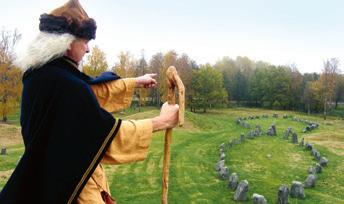
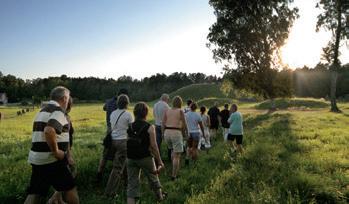
TOURS of Anundshög during the summer months.
International Museum of the Month, Croatia
A museum of love and loss

In a quiet Baroque palace in Zagreb, visitors stand peering and pondering over a bra, a toaster, a teddy bear, and a cassette tape. Museum of Broken Relationships is a rollercoaster of human emotion, a place where heartbreak becomes art and vulnerability becomes connection. Its universal appeal has drawn attention from all over, and recently, the museum opened a new permanent branch in Chiang Mai, Thailand.
By Signe Hansen
Born from heartbreak, the story of Museum of Broken Relationships began when arts producer Olinka Vištica and visual artist Dražen Grubišić, wanting to honour the love they had lost, turned the remnants of their ended relationship into an art installation. Scan Magazine speaks with Vištica, who shares the story of how her broken relationship evolved into an entirely new kind of museum experience – and Grubišić, her ex-romantic partner, into a lifelong creative partner.
“When I saw the reaction from people, how they cared, I thought – there’s something in this project,” she says. “We show how vulnerable we are. How in love and loss, we are all the same, no matter cultural differences. But also, the museum is a space for communication – when I see
people silently hunched over objects, it reminds me of two people who have never met having a really intimate conversation and understanding each other.”
Beginning as an art installation in 2006, Museum of Broken Relationships imme-
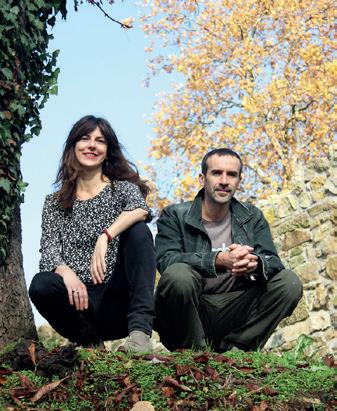
diately drew worldwide attention. Today, it is a global phenomenon with two permanent locations – in Zagreb and Chiang Mai – multiple touring exhibitions, thousands of contributions, and numerous awards, including the EMYA Kenneth Hudson Award for Europe’s most innovative museum.
A successful breakup
Despite its success, neither of the two founders of Museum of Broken Relationships had even the tiniest inkling of the dimensions the project would one day take when they sent out the first call for objects and stories. The first larger installation took place in Zagreb in a shipping container in 2006, and media attention quickly followed. “When Reuters called to cover an art installation opening in a shipping container, we realised people were intrigued,” says Vištica. Commissions soon came from art festivals worldwide, and the heartbreak installation travelled the world.
By 2009, its two creators faced a new dilemma: what to do with the growing collection of intimate donations.
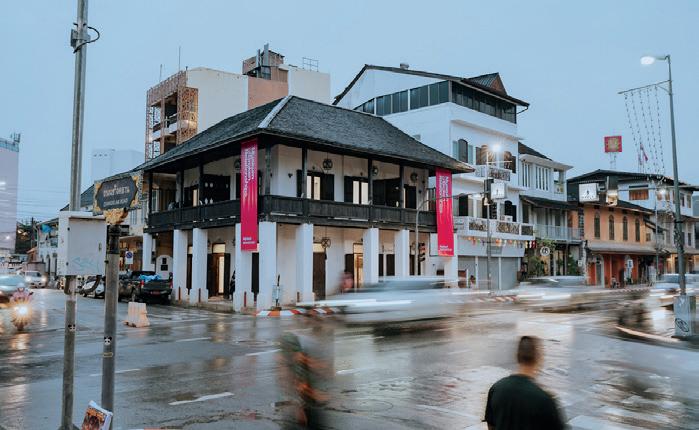
“We had made a promise to the donors that we would look after and honour their donations, so disposing of them was not an option,” explains Vištica. In 2010, despite banks laughing at their loan requests, they secured a space in Zagreb’s Upper Town – part of a beautiful Baroque mansion. Meanwhile, touring exhibitions continue to gather new local contributions in cities all over the world, building a rich tapestry of cultural differences and universal themes.
A rollercoaster of emotion
Today, the museum holds around 4,000 items, exhibiting around 100 at any time, each carefully curated with its accompanying story. From a bra donated by a woman who broke up with her conception of herself after breast cancer, to a frozen piece of wedding cake preserved in its own mini freezer, to a pair of huge tennis shoes with a simple, aching note: “We practised basketball together. I was gay, you were straight. That killed me inside.”
“The visit is a rollercoaster of emotions,” Vištica says. “Some items make you laugh, some break your heart. Many are stories of love that could never be, and that makes them even more powerful.
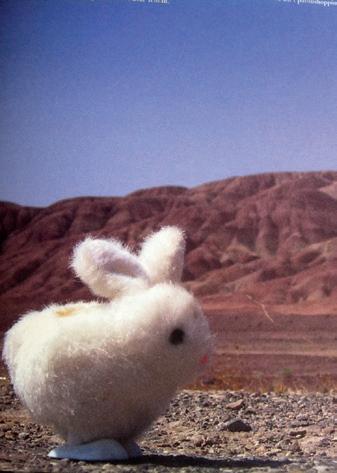

We wanted to show life’s ups and downs.” Visitors often linger in the museum’s café afterwards, discussing what they have seen. “My favourite pastime is to have coffee and listen to people,” she says. “The museum still surprises people. It’s not cheesy, it’s not just a gimmick. People interpret it in their own ways.”
A universal theme
In 2023, Museum of Broken Relationships opened its second permanent location in Chiang Mai, Thailand. “We never wanted to franchise – a museum cannot be replicated – but we had some amazing partners in Chiang Mai, and there was something about the idea of opening a museum there that made sense,” reflects Vištica. “In Asia, the stories are different, and the acceptance of loss as something that’s part of life is more felt, and that made us curious to explore more.”
Despite the years that have passed since the museum’s unlikely creation, its stories still continue to surprise and amaze. “There are items that move you in different ways,” Vištica explains and concludes: “If the museum has taught me anything, it’s not to take my personal challenges too seriously. Things happen – it means I am alive.”
Indeed, Museum of Broken Relationships serves as a poignant reminder that behind every heartbreak lies a story of love, hope, and humanity. And as long as people continue to love, this museum will never become outdated.
www.brokenships.com
Facebook: Brokenships
Instagram: @brokenships
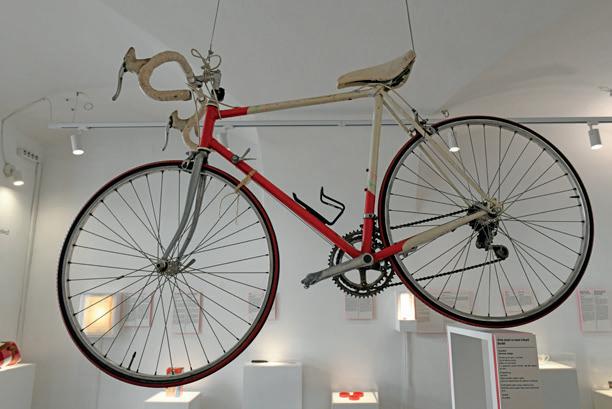

International Museum of the Month, Hungary
Where cultures meet: inside Budapest’s dazzling new Néprajzi Múzeum
Perched on the edge of Budapest’s City Park, Néprajzi Múzeum is both a striking architectural statement and a vibrant hub of human stories. It is one of Europe’s newest museum buildings, but within its walls is one of the world’s oldest ethnographic collections, now reimagined for a 21st-century audience.
By Signe Hansen
Visitors stepping into Néprajzi Múzeum for the first time often pause, not just to take in the architecture, but to absorb the sheer scale and diversity of what lies ahead. “Visitors are often struck by the richness and uniqueness of Hungarian folk material culture – and by how global the museum’s collection truly is. We present not only Hungarian objects, but items from Africa, Asia, Oceania, and beyond,” says director general Dr. Lajos Kemecsi. “This remarkable collection makes the experiences of people from five continents and various time periods accessible and relatable.”
Founded in 1872, the Museum of Ethnography has served as a gateway to cultural knowledge. Today, its striking new home brings that mission to life in spectacular ways, through permanent and temporary exhibitions, immersive experiences, and a renewed focus on the emotional power of objects.
A cultural beacon in City Park
Opened in 2022, the museum's award-winning building rises like a work of art in Budapest’s City Park, a vibrant area full of attractions – from a zoo and baths to other museums and even a hot
air balloon lookout. Its form is bold and fluid, designed by the Hungarian firm Napur to blur the lines between architecture and landscape, combining steel, glass and a vast, green rooftop garden.
Inside, light-filled spaces open onto galleries, studios, and public areas alive with activity. Visitors can walk freely through and enjoy a cultural experience that engages and speaks to them, without buying a ticket. The building as a whole is characterised by transparency, which is also reflected in the fact that the permanent collection can be viewed through the building’s many glass surfaces.
As an extension of their cultural experience, visitors can take home quality utilitarian objects from the Etnoshop, the museum shop, and also enjoy a coffee, browse the bookshop, or stop by the Ce-
ramics Space – a fascinating installation of 3,333 objects, freely accessible to all.
The museum’s stunning, iconic spaces are also available to rent for private or public events.
A new kind of exhibition
Among the museum’s many innovations is a newly opened permanent exhibition – ambitious in scale and intention.
“Opened in October 2024, one of the world’s most recent permanent ethnographic exhibitions spans 3,000 square meters and features 3,600 objects to tell more than 1,000 stories – personal, surprising, and universal in ways that resonate with all visitors,” says Kemecsi.
Here, ethnography becomes a living conversation. “It not only explores Hungarian and other cultural traditions, but also makes the cultural heritage of humanity accessible to people today through emotional and intellectual experiences,” the director general adds.
From wedding dresses to work tools, and from ceremonial masks to everyday utensils, each object offers a point of connection across time and space. Visitors are encouraged to look closer, think differently, and find their own meaning in the materials of culture.
Legacy and relevance
With more than 150 years of history, the museum adds depth and credibility to its exhibitions. “Visitors don't just encoun-
ter objects; they engage with the story of an institution where generations of Hungarian ethnographers have collected and interpreted culture,” says Kemecsi. “Esteemed contributors like Béla Bartók helped build the museum’s renowned collection – his phonograph recordings can even be heard in the permanent exhibition!”
But this is no nostalgic shrine. The museum speaks fluently to younger generations. “Many young people discover here just how exciting ethnography can be,” says Kemecsi, and reveals that more than one visitor has said; “I didn’t expect ethnography to be this cool!”
“That’s because we bring it to life with contemporary tools and interactive methods, like storytelling,” he continues. “For young people, cultural history becomes not a distant past, but a personal and discoverable experience. They find questions – and answers – that connect directly to their own lives.”
A new perspective
Faced with the scale of the museum, many visitors may feel the need to prioritise and plan their visit a bit. Fortunately, Kemecsi has some advice on how to make the most of a short visit. “Take a walk through the building and enjoy the Ceramics Space, then visit the exhibition ZOOM – Change in Perspectives,” he advises. “The curators designed this exhibition so that the objects, through their arrangement and without explanatory text,
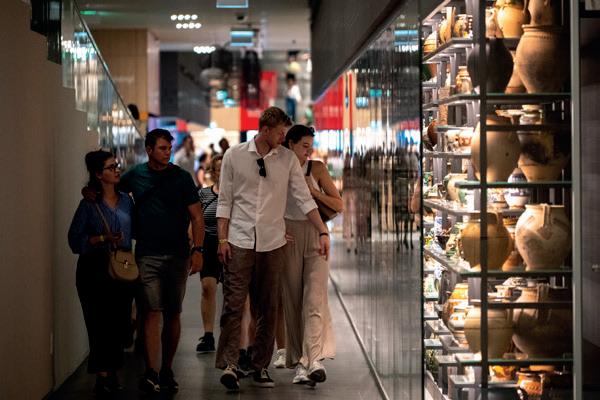
reveal hidden connections and contradictions. Shifting perspectives becomes a real physical and visual experience.”
“And don’t miss Méta tér – an inspiring, interactive space that brings together museum experiences, understanding, and creativity. With its digital screens and welcoming atmosphere, it invites you to reflect on what you’ve seen and fully immerse yourself in the exhibition.”
Indeed, as visitors make their way out into the modern city's bustle, many may carry more than just memories of beautiful objects. “We hope that our visitors leave with a new perspective, a renewed sense of wonder at the richness of their own and other cultures, and an understanding that behind every object lies a human story,” concludes Kemecsi.
www.neprajz.hu
Facebook: neprajzimuzeum
Instagram: @museumofethnography
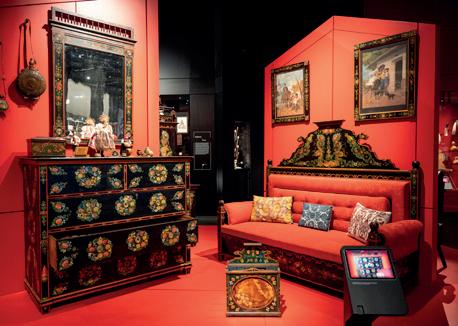
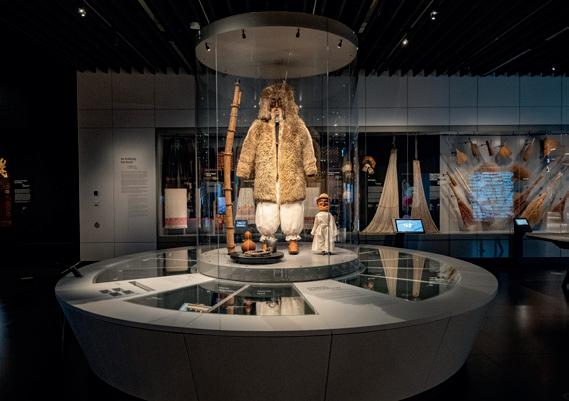
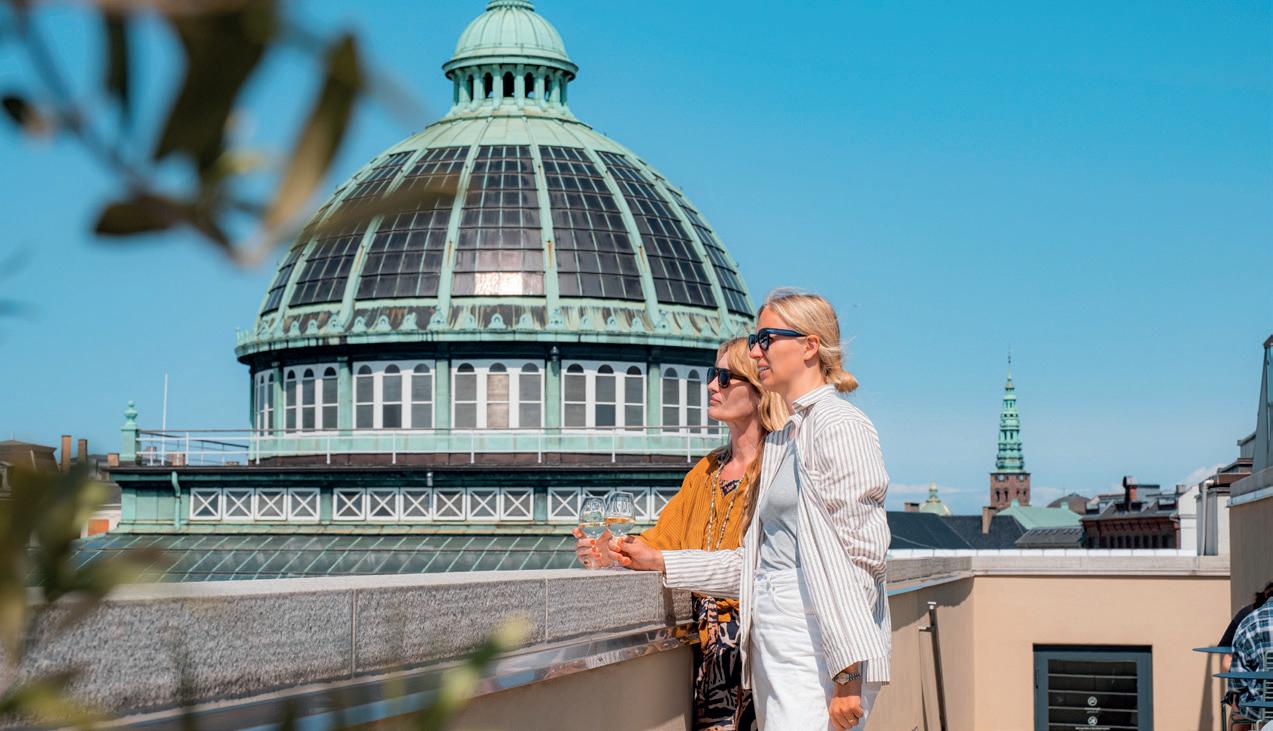
Attraction
of the Month, Denmark
Immerse yourself in art, beauty, and life at Glyptoteket
Tucked away behind Tivoli Gardens in the heart of Copenhagen, Ny Carlsberg Glyptotek offers a serene escape from the city's bustle. Its glass-domed Winter Garden is an oasis of palms and fountains, while classical antiquities, French masterpieces, ancient mummies, and Danish Golden Age works fill the galleries. Visitors can also unwind with panoramic views from the museum’s elegant rooftop terrace.
By Signe Hansen
Founded in 1888 by Danish brewing legend Carl Jacobsen, Ny Carlsberg Glyptotek – commonly referred to as Glyptoteket – is an integral part of Denmark’s cultural and industrial history. Jacobsen envisioned it as an oasis, making art accessible and attractive to the people through beautiful and calming settings.
“He wanted to attract people with something more than art,” explains Sonja Landuyt, head of marketing. “One of the beliefs he expressed was that people were, funnily enough, more interested in plants than sculptures, which is why the Winter
Garden became such a central part of the museum.”
Today, Glyptoteket remains true to Jacobsen's vision, blending classical art, modern French paintings, and green serenity under one roof.
A world of antiquities – and a collection of noses
Ny Carlsberg Glyptotek’s classical collection is among the largest in Northern Europe, encompassing Egyptian mummies, Greek statues, and Roman portraits. Walking through its grand marble
halls lined with busts and gods is like stepping into antiquity itself. “Visitors often tell us they come for the aesthetic experience as much as for the learning,” Landuyt explains. “It’s a place where everything is allowed to stand and present itself, creating a sensory journey through time.”
One quirky highlight is the museum’s socalled Nose Collection. Tucked away in a glass cabinet, it features detached noses from sculptures gathered over centuries. “It’s actually quite funny,” says Landuyt. “People love seeing this little collection – each nose has its own story, whether it was knocked off in transport or wilfully removed.”
A universe of French impressionists and Danish masters
Beyond antiquity, the Glyptotek is renowned for its French collection, including
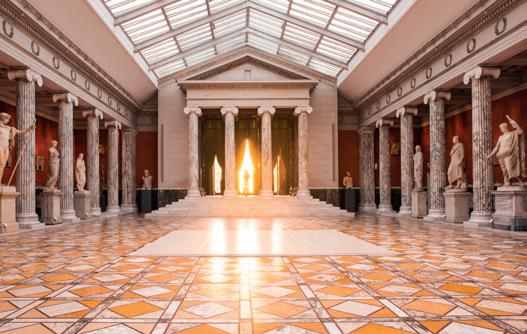
major works by Monet, Manet, Gauguin, Degas, and Van Gogh. “We have three floors dedicated to French Impressionism, displayed in new ways that encourage fresh perspectives,” Landuyt notes.
One of the highlights is the special exhibition Gauguin & Kihara – First Impressions, showcasing its renowned collection of 58 Gauguin works – spanning paintings, wood carvings, drawings, and ceramics – alongside a powerful contemporary counterpoint: Yuki Kihara’s video installation that creates a cross-cultural dialogue and re-examines Gauguin's legacy through a Pacific lens.
While best known for its classical and French art, the museum also houses a significant collection of Danish works. “We might not be Denmark’s national gallery, but visitors can still see some of the most important Danish artists here,” Landuyt adds. The Danish paintings, which encircle the Winter Garden on the first floor, provide a rich local dimension

to the international collections. All in all, the museum offers an art experience like no other – from ancient mummies to French modernism and Danish Golden Age painting, all under one roof.
An oasis of culture, beauty, and calm
At the heart of Ny Carlsberg Glyptotek lies the vast Winter Garden – a breathtaking space with a soaring 24-metre glass dome, elegant mosaic floors, and towering palm trees that create the feeling of stepping into a grand Mediterranean landscape. But it is not the only place to relax and unwind. During the summer months, the rooftop bar is also a must-visit. On Thursday evenings, visitors are invited to enjoy a French night, bringing a Parisian vibe to Copenhagen with French-inspired delicacies and drinks, French vinyl playlists, and stunning views over the city.
In August and September, a musical dimension is added to Glyptoteket’s many attractions; a series of concerts brings

Denmark’s finest classical musicians to perform under the marble columns. “Our summer concerts have been a tradition for over 40 years,” says Landuyt. “It’s a beautiful way to hear world-class music in spectacular surroundings without spending an entire evening or a fortune.”
For families, the museum offers children’s activity sheets and free creative workshops every weekend, making it a welcoming destination for all ages. And for those who want to dive deeper, hidden listening stations throughout the antiquities collection reveal intimate audio stories that bring statues and portraits to life.
From quiet moments under tropical leaves to marvelling at timeless masterpieces and sipping coffee with a rooftop view of Copenhagen’s skyline, Glyptoteket is not just about enjoying art but about enjoying life.
www.glyptoteket.dk
Facebook: Glyptoteket
Instagram: @glyptoteket
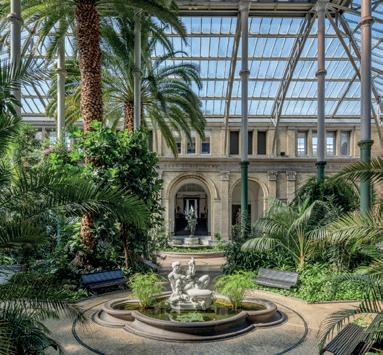
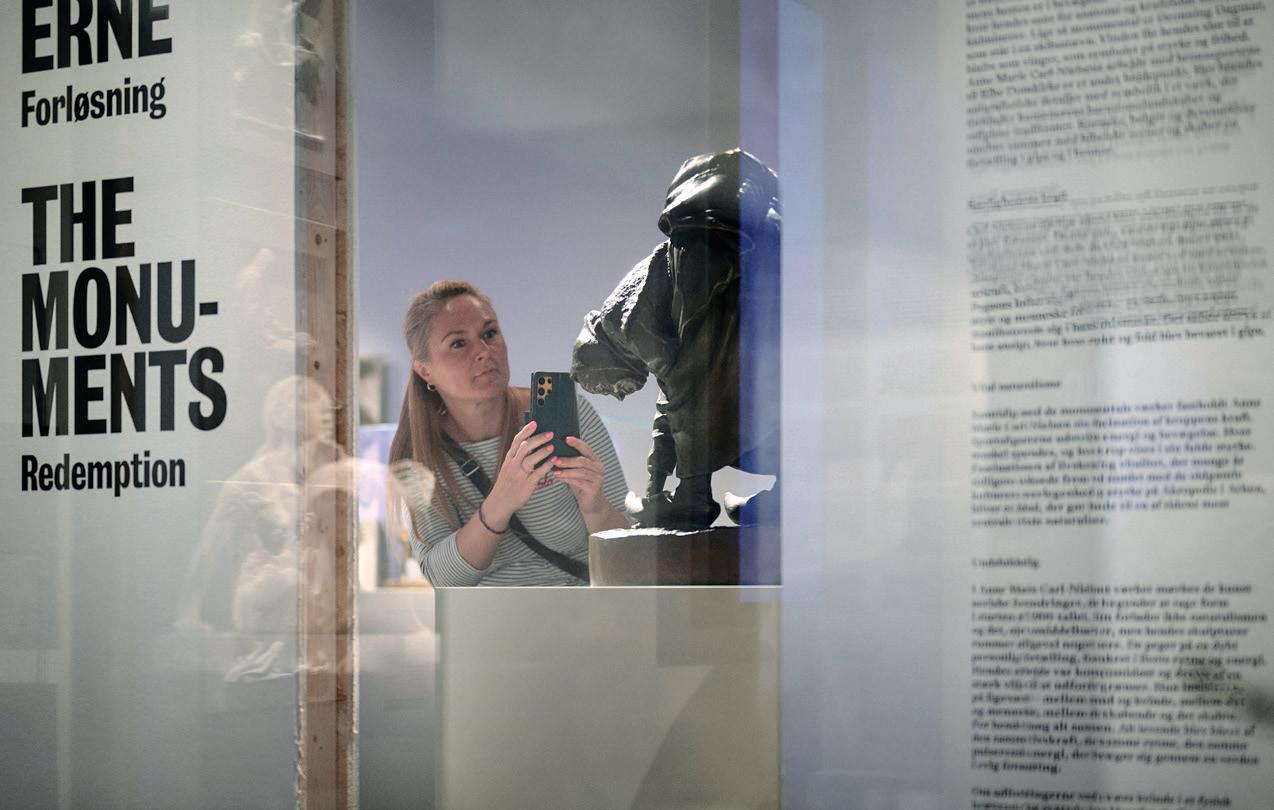
Experience of the Month, Denmark
Discover the world of Anne Marie Carl-Nielsen
Explore a new exhibition that spotlights the life, legacy, and groundbreaking work of Denmark’s most influential female sculptor. Since opening on 21 June at TIDMuseum for Odense, the exhibition Anne Marie Carl-Nielsen. Sculpting Lives invites visitors into an immersive sculptural realm.
By Heidi Kokborg | Photos: Ard Jongsma
Anne Marie Carl-Nielsen (1863–1945) was a pioneer. As the first woman to execute both an equestrian statue of a monarch and monumental bronze doors for a cathedral, she redefined the possibilities of public sculpture. The exhibition Anne Marie Carl-Nielsen. Sculpting Lives brings her work and vision into the present, offering an encounter with an artist whose presence remains relevant. With nearly 200 original models and sculptures on display, ranging from intimate studies to grand figures, the exhibition is a celebration of her artistic mastery and timeless worldview.
A sculptural bond with nature
Born and raised on a farm in southern Denmark, Anne Marie Carl-Nielsen grew
up surrounded by animals – horses, cattle, sheep – and it was here that she developed her instinctive connection to the living form. That early exposure became the foundation for a sculptural style deeply rooted in movement, anatomy, and vitality. Her horses, bulls, mermaids, and centaurs do not just depict; they breathe, move, and radiate intent.
“She believed in the life force as what connects people, animals, and nature. She created sculptures that pulse with life and movement,” says Emilie Boe Bierlich, curator of the exhibition and head of the Anne Marie Carl-Nielsen Centre. In Anne Marie Carl-Nielsen’s hands, materials like clay, bronze, plaster and wax are shaped into organic forms
where humans and animals exist not in hierarchy, but in harmony. This philosophy runs through the entire exhibition.
As visitors move through the space, they are invited to experience Anne Marie Carl-Nielsen’s perspective not as a historical artefact but as a living idea – one that challenges how we understand ourselves in relation to the world around us.
“She didn’t see humans as above nature. Quite the opposite: she let everything melt together in a living whole,” says Bierlich.
From national landmarks to delicate artwork
Anne Marie Carl-Nielsen is widely recognised for her public commissions, which broke new ground both artistically and socially. Her equestrian statue of Christian IX in Copenhagen and the bronze doors for Ribe Cathedral remain national landmarks. Their scale is commanding and their detail astonishing, but when displayed alongside her more delicate works, they offer a fuller picture
of an artist who was both ambitious and deeply sensitive.
“She worked from tiny figures to monumental public sculptures, and when you see them all together, you really feel her artistic importance,” says Mette Stauersbøl Mogensen, head of development at TID - Museum for Odense. The exhibition reveals not just technical skill but a persistent emotional current that runs through her entire body of work.
Anne Marie Carl-Nielsen’s story is as compelling as her art. A woman who chose sculpture over societal expectations, she developed an independent career, even separating from her husband, the celebrated composer Carl Nielsen, to prioritise her art. Their relationship, however, remains an essential part of her story. Visitors wanting to explore that creative bond further can continue their journey at the Carl Nielsen Museum nearby, which offers a look at the composer’s life and work.
A living conversation
To extend Anne Marie Carl-Nielsen’s vision into the contemporary moment, TID - Museum for Odense commissioned recognised artist and filmmaker Jesper Just to create a new installation in conversation with her work. Using infrared film, light, sound, and rhythm guided by breath,
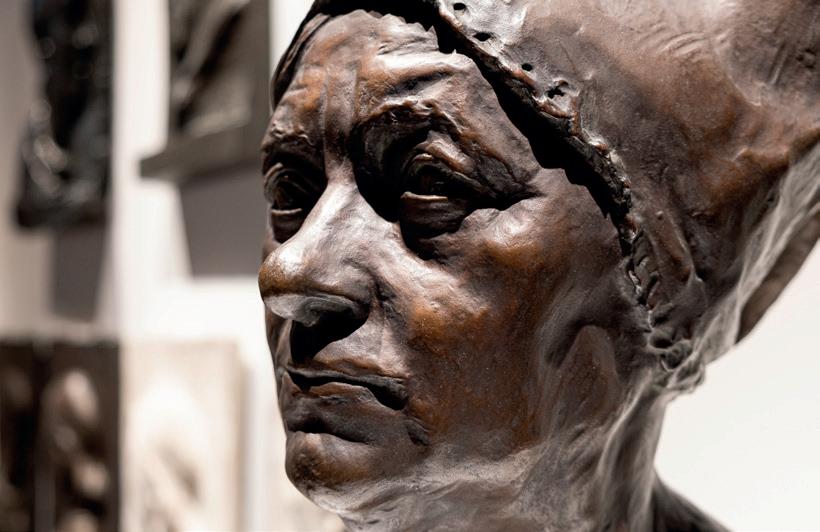
Just has crafted a large-scale multimedia piece that engages all the senses.
“Jesper Just’s work is not just a tribute – it’s a living conversation with her art. He dissolves her sculptures and creates a sensory space where everything moves and breathes,” says Bierlich. Accompanied by music composed by August Rosenbaum, the installation invites viewers to slow down, listen, and enter into a shared experience of form, movement and presence.
This reinforces what the exhibition captures so beautifully: Anne Marie Carl-Nielsen did not sculpt static symbols or frozen monuments. She shaped
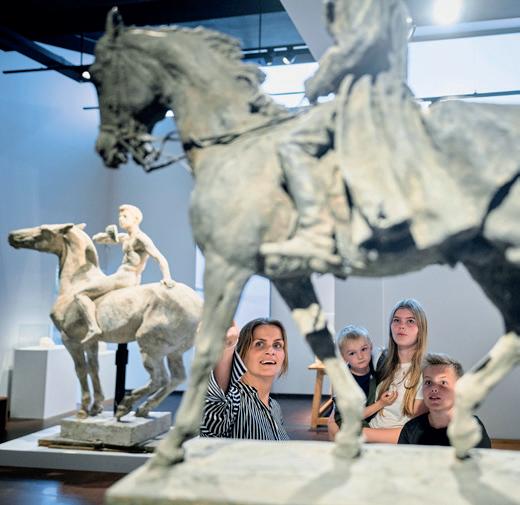
living forms – bodies and beings that continue to speak, move, and inspire.
Whether you come to marvel at the monumental, reflect on the personal, or simply lose yourself in the rhythmic breath of bronze and film, Anne Marie Carl-Nielsen. Sculpting Lives offers an opportunity to experience the power of sculpture as something not just seen, but deeply felt.
www.museumodense.dk/tid-museumfor-odense
Facebook: TID - Museum for Odense
Instagram: @tid_museum_ for_odense

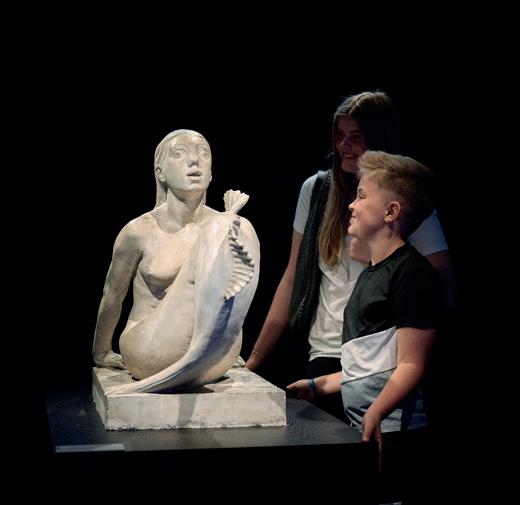
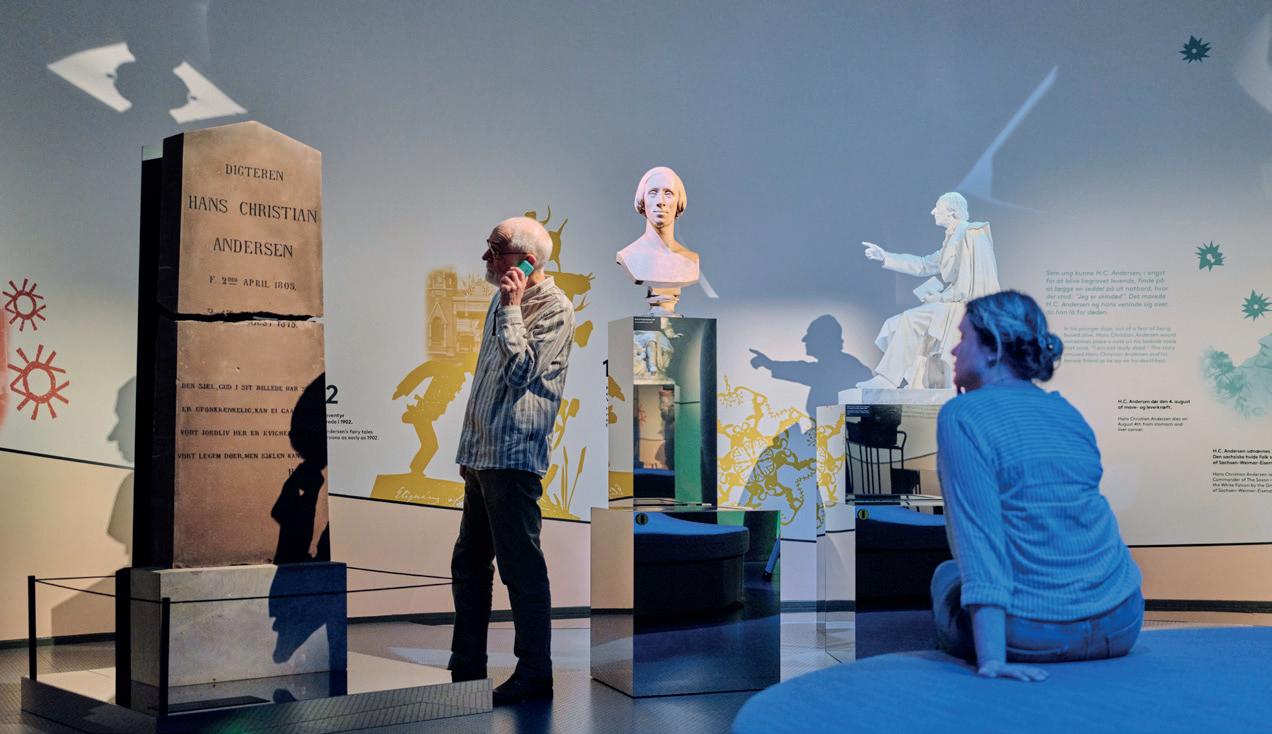
Experience of the Month, Denmark
Nowhere else brings you closer to Hans Christian Andersen
Experience the life and legacy of Hans Christian Andersen in a museum like no other, where fairy tales come alive through immersive architecture, original artefacts, and playful storytelling. Step into the poetic universe of Denmark’s most beloved writer and discover a world where imagination, creativity, and community are at the heart of the exhibition.
By Heidi Kokborg
Few names are as closely woven into the fabric of Danish culture as Hans Christian Andersen. Known around the globe for his fairy tales, Hans Christian Andersen’s legacy lives on in a truly special place: H.C Andersens Hus in Odense.
Since 2021, the museum has welcomed over 200,000 visitors per year – with more than a third arriving from abroad. And now, just in time for the 150th anniversary of Hans Christian Andersen’s death in August, the museum has reopened with a renewed and enriched exhibition that brings his life and stories even closer.
More than a museum
What makes H.C Andersens Hus stand out is not just the quality of the collection, but the way it tells stories. Designed by world-renowned Japanese architect Kengo Kuma, the building is an experience in itself. Winding above and below ground, it invites guests to not simply observe, but to discover, too.
“Our visitors are enthusiastic about Hans Christian Andersen. We have worked hard to create an even better experience via an inspiring and playful encounter with Andersen’s exceptional and
far-reaching authorship,” says Henrik Harnow, director at Museum Odense.
The updated exhibition draws on experience and visitor insights gathered since the museum’s opening, blending knowledge with sensory experience. Whether walking alone or with a companion, you are invited to reflect and connect through sight, sound and space. Visitors can activate chapters in an audio guide –available in Danish, English, German and Chinese – which offers an unfolding narrative that adapts as you explore.
From artefacts to imagination
At the heart of the museum lies a unique collection of original artefacts – from Hans Christian Andersen’s personal belongings to his paper cuttings, travel items, and handwritten notes. This direct, tangible connection to the author’s life is rare. As head of development Mads
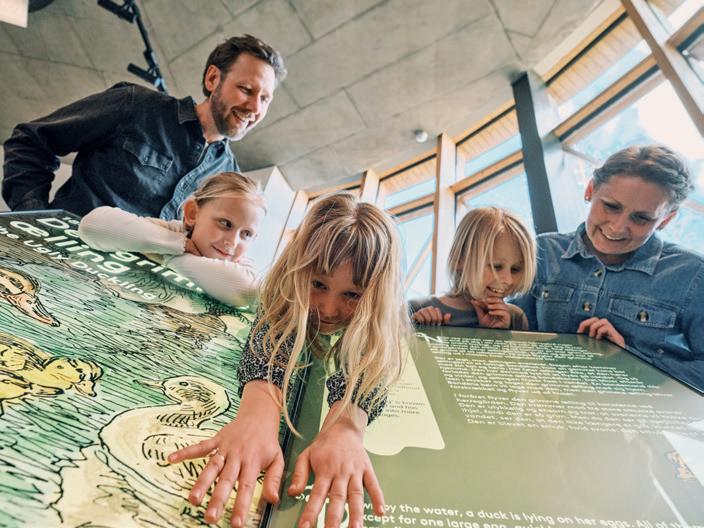
Thagård Runge explains; “It’s essential for a museum like Hans Christian Andersen’s House to continue to evolve and ensure that the content remains relevant to visitors. That is part of the strategy for H.C Andersens Hus.”
The new exhibition incorporates more interaction, expanded cultural-historical content, and the option to follow a literary audio narrative with Hans Christian Andersen at its centre. “Through the first seasons, we’ve gained insights into how people move through the museum and how they receive the exhibition. The new exhibition builds on our observations and audience research, and we hope it sparks even more imagination in both young and adult museum guests,” says Runge.
Play, creativity, and community
A highlight for families is the enchanting Ville Vau children’s universe. Here, kids can dress up in costumes inspired by Hans Christian Andersen’s tales and play in themed rooms that echo his beloved stories. The space is popular with children up to around age ten and offers hours of imaginative play for both children and their parents. For older children and teens, the main exhibition offers engaging, creative points of connection –from the very large dogs of The Tinderbox to interactive installations.
Community is key to the museum’s vision. From its architectural flow to the use of audio storytelling, the design encourages visitors to share the experience. “We have particularly focused on creating a sense of togetherness in the museum experience, for both children and adults. This includes a new audio system, so they can better experience and share the visit.” says Harnow.
The updated exhibition was made possible thanks to a DKK 21 million donation from A.P. Møller and Chastine Mc-Kinney Møller’s Foundation for General Purposes. The Dutch firm Opera, known for ex-
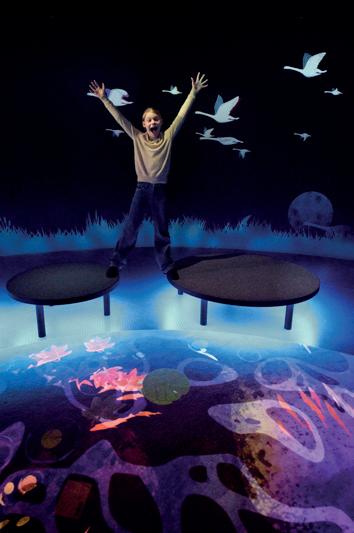
hibitions at the British Museum and the Titanic Belfast, led the redesign.
A place for everyone
Whether you are a local, a curious traveller, or a lifelong fan of Hans Christian Andersen, the museum invites you into a shared space of learning and creativity. No other place in the world brings you closer to the author’s life and work.
Once you’ve enjoyed what the museum has to offer, you can indulge in a visit to Café Deilig, to enjoy a quiet moment amid the poetic surroundings. Just like Hans Christian Andersen’s fairy tales, the museum is both timeless and deeply human – a place where imagination, memory, and community meet.
www.hcandersenshus.dk
Facebook: H.C. Andersens Hus Instagram: @hcandersens.hus
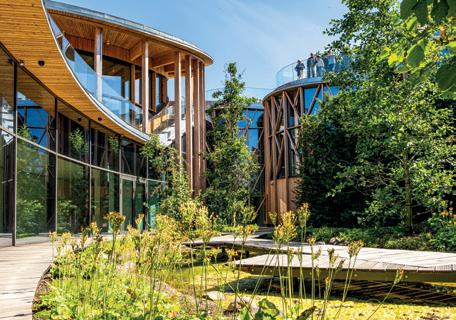
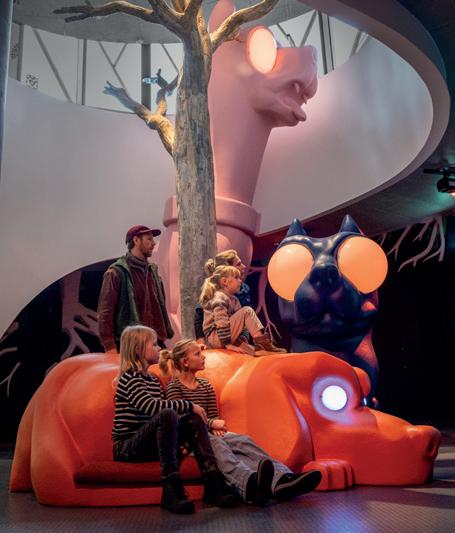
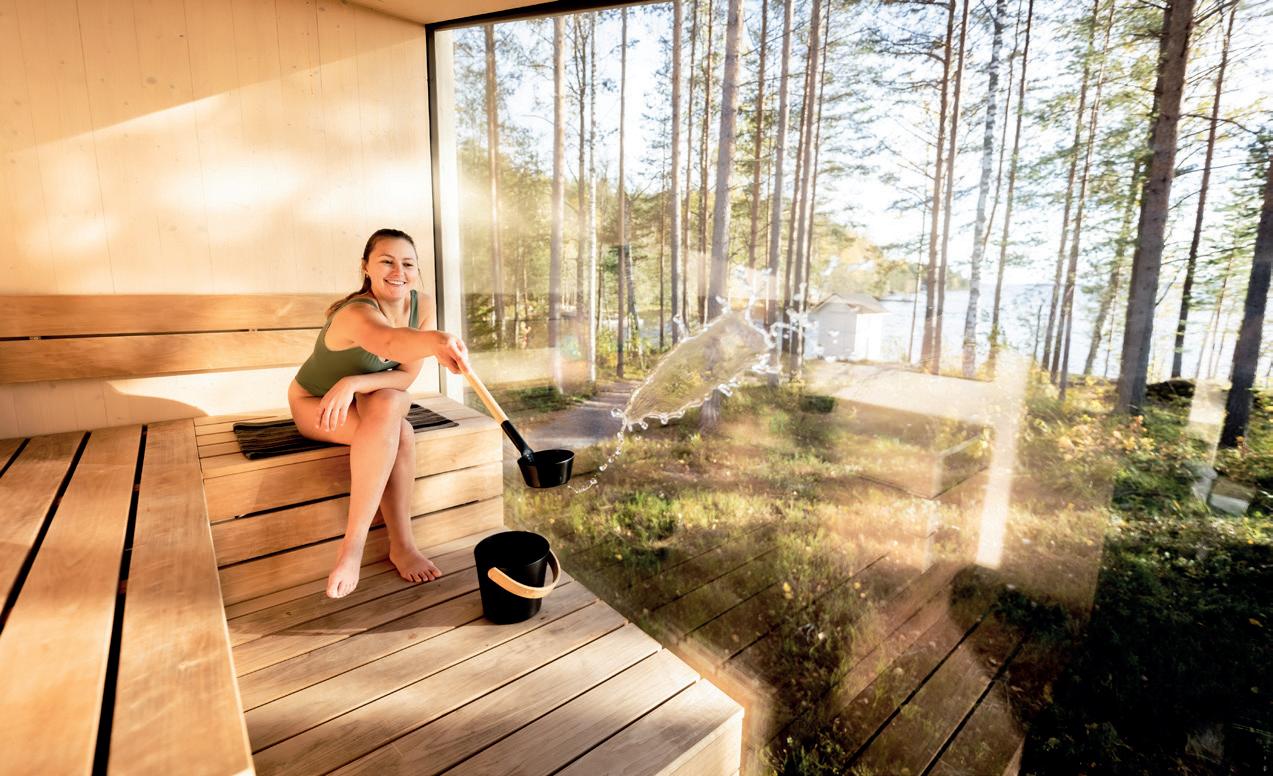
Experience of the Month, Finland Experience the Finnish sauna culture in Lake Saimaa
Located in the heart of Finland’s lake district, the Saimaa region is shaped by water, forest, and silence. Here lies Lake Saimaa – the fourth-largest natural freshwater lake in Europe – a vast expanse that offers some of the most beautiful and unspoilt nature.
By Malin Norman | Photos: Visit Savonlinna
“There are around 15,000 islands and nearly 15,000 kilometres of shoreline here,” says Sari Ahokainen, marketing co-ordinator for the Lake Saimaa 2.0 project. “This is a place to slow down. Whether paddling across calm waters, cycling down countryside roads, or sipping coffee by a lakeside sauna, Saimaa tempts people to reconnect with what’s important; space, stillness, and the beauty of the outdoors.”
Saimaa is home to rare species like the Saimaa ringed seal, found nowhere else in the world. The surrounding forests of-
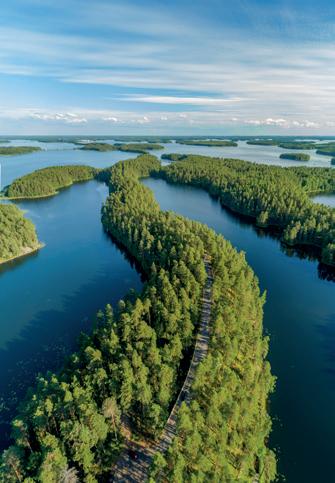
fer an abundance of mushrooms, berries, and the scent of pine. And come autumn, the whole region glows in shades of gold and crimson – a Finnish phenomenon known as ruska.
The towns and villages around the lake –such as Savonlinna, Mikkeli, Varkaus, Imatra and Lappeenranta – offer heritage sites, local markets, and a deep-rooted sauna culture. The sauna tradition is believed to be over 10,000 years old, and Finland has more saunas per capita than any other country, around three million in total.
Unmissable sauna festivals
Savonlinna Sauna Festival in Savonlinna, which takes place on 16 August, is a celebration of the sauna culture. Organised by a small, local sauna society, the event is growing in popularity. Run in collab-
oration with the city of Savonlinna, and supported by Riihisaari - Savonlinna Museum, the festival programme includes activities related to sauna and sauna bathing.
“What’s special about this year’s festival is that for the first time, we will have the Riihisaari Sauna Society's own sauna, built at the EASA Architecture Festival, to use for sauna bathing,” says Ahokainen. “Come to the festival and experience how the sauna, built by architecture students on the Riihisaari island next to Olavinlinna Castle, warms and relaxes!” After the event, the public sauna will be available to use by locals and visitors.
Another sauna festival takes place 27 September in Punkaharju. Here, visitors can check out different types of saunas, for the garden or the boat perhaps, as well as hot tubs. The floating sauna Aava Floating Villa will also be on display, a great accommodation option. On the same day, why not join the “Running through Punkaharju” running race? You can opt for half a marathon, 10km, 5km or 2km.
Lakeside sauna experiences
Lake Saimaa and the sauna are intrinsically linked. At the beautiful resort Kruunupuisto, you can relax in an authentic Inkeritalo sauna, or combine a morning sauna with a lovely breakfast. Kruunupuisto is located in the Punkaharju Nature Reserve, the perfect spot for everyone longing for a connection with nature.
Another fantastic retreat is Kuru Resort, for adults only. With its three-night
sauna experience, you can enjoy up to nine different saunas, indulge in Remi Trémouille’s signature breakfast, dip into natural waters, spend time outdoors, and relax with a guided yoga or relaxation.
For nature lovers and wilderness enthusiasts, a truly Finnish sauna experience awaits in Linnansaari National Park, where you can also spend the night. Or alternatively, enjoy a luxury cottage stay at Kanava Resort.
A cruise on Lake Saimaa on a nostalgic steamship or a handy motorboat is a peaceful way to spend a late summer’s day while enjoying the scenery around Savonlinna. Open Shores Saimaa offers Lake Saimaa cruises for small groups, and day cruises are available as well in summer. On a sustainable cruiser, you can enjoy lake activities and, of course, the sauna.


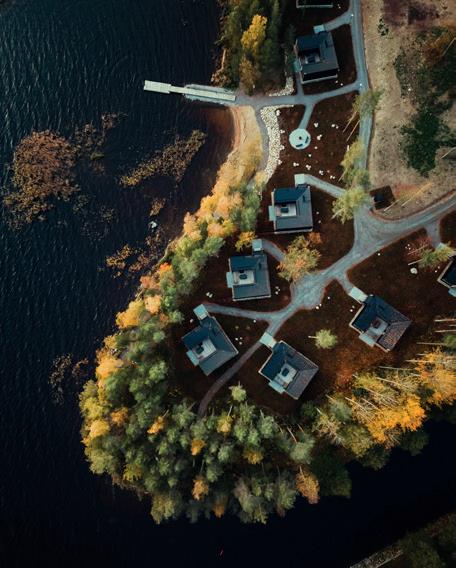
Famous castle and opera in Savonlinna But there is much more to do in the area, apart from sauna experiences. In April, Finland designated Savonlinna as its 11th National Urban Park, centred on the iconic Olavinlinna Castle. Spanning approximately 7,700 hectares, this park blends Savonlinna’s historic town centre, lush green spaces, and Saimaa’s island-rich waters into a single, protected urban landscape.
This year, Olavinlinna Castle celebrates its 550-year anniversary, with a range of events. And Savonlinna Opera Festival is a not-to-be-missed world-class event. The operas for next year have already been announced. The month-long festival is held in the stunning Olavinlinna – creating a dramatic backdrop for the 70,000 visitors.
www.visitsaimaa.fi
Facebook: Visit Lake Saimaa
Instagram: @visitlakesaimaa_official
TikTok: visitlakesaimaa_official
This article was produced as part of the Lake Saimaa 2.0 project, which is co-funded by the EU with funding granted by the Regional Council of South Savo. The main goal of the Lake Saimaa 2.0 project is to develop the Saimaa region into a significant international destination that serves travellers year-round.
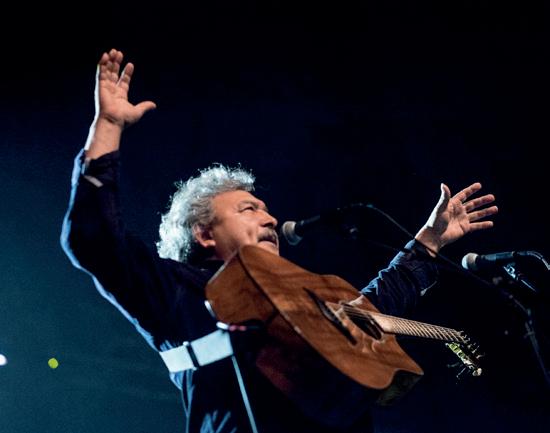

Experience of the Month, Greenland
Add a cultural spark to your Arctic autumn
As the long summer days begin to shorten over Greenland, Nuuk is preparing to come alive with creativity. The Suialaa Arts Festival returns at the end of October, and if you have been dreaming of an Arctic getaway steeped in art, stories, and Greenlandic culture, this is the moment to go.
By Signe Hansen
Held every second year, Suialaa is Greenland’s largest recurring arts festival. Over four days, the capital hosts a vibrant mix of performances, exhibitions, talks, readings and workshops – celebrating both Greenlandic creativity and the wider Arctic and Nordic artistic scene.
“There’s a truly special atmosphere when you experience all art forms at once, and October is the perfect time to visit Nuuk,” says festival manager Pauliina Oinonen. “I think nature is so beautiful – all the plants turn red and yellow, and if you’re lucky enough to get sunshine, it’s the most beautiful light. I highly recommend experiencing it.”
Founded by the Nordic Institute in Greenland and the Municipality of Nuuk, the festival has grown from a Nordic exchange project to an Arctic cultural landmark with strong roots in Indigenous traditions. The programme is as ambitious as it is eclectic – and this year, more intimate. “In 2025, we’re embracing a
more personal experience,” says Oinonen. “Some concerts will take place in unexpected, smaller venues – allowing the audience to encounter culture in places where it’s not usually found.”
Among the programme highlights are Kiuryaq, a multidisciplinary Arctic theatre production inspired by northern lights mythology, and Qullaq, an ambitious musical collaboration fusing classical and rhythmic elements, featuring Greenlan-
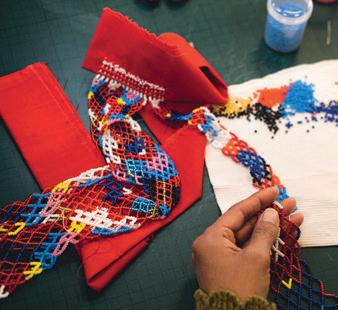
dic and international stars. Nive Nielsen, who has not performed in Nuuk for years, returns to the stage, while Nuka Alice teams up with the choir Ingiulik in a powerful meeting of choral arrangement and drum dancing.
Visual art includes Sobey Art Award-winning Inuvialuk artist Kablusiak, and an exhibition at Nuuk Art Museum showcasing leading Greenlandic and Sámi contemporary artists. Meanwhile, the architecture and literature programme converges in Joar Nango’s Girjegumpi, a mobile library installation hosting this year’s talk stage. Literature lovers can also look forward to the Arctic Art Book Fair.
A tribute to the late Greenlandic multi-artist Kunngi (Frederik Kristensen), whose poem Suialaa gave the festival its name, runs as a subtle thread throughout the programme. “Suialaa refers to a breeze – something light and fleeting that moves something,” Oinonen explains. “That’s what we want the festival to do: stir the air, bring something into motion, if only briefly.”
Suialaa opens 23 October, 2025. Tickets: www.suialaa.gl Instagram: @suialaa_festival

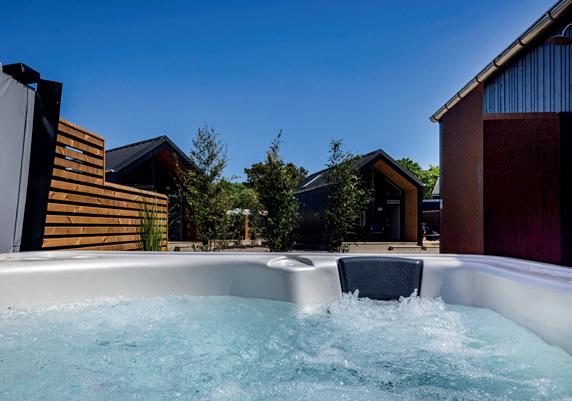
Holiday
Profile of the Month,
Denmark
Camping with a difference in historic Ribe
Just a short stroll from Denmark’s oldest town, Ribe Camping offers an ideal base for exploring cobbled streets, Viking heritage, and the Wadden Sea. Named Denmark’s best campsite three years running, it combines tradition with innovation – most recently with the launch of stylish hotel cabins, complete with private Jacuzzis for the ultimate holiday treat.
By Signe Hansen | Photos: Ribe Camping
Founded in 1959, Ribe Camping has long been a beloved destination for visitors keen to soak up Ribe’s rich history and unique surroundings. Today, attractions include the town’s iconic cathedral, the highly popular Viking Museum, and the evocative new Witch Museum, which tells the story of Denmark’s last witch burnings not far from the campsite.
Still, many newer guests can think of camping as rustic and simple – something Ribe Camping aims to challenge. Owner Anne Schested Hansen explains; “When people think of camping, they often picture a basic cabin. But our new hotel cabins have outdoor Jacuzzis, private bathrooms, proper beds with bed linen, and towels. Guests can just check in, relax, and check out again – just like at a hotel.”
Catering to international travellers, each of the ten new hotel cabins also has all the facilities of regular camping cabins, including a fully equipped kitchen and a
comfortable dining area, which means that guests can enjoy both the comfort of a hotel as well as the charm and laidback atmosphere of a campsite.
For families, Ribe Camping offers a range of activities during summer, along with two fun-filled playgrounds and a heated pool, which is open throughout the summer months. In August, a brandnew indoor activity centre opens with air hockey, table football, ping pong, and interactive play areas for younger children. The campsite’s new facilities also include
two spacious event rooms, each seating up to 40 guests, ideal for events or extended families travelling together.
Finally, the campsite has 430 pitches, 44 cabins of different sizes, a large event room, stylish service rooms, an outdoor kitchen, and a cosy café serving everything from breakfast to tapas dinners, with all facilities maintained in top-notch condition throughout the year. It is no wonder that its owner is not afraid to ask guests how their stay has been. On the contrary, Hansen says, it is the best part of her job. “I love asking guests how their stay has been. We’re never afraid to ask – a lot of people say it’s the best place they’ve stayed, and that makes it all worthwhile.”
www.ribecamping.dk Instagram: @ribecamping
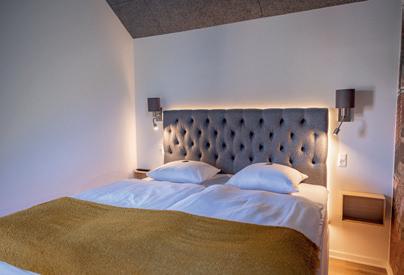

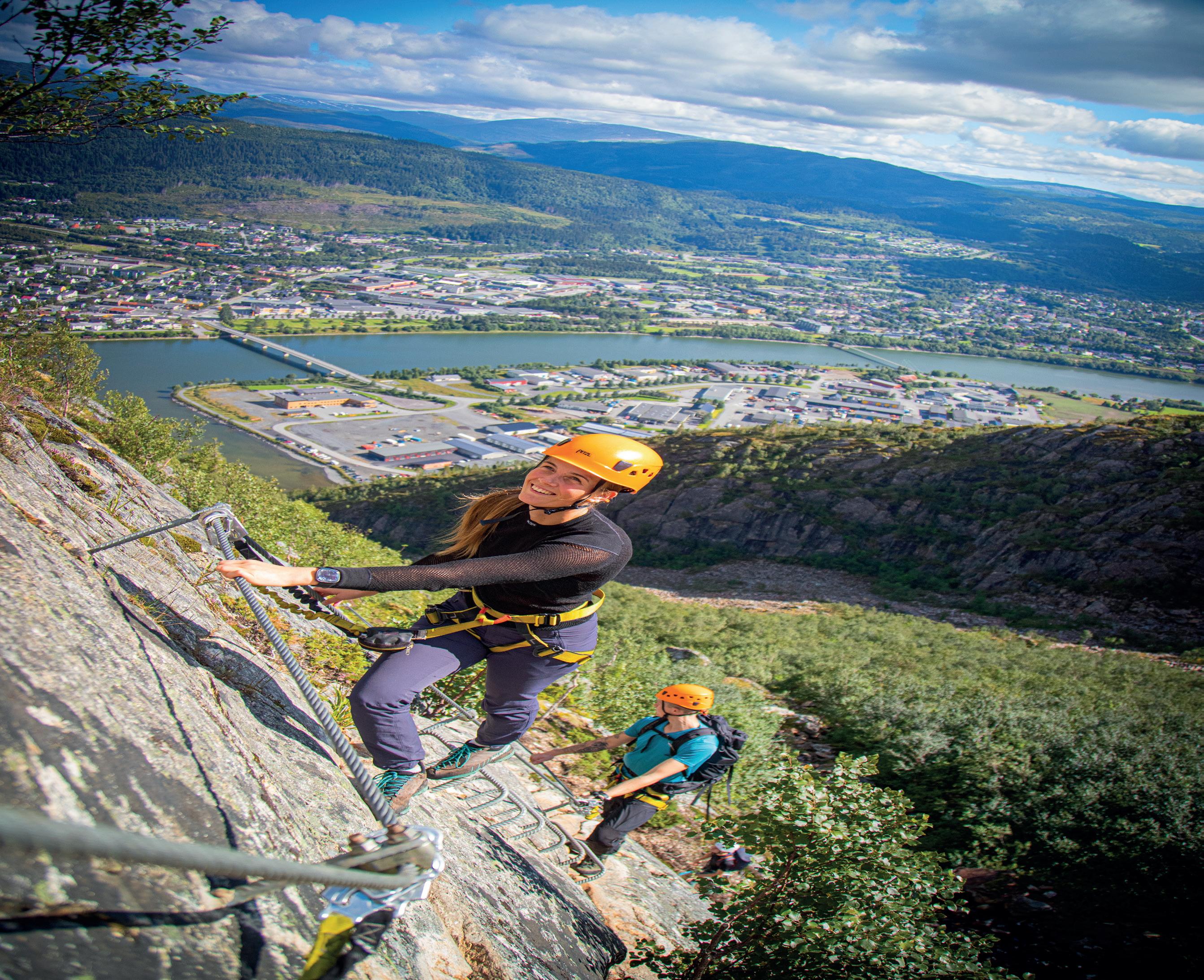

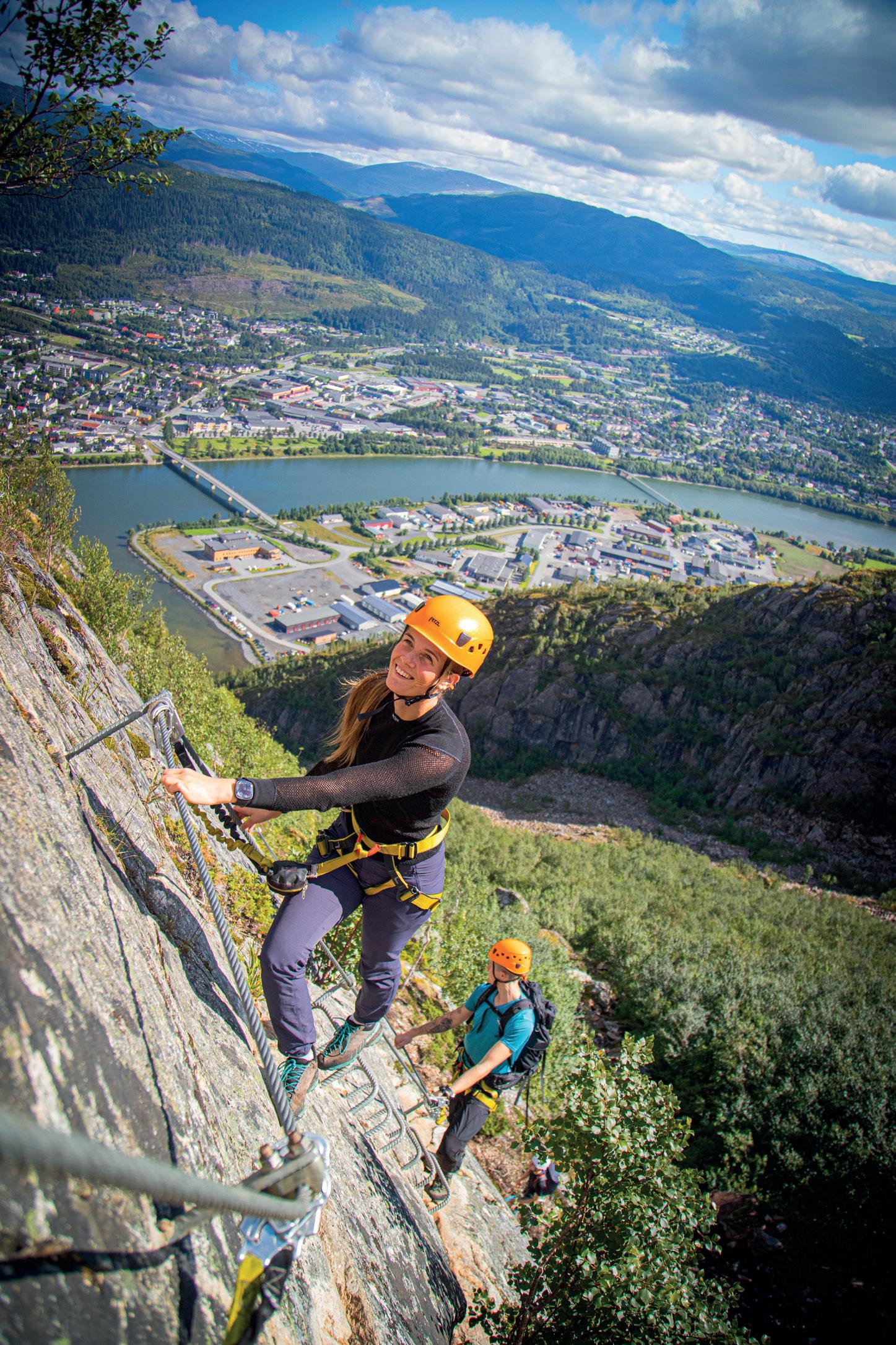



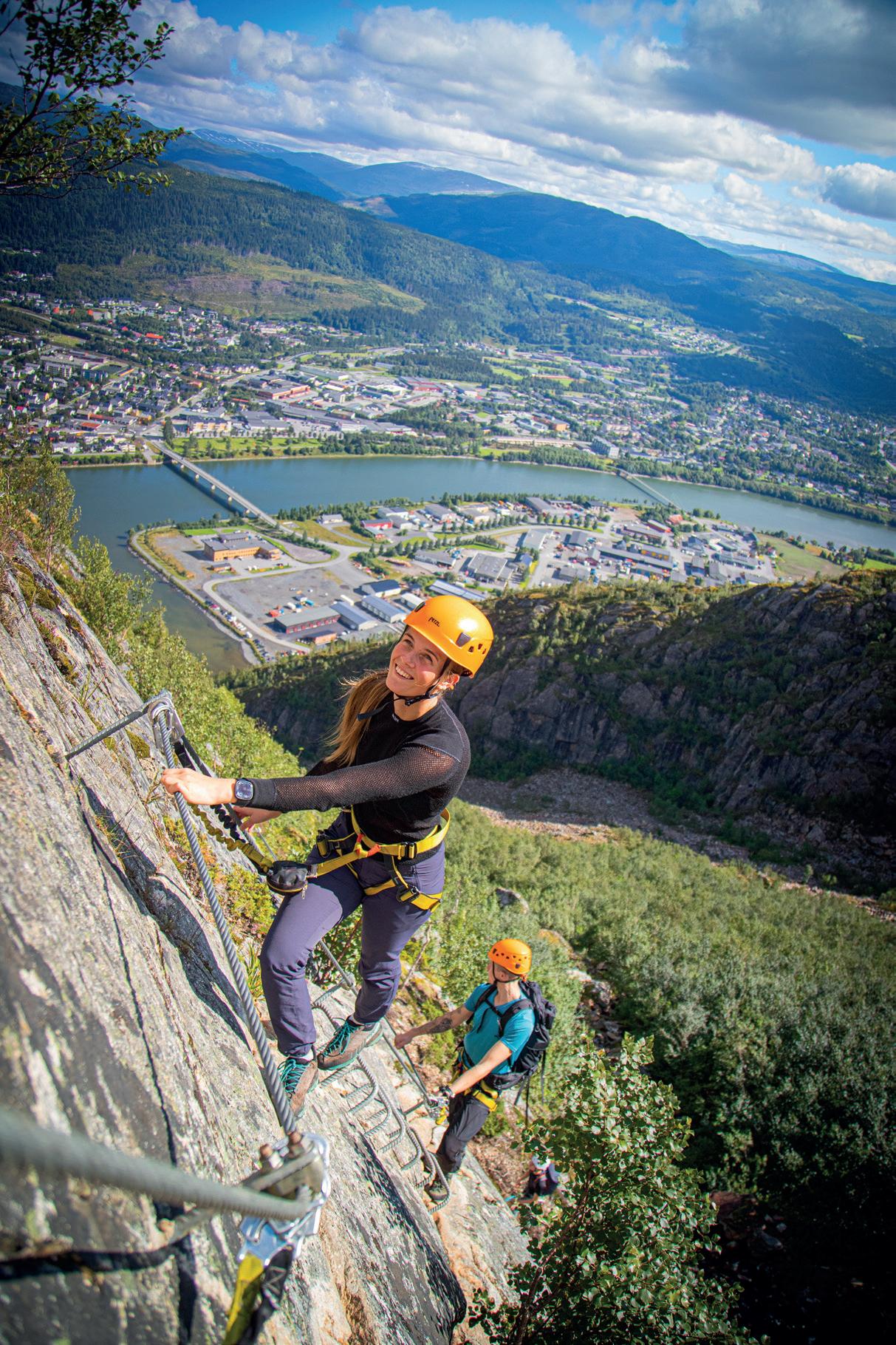

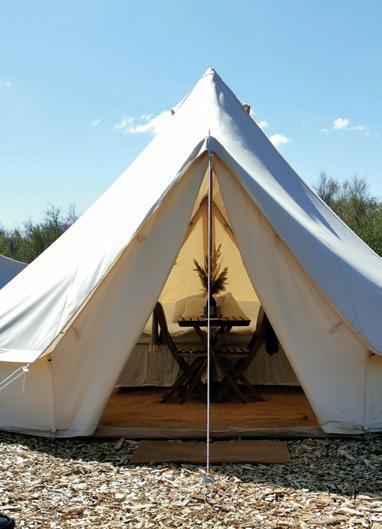
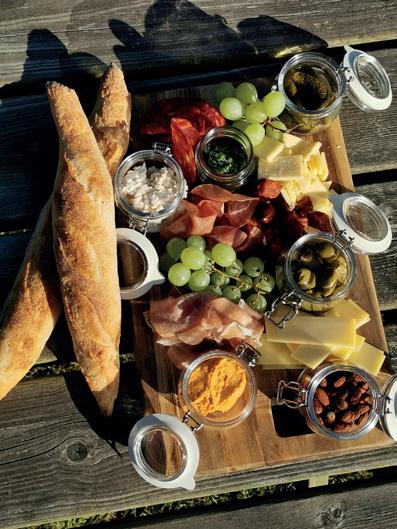
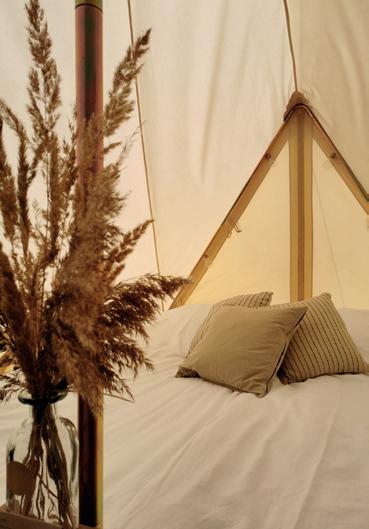
Holiday Profile of the Month, Denmark
Where luxury and outdoor living meet
Tucked away on the idyllic northeast coast in Denmark, Glamping Skovgaardsminde offers a break from our busy lives. A place made for slow living, deep breaths, and presence. It is an experience that stays with you long after you have packed your bags and waved goodbye.
By Heidi Kokborg | Photos: Glamping Skovgaardsminde
When Lisanne and Karina Metselaar Brorsen moved from Copenhagen to Northern Jutland in 2020, they did not plan to open one of Denmark’s most renowned glamping spots. However, life and lockdown happened, and before the couple knew it, they were offering glamping. A glamping spot that has become so beloved that it was awarded Denmark’s second-best glamping destination in 2025.
From the outset, Karina and Lisanne wanted to create a place with heart and soul. “It has to feel personal, authentic, and cosy. A place where you notice the details and feel cared for,” says Karina. Each tent is styled with intention, combining simple pleasures with just enough comfort: real beds, soft lighting, and a space to breathe.
Slow living, beautifully done
At the heart of the glamping experience at Skovsgaardsminde is a commitment to slow living. “Nature slows you down, from boiling water for a cup of coffee over a fire to biking to the beach. Suddenly you have more time to talk and notice all the little things,” smiles Lisanne.
Complimentary bikes are provided, which guests can use to bike to the beach, forest, town or wherever the wheels take them. There are also walking and hiking trails galore; from the tents, a path leads to Hou Plantation and connects with the North Sea Trail.
Glamping Skovgaardsminde has a woodfired sauna to offer guests, too, which is perfect for rainy afternoons or quiet eve-
nings. “We provide the wood, and people can fire up the sauna themselves. It’s about taking your time when you’re staying here – that’s the magic of this place,” says Lisanne.
Everything at Glamping Skovgaardsminde is made with the utmost care, from curated packages and homemade food to welcome emails full of local tips. “We have put our hearts into this. Guests tell us that it feels like stepping into someone’s home, and that means the world to us,” says Karina.
And if you visit Glamping Skovgaardsminde on a Sunday – or you are simply in the area – do not deprive yourself of a visit to the cosy farm café. Enjoy a cup of coffee and a delicious sourdough bun while taking in the beautiful surroundings. What could possibly be more wholesome than that?
www.skovgaardsminde.dk/en/ Facebook: Glamping Skovgaardsminde Instagram: @glamping.skovgaardsminde
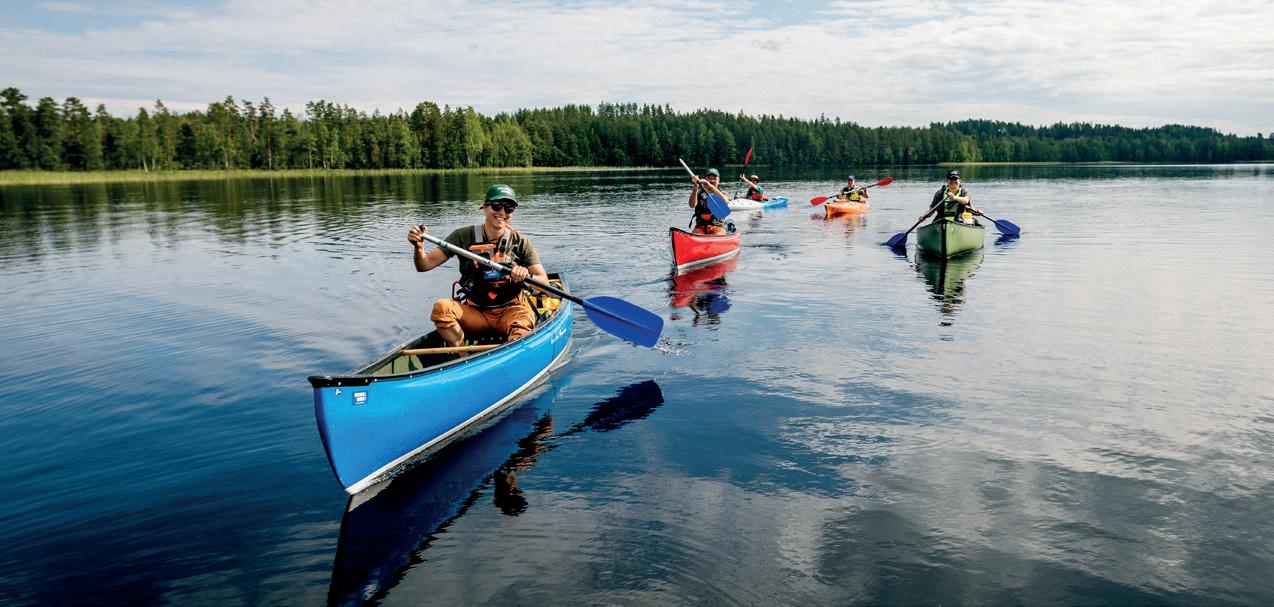
Destination Profile of the Month, Finland
Ready, Set, goSaimaa! It is Saimaa, but not as you know it
In the Lappeenranta and Imatra region of southeast Finland, Lake Saimaa is famous for its silence, saunas and scenery. But nowadays, this pearl of the Finnish lake lands has a second identity as a hub for active travellers, athletes and outdoor enthusiasts of all ages and abilities.
By John Weston | Photos: goSaimaa
The eastern lake region of Finland is calm and spacious. In high summer, cyclists trace the shorelines of its lakes and archipelagos, and paddleboards cut across the still water. A heron stands poised on a reed bed, watching as a kayak glides past a sunlit bay. Stillness and motion weave together seamlessly.
The 15,000-kilometre shoreline of Lake Saimaa stretches across Lappeenranta, Imatra and multiple other cities and smaller communities. It is known for its clean air, cottage culture and the endangered Saimaa ringed seal, unique to Finland’s largest lake. But the region is now also becoming known for its growing network of sports and outdoor activity options. “There’s a growing movement here in Rauha-Ukonniemi,” says the team at goSaimaa, the region’s destination marketing
organisation. “We’re becoming a recognised base for sports and outdoor activity. The infrastructure is already here – now we’re building the identity to match.”
A year-round base for active travellers
The area offers a wide mix of facilities. Within the Rauha-Ukonniemi area alone, visitors find stadiums, cross-country ski
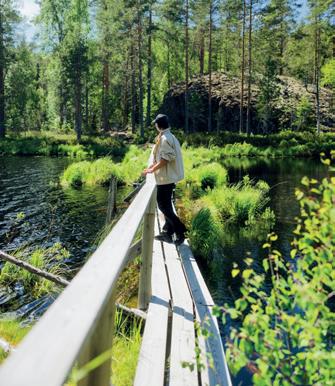
tracks, an ice rink, tennis courts, mountain biking trails, indoor gyms, a pump track, a beach and two large spas – all within a walk or short drive.
In winter, a first-snow ski track attracts national athletes for early training, using snow stored from the previous winter to get a head start before the weather turns (look out for a winter focus on Saimaa in Scan Magazine later this year). In summer, the 150-kilometre Saimaa Archipelago Route draws cyclists from Finland and beyond, with bike hire available onsite. Families might stay for a weekend, others come for training camps, trail running, or to play padel and footgolf before winding down in a lakeside sauna. “You can be physically challenged and completely restored in the same day,” says Katri, who manages regional projects. “That’s what keeps people coming back.”
Nature at your doorstep
Nature is never far away. “You walk out of your hotel, and you’re in it,” adds Katri. “You can step from your balcony into the forest, or swim before breakfast in the lake.”

Saimaa’s trails crisscross wooded islands, past open-sided kota shelters and campfire spots where you can grill sausages over open flames. At Lammassaari, a four-kilometre loop-through old-growth forest, Katri pauses. “This is where I feel I can breathe again,” she says. “You come out as a better version of yourself.”
Accessibility matters here, too. Many trails and spas cater to wheelchair users or those with additional mobility needs, reflecting a regional ethos that outdoor life should be open to everyone.
Saimaa by taste and temperature
Wellness in Saimaa also comes by way of heat and food. There are sauna boats and raft saunas, lakeside smoke saunas and daily rituals at the region’s two main spas. There are over 70,000 summer cottages in the wider Saimaa area, and none without a sauna.
Local ingredients define the menu. Get your omega oils in the form of lightly
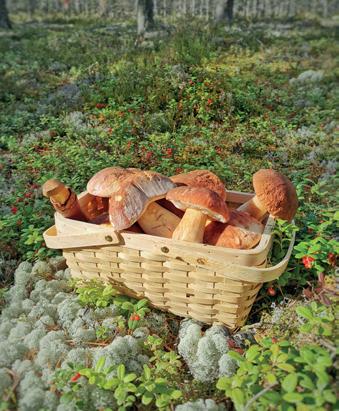
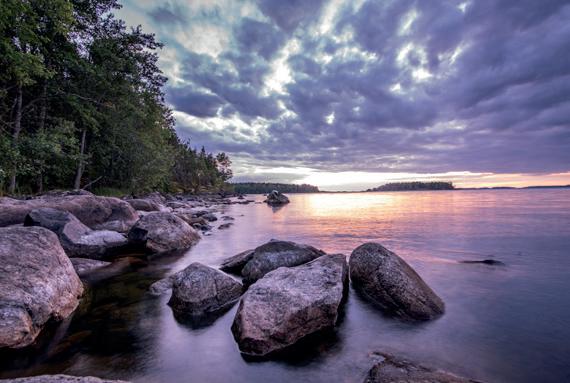
breaded and pan-fried muikku (vendace), and your antioxidants from sweet forest berries ripened under the midnight sun. For a heartier summer bite, choose ahven (perch) or the nation’s favourite Karelian pies (thin rye-crust filled with rice or potato), served the traditional way with creamy munavoi (egg butter), or with a diverse range of cold and hot locally sourced toppings. The region holds the title of European Region of Gastronomy 2024, with its culinary identity drawn from both Finnish and Karelian traditions. For the full native experience, try the Vety & Atomi lihapiirakka – a hot savoury doughnut pie snack stuffed with meat and rice – or sample smoked reindeer with a glass of chilled lingonberry or elderflower fizz.
A rough diamond in the making goSaimaa’s current project, funded through EU and municipal support, aims to unite previously separate businesses under a single brand. “Until now, a lot of good things were happening – but independently,” they explain. “We’re now

shaping a coherent destination, not just a collection of activities.”
But this is not just a marketing and branding exercise. There is still room to grow, with an emphasis on slow and sustainable development. The region’s tourism once relied heavily on Russian visitors crossing the nearby border – now quieter due to geopolitical tensions. That shift has prompted a reorientation and diversification to appeal to visitors from elsewhere in Europe.
For the traveller, the appeal lies in how these layers overlap. You can go trail running or cycling in the morning, then lower yourself into a hot sauna as the sun sets over the lake. Saimaa supports both activity and rest, without forcing a choice between the two. This dual identity has always been there, but now it is bolder, clearer and more intentional. The famously quiet Finns are starting to say the quiet part out loud – and you are invited!
www.gosaimaa.com
Facebook: Lake Saimaa Finland
Instagram: @gosaimaa
YouTube: gosaimaa


The Rauha-Ukonniemi development project has received funding from the Regional Council of South Karelia through the Sustainable Growth and Vitality of Regions (AKKE) programme.

Hotel of the Month, Norway
Beckerwyc House: an island experience unlike any other
You will find boutique hotel Beckerwyc House in the village of Bekkjarvik, in the Austevoll archipelago. The hotel’s shining star is the gastronomic restaurant Mirabelle, led by acclaimed chef Ørjan Johannessen, who won the world’s most prestigious international culinary competition, Bocuse d’Or, in 2015.
By Maria Sødal Vole | Photos: Tom Haga
Picturesque Bekkjarvik is nestled within scenic surroundings on one of the more than 650 islands in the stunning archipelago south of Bergen. This charming old fishing village in the heart of Fjord Norway has been a safe port for seafarers and travellers since the 17th century – in fact, it has even hosted King Christian IV. At the historic Bekkjarvik Gjestgiveri, Johannessen’s family has welcomed visitors for more than 40 years.
While the traditional guesthouse is a popular choice, Johannessen dreamed of adding to the destination by creating a modern hotel experience with a gastronomic focus – a place that honours the history and tradition of the local area
while maintaining an international feel. “It’s a daring venture in the tiny village of Bekkjarvik,” Johannessen says. “This place is our home, and we want to continue to grow this unique destination.”

Beckerwyc House opened its doors in June 2023 to great acclaim. Designed by renowned architect Ajas Mellbye, Beckerwyc House is inspired by the sea, mountains, and stunning natural scenery in Austevoll. “It’s a visionary building that provided space for our big ideas to unfold,” says hotel director Rønnaug Nymark. “Our feet are firmly planted in our local destination with its vibrant community, and we’re committed to building upon the rich heritage of the area.”
Modernity and tradition in perfect harmony
Beckerwyc House takes its name from centuries-old Dutch sea charts, which presented the historic harbour at Bekkjarvik as Beckerwyc – a nod to the area’s proud history as a hub for international fishermen and merchants. “It’s a name that belongs to history, and we value honouring our local heritage,” Johannessen says.
The impressive hotel boasts 20 exclusive rooms and suites, a stylish barception (a blended lounge, bar and reception area), a large terrace featuring a Jacuzzi and panoramic views of the surrounding area (such as Folgefonna National Park and the Hardangerfjord), plus a sleek chambre séparée for private events and business meetings. The interior has been carefully developed by Sol Design, creating a warm, harmonious space reflecting the hotel’s focus on modern comfort and understated luxury.
The fine-dining restaurant Mirabelle by Ørjan Johannessen is located on the top floor, overlooking Bekkjarvik’s scenic harbour. Here you will also find Beckerwyc Food Academy – a dedicated space for delivering cooking courses with a diverse focus, alongside private courses tailored to individual groups. Outside the hotel, guests can enjoy the peaceful atmosphere in the area’s idyllic gardens, featuring a beautiful array of flowers, lush greenery and several historic buildings.
Local, seasonal flavours with international flair
With elegant interior, an open kitchen and large windows allowing for excellent views of the stunning scenery, the sophisticated fine-dining restaurant Mirabelle takes guests on a culinary journey around the island, and indeed the world.
In the elegant bar and lounge area, guests can enjoy a range of signature drinks and an extensive wine selection, before undertaking Johannessen’s thoughtfully crafted gastronomic experience. Known for championing locally sourced ingredients, the exclusive restaurant’s 16-course tasting menu offers flavours inspired by both old and new traditions.
While Johannessen values his roots in Bekkjarvik and bases the menu on the finest local ingredients, he and his closeknit, international team draws inspiration from their travels around the globe. “Island gastronomy focuses on ingredients from our island, but with inspiration from around the world and from our own lives,” he says. “It’s an authentic, immersive experience.”
In the morning, a homemade breakfast with treats such as ham from Bergen, cheese from Fana, apple juice from Hardanger, fresh smoked salmon, seasonal berries and delicious baked goods can be delivered to guests’ rooms.
Diverse experiences
Beyond enjoying the hotel and restaurant, a diverse range of local experiences await at Bekkjarvik. While taking part in a fishing trip is a very popular choice among guests (especially since you can learn how to prepare the catch of the day with a cooking course at the hotel’s academy afterwards), other recommended outdoor activities include RIB tours, coastal excursions, hikes in the
surrounding nature, and a refreshing dip in the sea.
While Bekkjarvik is a fantastic destination all year round, winter is an excellent time to visit. During the winter months, you can experience the breathtaking scenery at its most peaceful and unwind with a restorative break away from the hustle and bustle of the city. The seafood from Fjord Norway is considered some of the world's finest, and during winter, you can try it at its most fresh and flavourful.
Bekkjarvik is off the beaten track but well-connected to the mainland with a one-hour boat trip from central Bergen. Beckerwyc House serves as an excellent destination for any occasion. Combining unforgettable fine dining, exceptional service, a unique scenic setting, and a wide range of options for activities and experiences, it is a well-rounded destination for the discerning traveller.
www.beckerwychouse.no www.restaurantmirabelle.no Instagram: @beckerwychouse |
@mirabelle_by_orjan
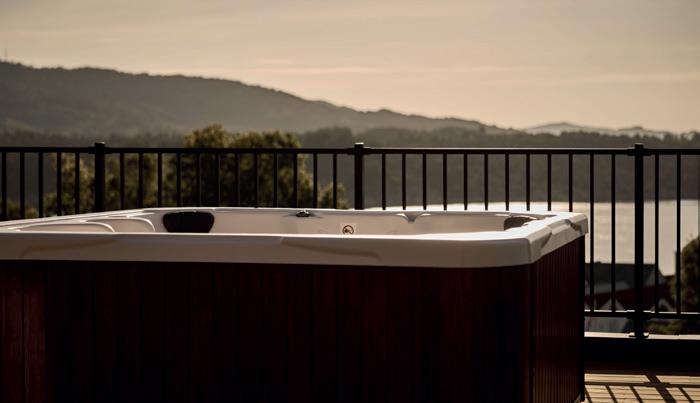
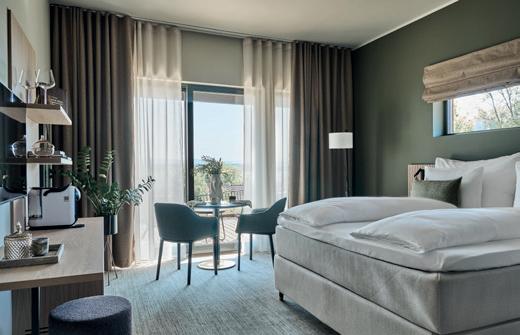
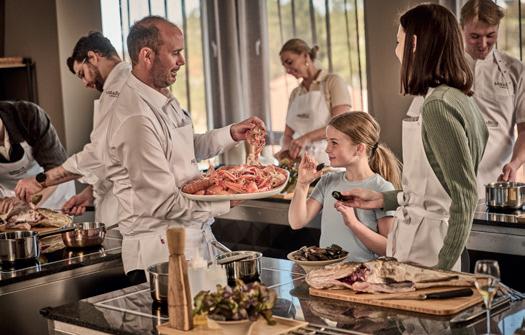
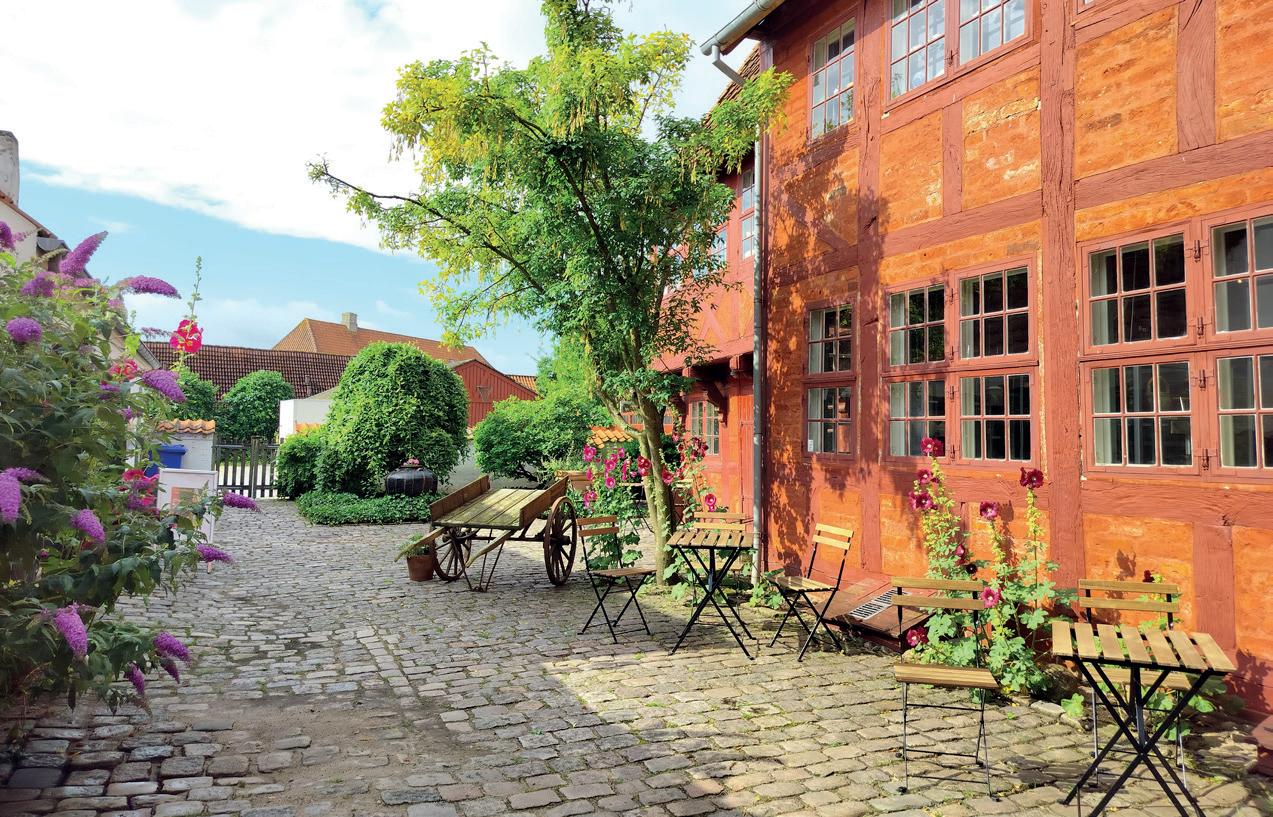
Cultural Profile of the Month, Denmark
Haderslev: a town of kings, cathedrals, and timeless charm
With its cobbled streets, half-timbered houses, and striking cathedral, Haderslev is one of the best-preserved Renaissance towns in Denmark. Birthplace of Danish kings and home to outstanding museums, it enchants visitors with its historic charm and tranquil natural surroundings.
By Signe Hansen
Situated at the southern end of Jutland, Haderslev has alternated between Danish and German rule over the centuries as borders shifted. Today, it offers a fascinating blend of Danish and German heritage. The town’s focal point is Haderslev Cathedral, a towering Gothic structure that has shaped the city skyline since the Middle Ages.
Just a short walk away lies the Ehlers Collection, Northern Europe’s largest pottery museum, housed in a Renaissance building with original wall paintings. As Bent Vedsted Rønne, director of Historie Haderslev, notes; “Haderslev is special because its old medieval street structure is still intact. Unlike many Danish towns, it wasn’t redeveloped in the
post-war period, so you get this sense of walking through centuries of history.”
Ehlers Collection: a museum like no other
Tucked away in Slotsgade 20, the Ehlers Collection is the largest pottery museum of its kind in Northern Europe. Its 6,000 objects range from medieval jars to 19th-century fish platters and vibrant barselspotter – traditional decorated pots used to bring broth or stew to women after childbirth. The museum appeals to both specialists and curious visitors, including ceramic artists seeking inspiration from historical designs.
The collection was founded by Louis Ehlers, a collector from Copenhagen. “He was a true collector, collecting
everything from pins and toys to ethnographic objects from Greenland,” Rønne says. “His fascination with pottery started when he followed in the footsteps of archaeologists working on Copenhagen’s road-rebuilding projects in the early 20th century. When they uncovered historical pottery, he was there to collect what they left behind.”
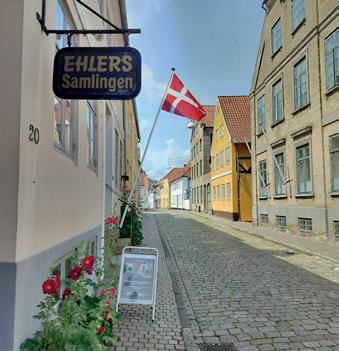

Having just celebrated its 40th anniversary, the museum invites visitors to enjoy not only the impressive collection curated by the collector himself, but also the beautifully restored Renaissance building in which it is housed.
A town built for dukes and kings
At the heart of Haderslev stands its cathedral, Vor Frue Kirke, known locally as Haderslev Domkirke. Originally built in the Middle Ages and rebuilt several times after fires, it is unusually large for a town of Haderslev’s size. The grandeur of the cathedral reflects its significance during the Reformation, as Haderslev was the home of Frederik I, the Danish king who introduced the Reformation to Denmark in the early 16th century. His influence turned the town into a regional spiritual centre, and the cathedral’s size and importance grew accordingly.
The surrounding Slotsgade quarter is a living museum in itself. Once home to royal architects, craftsmen, and officials serving the local dukes, its Renaissance houses remain beautifully preserved. Some are adorned with wall paintings inspired by Dutch interiors, reflecting the cultural exchanges of the era. As Bent Vedsted Rønne explains; “Many dukes and kings have lived here over time. The Slotsgade area reflects that history, with its elegant houses built for the people closest to the royal court.”
Visitors wandering the cobbled streets can dive deeper into the area’s history through a number of smaller museums such as the Haderslev Archaeological Museum showcasing local finds from
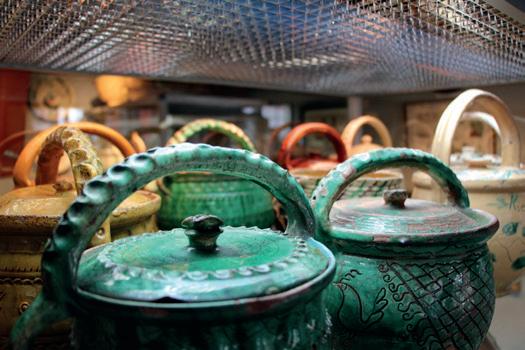
prehistory to the Middle Ages, and the Von Oberberg House, a beautifully restored Renaissance building offering insights into the lives of the town’s wealthy merchants and craftsmen.
Beautiful greenery and family attractions
Beyond its historical sights, Haderslev offers tranquil natural escapes. Damparken, a green oasis in the town centre, is perfect for strolls around the lake, and visitors can enjoy traditional yet elegant Danish dishes at Restaurant Damende, beautifully set by the end of the lake. The park also presents an evocative memorial for the 57 victims of a tragic steamboat accident in 1959.
For hikers and cyclists, trails extend from the town into the surrounding countryside, including routes that connect to the historic Hærvejen (Ox Road) through Southern Jutland. In the green landscape surrounding Haderslev, visitors will also find Gram Slot, an impressive castle popular with travellers of all ages. Today, it operates as an organic farm and cultural
venue hosting concerts and exhibitions, while its restaurant serves seasonal produce from the estate itself.
Other nearby experiences include fossil hunting at Gram Lergrav, where families can dig for million-year-old shark teeth, or a visit to Årø, a charming island with a vineyard and traditional inns. “Gram Lergrav is great for families because children love the thrill of digging for fossils –and the best part is, they get to keep what they find and take a little piece of history home with them,” says Rønne.
Indeed, whether you come to trace royal footsteps, admire centuries-old pottery, or simply enjoy the serenity of South Jutland’s landscapes, Haderslev offers a journey into Danish history unlike any other town, making it worth more than just a short stop on the way to the West Coast.
www.historiehaderslev.dk
Facebook: Historie Haderslev
Instagram: @historiehaderslev

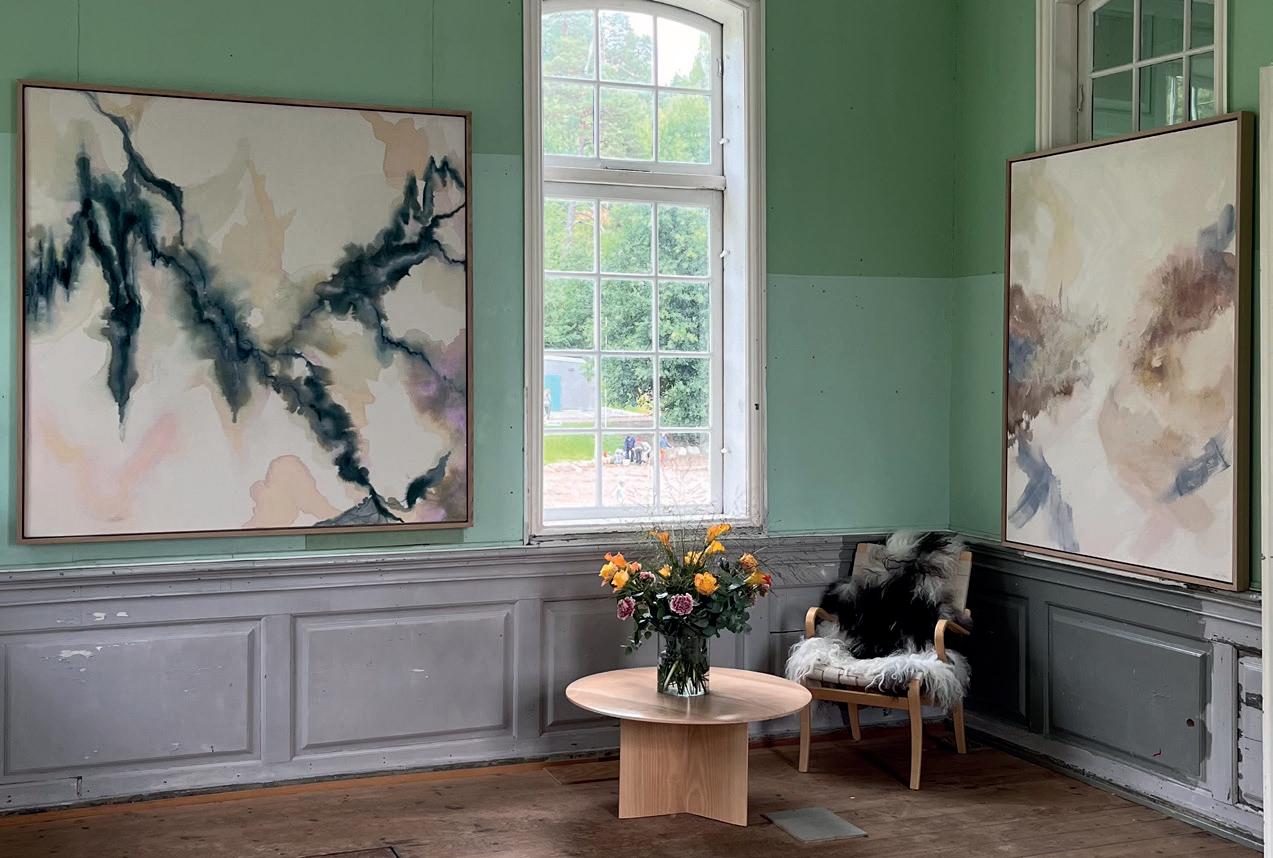
Artist of the Month, Norway
Artist and interior designer
Ingvild Holtan – exploring canvas,
space and inner landscapes
For artist and interior designer Ingvild Holtan, creative expression flows seamlessly between canvas and space. Exploring form, colour, human emotions and our varied inner landscapes, she is currently preparing for a solo exhibition at Gamle Munch in Oslo.
By Maria Sødal Vole | Photos: Ingvild Holtan
After getting certified as an interior designer and completing a Master of Arts, Holtan began working as an art and interior consultant. After 14 years in the industry in Oslo and working at international art fairs in New York, Miami and Basel, she ventured out on her own, dividing her time between her practice as an artist and her interior design business, Nuance Design.
Describing herself as an aesthete in relation to her artistic expression and approach to interior design, Holtan has a profound appreciation for art, beauty, form and visual meaning. “I set high standards for myself when it comes to interiors. When I’m working with a cli-
ent, their needs and personality form the foundation of every choice I make, and my design solutions are carefully tailored to reflect the individual client,” she says. “I value personality – a home should feel safe and meaningful, and it should be clear who lives there. I believe we feel our best in spaces filled
Ingvild Holtan.
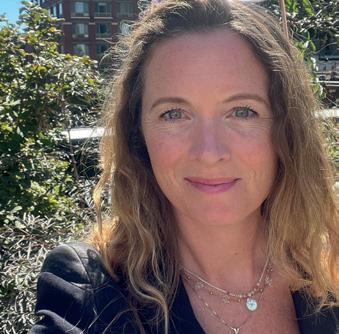
with things that matter to us – natural materials and objects that have a story behind them."
Creating bespoke solutions for those living or spending time in the environment is important to Holtan. She works closely with her husband, interior carpenter Sean Cestone, and the two value thinking outside the box and offering creative solutions, especially when working with limited space. “We’ve experienced time and time again how integral smart solutions are in smaller spaces. Even small adjustments can have a significant impact,” she says.
At the intersection of art and interior design
In her interior design practice, Holtan makes site visits to clients’ homes both physically and digitally to assess the spaces, and she can digitally mount artwork to give customers an idea of what it
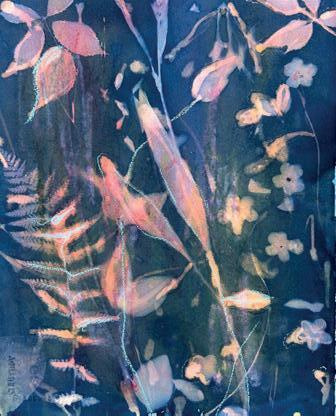
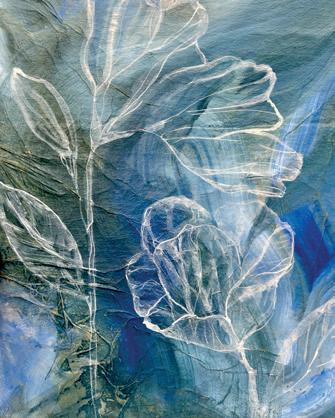

will look like in a given space. Experiencing an environment allows her to understand the layout and structural design of a space and offer clients practical, individually tailored guidance.
Clients appreciate her focus on personal expression and the way she goes above and beyond to source unique, high-quality pieces that add something extra to a space. Her multidisciplinary background gives her a fantastic starting point for recommending art pieces that work well within a space. “I feel that a home needs art just as much as art needs a home,” Holtan says. “Art plays an important role in creating the mood and atmosphere in any given space – a single artwork can completely transform a room.”
As an artist, Holtan draws inspiration from her surroundings, nature, experiences and human relations, as well as both emotional and physical movements. Her studio is a place of refuge where her creative energy can flow freely. Working intuitively with thin layers of paint on unprimed cotton canvas in large formats, Holtan allows each painting to take shape organically. She paints by instinct rather than planning in advance, and each piece is created in the moment.
“I’ve been working with abstract landscape forms over a long period of time. I refer to these as ‘inner landscapes’, and I believe our inner and outer worlds are closely connected,” she says. Lately, Holtan has started incorporating simple figurative shapes into this visual language – an expression that, to her, con-

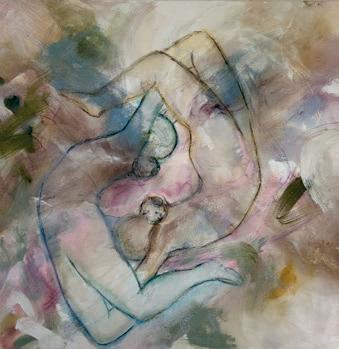
veys a quiet dialogue between people. “Challenging myself in my artistic process is exciting to me. Sometimes, I can get stuck and it’s rewarding when I finally manage to break the pattern and witness a new expression emerge – this is how my art continues to evolve.”
An
impending exhibition
The artist is currently working towards a solo exhibition at Gamle Munch, the former Munch Museum building in the charming neighbourhood of Tøyen in Oslo. The historic building now functions as a multi-purpose cultural hub, hosting exhibitions, performances, workshops and community events.
Holtan’s solo exhibition will be running in December 2025. Visitors will be able to experience her paintings as well as a project focused on sculptural paintings – an interesting concept that reimagines overworked paintings in a new form of expression. “Since I tend to work with
thin layers, I sometimes find that a painting will become too full or overworked,” she explains. “By recycling these pieces into sculptural paintings through folding and reconfiguration, they become something new: an interesting borderland between painting and sculpture.”
Holtan’s artwork can be purchased directly from her as well as at several galleries in Norway. She offers both original paintings and prints, with shipping available worldwide. Holtan also accepts works to order in both small and large formats and occasionally allows visitors to come by her studio in Oslo privately, with the chance to see her art in person and hear about her artistic process. She is available for contact through her website or on social media –follow her to stay up to date with her work.
www.nuancedesign.no
Instagram: @ingvildholtan_art | @nuancedesign_oslo
Facebook: Ingvild Holtan Art
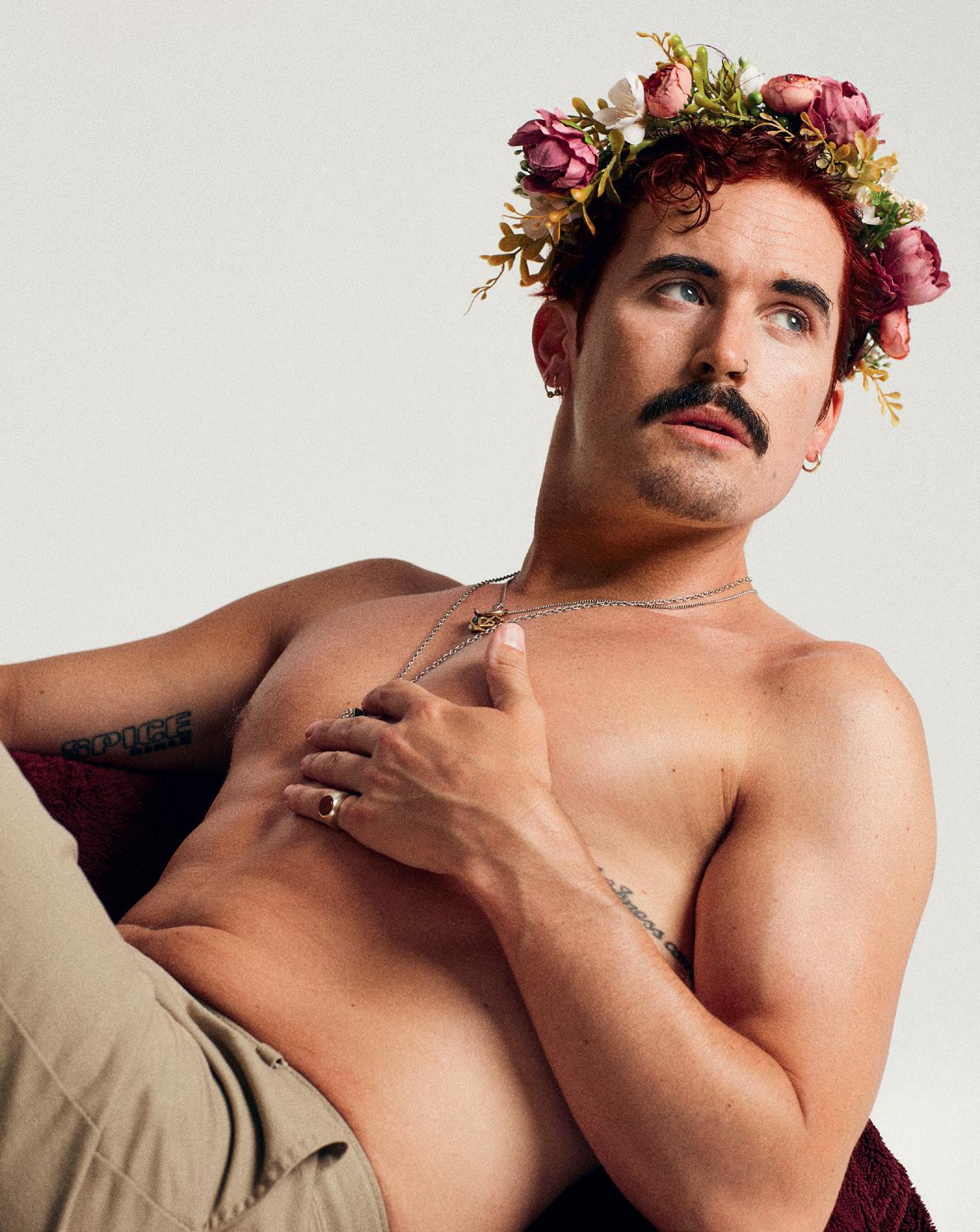
Red cabin fever
He is the British popstar who was so inspired by his first Midsommar trip, he took the creative decision to build a whole album around the experience. Now, as he prepares to kick off the Cabin Fever tour with his first headline shows in Scandinavia this August, Tom Aspaul speaks to Scan Magazine.
By Karl Batterbee | Photos: Kasia Clark
An album inspired by Midsommar but not a single track about little frogs or sleeping bears? It is true! He has written for Kylie Minogue, worked with MNEK and helped pen one of the biggest dance tunes of last year (Indestructible by Andy C & Becky Hill), but when the time came for British artist Tom Aspaul to take some rest after touring his second album, little did he suspect how fervently the Swedish summer backdrop would put his creative juices to work.
There was something in the air that night, the stars were bright…
“It was never my intention to base a whole album off the experience. But it became pretty overwhelming, and so much happened, that it just made sense in the end,” the singer begins. The idyllic Stockholm archipelago has long served as the inspiration behind some top-tier pop. Many of ABBA’s biggest hits, such as Dancing Queen and Fernando, were composed in a cottage owned by Björn and Agnetha on the island of Viggso. And that knowledge probably will not have escaped Tom, who is a major ABBA fan. “Me and my friend Matthew, we love ABBA, we love Sweden and we love travelling together. Ever since ABBA released their final album, Voyage, we thought; wouldn’t it be amazing to go and listen to that album where ABBA had their studio?”
“I went there to be inspired,” Tom continues. “But I don’t think I realised how that experience would become so fruitful; something that informed the aesthetics, the visuals, the places I go to on tour, the music videos. It really did become a whole thing. And I love concepts. If we’re going to go for a concept, we’re gonna go full steam ahead.”
Life is easy, gin martini, on a boat lounging
One short-lived experience went on to shape an entire song. On That Girl, Tom manages to turn a 30-minute encounter from afar into an astute character study, penning a whole backstory for his new muse. If you have attended any Midsommar party, however, you will have seen ‘that girl’, too. Tom sets the scene for us: “It was Midsommar. Saturday. Everyone
was around their families. We were in this Airbnb that was surrounded by other houses, but they were all far apart, so you couldn’t really see anyone’s face. This boat pulled into a bit of water that all of the islands surround. And I don’t know why they did it; I guess so people could watch them, because everyone could see that boat. It was playing the loudest, most obnoxious music. Everyone was really hot, super tanned. And yeah, she was blonde, holding a cocktail… Like, who makes a cocktail on a boat?! It’s beer or wine. You could just tell all the guys on there were basically obsessed.”
All it took was for Tom’s friend to marvel at how she was living her best life, and he
had the idea for the song; rooted in celebration for the girl, but with a little bit of lament for what they never got to experience in their own youth. “They stayed there for half an hour. Once they’d gone, it left such an impression on both of us. We were talking about what it was like when we were younger. About how different it was and about how lovely it would be to have that level of confidence at such a young age. And to know who you are. It was great to see. We love women owning it, basically.”
‘Swede Nothings’
Tom’s enthusiasm for female empowerment is evident elsewhere on the album; a song called 70s Angels. On it,
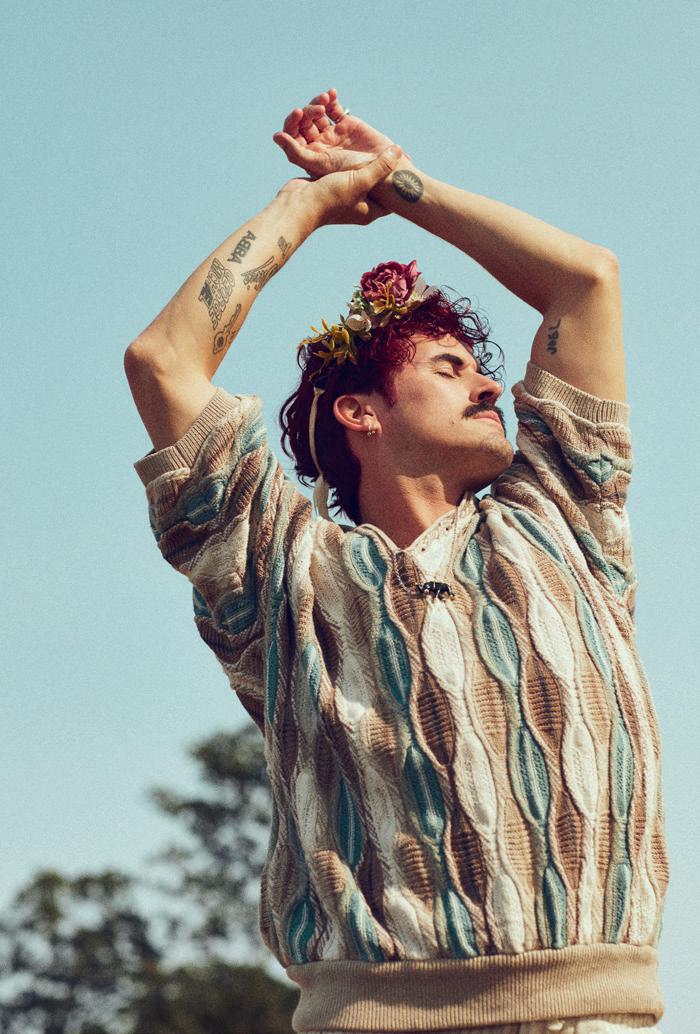
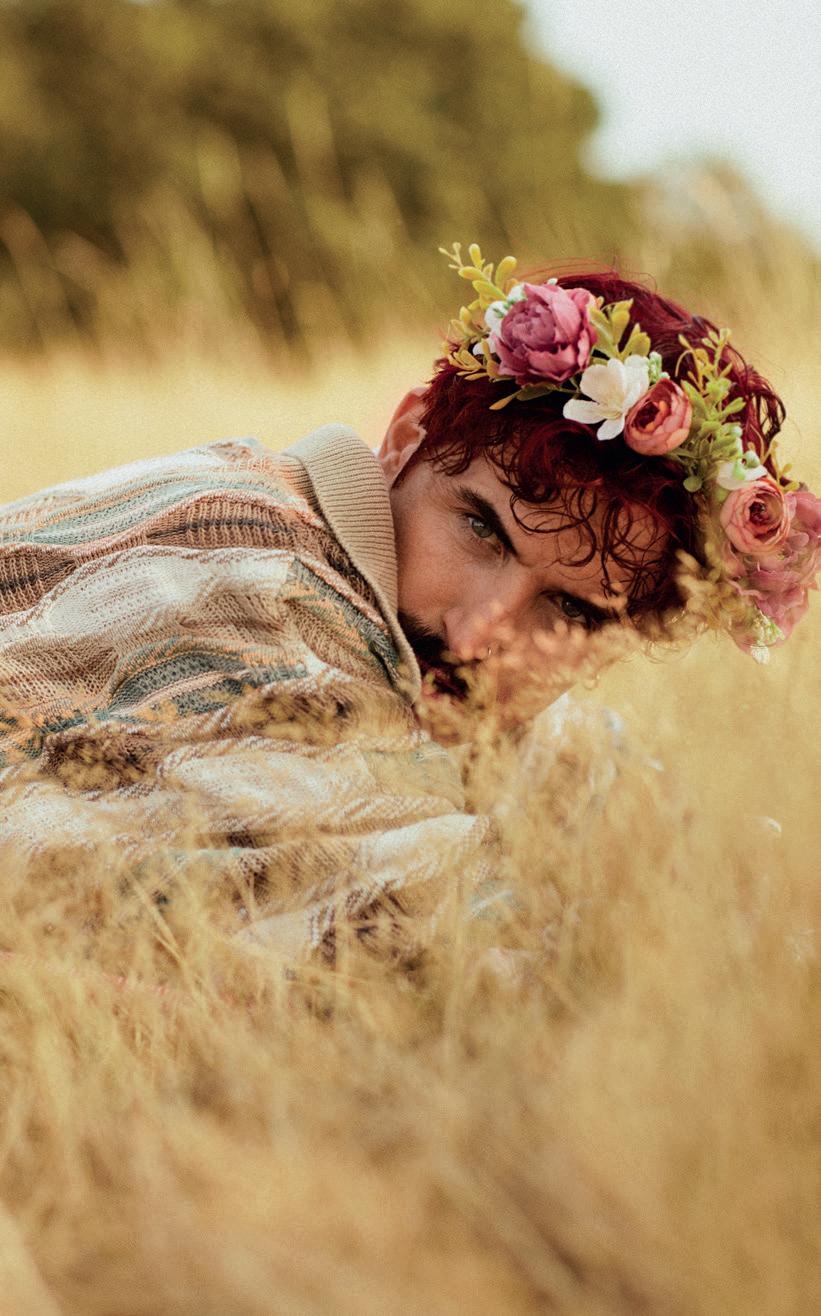
he lists the singers from that decade (Stevie Nicks, Barbra Streisand, Lynsey De Paul, Carole King, it goes on) who soundtracked his Midsommar trip, via his Spotify playlist titled… 70s Angels! But which Swedish singers would make
the cut on a ‘Sverige’-themed playlist of his? “I actually have a Swedish version of that playlist, called Swede Nothings! I love The Cardigans. I had a really big resurgent phase with them at the start of this year, so I’ve got back in touch with
their first album First Band On The Moon, which I really love. I do love Ace of Base, too. Especially Life Is A Flower, that’s one of my favourites. Agnes is amazing. Tove Lo, her Blue Lips album. I’m a big fan of Robyn, too. I think that’s a cliché for a gay man who’s nearly 40, but I do love Robyn. I actually really love her early Max Martin stuff; Show Me Love, Do You Know What It Takes, that kind of stuff.”
Tom’s Robyn declaration may well be a cliché, but it comes with something most other gay men who are nearly 40 don’t bring to the discussion… An accompanying anecdote! “I went to see her actually, in Stockholm, on the last show of her tour. It was insane. I met her grandmother, she was fab. They had an after party for the family and it was really genteel. There was loads of fish and sandwiches and people drinking tea! It was lovely,” he recalls.
The Cabin Fever album was released in May, but Tom’s newfound love affair with the Scandinavian summer hasn’t come to a halt just yet. The Cabin Fever tour starts in August and where better to kick it off than with two dates in the Nordics? “It was a conscious decision, 100 per cent,” Tom explains, and he will play Reykjavik on 23 August and Stockholm the following week on 29 August; his first headline shows in the Nordics. “I’m so excited. I love Iceland and haven’t been for a very long time. And I have such a real connection to Sweden. I’ve always come to do writing camps in Sweden, for 10 or 15 years since I’ve been a musician. So I’ve built up a really nice group of friends and connections there. And every time I go, I come back and think: I love it!”
You can also catch Tom when the Cabin Fever tour comes to Toronto, Dublin, Utrecht, Berlin, London, Manchester and Mexico City, throughout the rest of the year. And we will likely be hearing more Midsommar-inspired music soon, according to the singer. “I definitely want to continue with Cabin Fever for at least another year; do a remix EP, a deluxe edition. There are plenty more songs about the trip to come!”

All hits, no misses
– the freshest finds for your Scandipop bop playlist
One of Norway’s uppermost top-tier talents is back with her first new music in almost two years. For Jellyfish, Sigrid pairs her penchant for a bright and breezy pop melody with a retro-hued indie production. Almost two years is practically a lifetime in pop terms, so it’s both remarkable and a huge relief that during her time away from releasing new music she’s lost none of her essence, her trademark style or her plentiful charm.
MILK is the punked-up new single from Swedish pop icon Agnes. And if her most recent album Magic Still Exists was the sound of a spiritual awakening, MILK is the sound of the excessive debauchery that led up to it!
When it comes to dishing out a dose of the feel-goods, few give as gener-
Monthly Illustration
ously as the Jubël chaps do. The latest tune from the Swedish duo is Walkman; a summer anthem that’s all about enjoying the sounds coming out of your – you guess it – walkman. A touching sentiment, but we’ll transfer this particular sound to our best speakers – to give this song the blasting it deserves.
The pairing of two of Denmark’s biggest names in music, Maximillian and Medina, has resulted in Lifetimes Away; one of those ballads that sounds so timelessly gorgeous that for a second you assume it must already be a classic. But nope, future classic right here.
Moyka is out with 24/7 ; the kind of Norwegian electropop that brings to mind the best in the genre – Röyksopp! It’s intrinsically dark, but emanating a brilliant shine that pulls you in and
When things close down
When you’re a kid, summer seems like an endless expanse of time. It’s a sea of time, open and vast. Sometimes a little overwhelming, but also amazing. A whole summer to lounge about with your pals, swim and enjoy the sunshine. I still think that way, even though I work and don't ever really stop. Summer is a time when things close down and you’re allowed to do very little for a long time. A time to recharge.
When I was a kid, the world did literally stop. All of Sweden's industry closes its doors and nobody works for about five weeks. You take the whole summer off. It’s carved into our communal psyche that nothing happens in summer and that there are no services available.
It’s not the same in the UK. People take a week here or there for a holiday, but it’s more restrained. I have always

thought that Swedes love summer because it feels like a reward, for surviving the long, dark winter. This is why Swedes shed their clothes and worship the light when it arrives. No job is more important than enjoying summer.
By Karl Batterbee
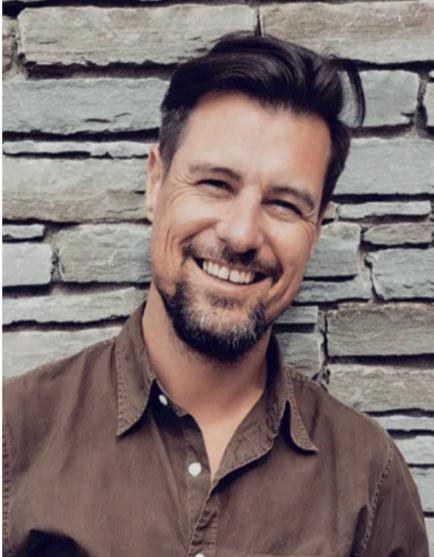
won’t let go. You’ll want to have this one on 24/7.
www.scandipop.co.uk
By Gabi Froden
Having lived in Glasgow for a good few years now, I firmly believe that this mindset should be applied here too. The Scottish winters are awful: dark, rainy, cold, damp and without the fun of snow. So, I would encourage anyone living in the UK to start embracing the Scandi summer vibe. This means cancel meetings, leave work and don't go back for a full month. It’s the only way to live. Unless you sell ice cream.
Gabi Froden is a Swedish illustrator and writer, living in Glasgow with her husband and two children. Her children’s and YA books are published in Sweden by Bonnier Carlsen and Natur&Kultur. www.gabifroden.com

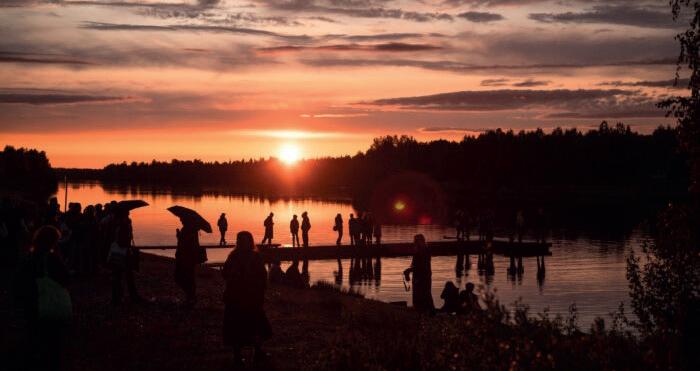
Scandinavian Film & TV column
When talking about the Nordic midnight sun, the first thing that comes to mind is unlikely to be a film festival.
The Midnight Sun Film Festival, which takes place in Finnish Lapland, celebrated its 40th edition in the middle of June; held at this time to coincide as much as possible with the summer solstice. It sets itself apart from other festivals by showing films without a break, while the sun shines around the clock.
The films this year represented a mixture of showcasing Nordic independent cinema and world cinema. It was a blend of new releases and re-screenings of previously released films, including older classics, feature length as well as shorts.
Nordic highlights at the festival
Some of the highlights included the experimental and artistic Finnish film Kronos Kairos, which premiered at the festival. The film, shot in black and white, is timeless and stark. It is directed by the Finnish multi-artist Herra Ylppö and is a modern story inspired by the character Dulcinea from the novel Don Quixote.
Rörelser (Raptures) is a Finnish/Swedish co-production set in the 1930s in the far north of Sweden, by Swedish director Jon Blåhed. It tells the story of a strict Christian believer who feels that she has no choice but to join when her husband forms a sectarian movement with directions straight from God.
The Finnish/Swedish/Estonian co-production Orenda tells the destinies of two women who intertwine on a remote island through guilt and grace. One is a recently widowed singer who arrives on the island, and the other is a local priest. It is directed by Finnish director Pirjo Honkasalo.
100 litraa sahtia (100 Litres of Gold) is an Italian/Finnish co-production by the Finnish director Teemu Nikki. In the comedy, two middle-aged sisters in a Finnish village promise to brew beer for a wedding but drink the entire batch.
In Perhoset (Butterflies), a 29-year-old woman and her optimistic father embark
By Anders Lorenzen
on a journey of self-discovery, confronting their truths amidst the chaos, as they navigate the complexities of their relationship and find their paths in life.
For the full programme that attendees got to enjoy, see www.msfilmfestival.fi/ en/movies
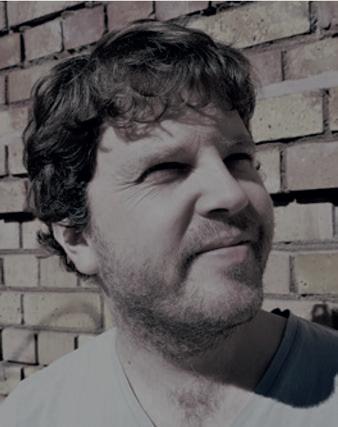

Scandinavian Culture Calendar
From alternative rock to British pop, and from a celebration of poetry to a deep dive into book illustrations… And that’s before we get to the wave of festivals hitting one of the Nordic capitals this month. All you need to know about where to go and what to see is right here!
By Karl Batterbee

Poetry Moon (14 - 24 August)
Poetry Moon (Runokuu in Finnish) is a multidisciplinary and international literature festival that is all set to delight poetry lovers in the Finnish capital this August. Performers and audiences are invited to follow one another through and beyond the boundaries of art and culture. Poetry Moon aims to bring fans and creators of both traditional and experimental literature together, in a melting pot of captivating words.
Nuoren Voiman Liitto, Helsinki www.runokuu.fi
The
Smashing Pumpkins (16 - 26 August)
The Smashing Pumpkins, one of the most iconic alternative rock bands of all time, are bringing their latest tour to five countries and six cities across the Nordics. Known for their powerful live performances, the band has shaped the genre’s sound and image for over three decades. Founded in Chicago in 1988, The Smashing Pumpkins have sold over 30 million albums and received numerous prizes, including two Grammy Awards and seven MTV Video Music Awards.
Oslo (16 August), Copenhagen (18), Stockholm (20), Gothenburg (22), Helsinki (24), Reykjavík (26) www.smashingpumpkins.com
Kollektivet – Picture Book Illustration from Finland (15 August - 14 September)
The Finns have been responsible for some very well known children’s book characters down through the decades, but there are many more that you may not have laid eyes on just yet. Now, Kunsthalle Helsin-

ki invites you to step into the playful and thought-provoking world of picture book illustrations in a vibrant and immersive exhibition celebrating leading Finnish illustrators. The exhibition wants visitors of all ages to view the world through a child’s eyes and experience the magic of visual storytelling. Finnish classics will serve as a springboard for reflection and conversation, and everyone’s invited to come and have their say. Kunsthalle, Helsinki www.taidehalli.fi
Tom Aspaul (23 - 29 August)
His latest album Cabin Fever was inspired by a Midsommar spent in the Stockholm Archipelago, and now Tom Aspaul is heading out on the Cabin Fever tour. The British artist’s new-found love for the Nordics is evidenced further by him kick-starting the tour in Iceland and Sweden; the star’s first headline shows in both countries. Kiki in Reykjavík and Lykke in Stockholm will play host to Tom at the end of the month.
Reykjavík (23 August), Stockholm (29) www.tomaspaul.co.uk

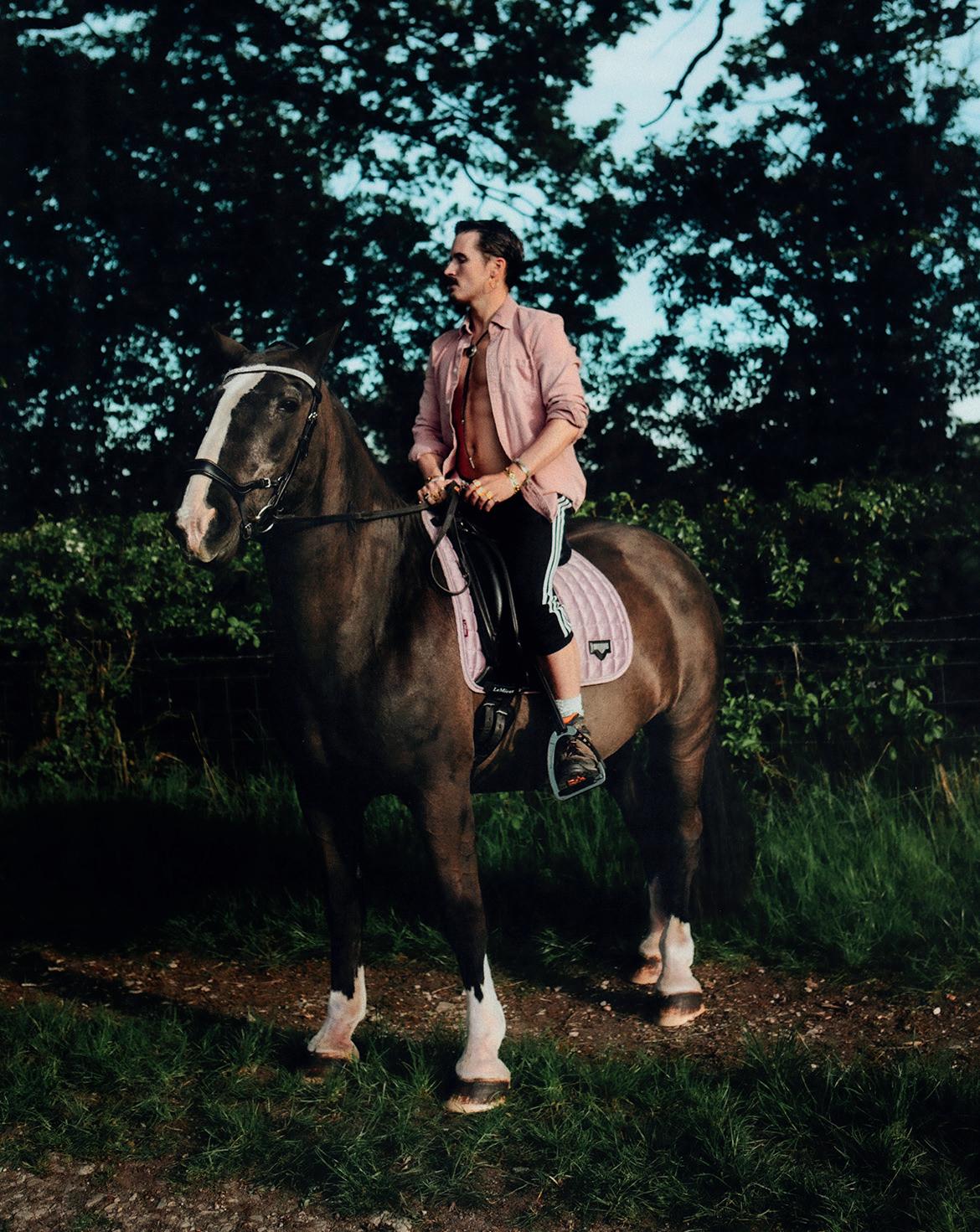

Festival season hits Stockholm in style
No matter what cultural strand floats your boat best, there’s a chance you’ll find a day or two devoted to it in Stockholm throughout August. Here, we’ve curated and compiled a selection of the Swedish capital’s best festival offerings.

Kulturfestivalen (13 - 17 August)
Stockholm's Culture Festival offers a packed programme of activities and entertainment, attracting over one million visitors each year. Over five days, the city’s streets come alive with an explosion of culture from around the world, with Stockholm transforming into a vibrant stage where art, music, dance and much more are put into focus. Entry is free for all!
www.kulturfestivalen.stockholm.se
Stockholm Roots Festival (22 - 24 August)
After last year’s magical summer weekend with Stockholm Roots, it’s clear – the love for country, Americana, folk and bluegrass is stronger in Sweden than ever. Three days filled with music, dance and togetherness transformed Debaser into a vibrant gathering place, and this summer it's happening again. www.debaser.se
Stockholm Fringe Festival (27 - 30 August)
Stockholm Fringe Festival (STOFF) is a five-day arts festival, acting as a stage

for local and international artists to present their innovative work; ranging from performance to installation art and anything in between. The 16th edition of STOFF promises over 200 events, from burlesque city walks to raw stand-up and political theatre!
www.stockholmfringe.com
Baltic Sea Festival (28 Aug - 7 Sep)
This year's edition of the Baltic Sea Festival is based on the theme ‘waves’ – a symbol for everything from sound and light to the movements of history and emotions. In line with the theme, the festival is inviting you to some truly magnificent concerts and exciting conversations; all with a focus on nature, creativi-
ty, collaboration and music. www.berwaldhallen.se
The Gamla Filmstaden Festival (31 August)
Filmstaden in Råsunda, just outside Stockholm, was Sweden’s Hollywood from 1920 to the beginning of the 1970s. For more than half a century, this was the place where over 400 films were made – many of them today belonging to Sweden’s international film heritage. At the end of August, Filmstaden invites you to a fun-filled day celebrating cinema, with activities for all ages. Guided tours, film screenings, film talks, an animation workshop, a quiz, and much more is on offer for guests. www.filmstadenskultur.se

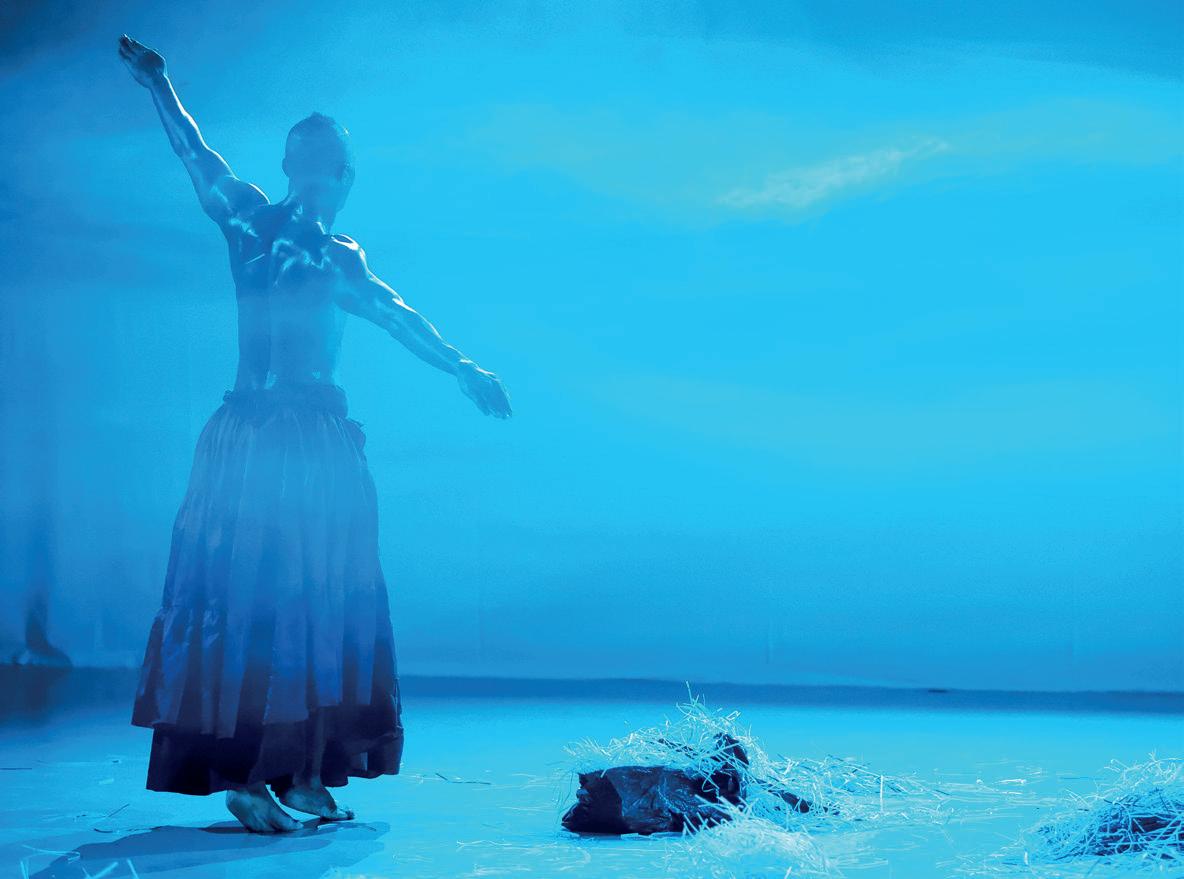
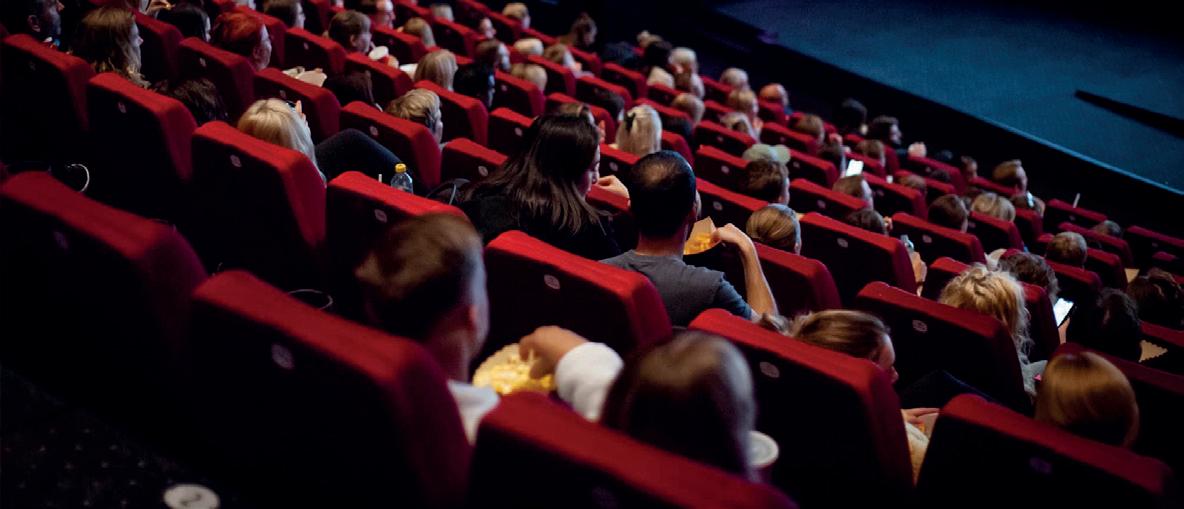

Scan Magazine Issue 181 August 2025
Published 08.2025 ISSN 1757-9589
Published by Scan Client Publishing
Stibo Complete
Executive Editor
Thomas Winther
Creative Director
Mads E. Petersen
Editor
Malin Norman
Copy-editor
Karl Batterbee
Graphic Designers
Mercedes Moulia
Mauro Salerno
Cover Photo
Anna-Lena Ahlström
Contributors
Anders Lorenzen
Celina Tran
Eva-Kristin Urestad Pedersen
Gabi Froden
Heidi Kokborg
John Weston
Karl Batterbee
Malin Norman
Maria Sødal Vole
Signe Hansen
Sofia Nordgren
Xander Brett
Sales & Key Account Managers
Emma Fabritius Nørregaard
Mette Tonnessen
Advertising marketing@scanmagazine.co.uk
To Subscribe scanmagazine.co.uk/subscribe
Scan Magazine Ltd
3rd floor, News Building, 3 London Bridge Street, London SE1 9SG, United Kingdom www.scanclientpublishing.com info@scanmagazine.co.uk www.scanmagazine.co.uk
© All rights reserved. Material contained in this publication may not be reproduced, in whole or in part, without prior permission of Scan Magazine Ltd.
Scan Magazine® is a registered trademark of Scan Magazine Ltd.
This magazine contains advertorials/promotional articles
